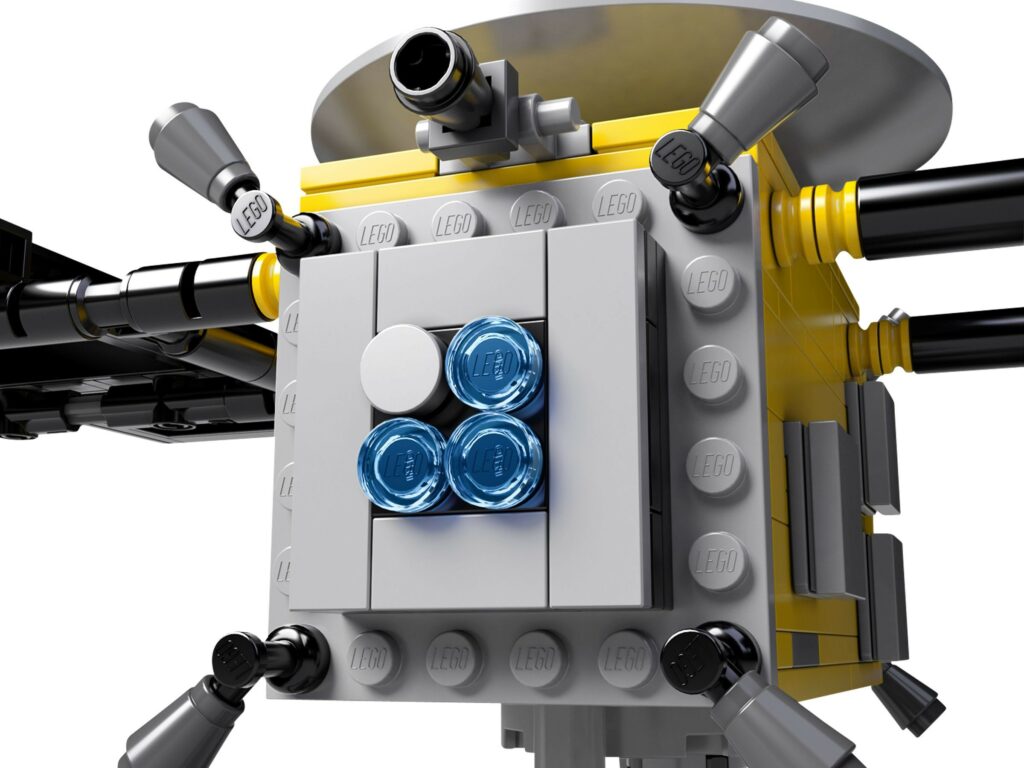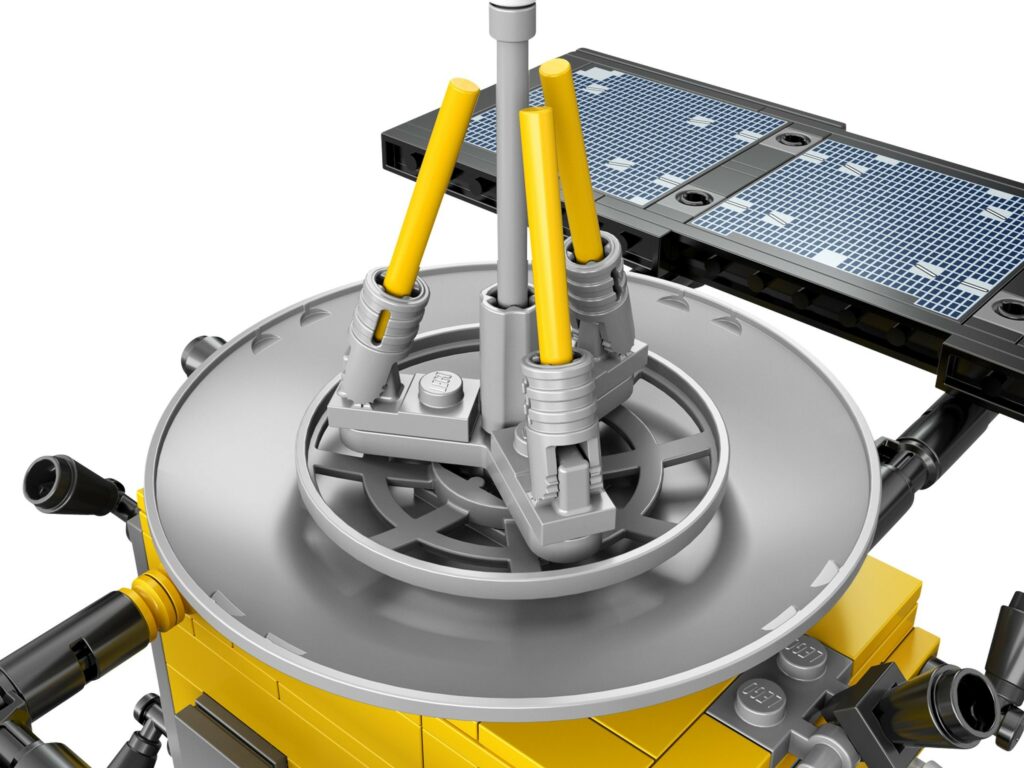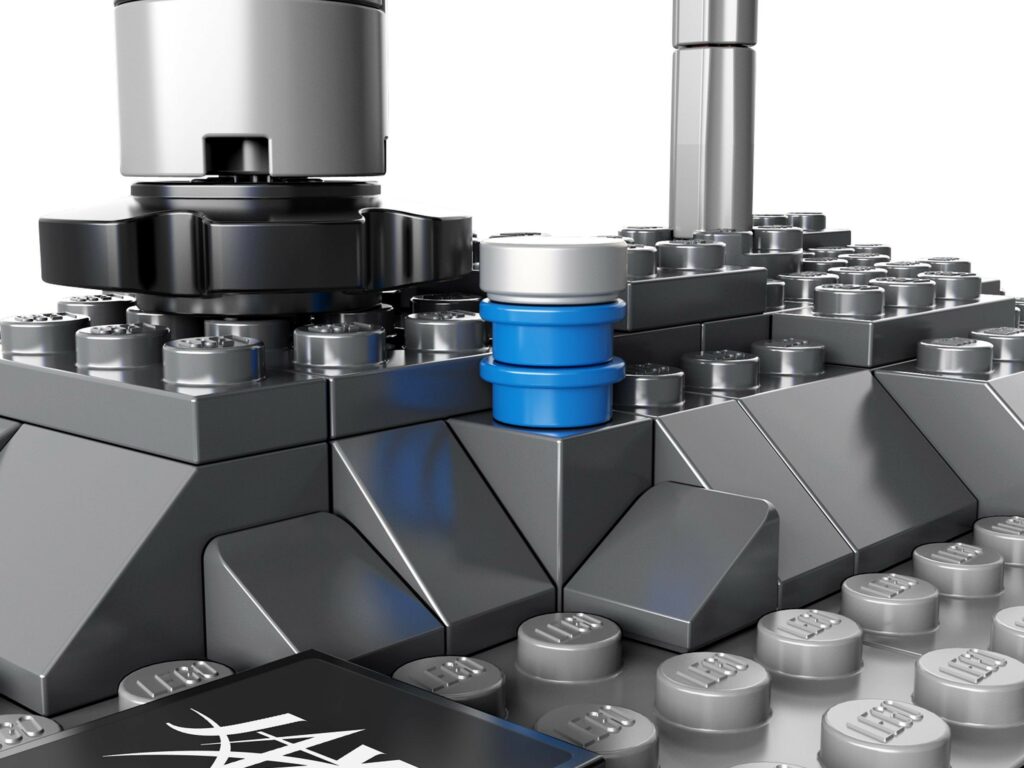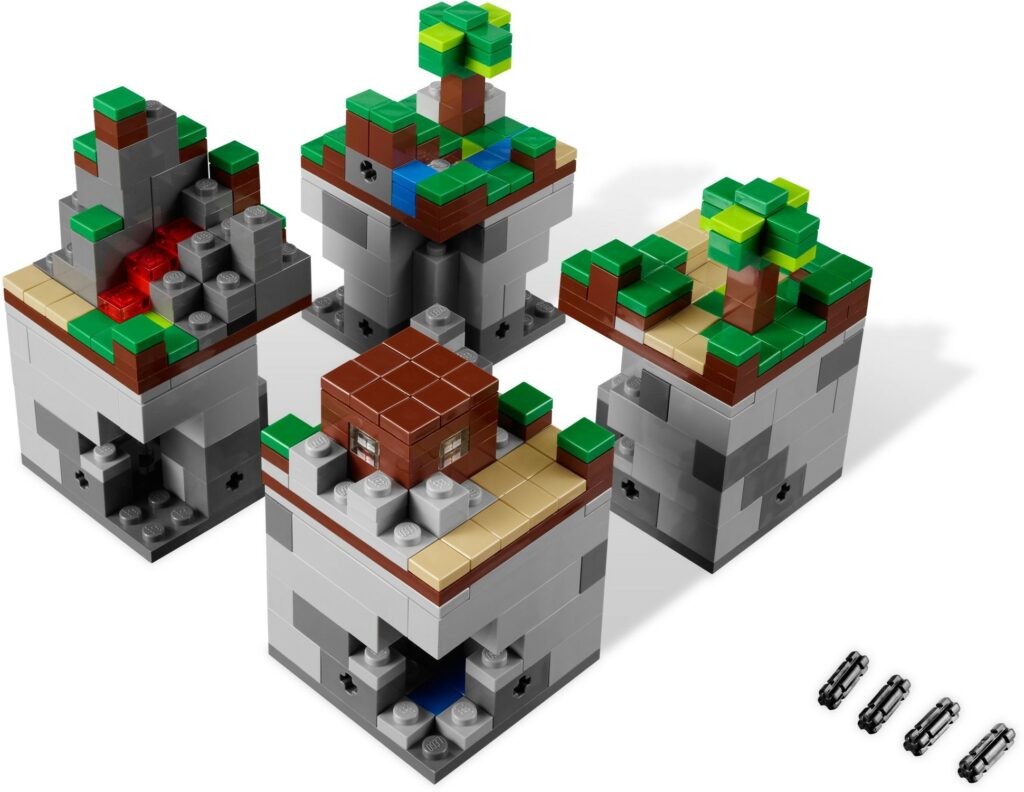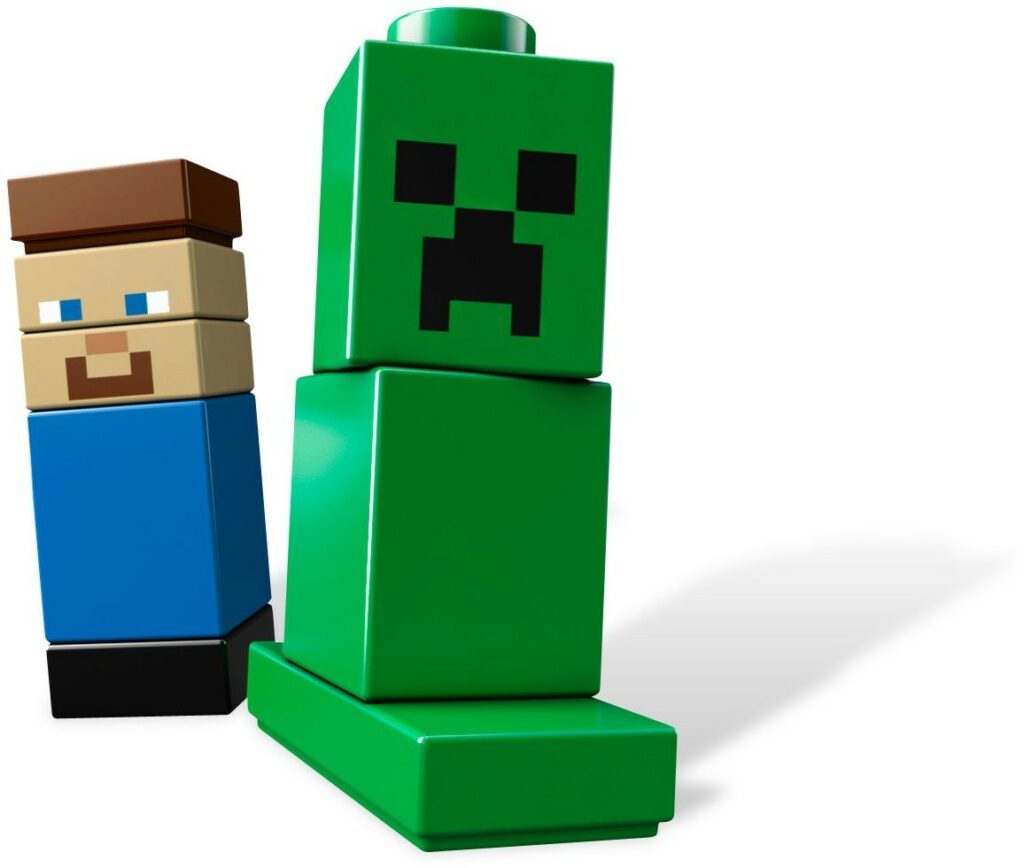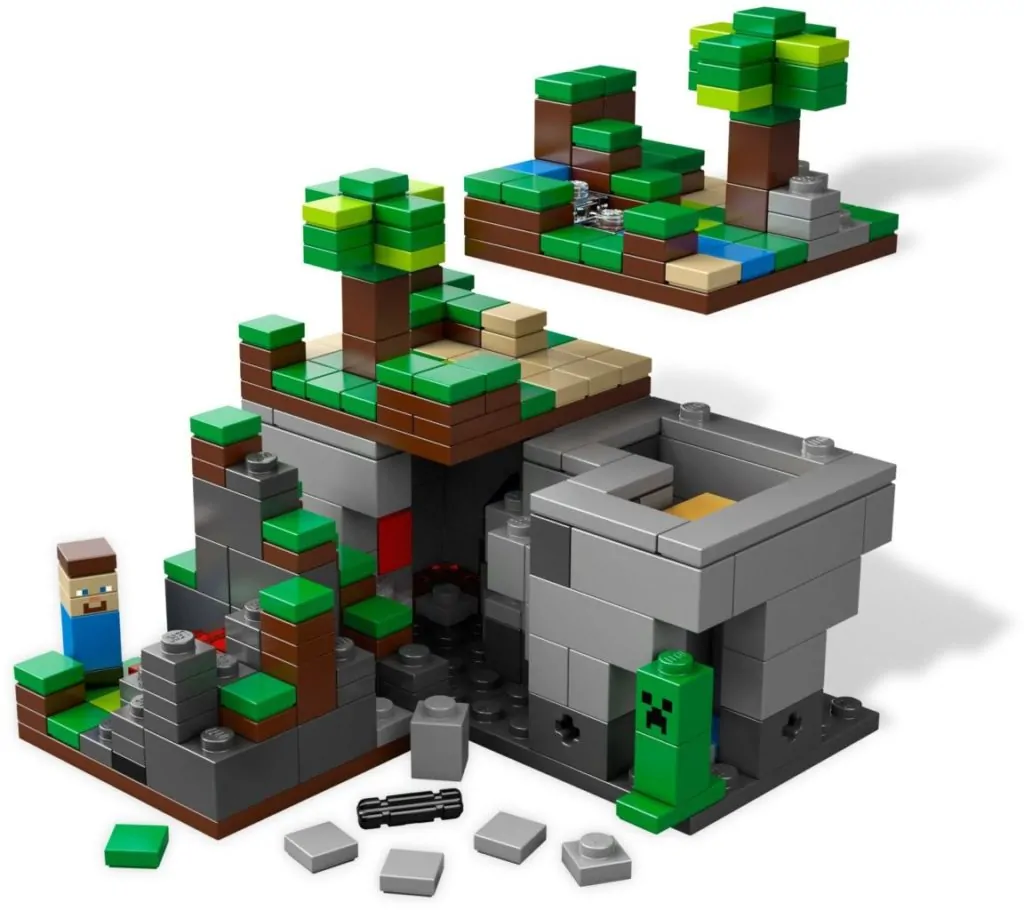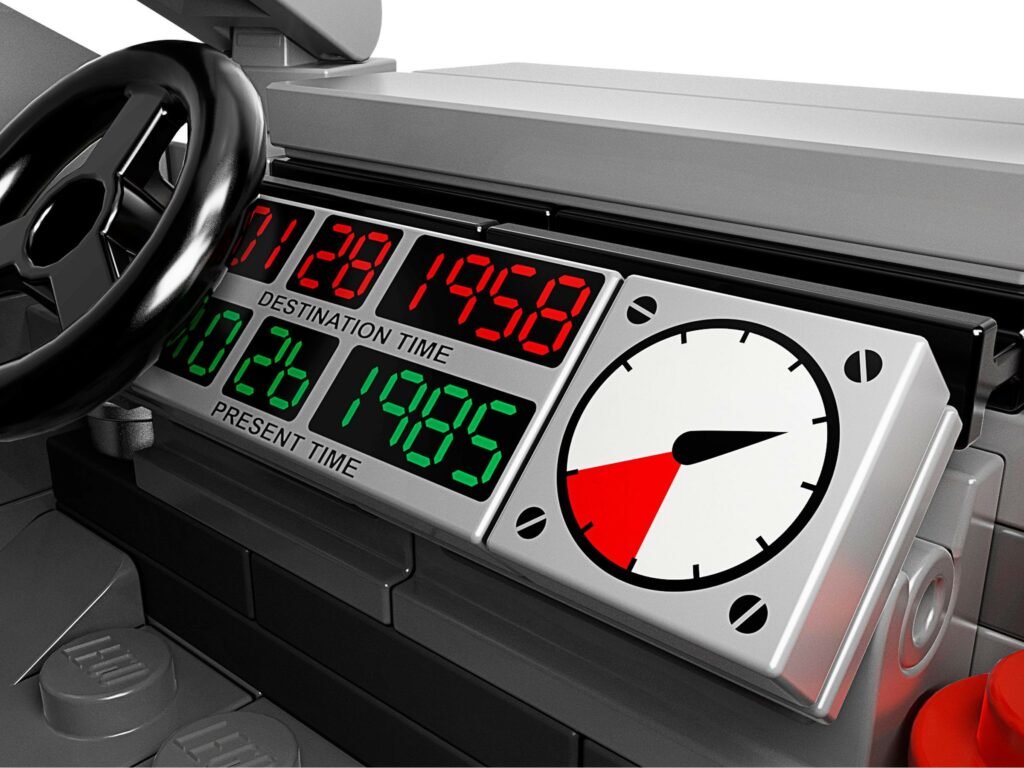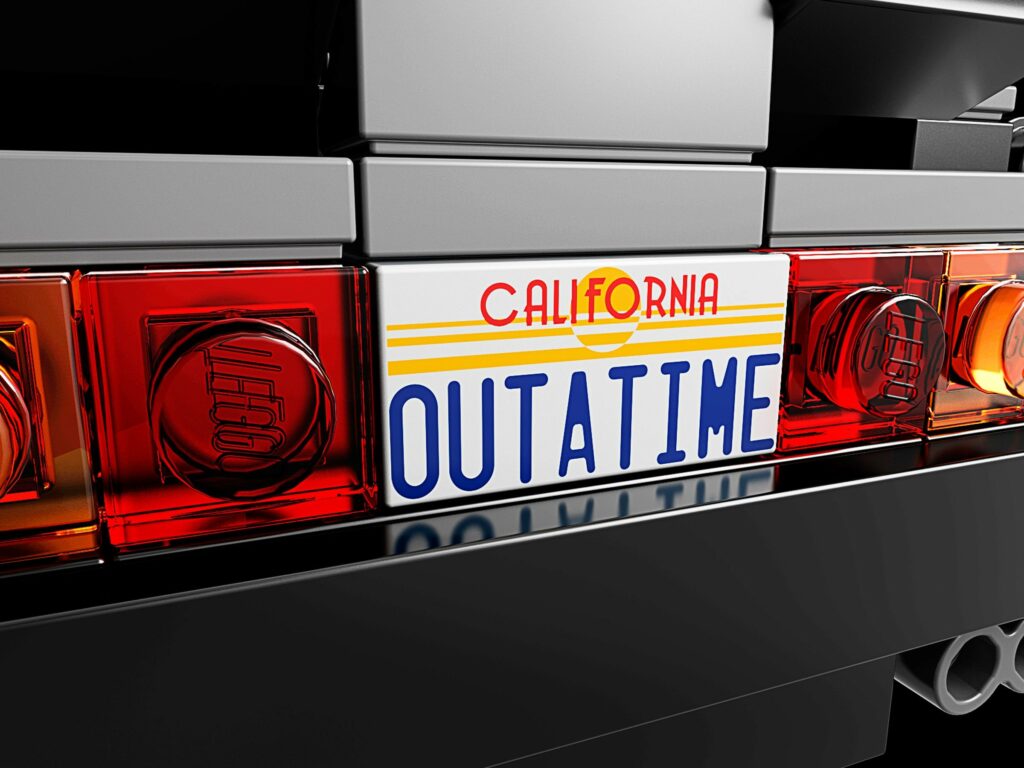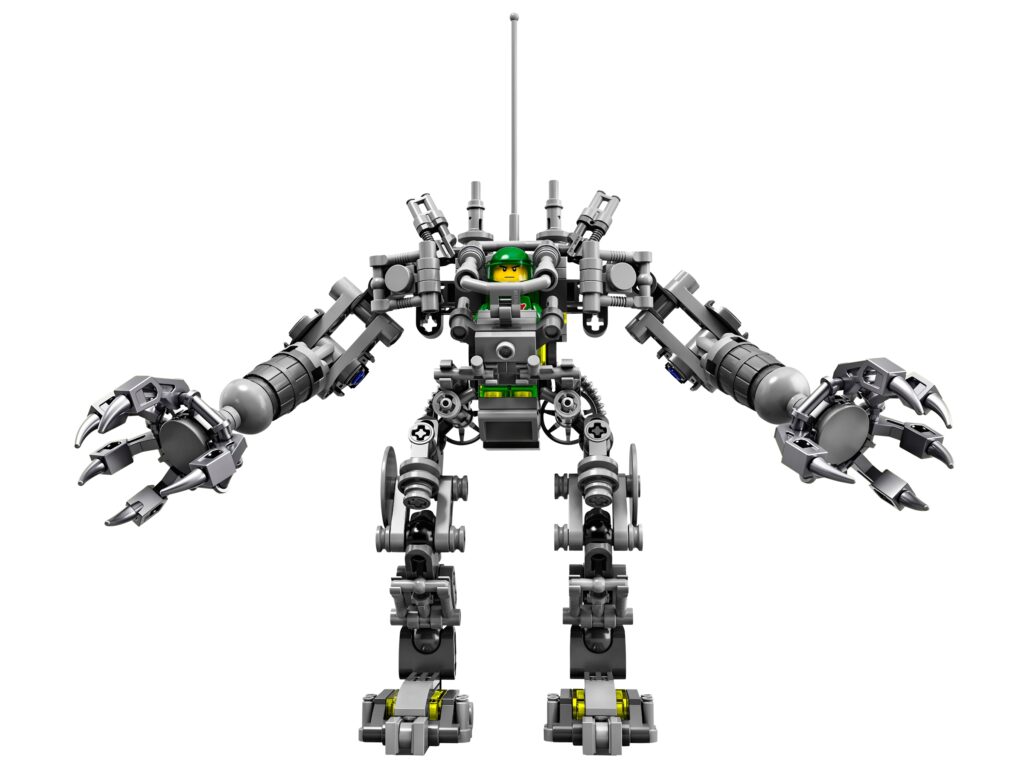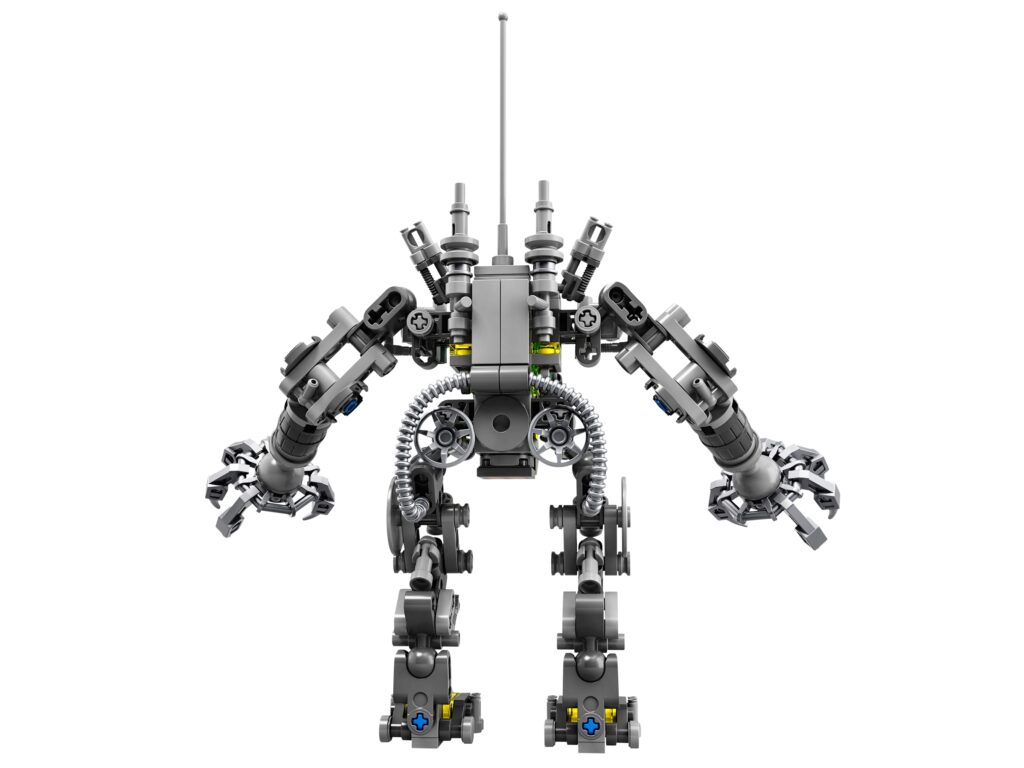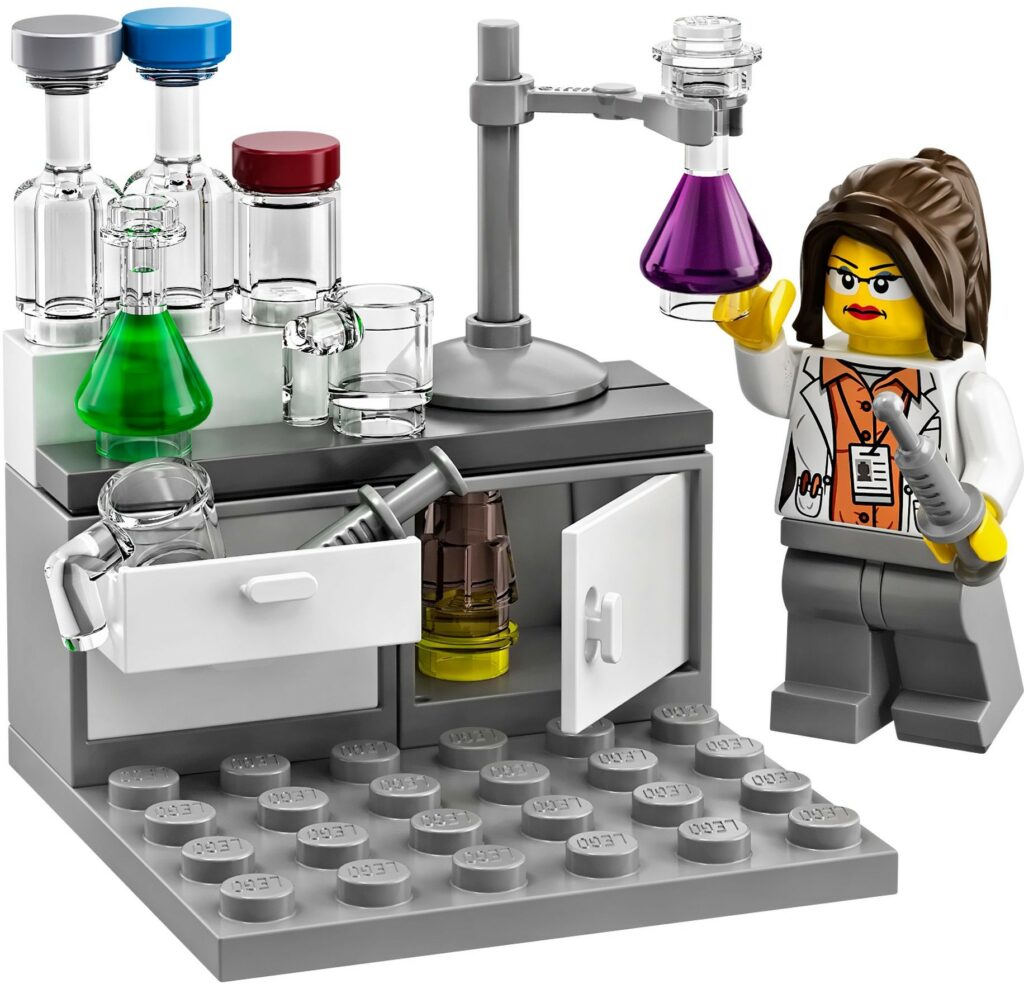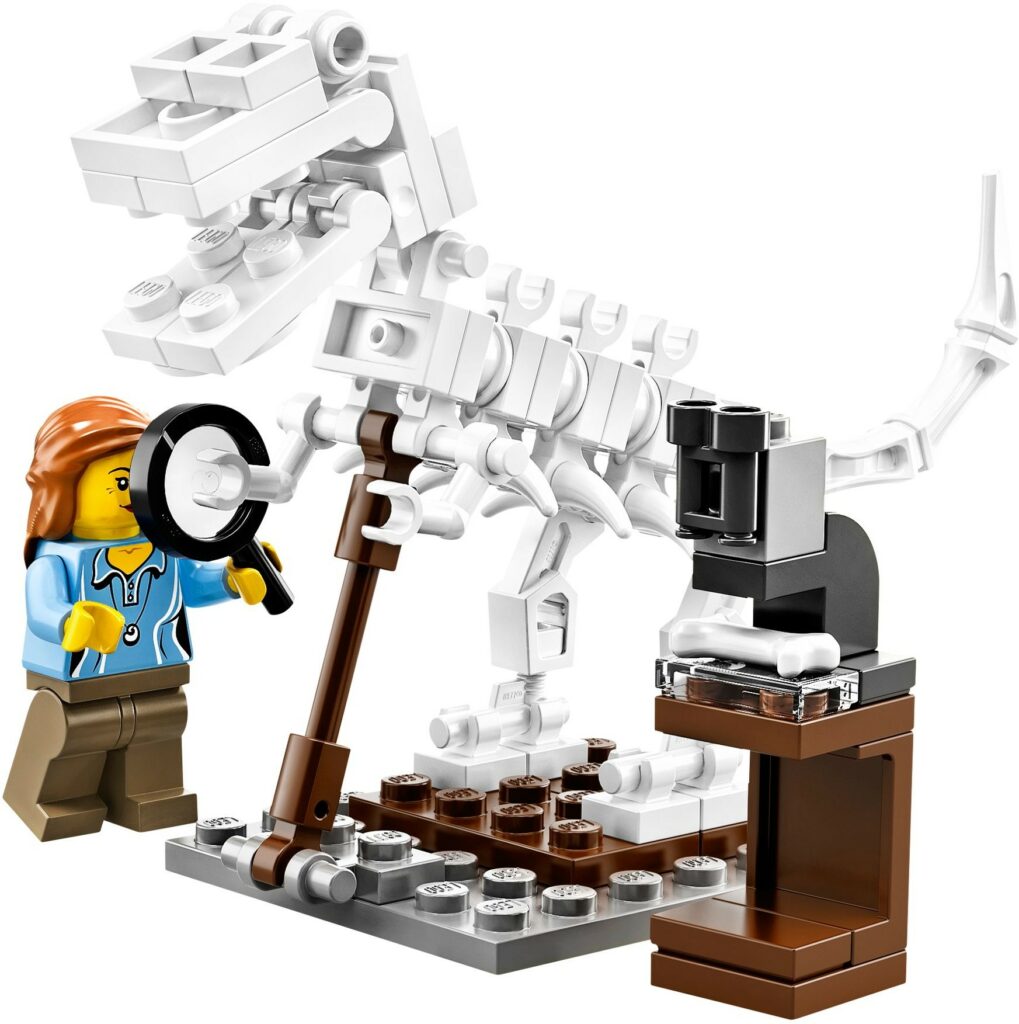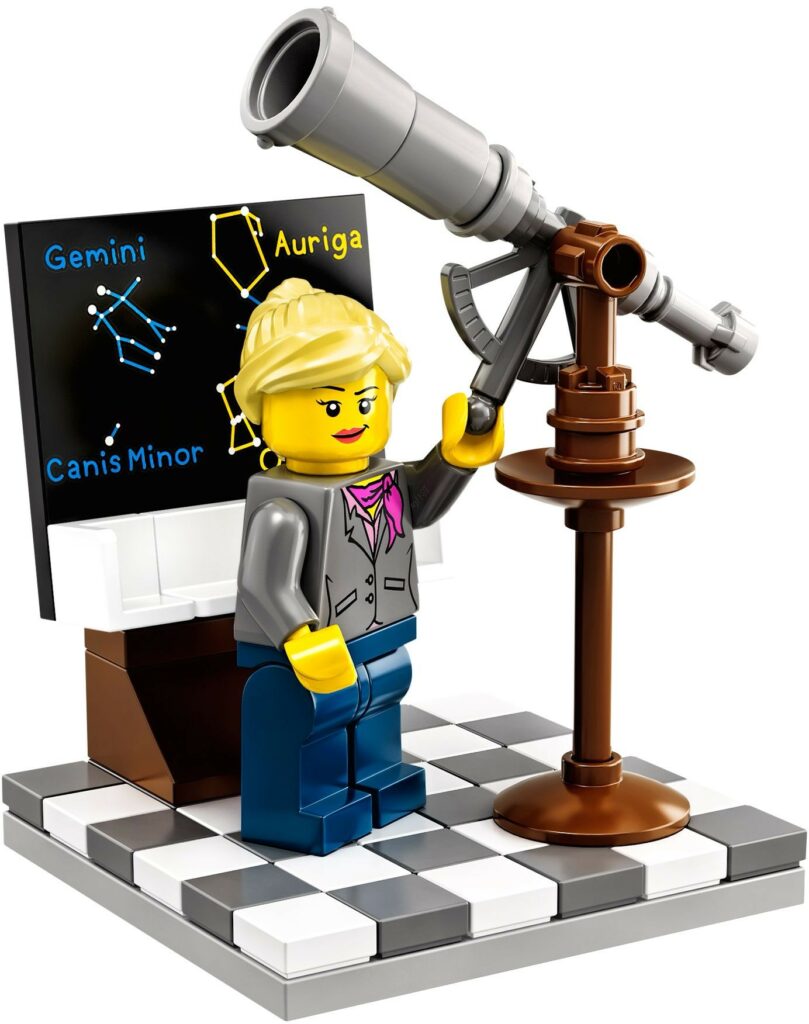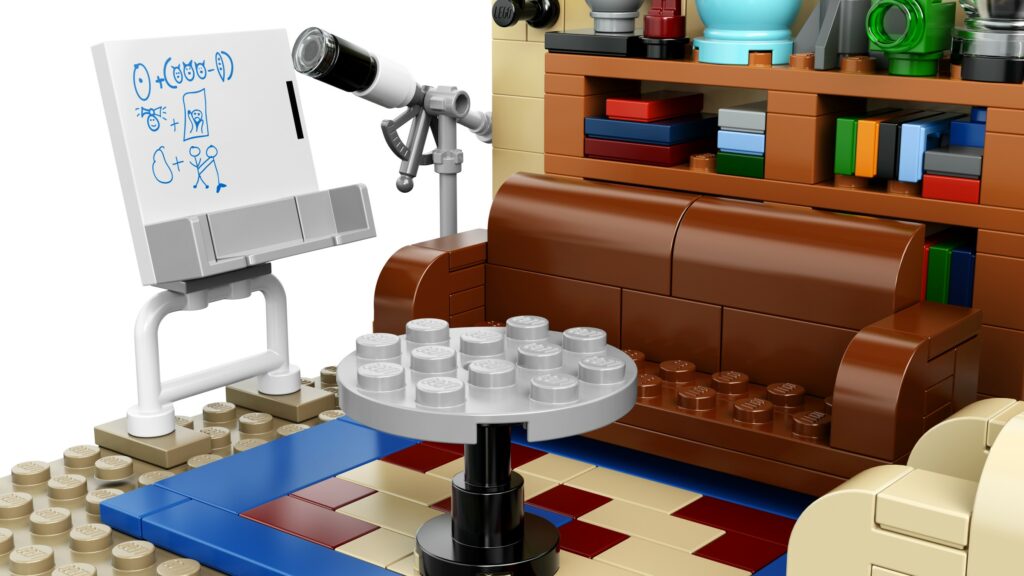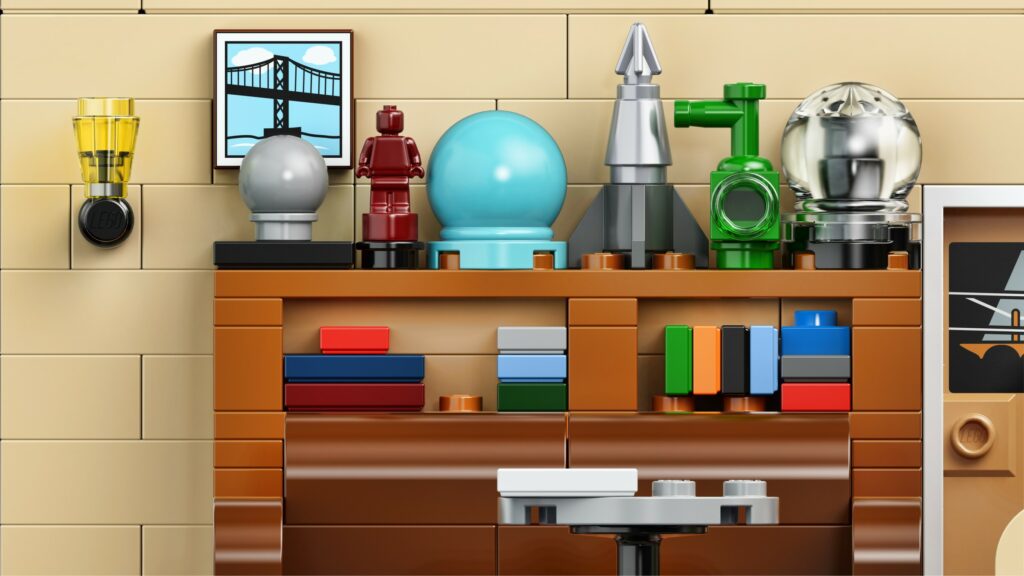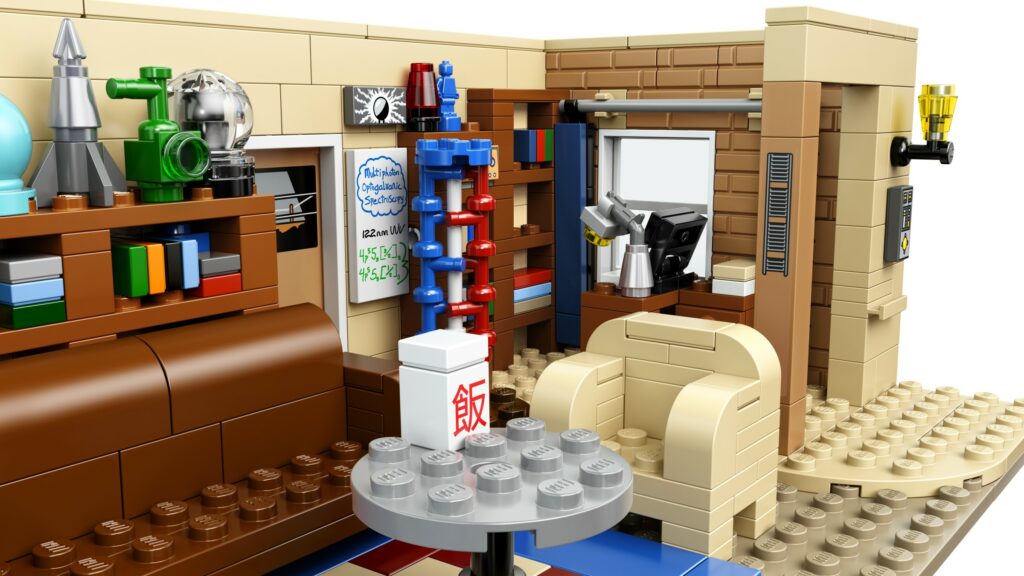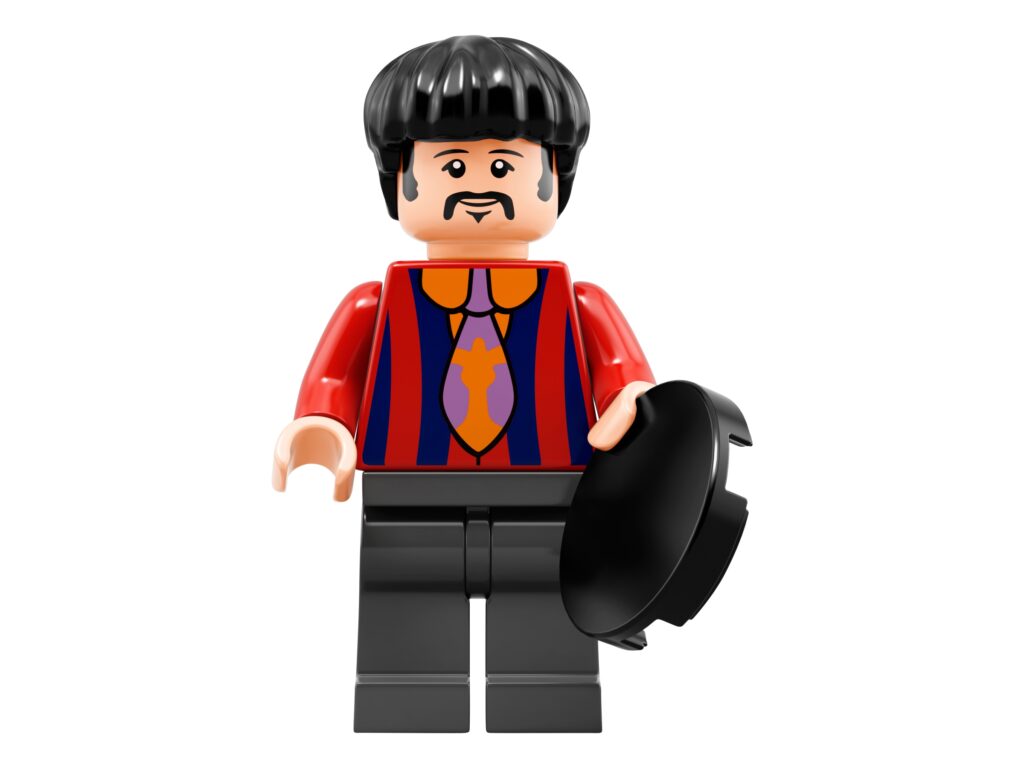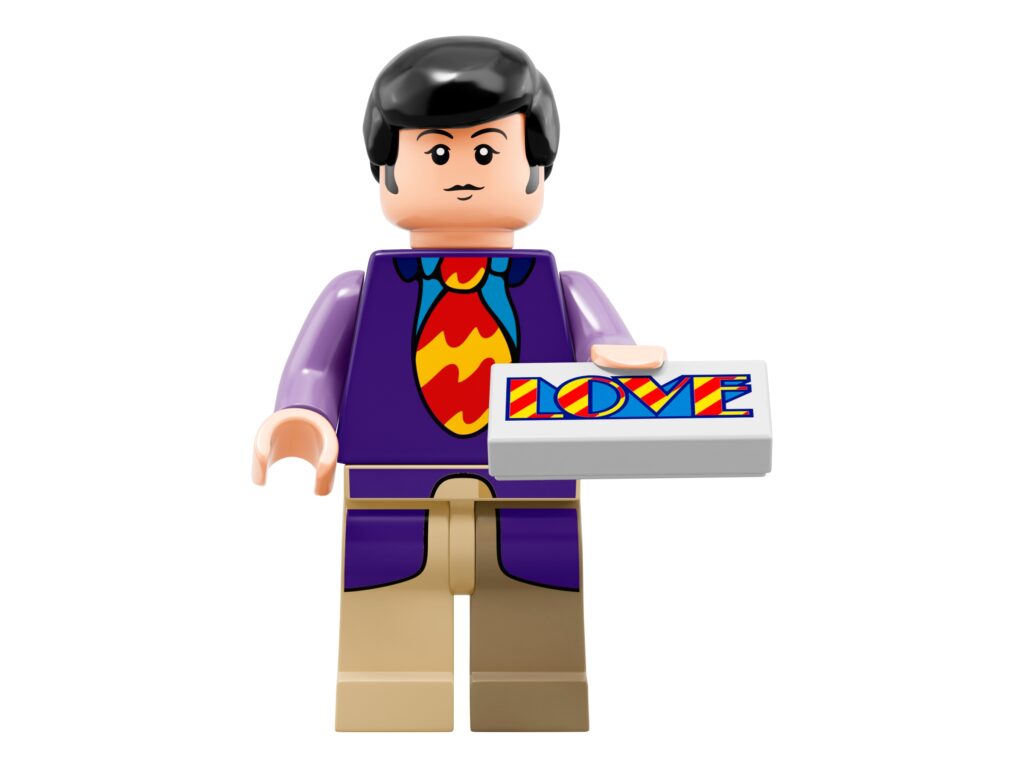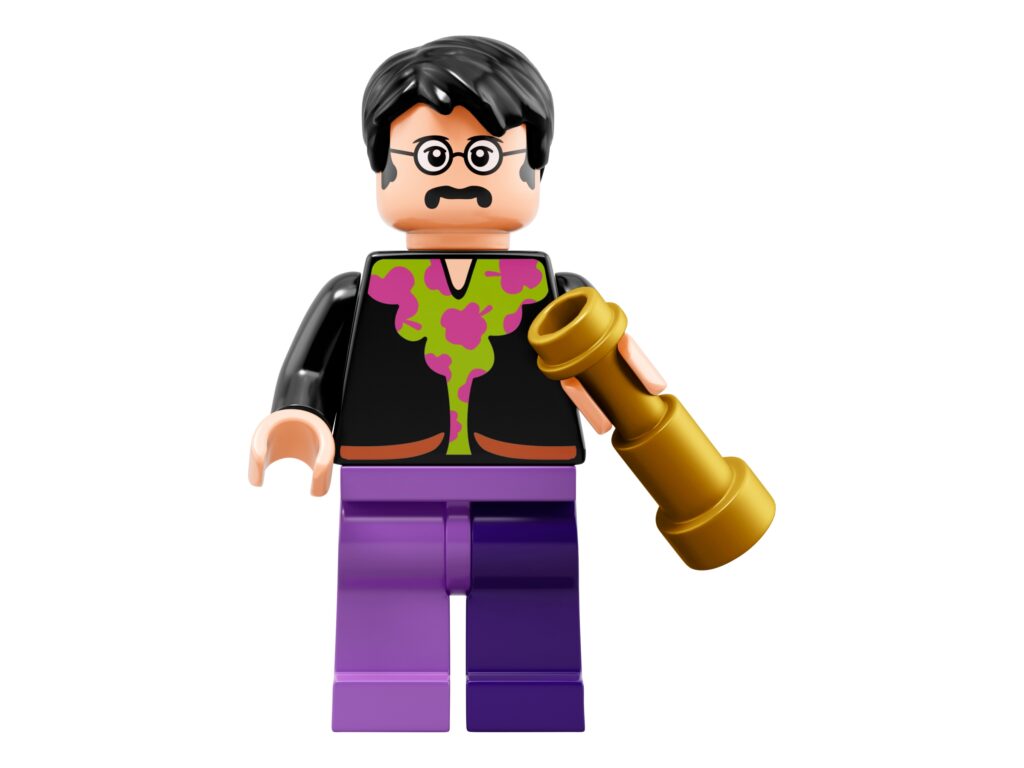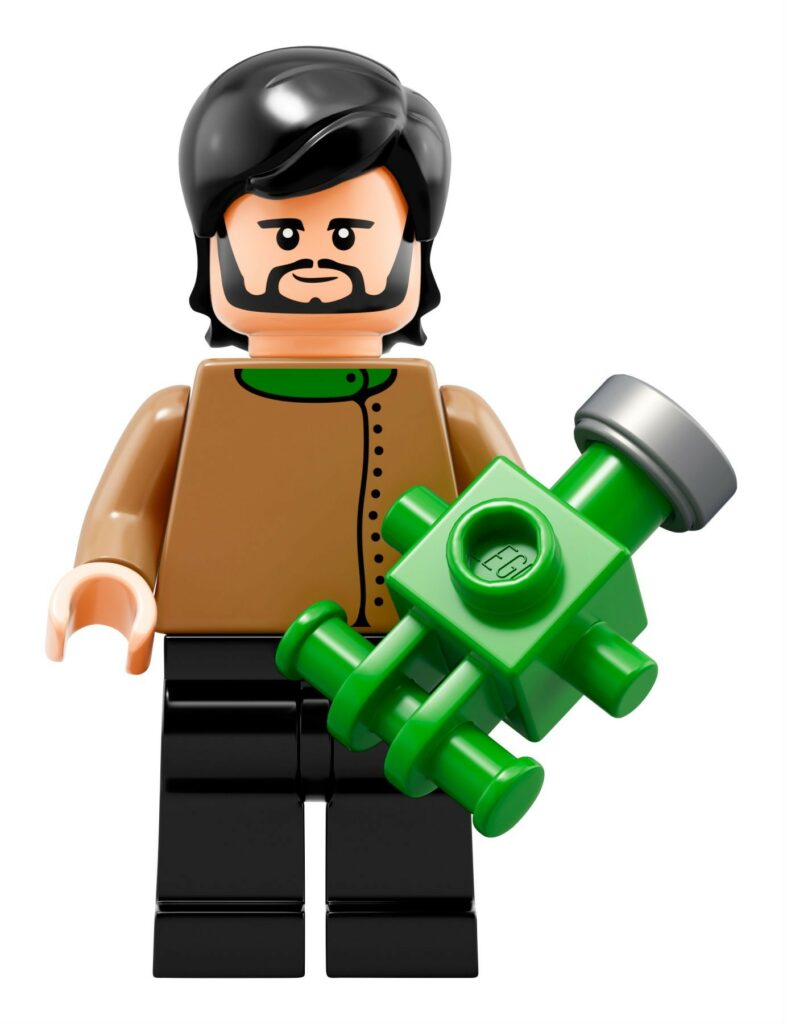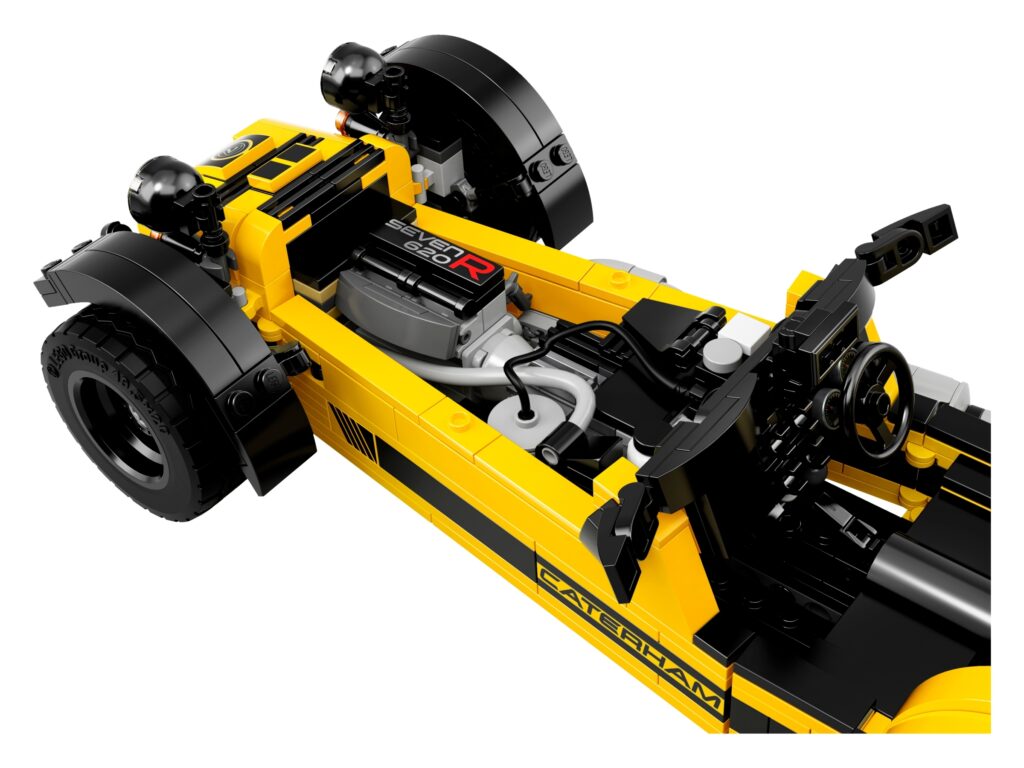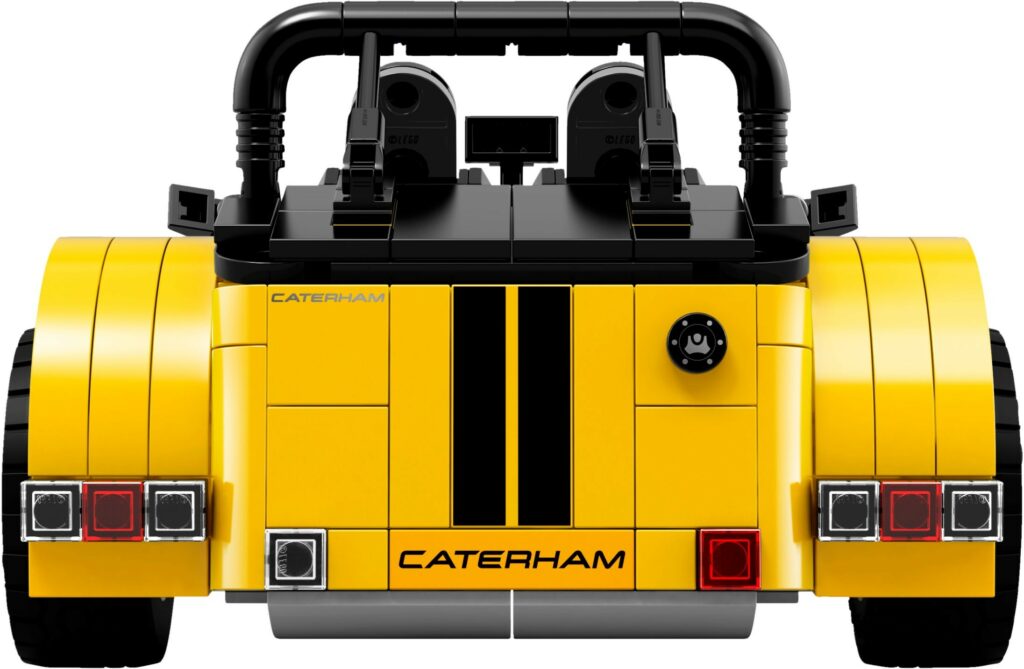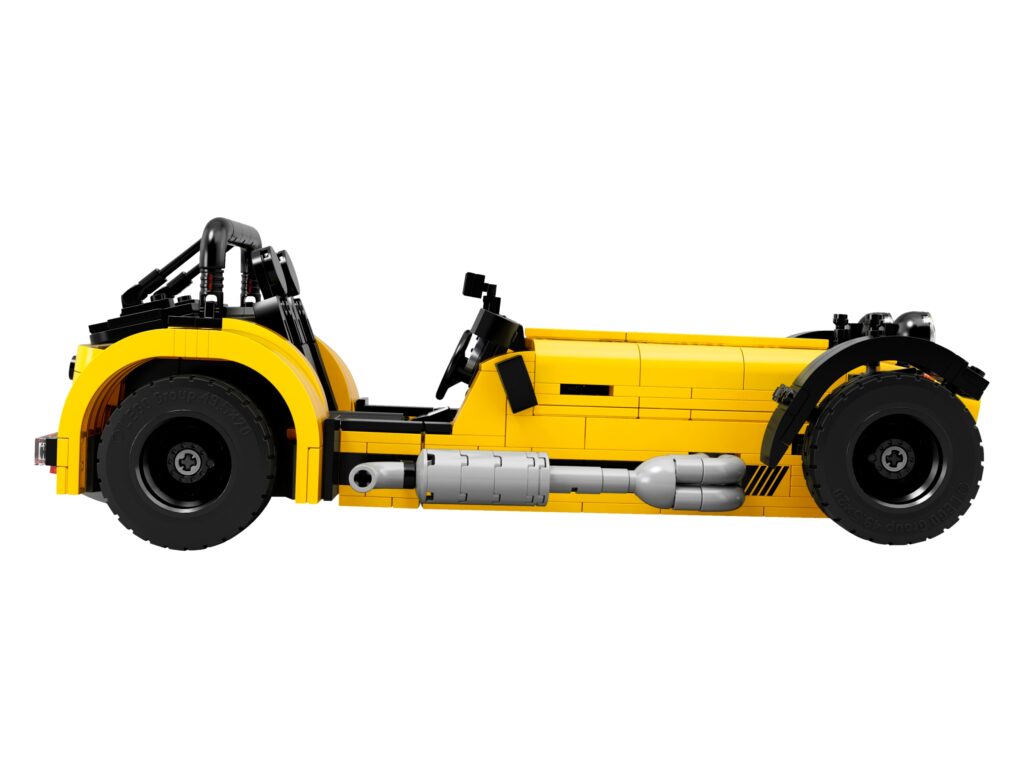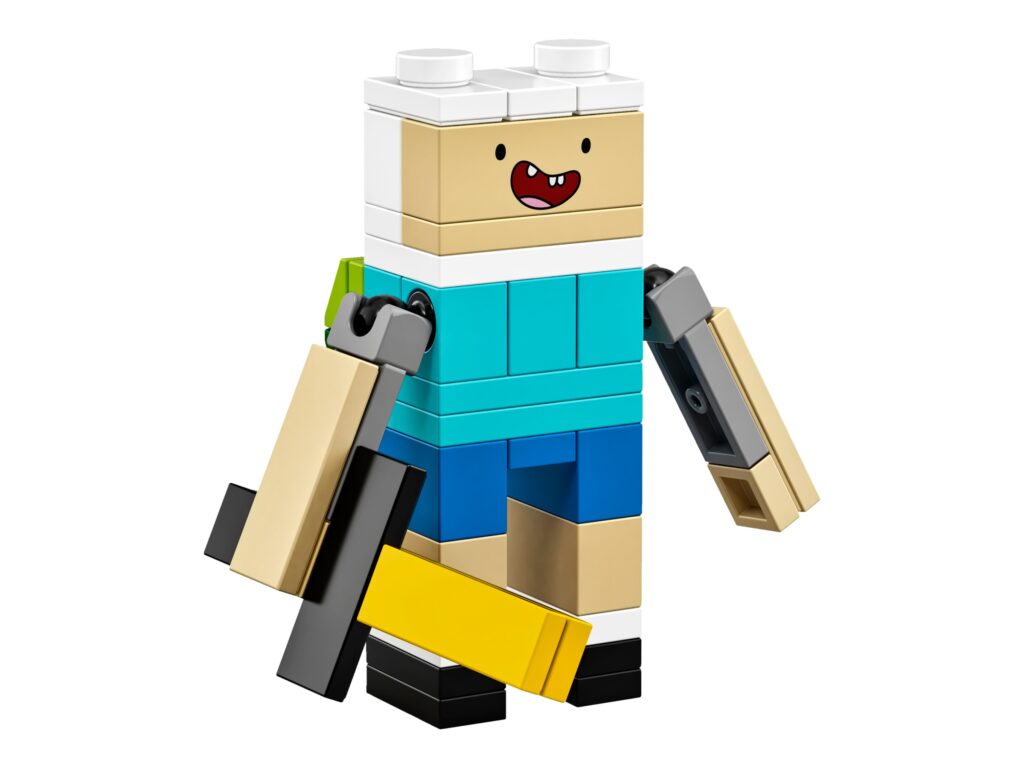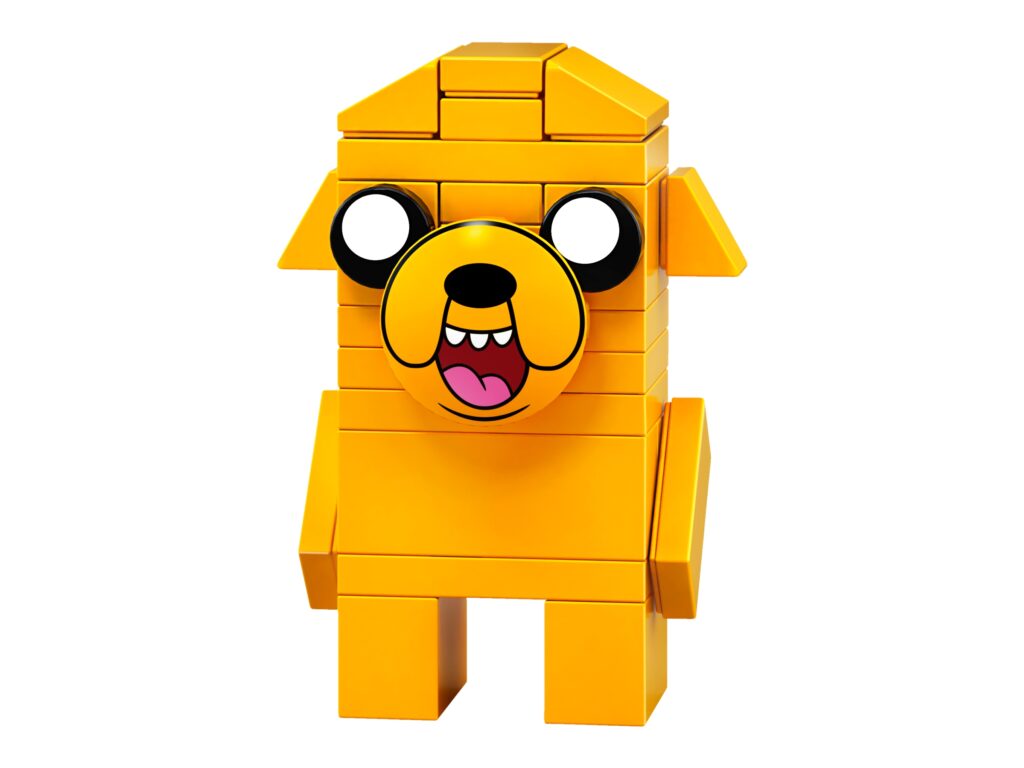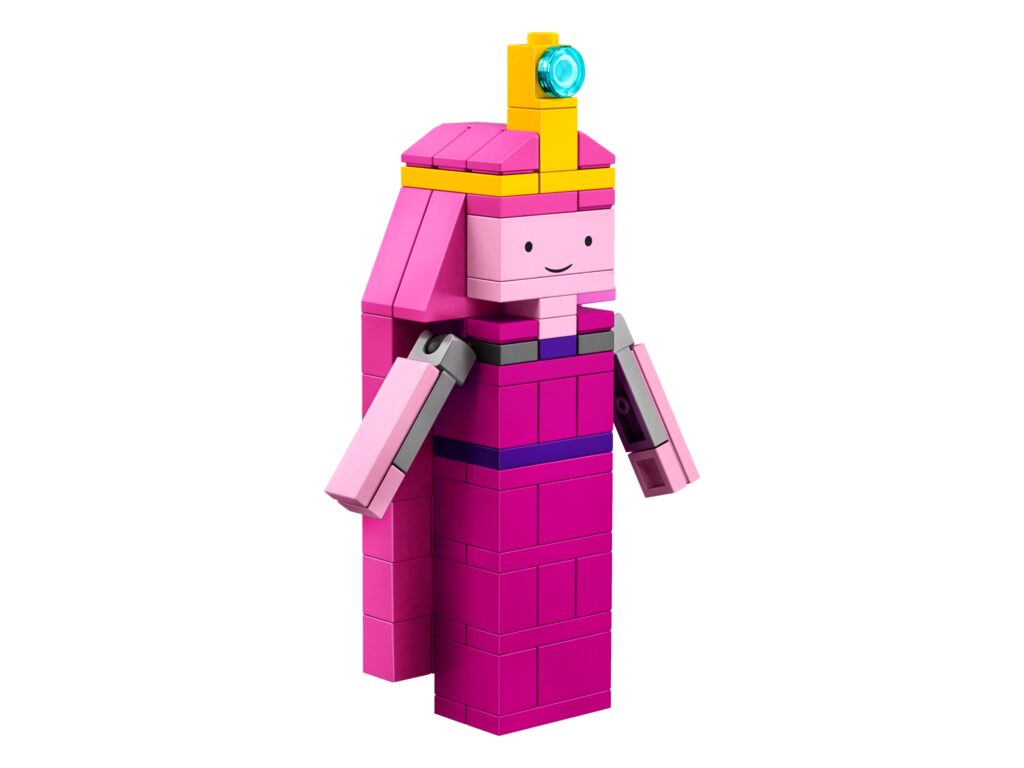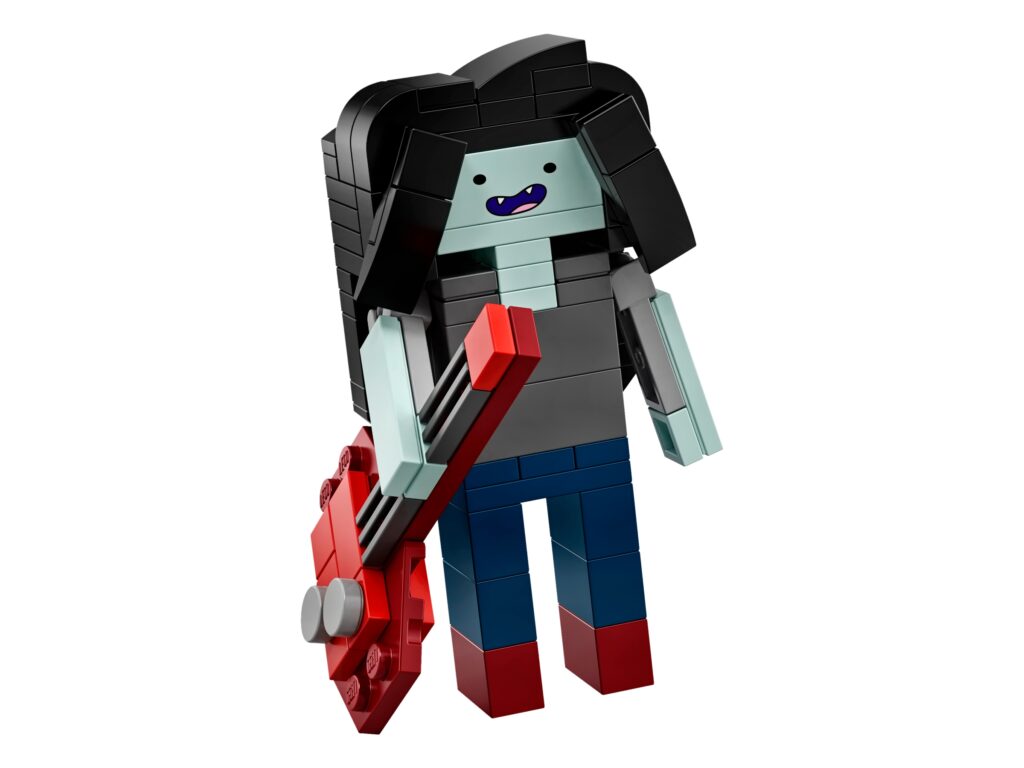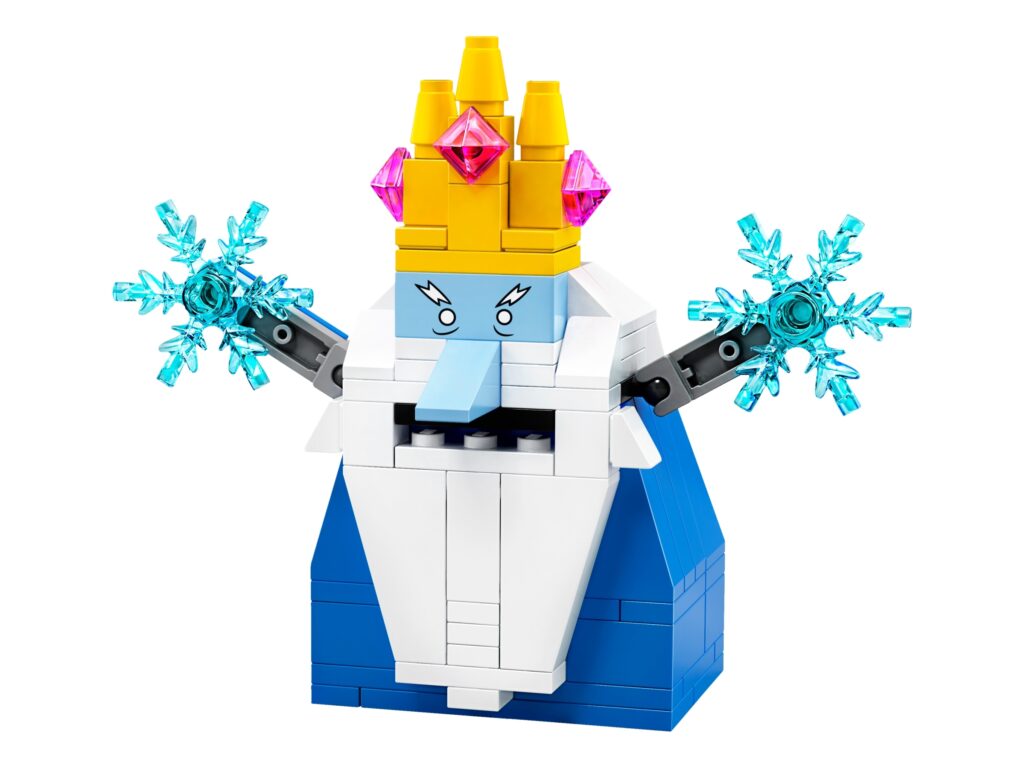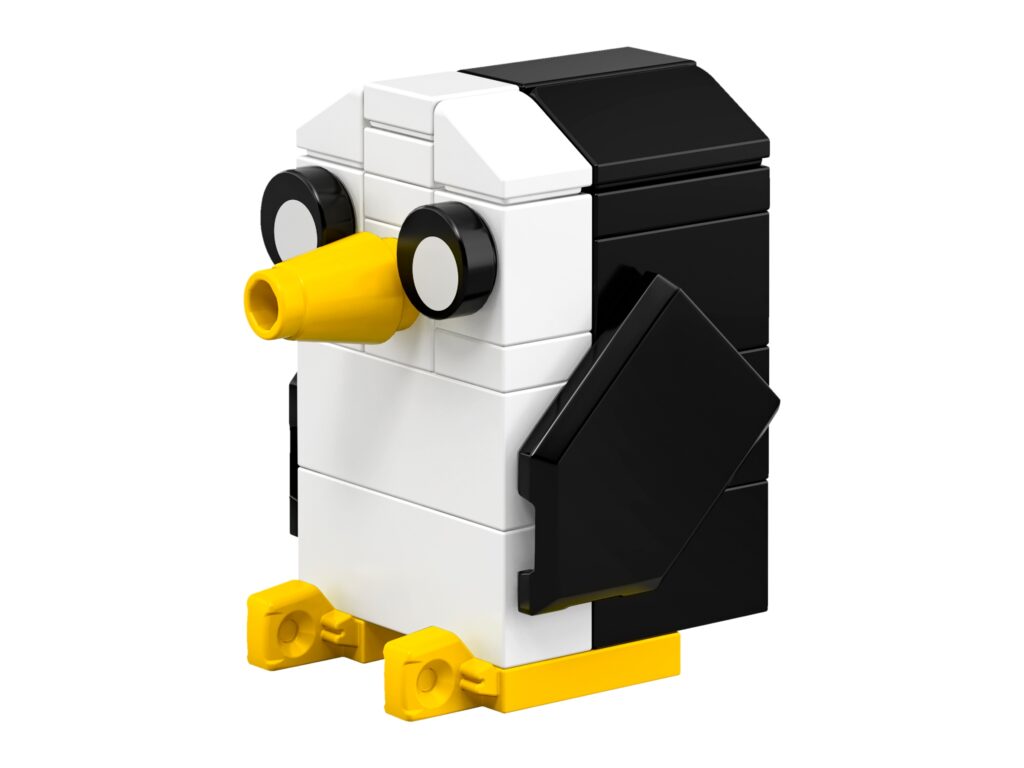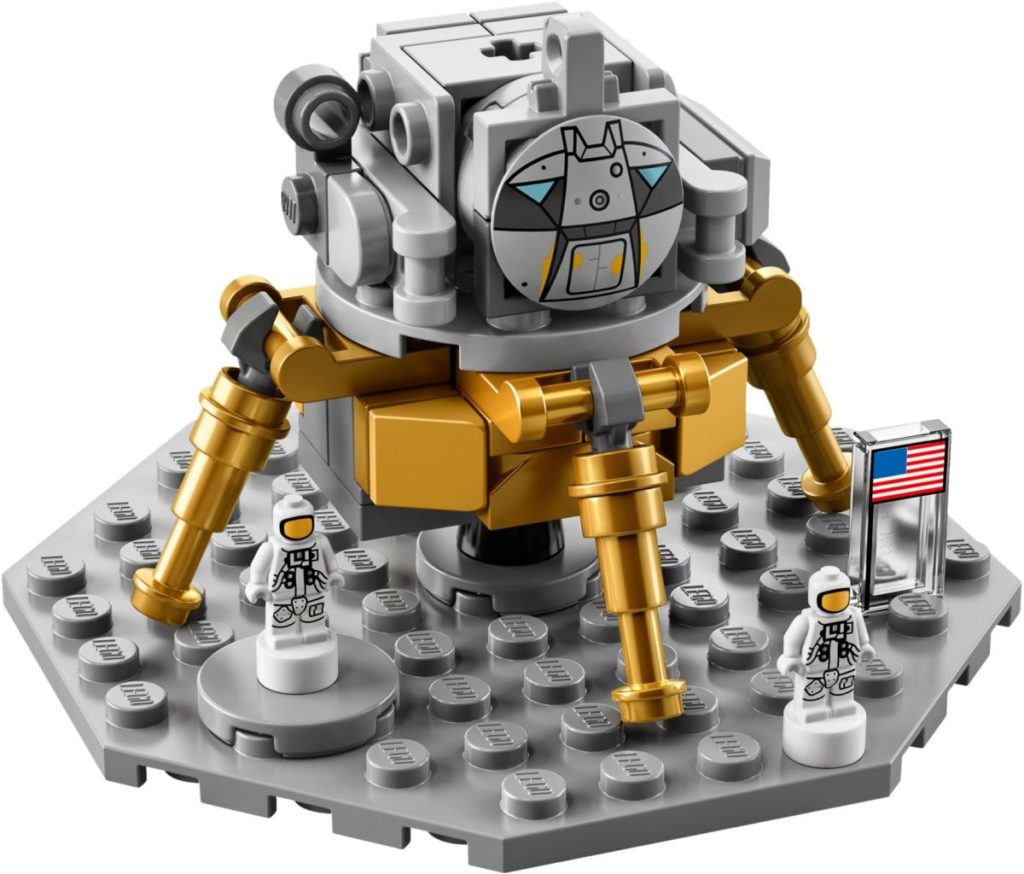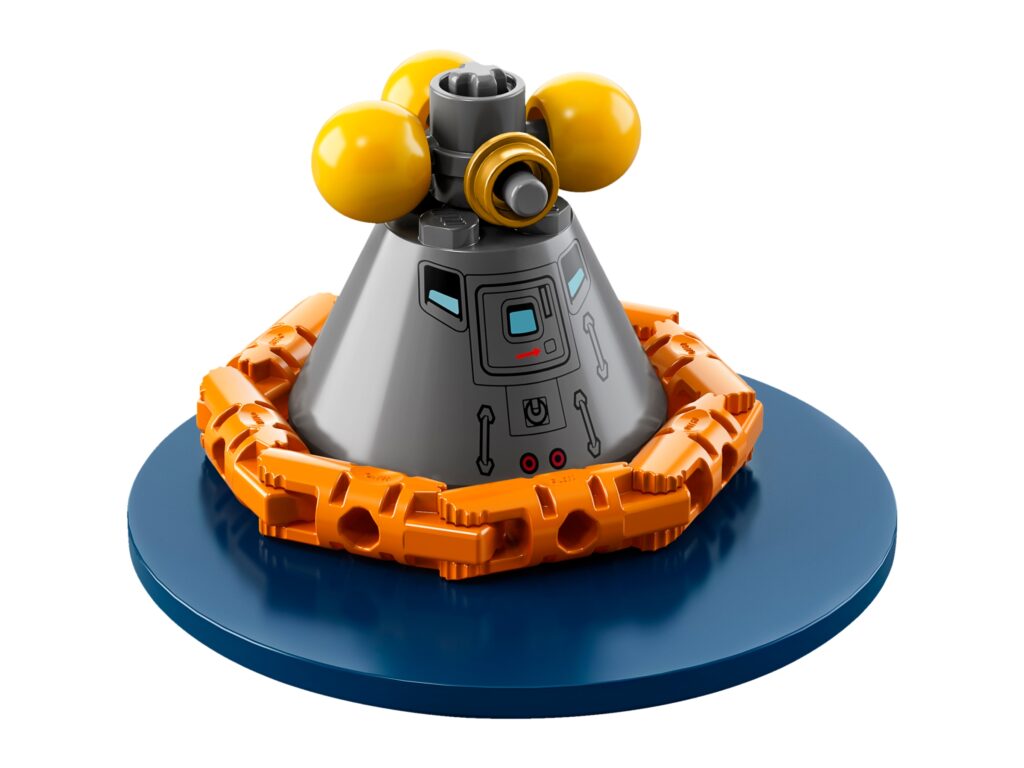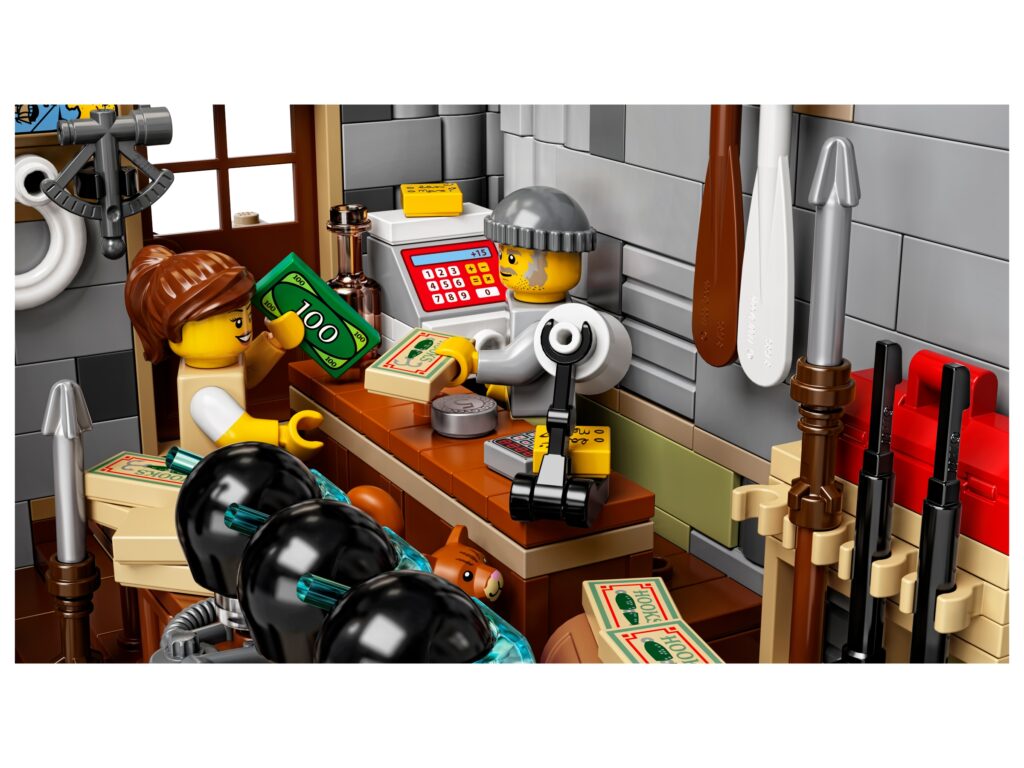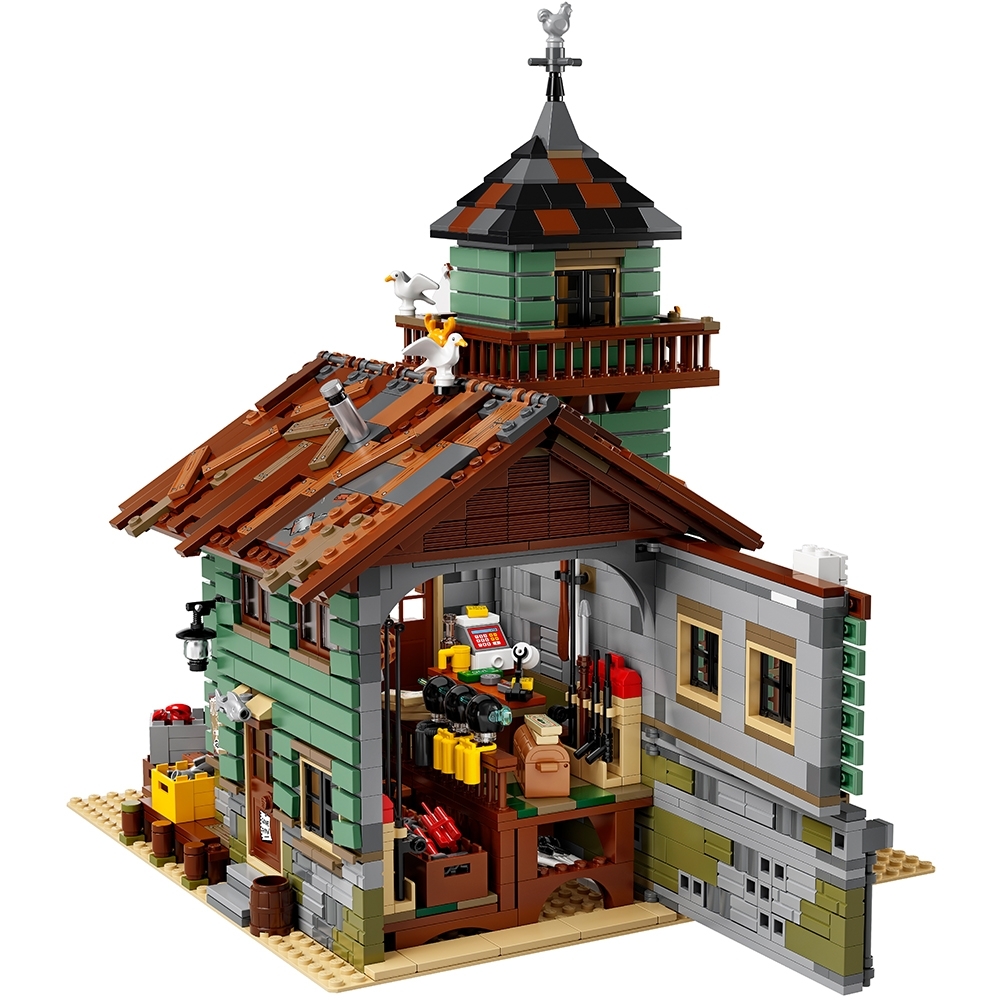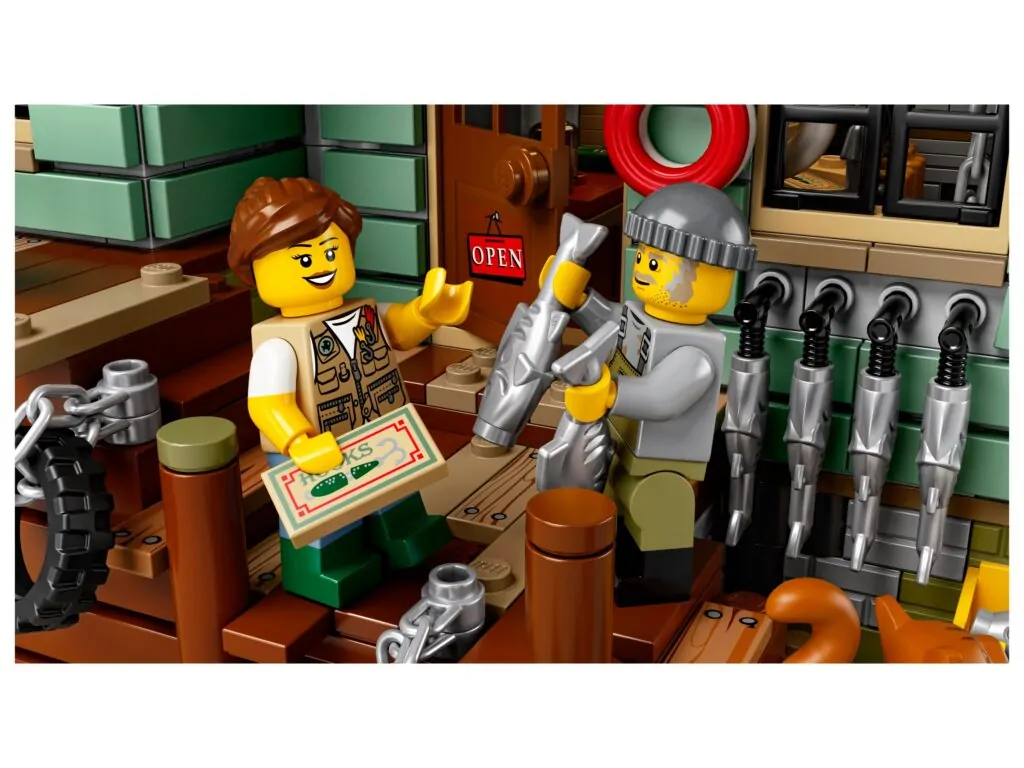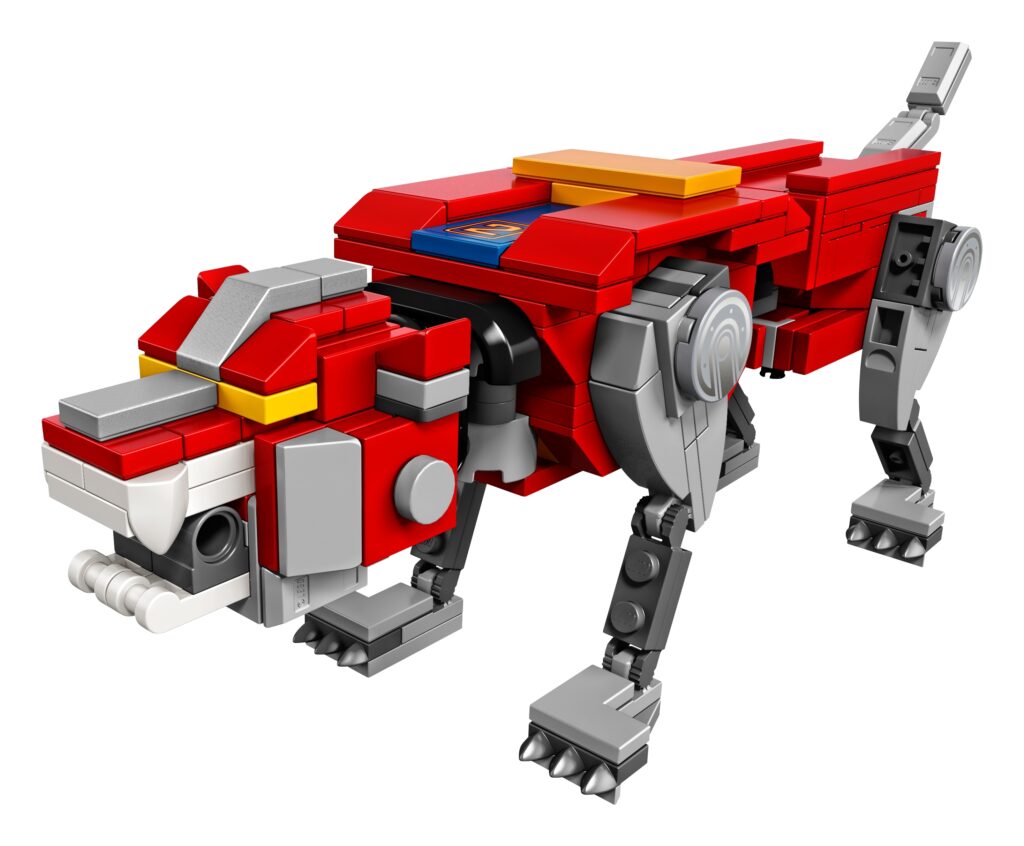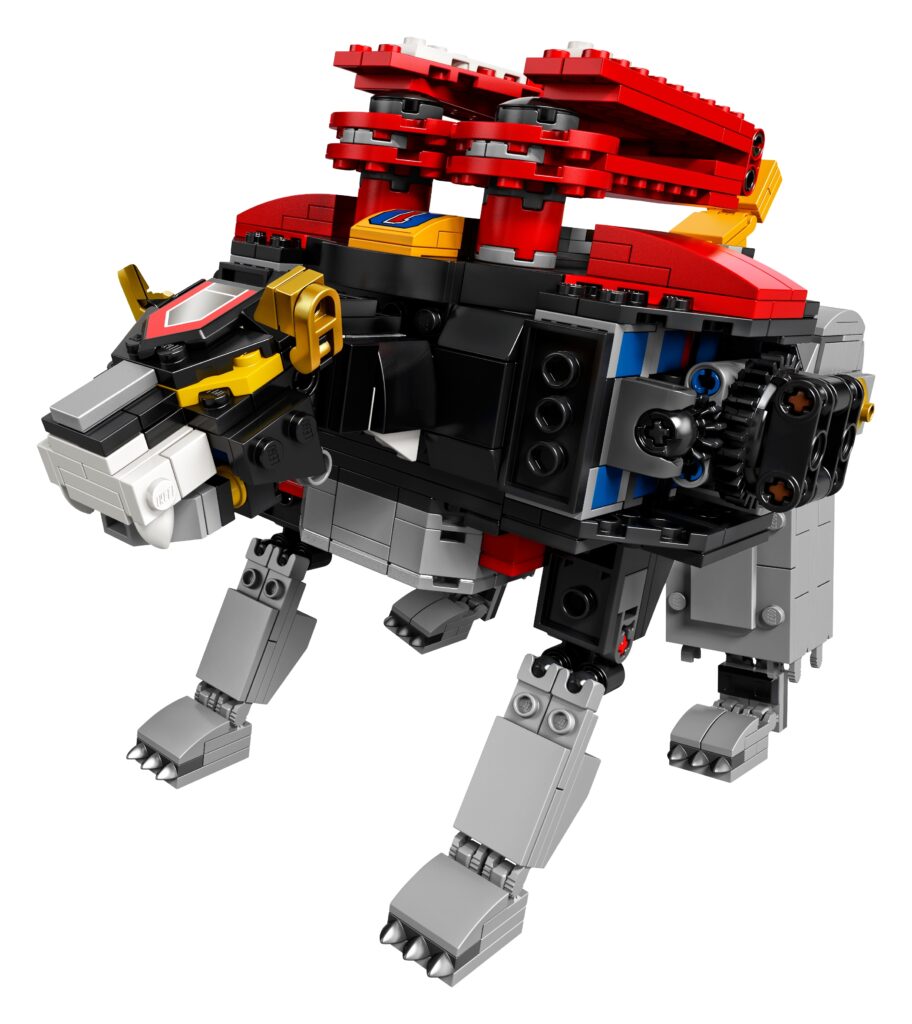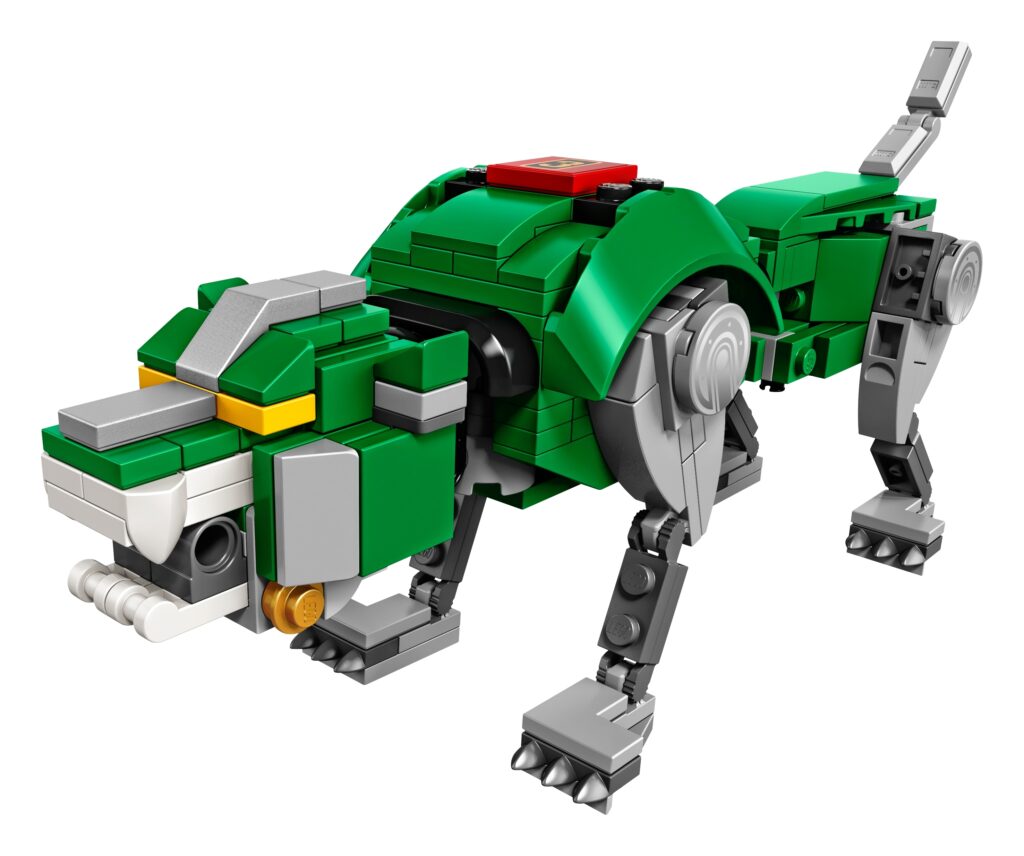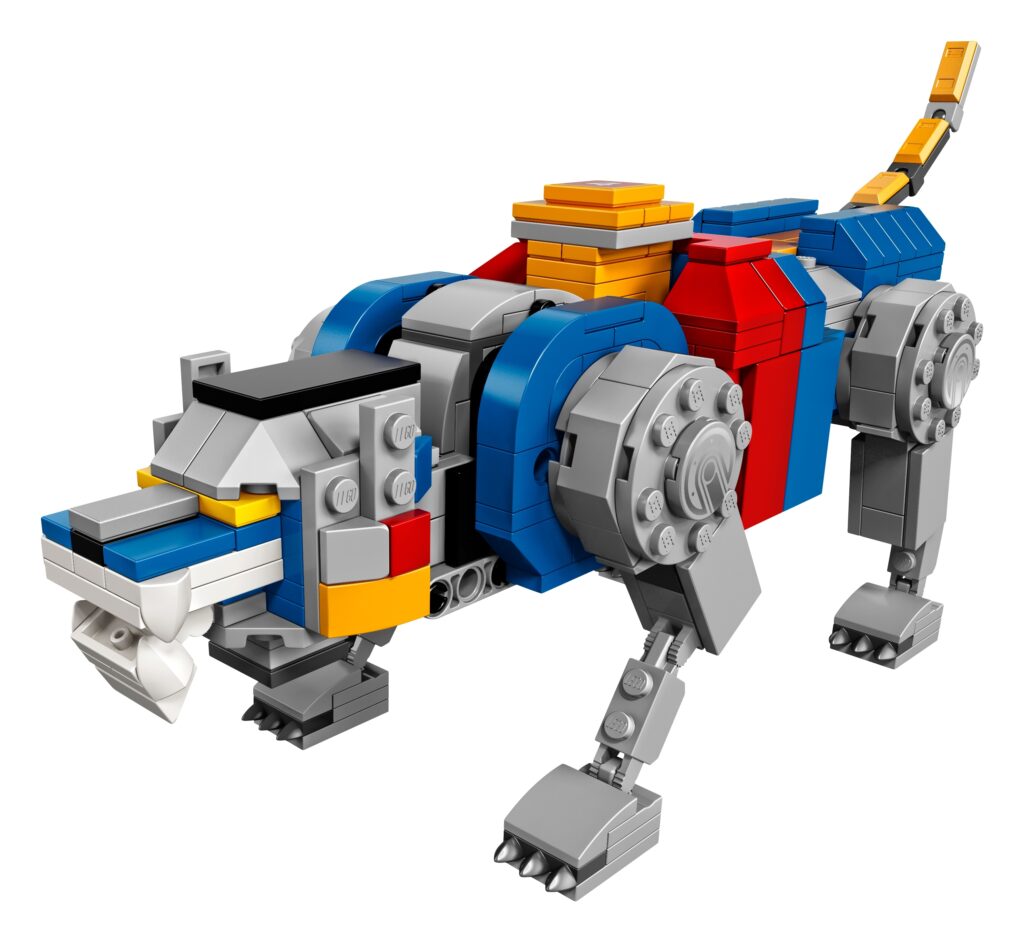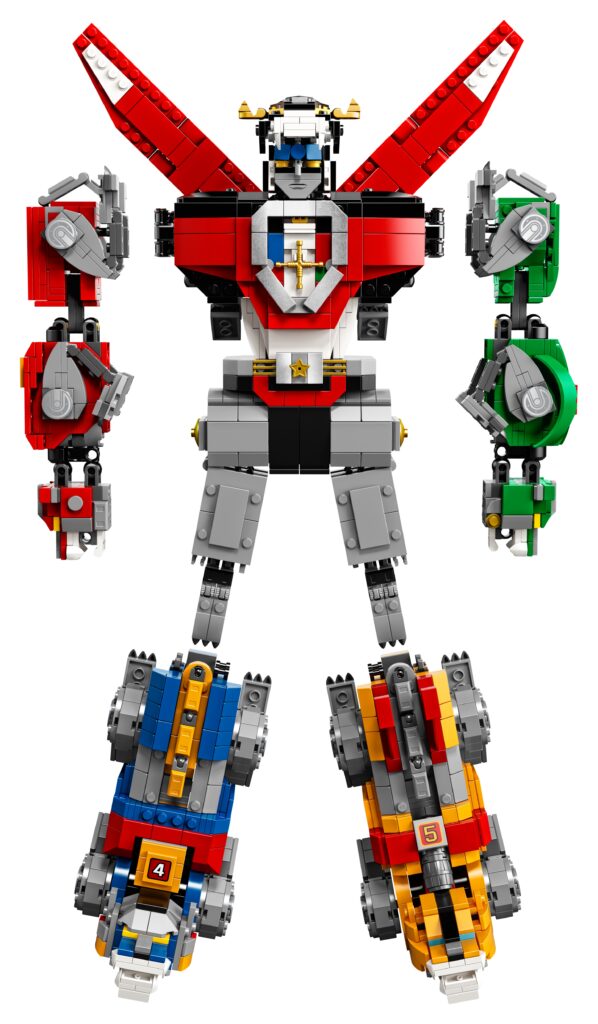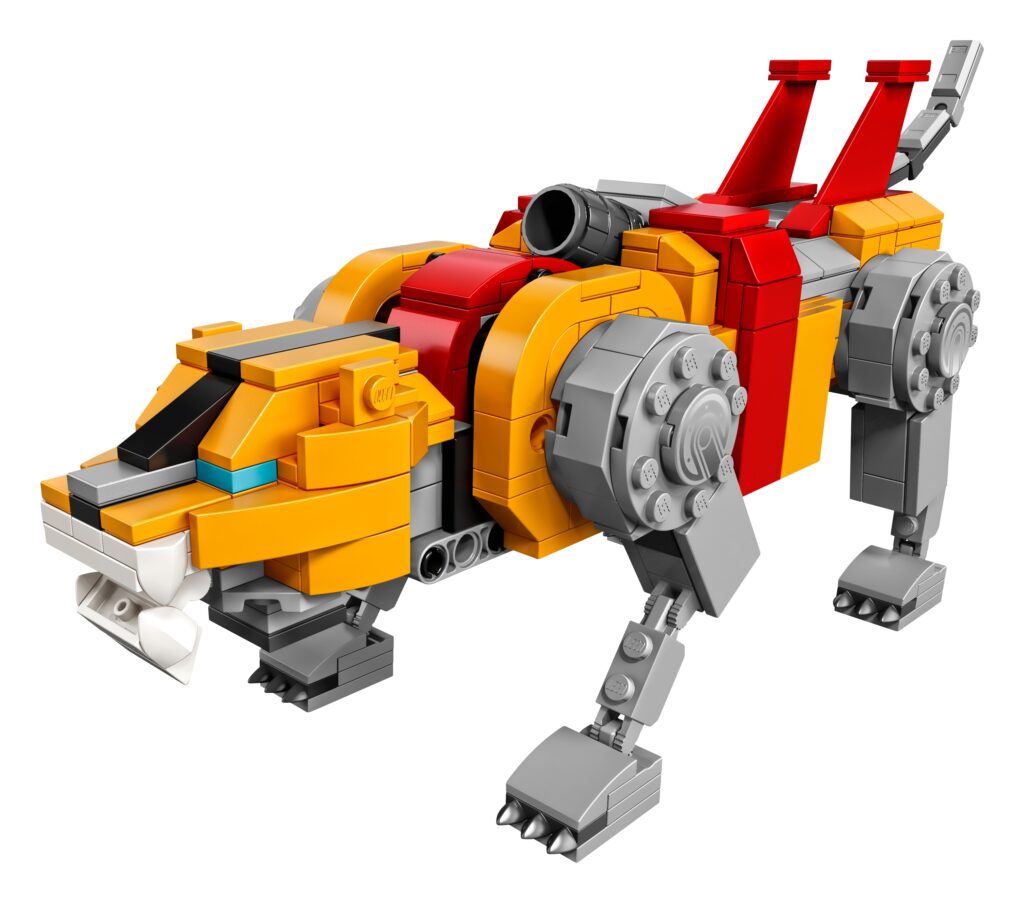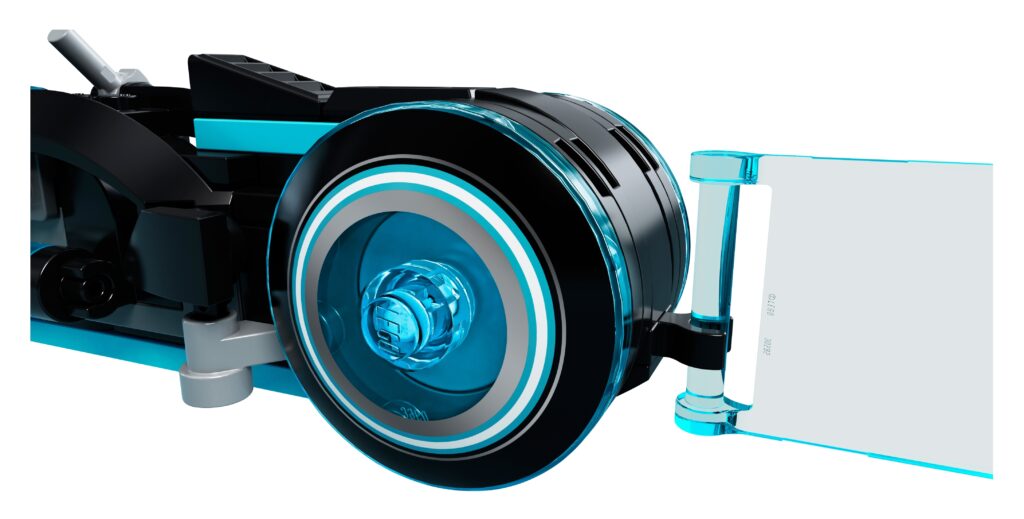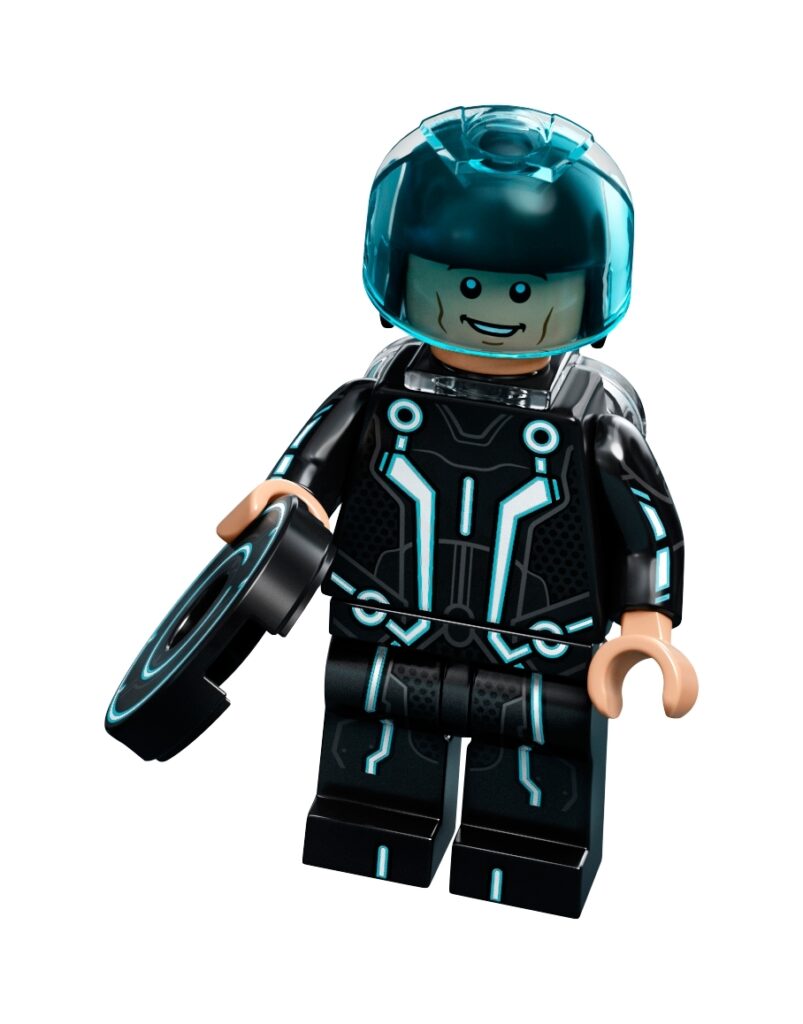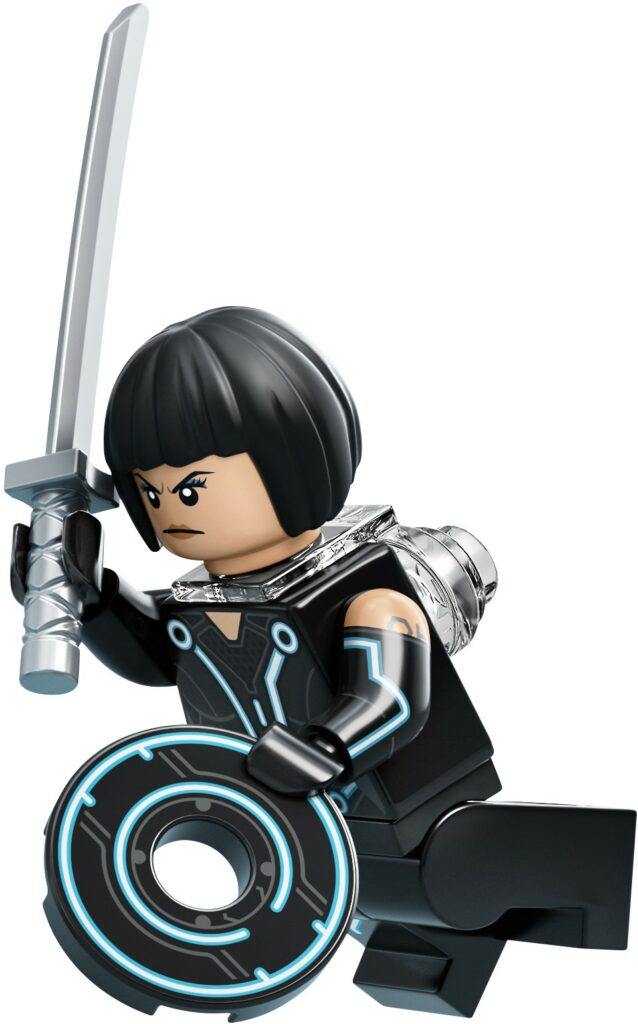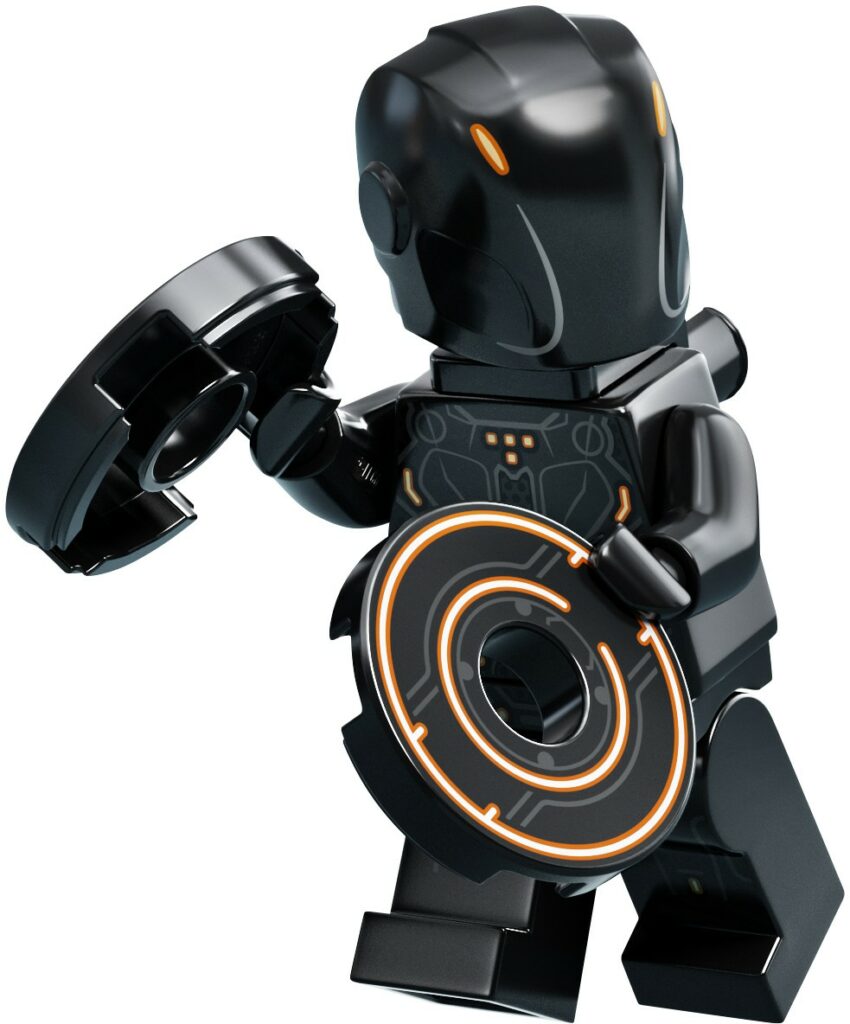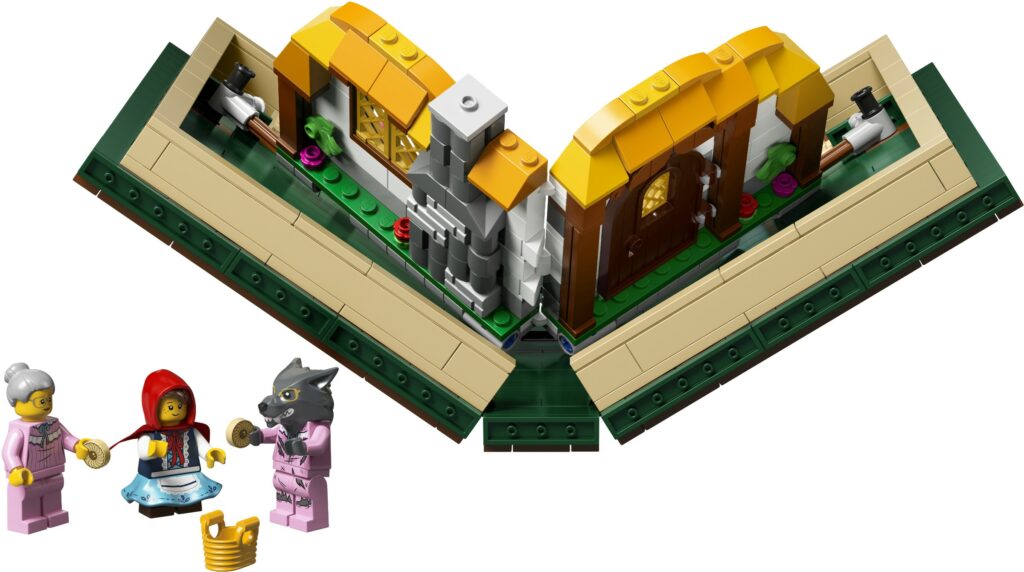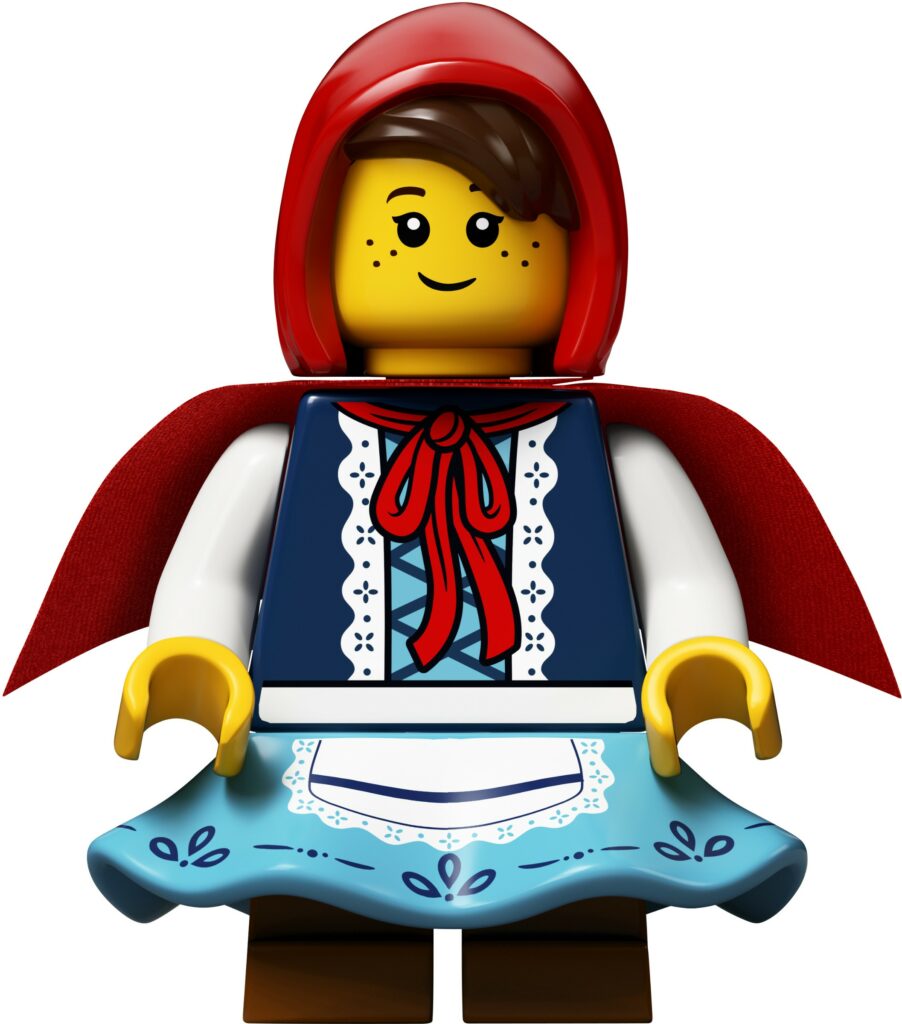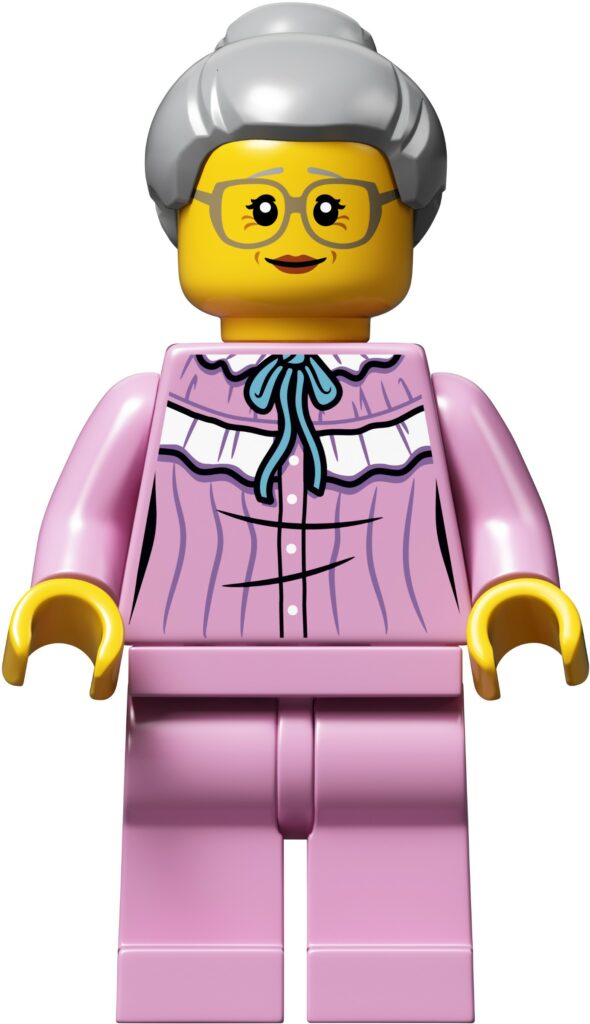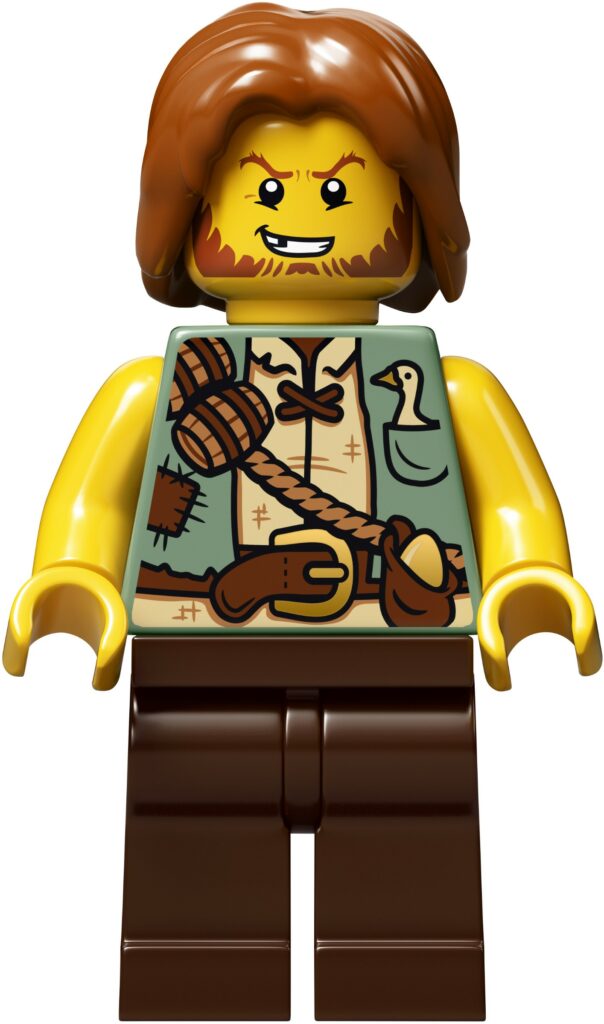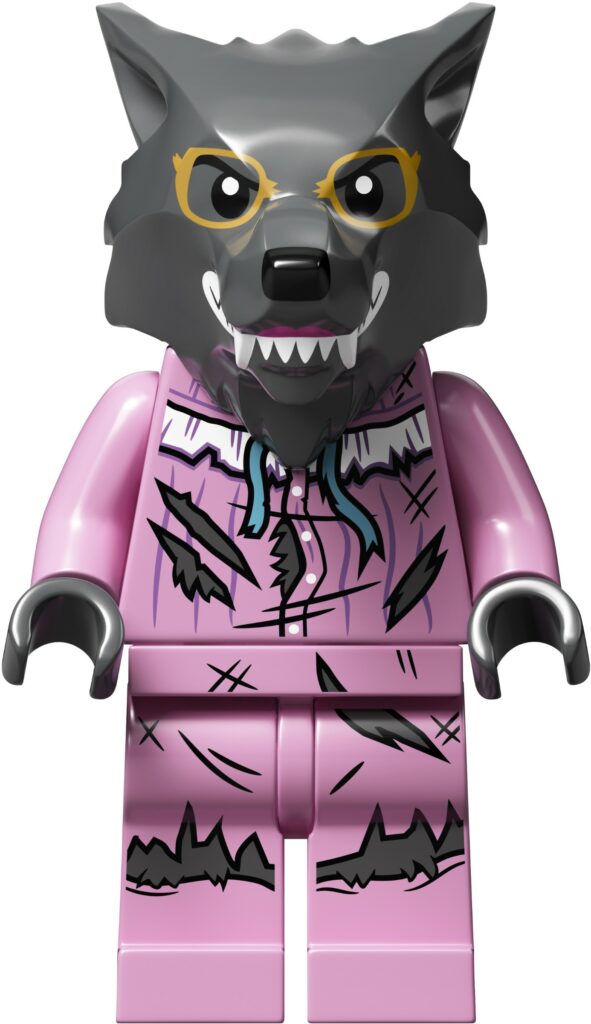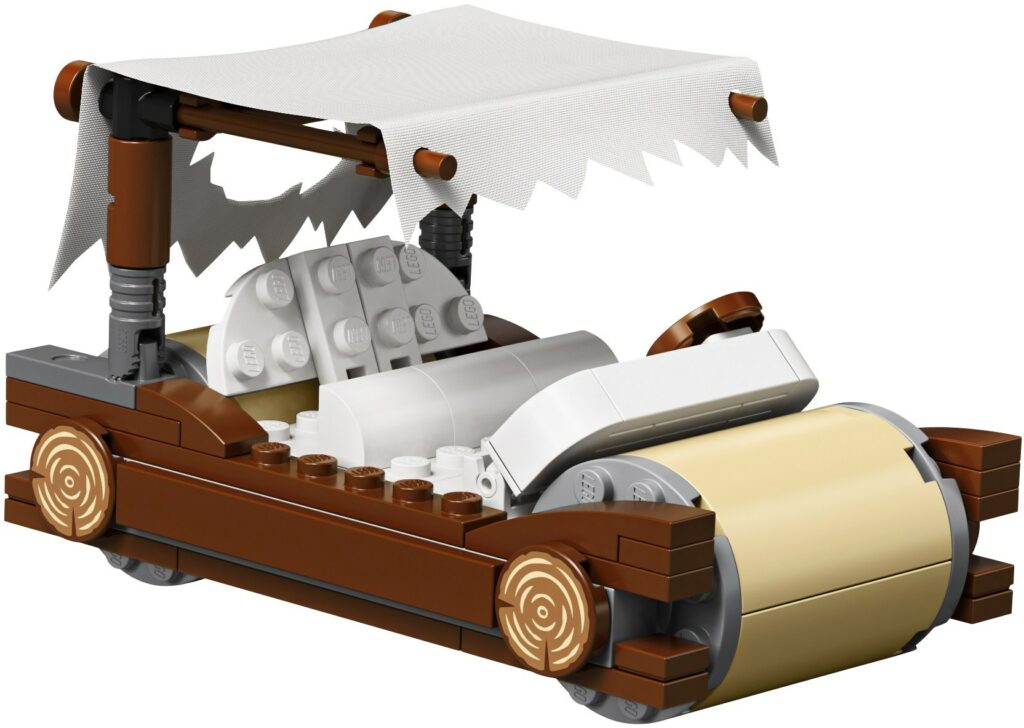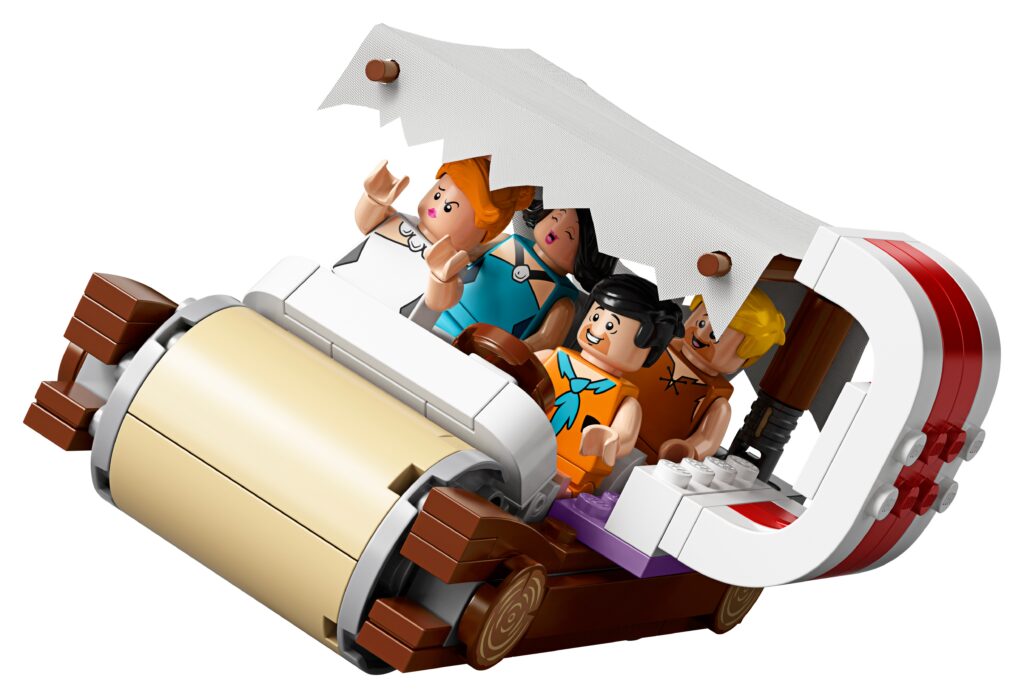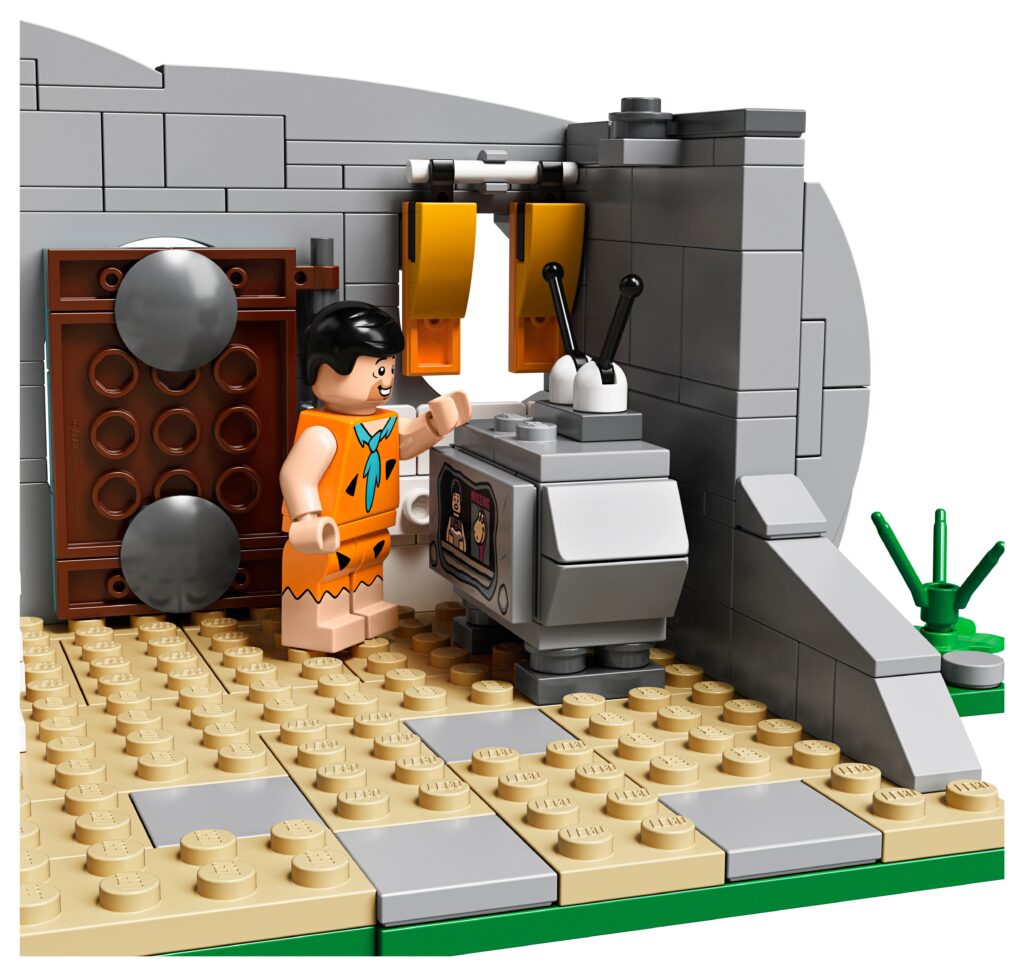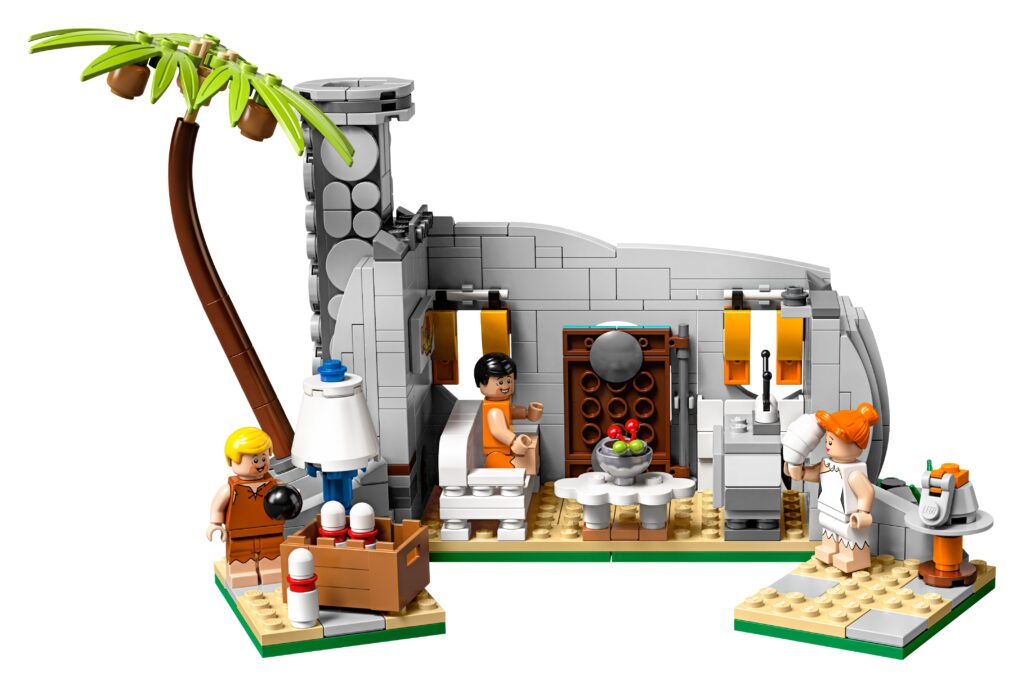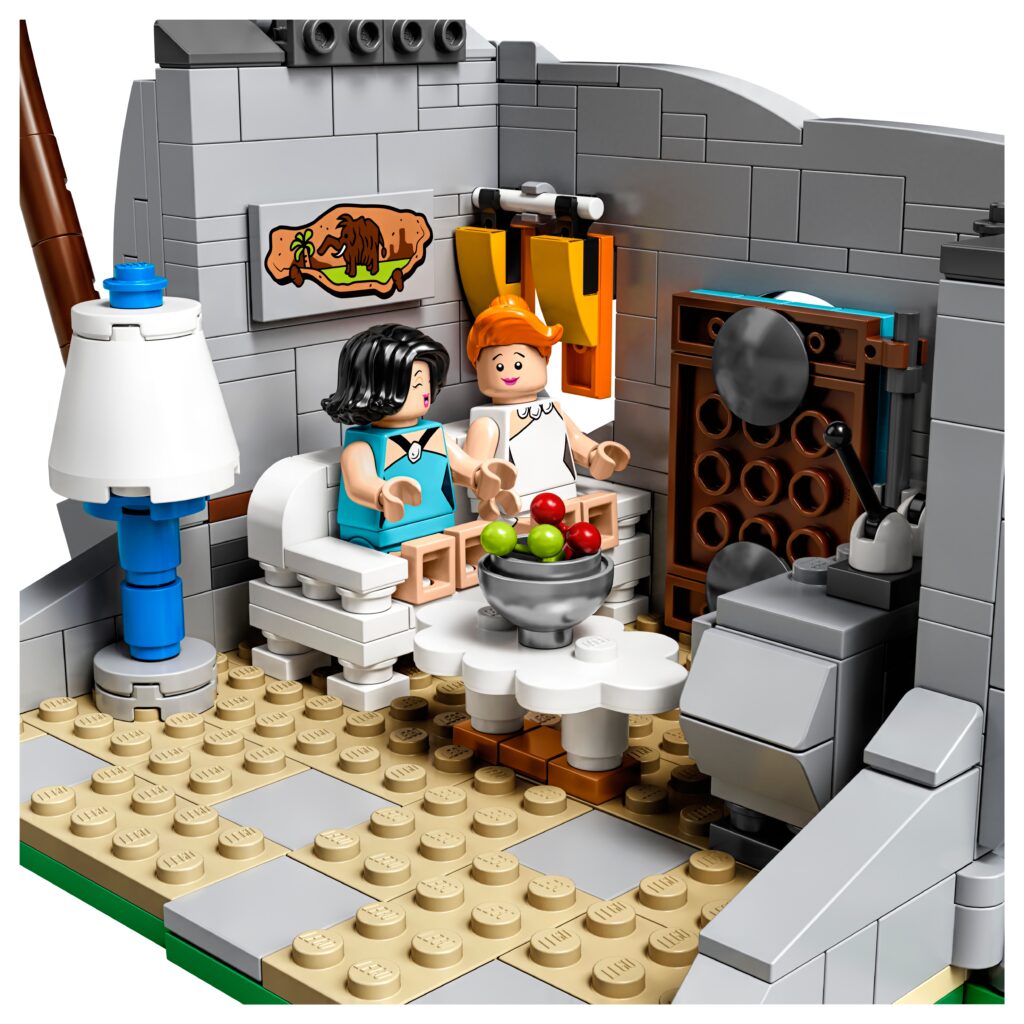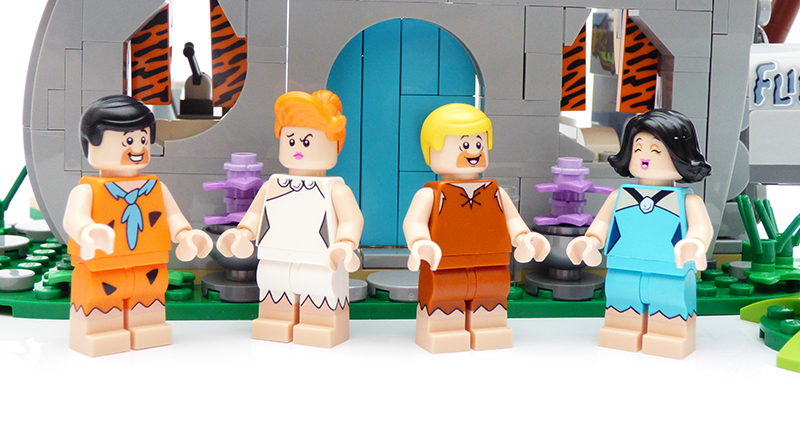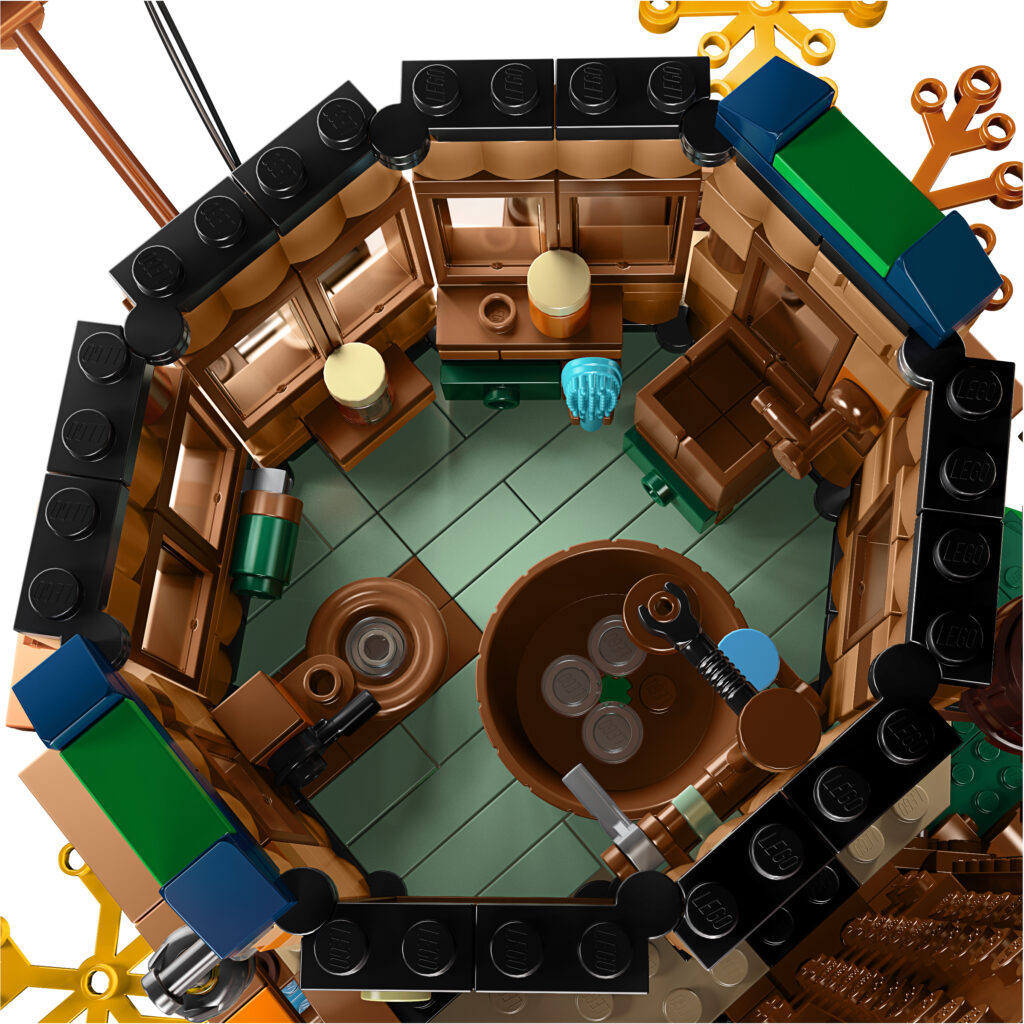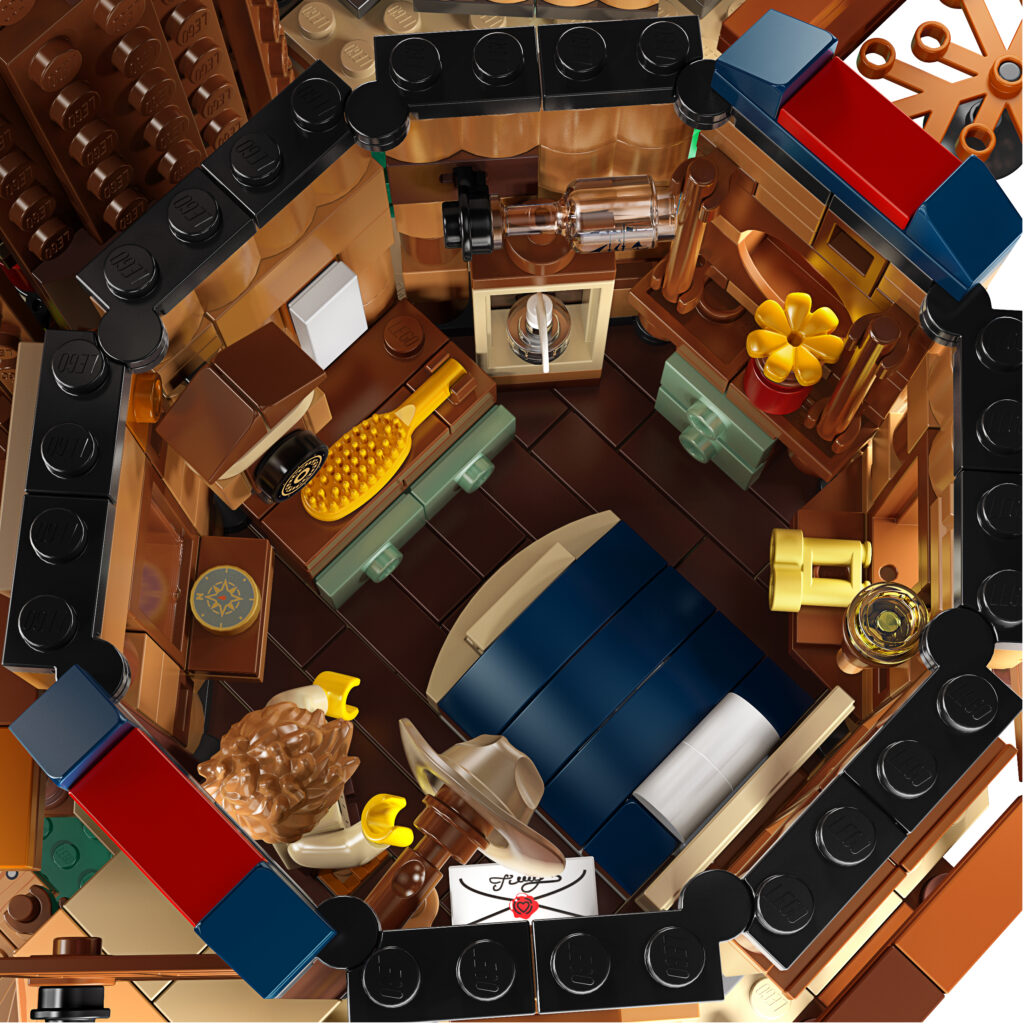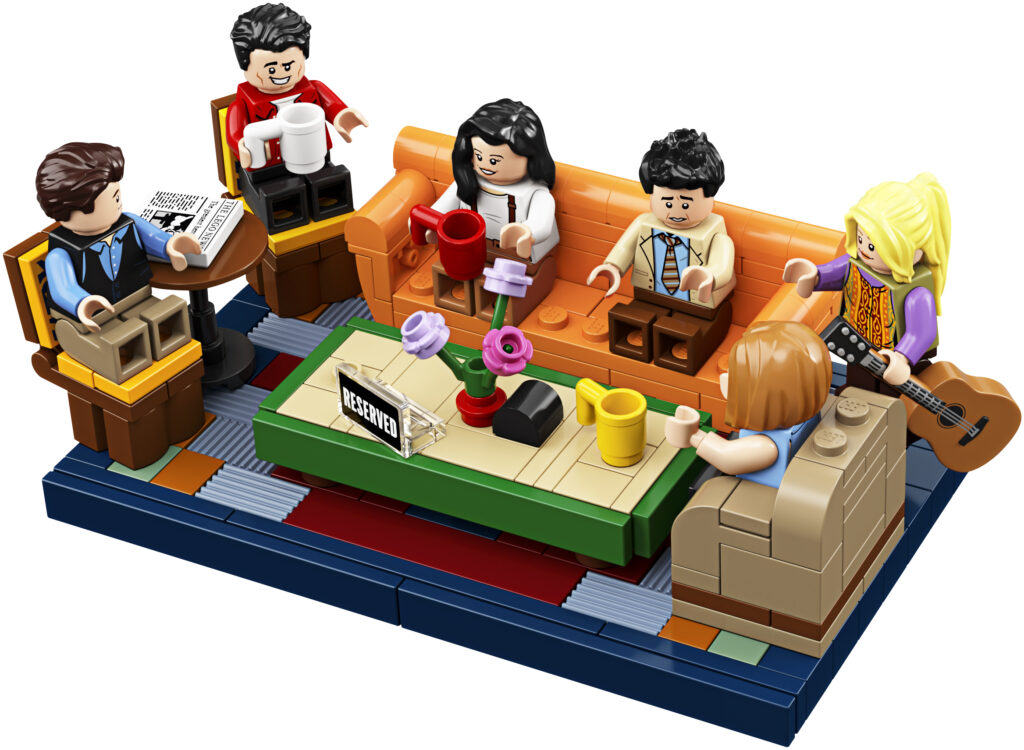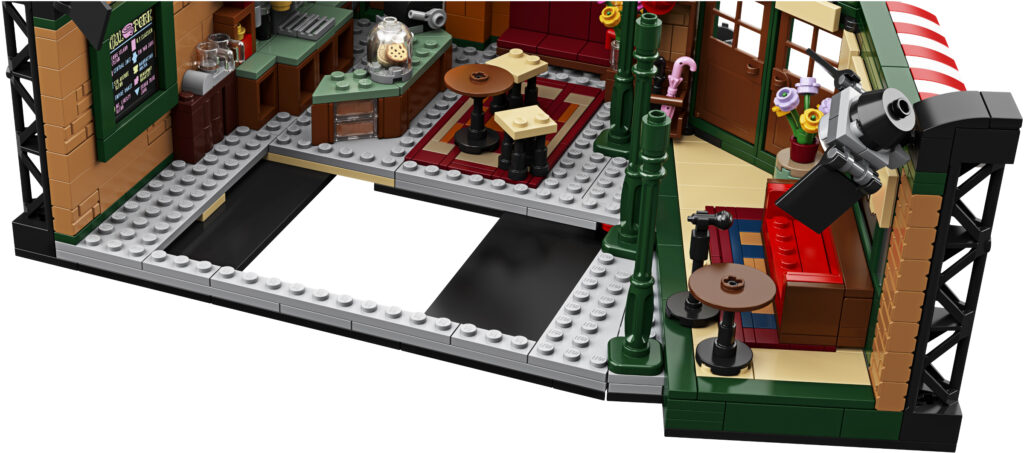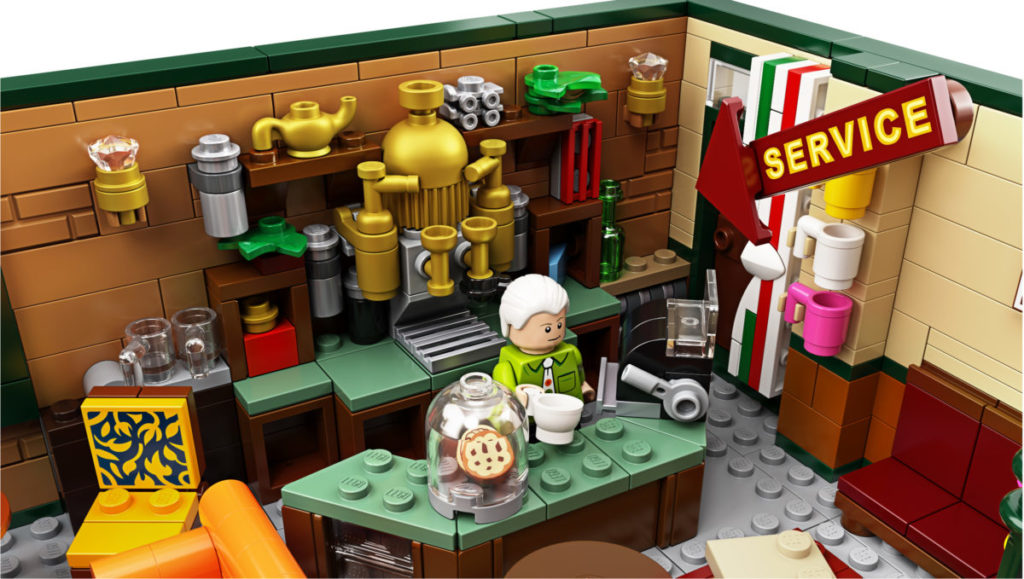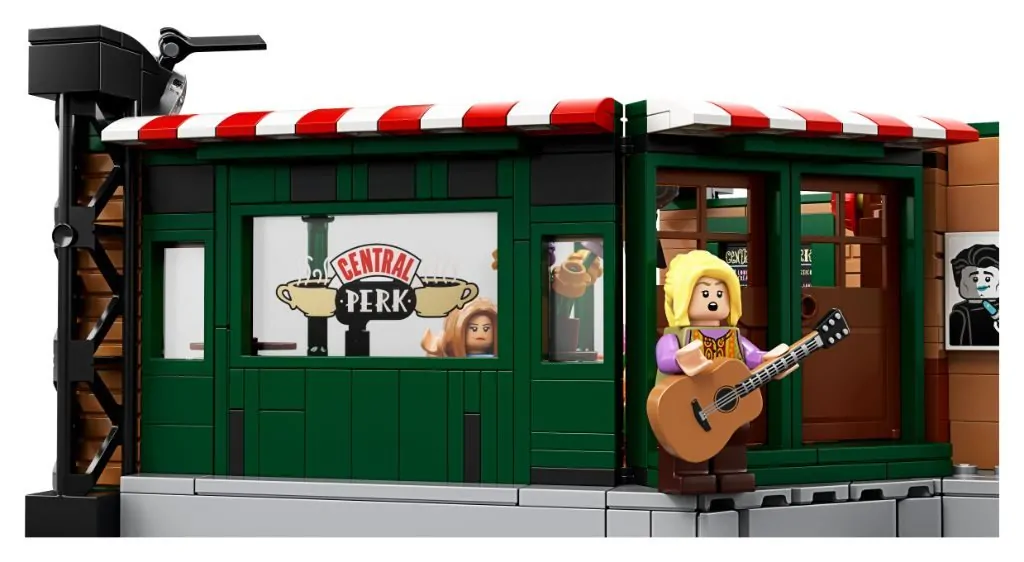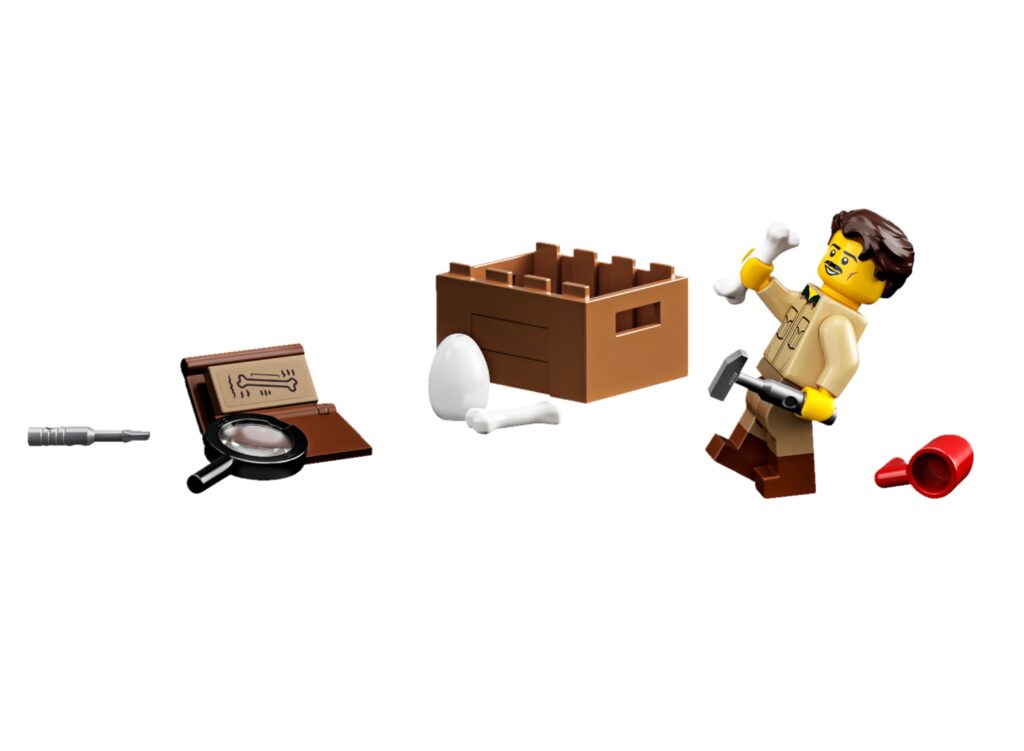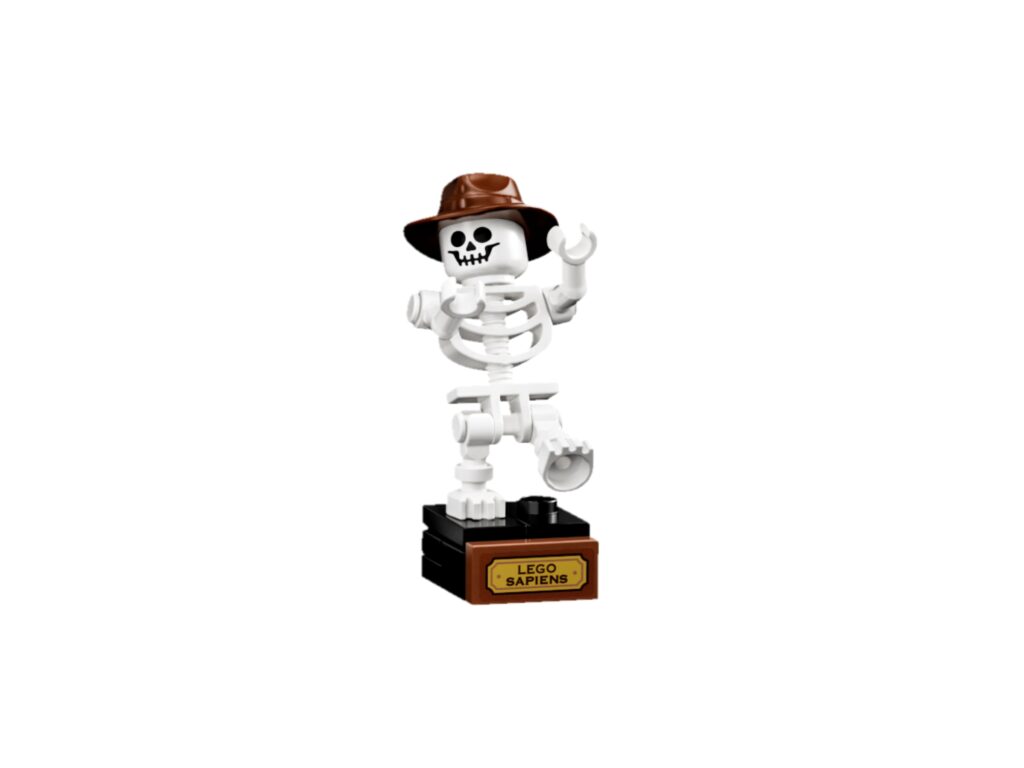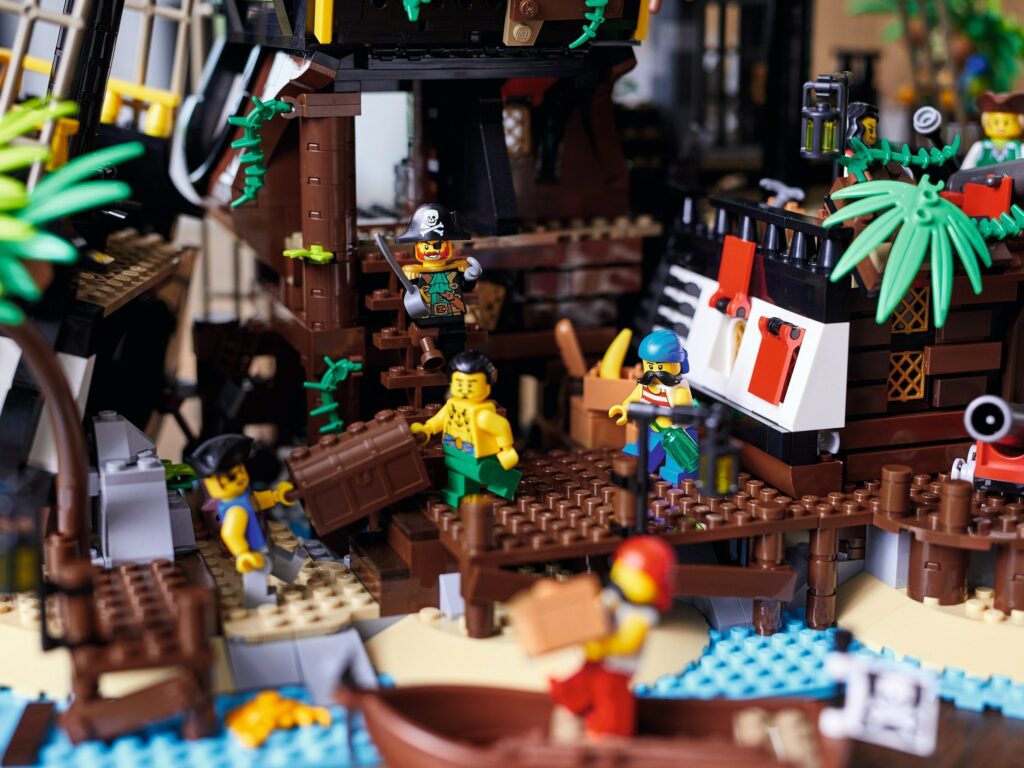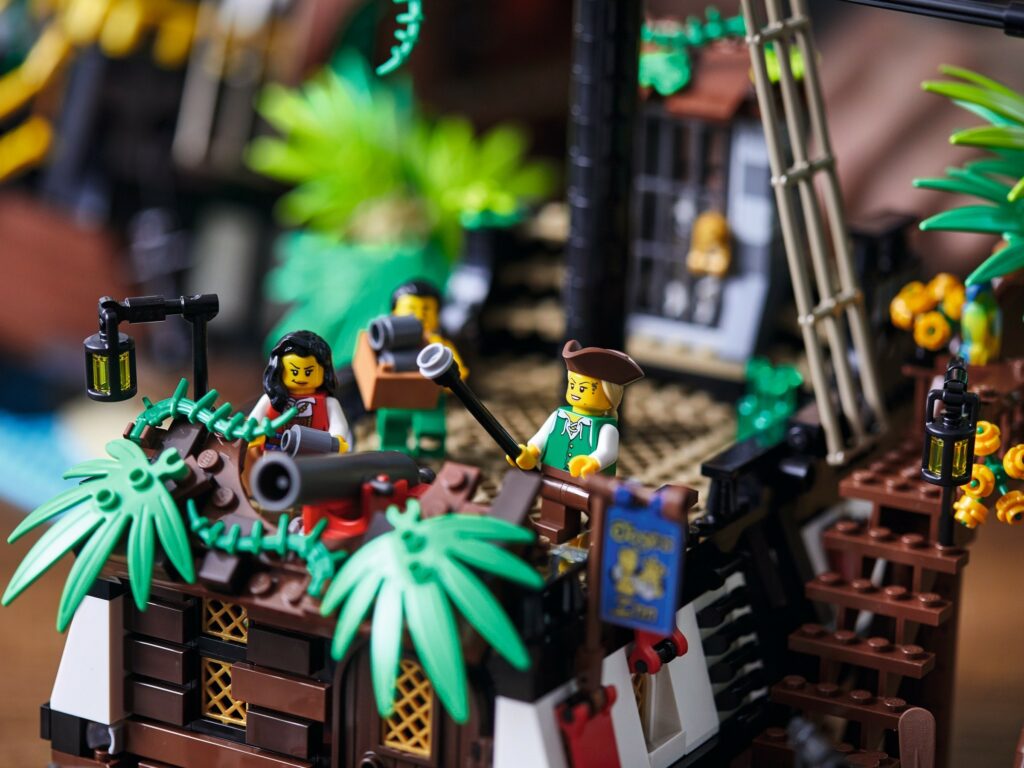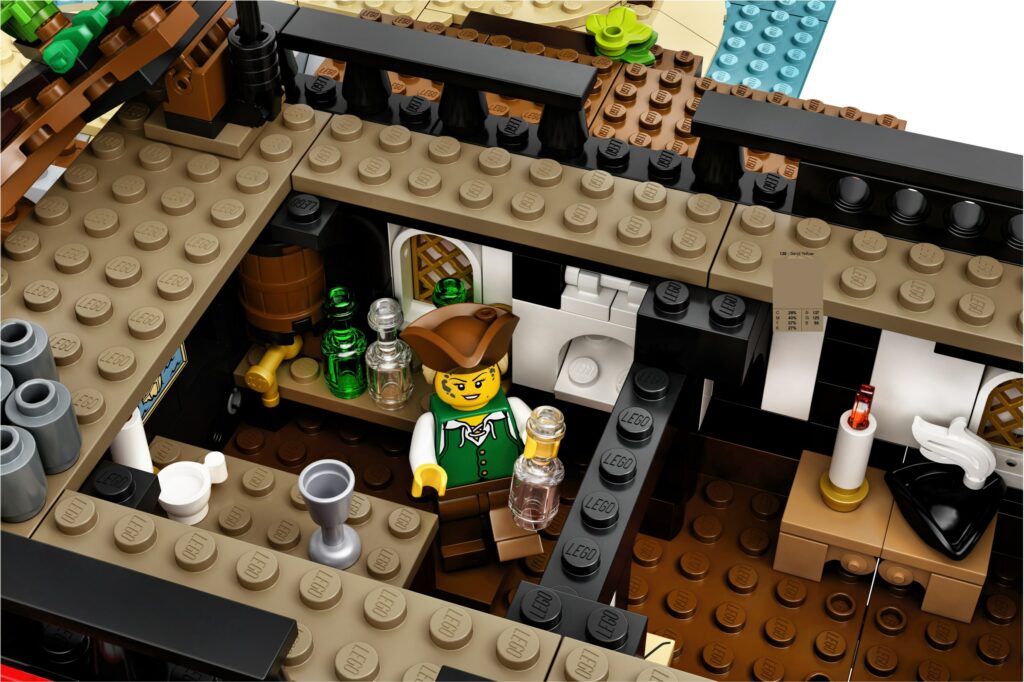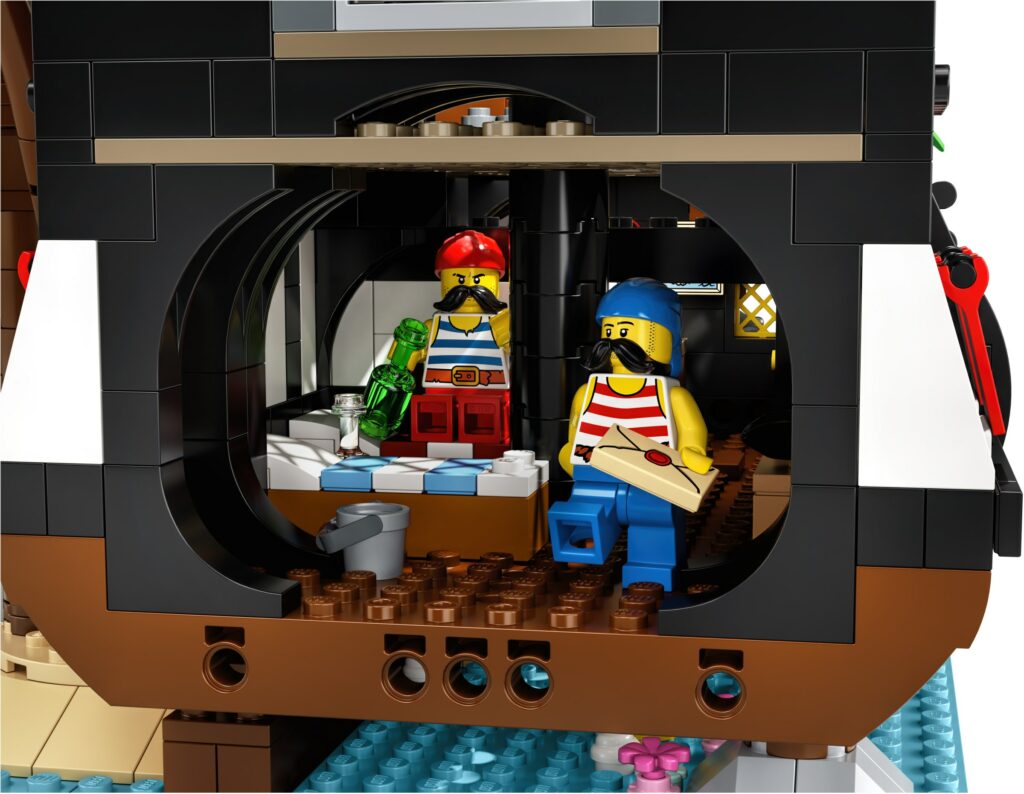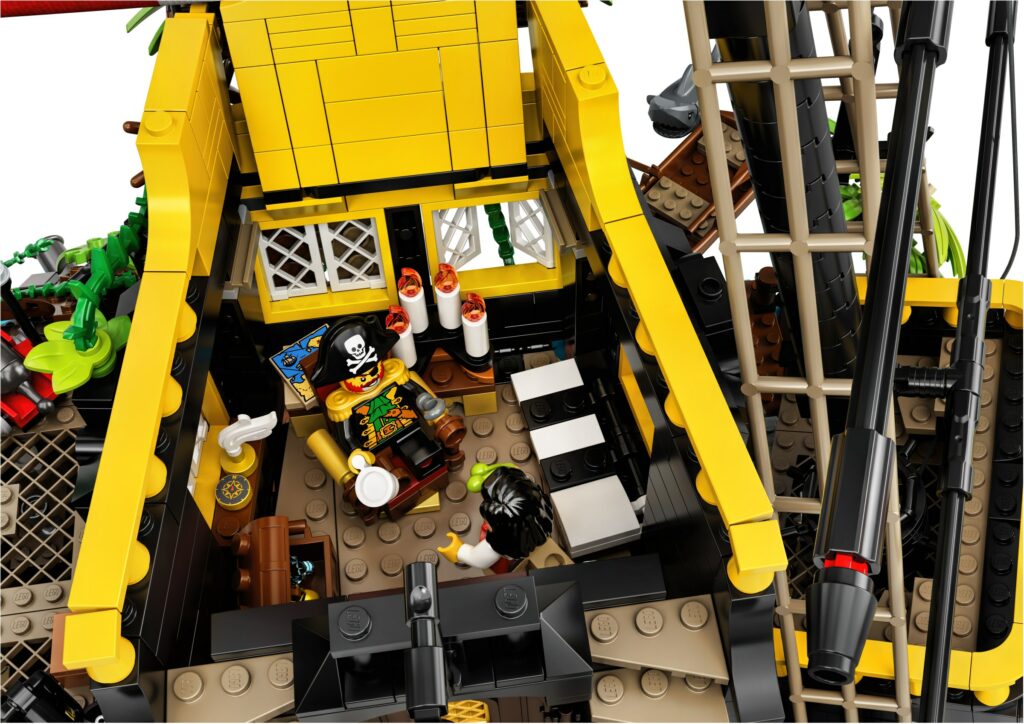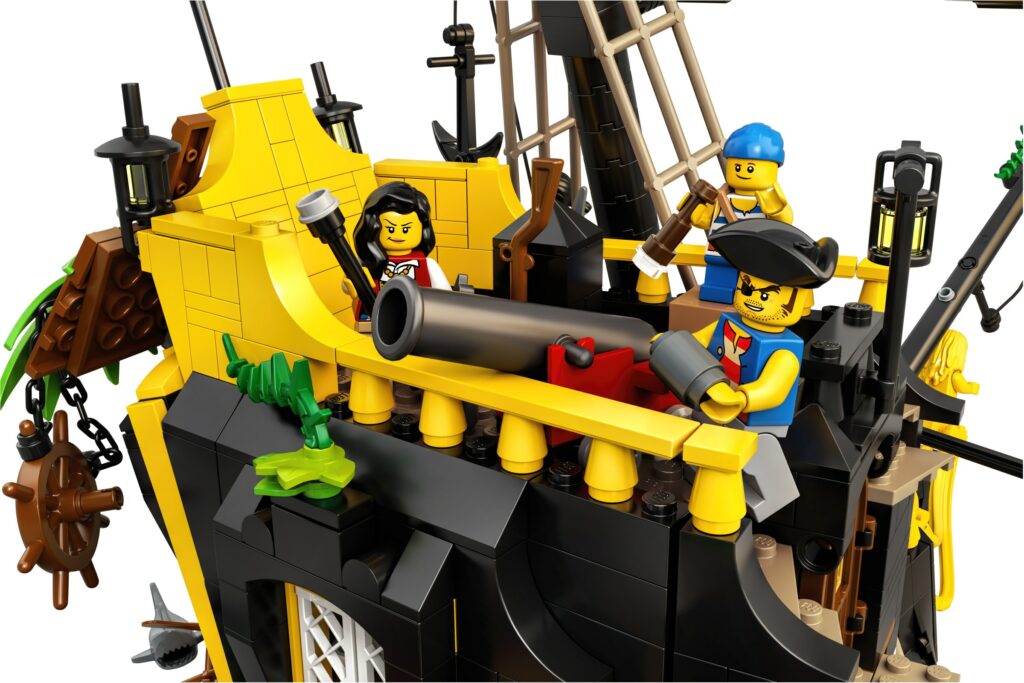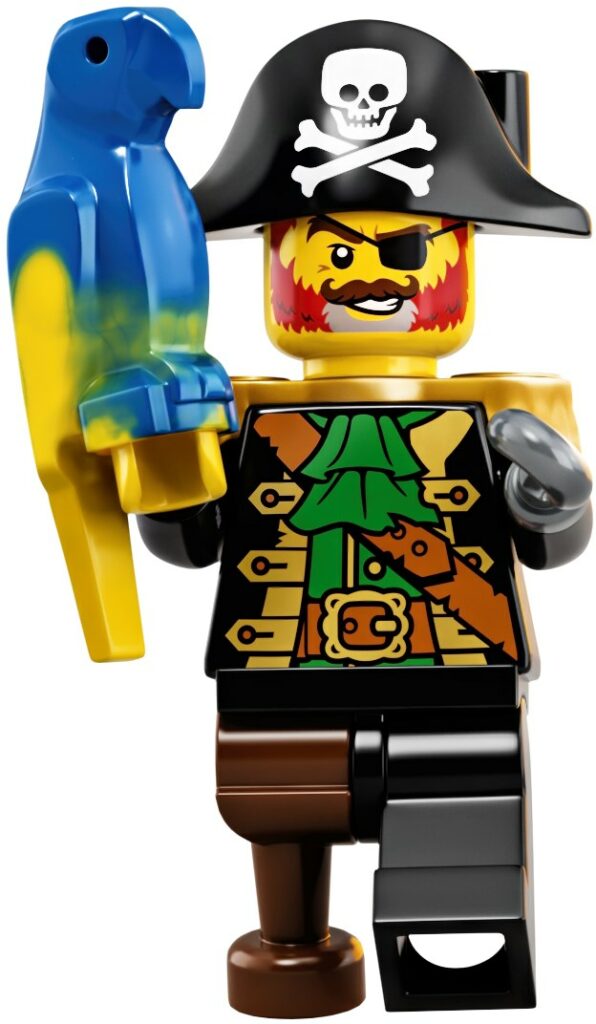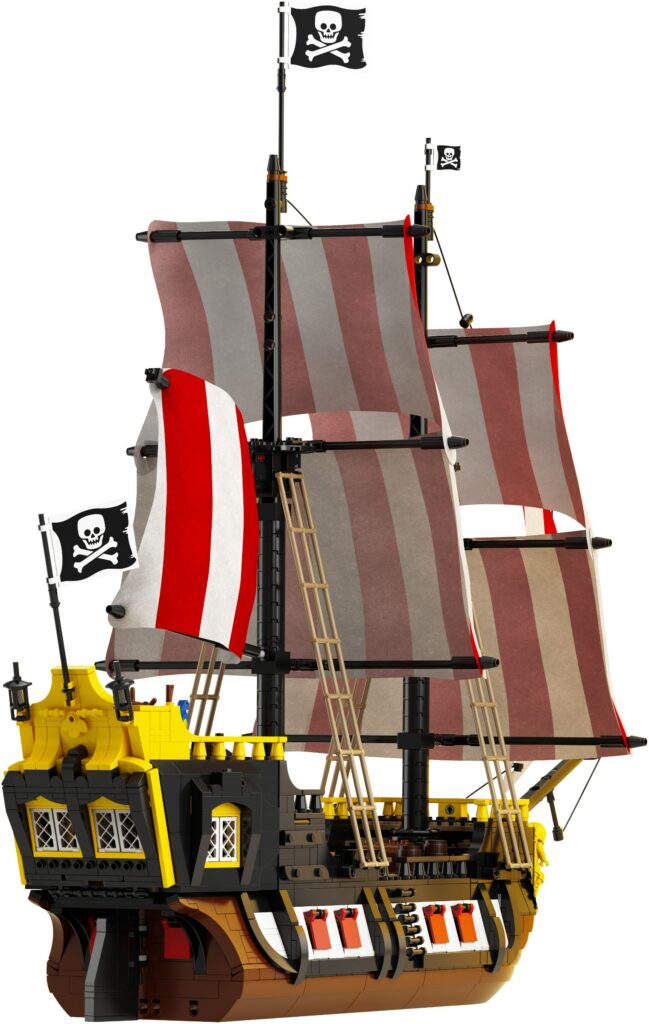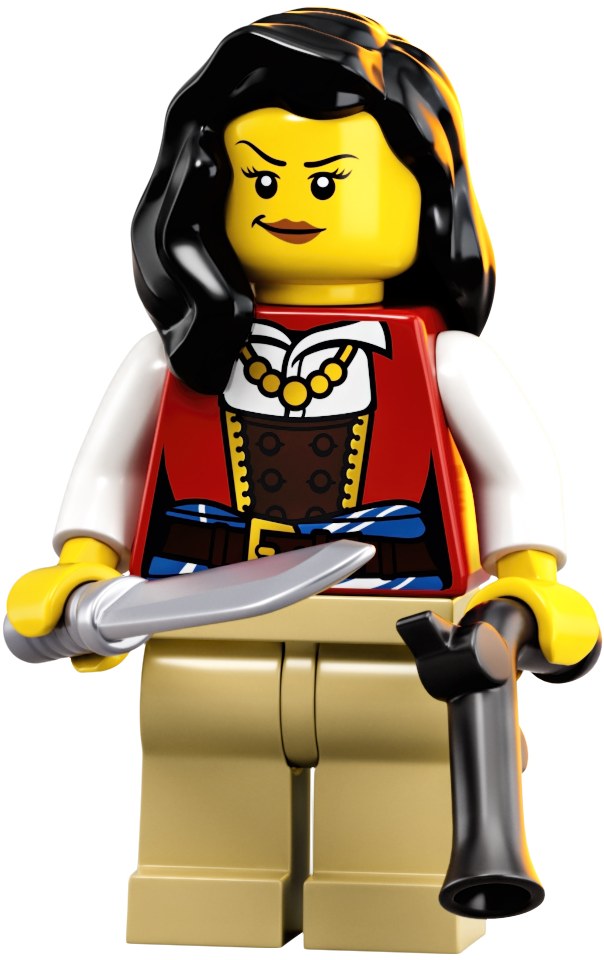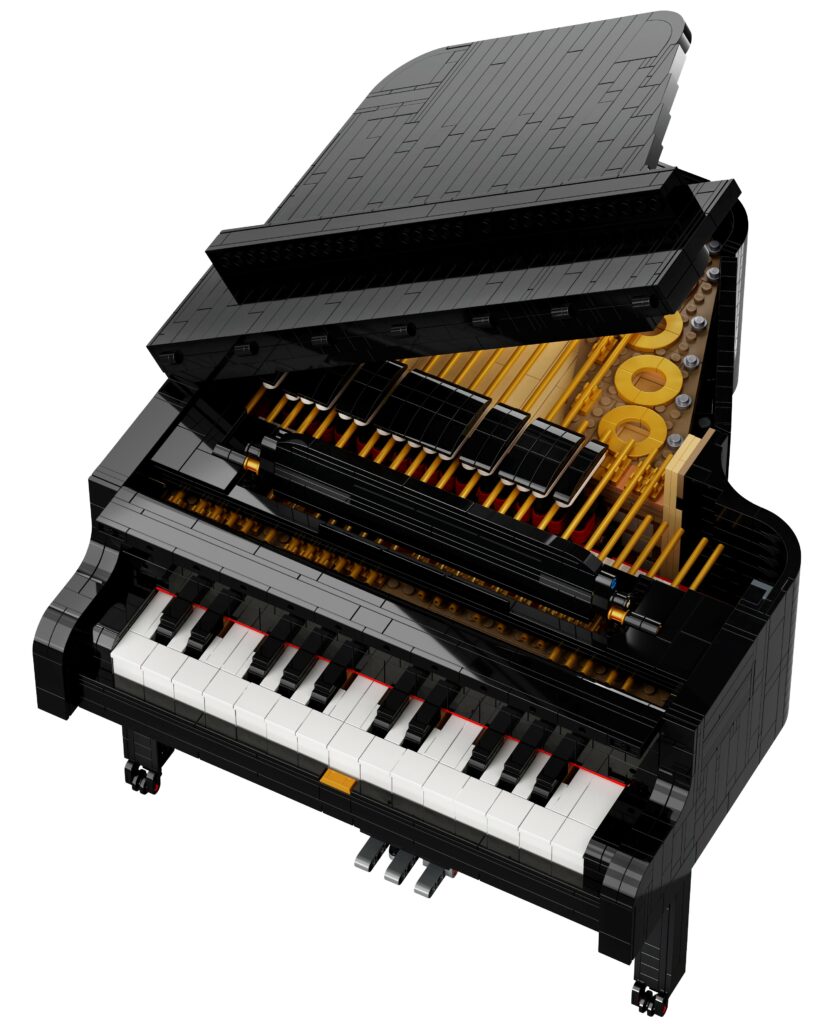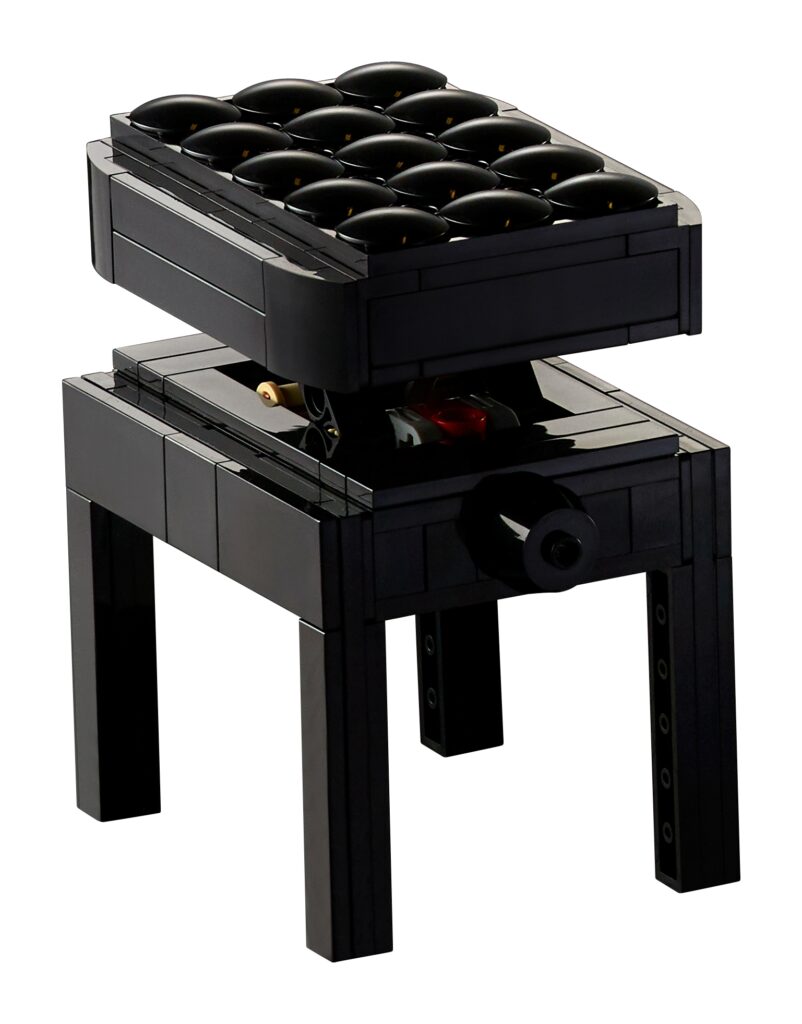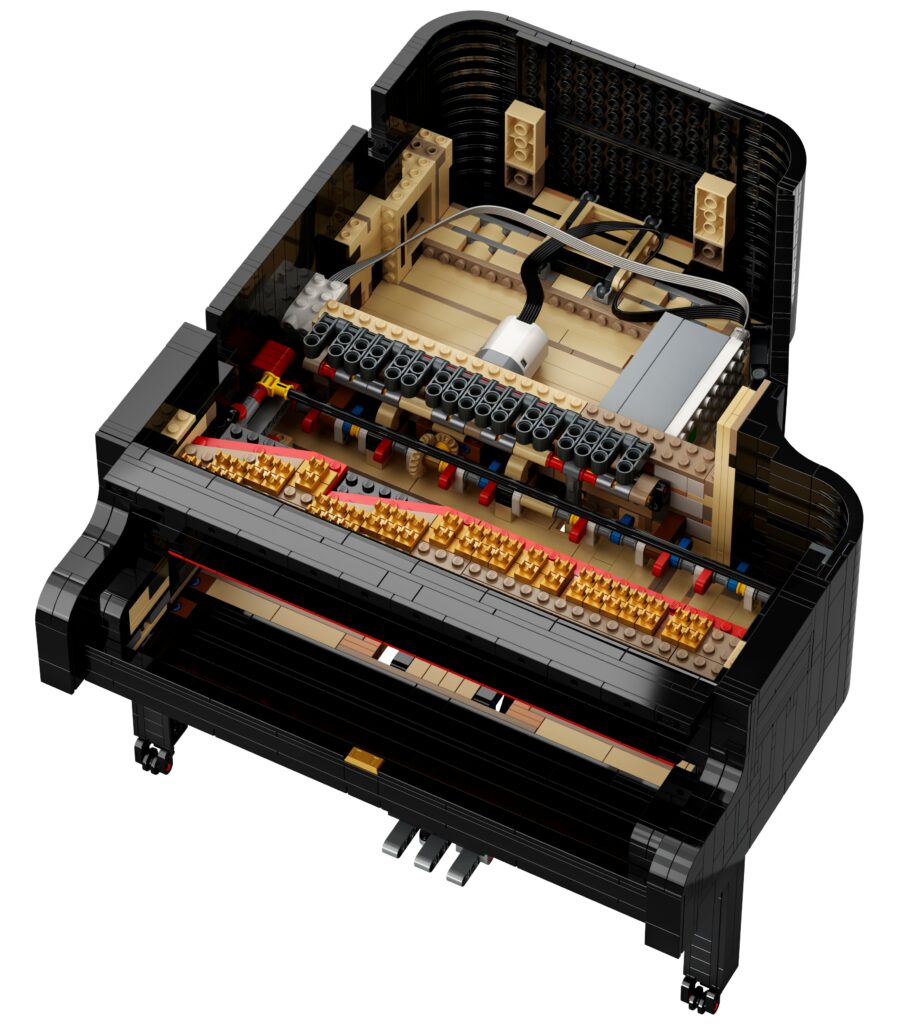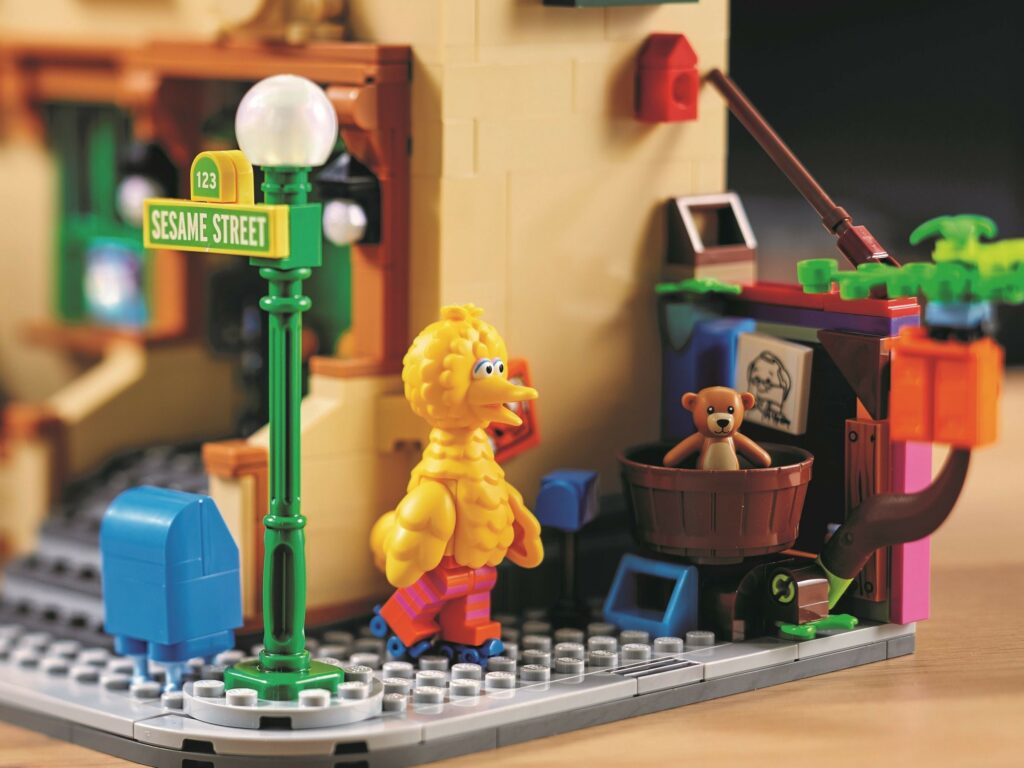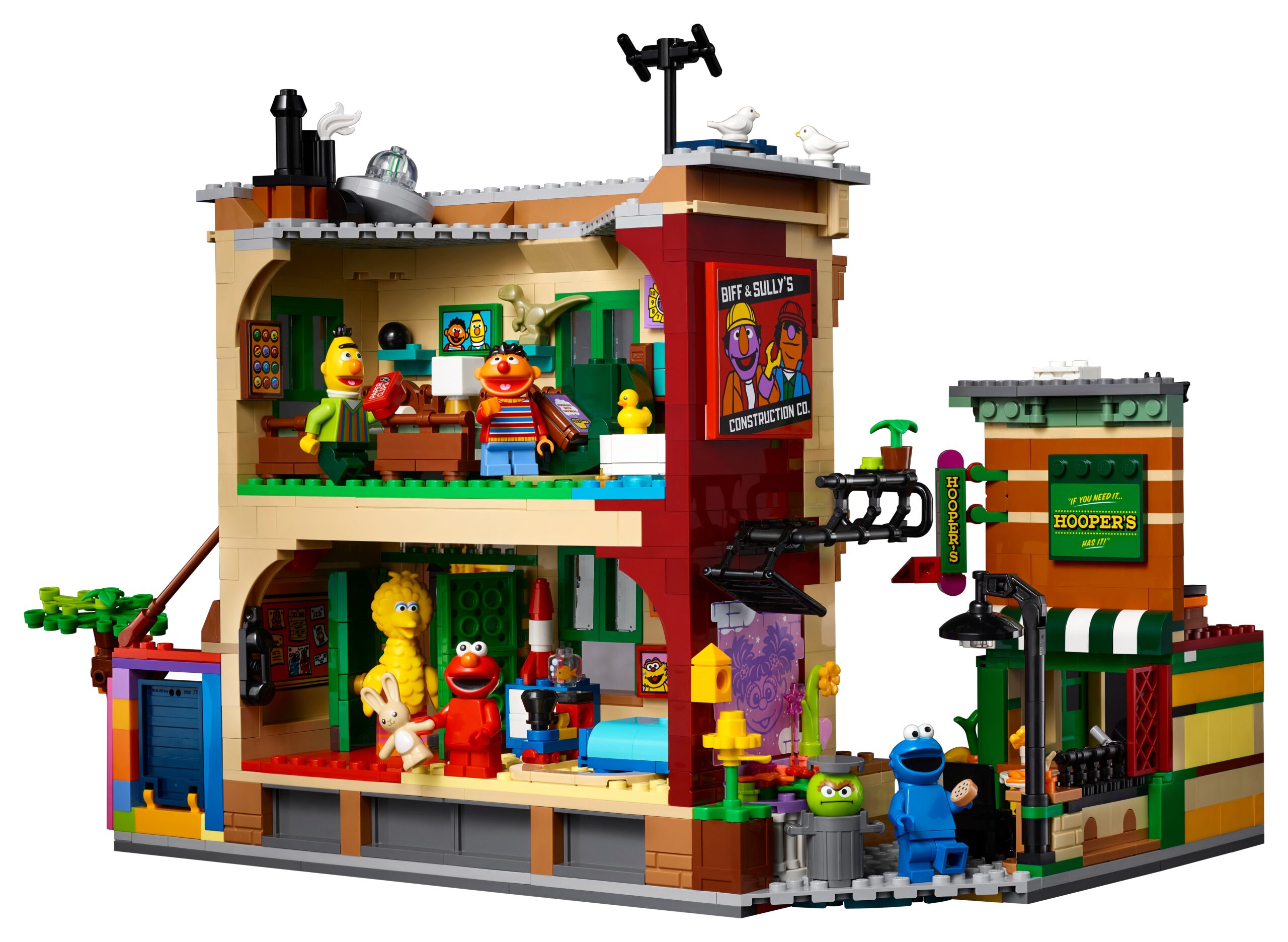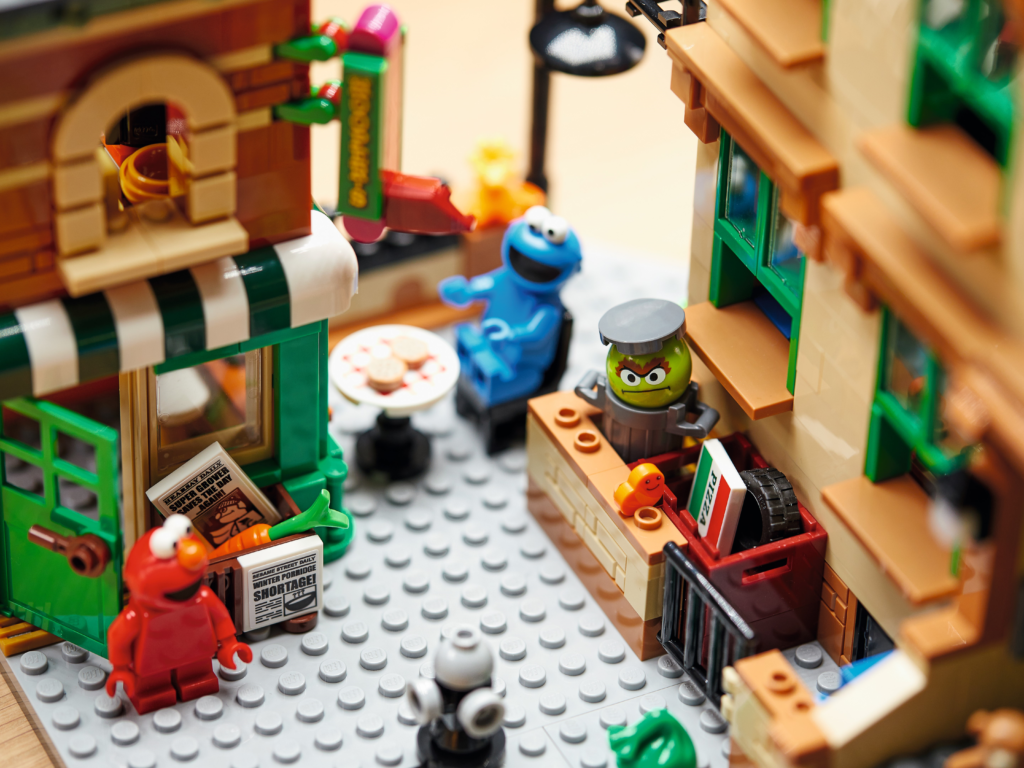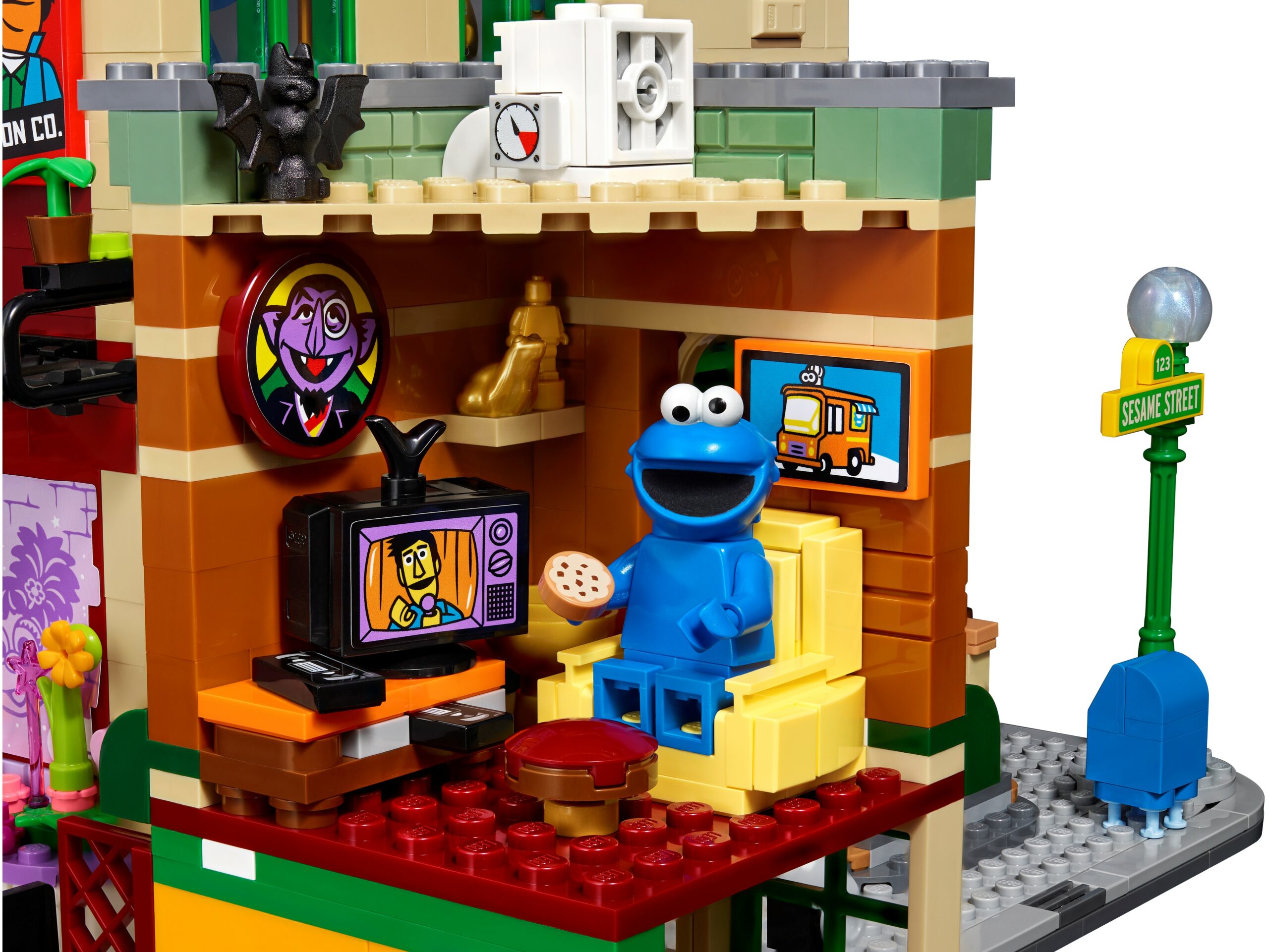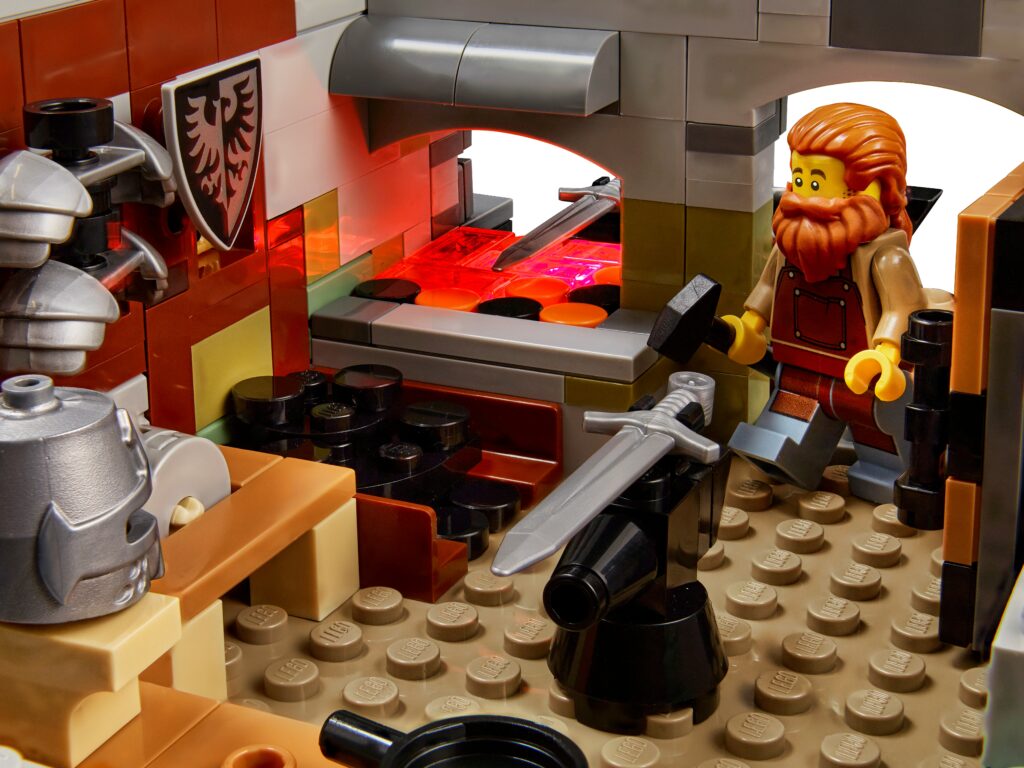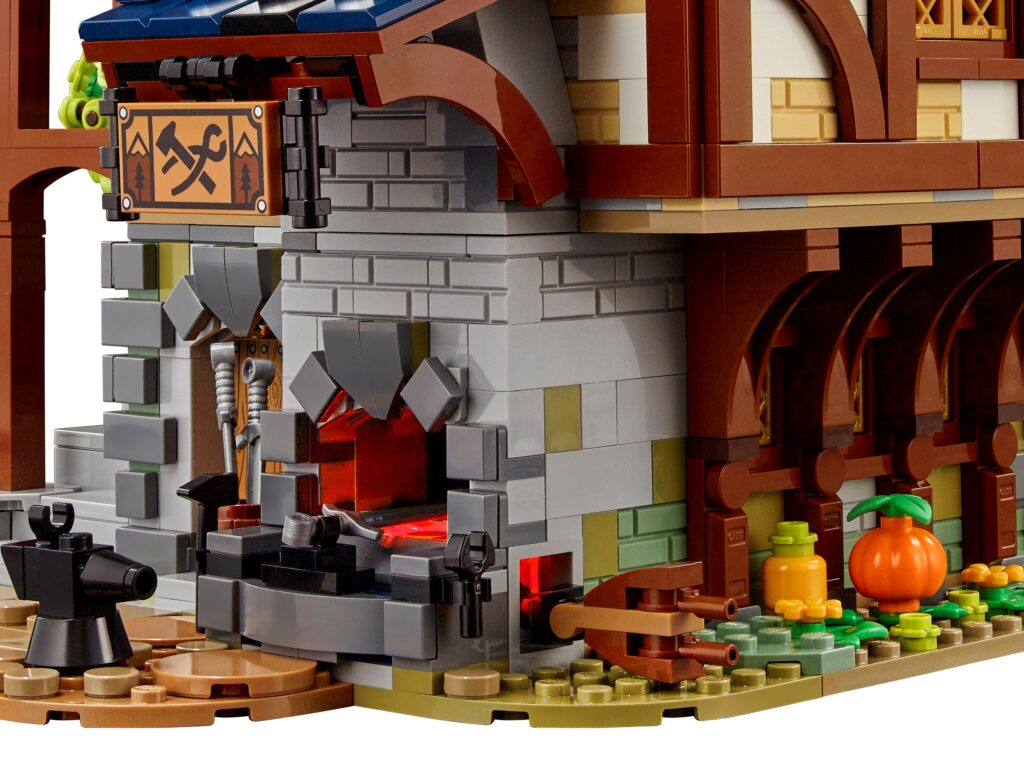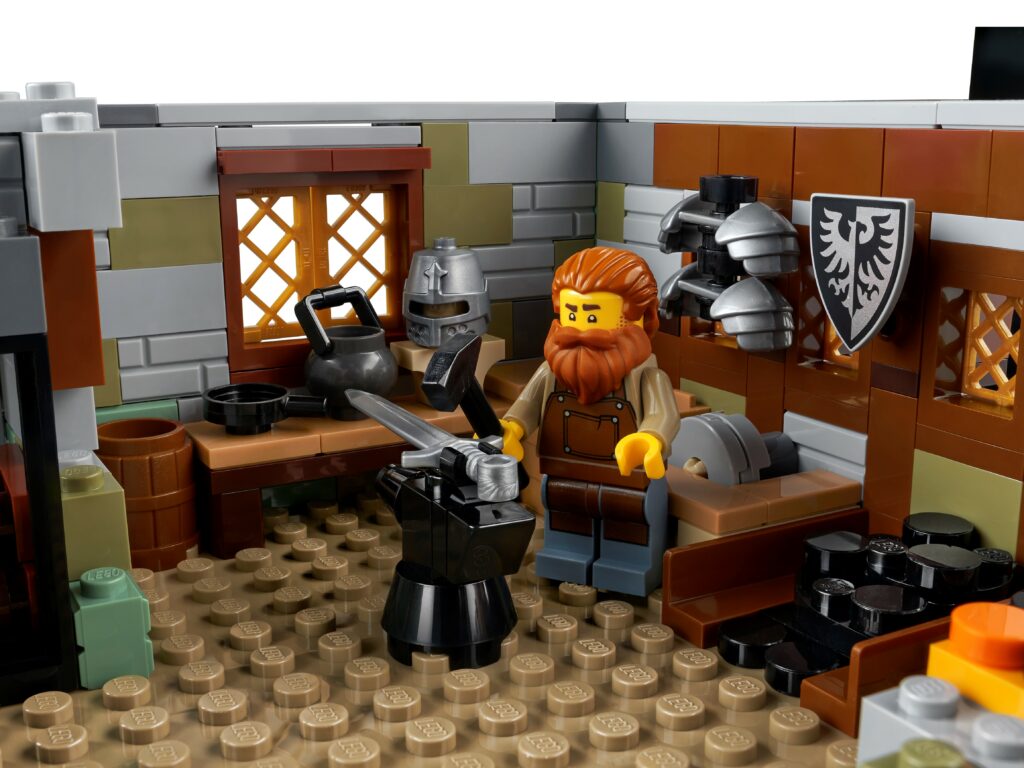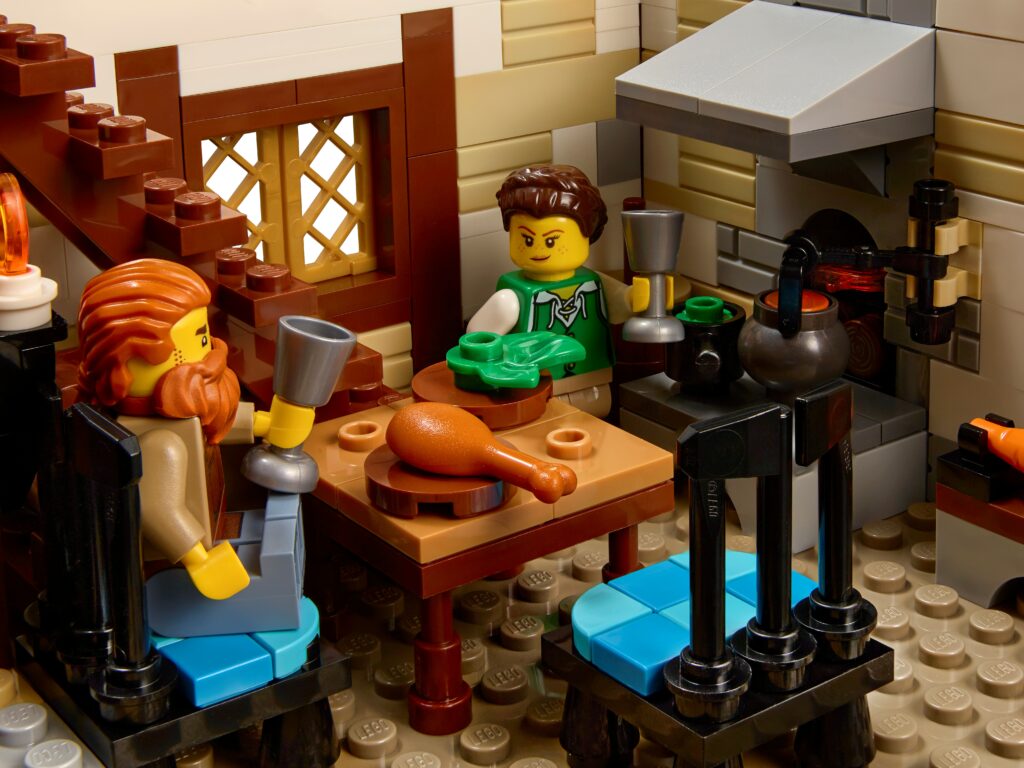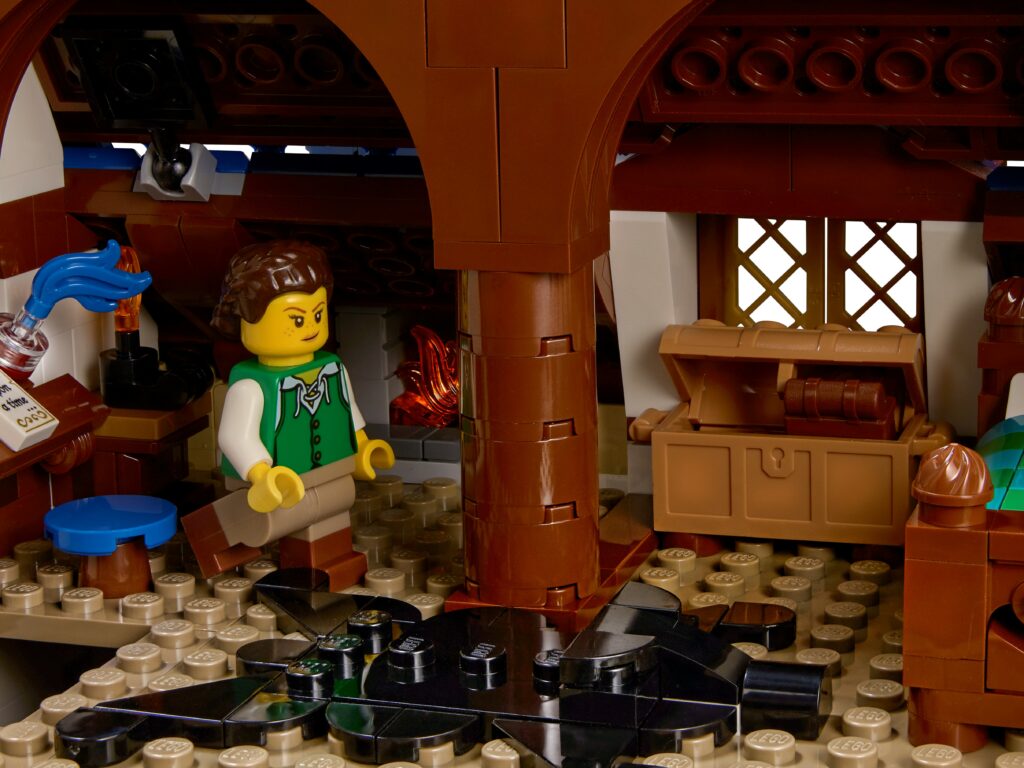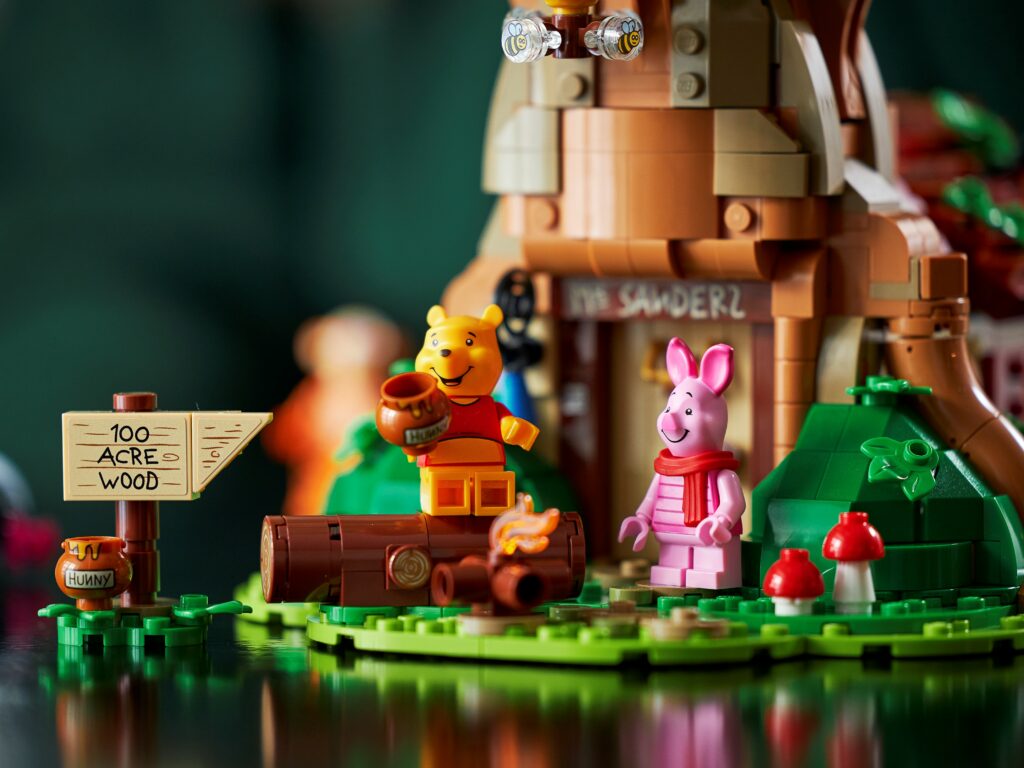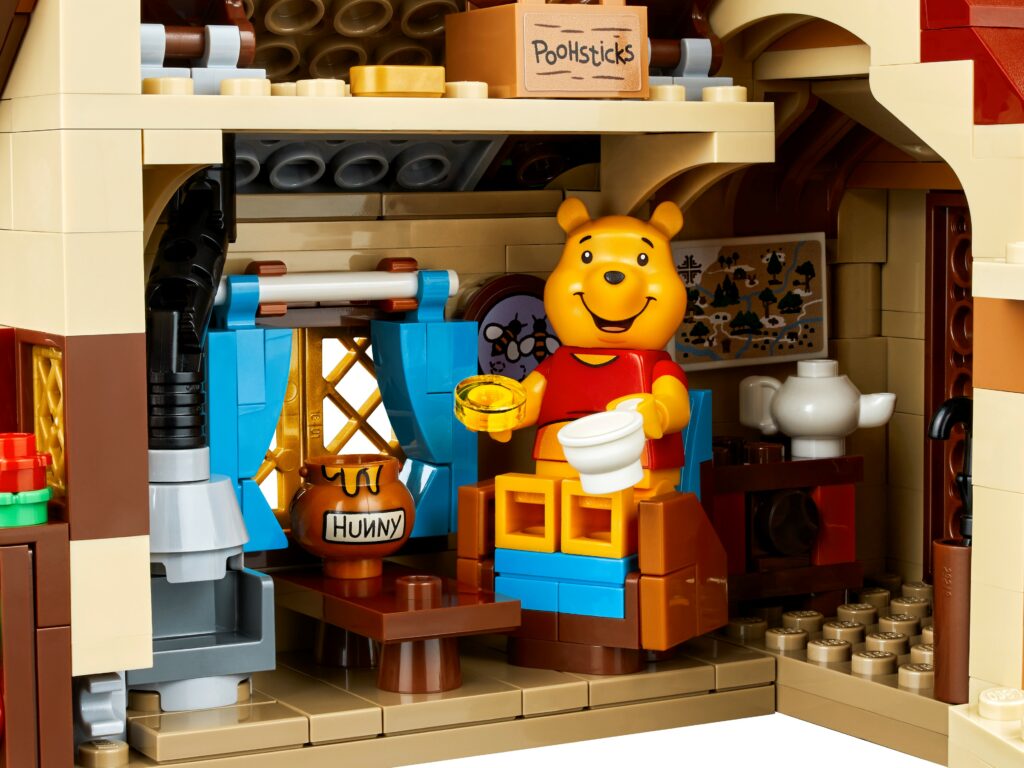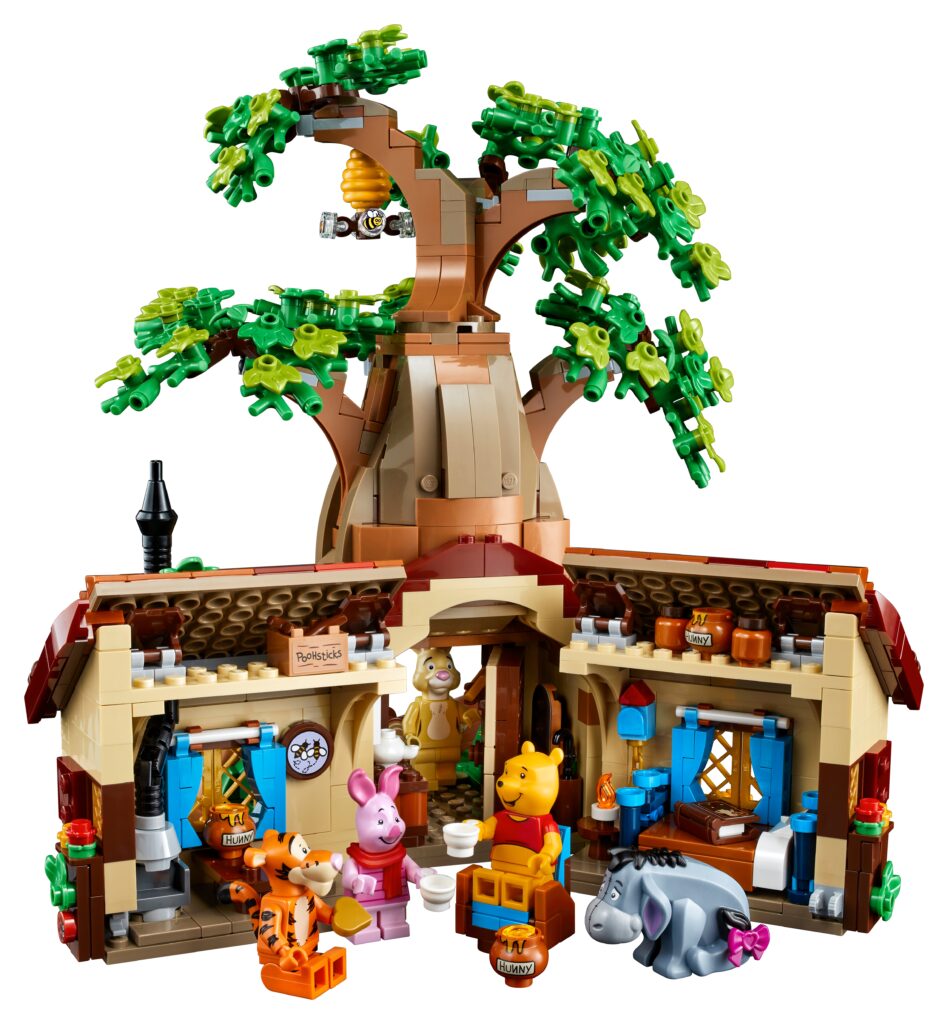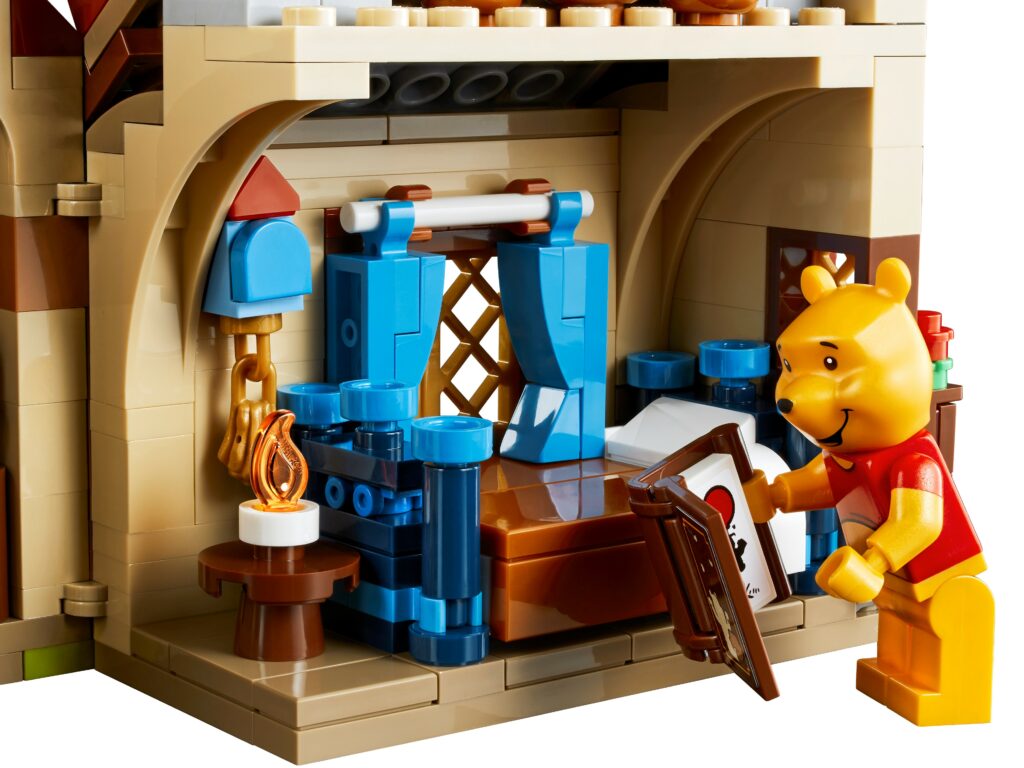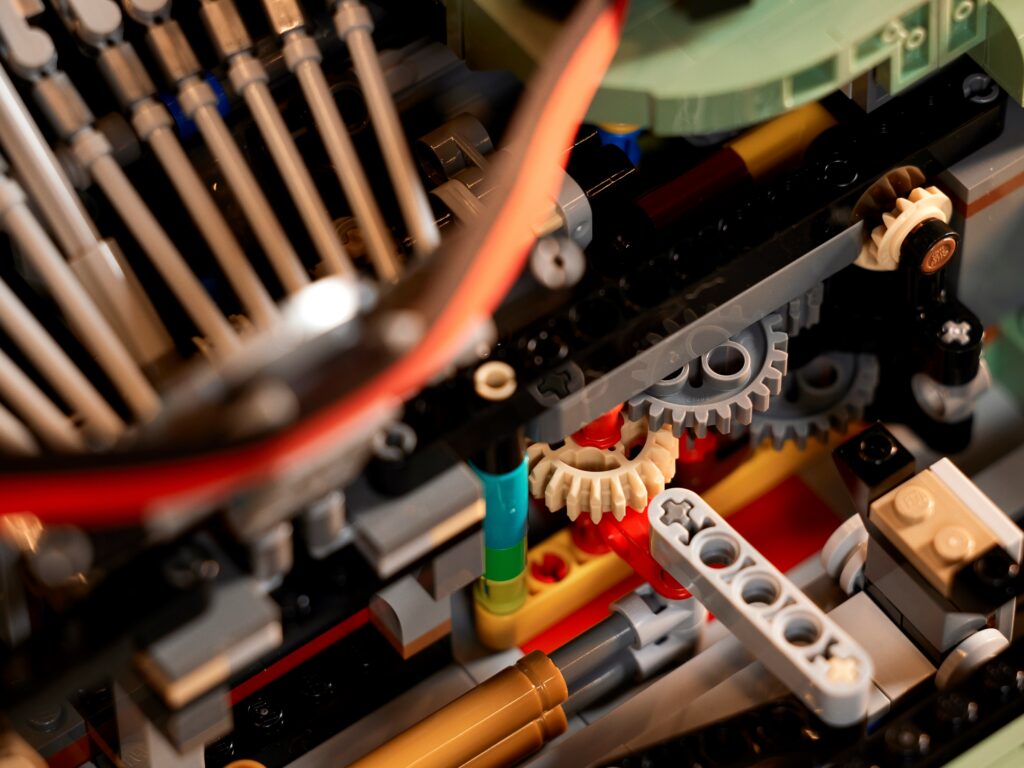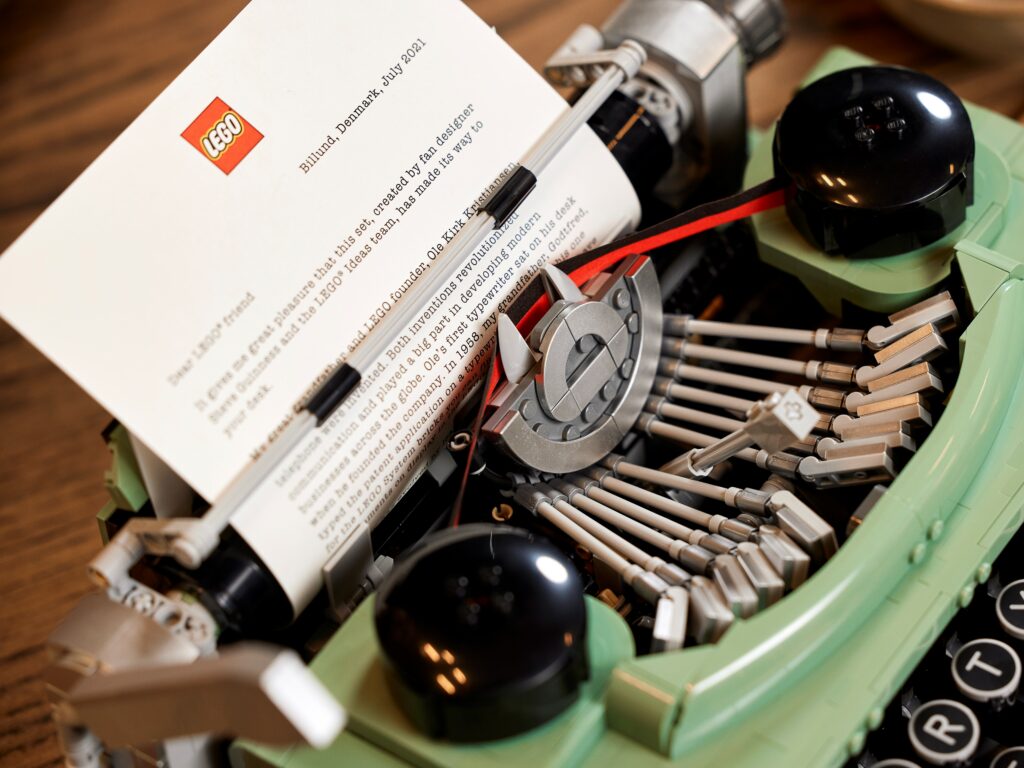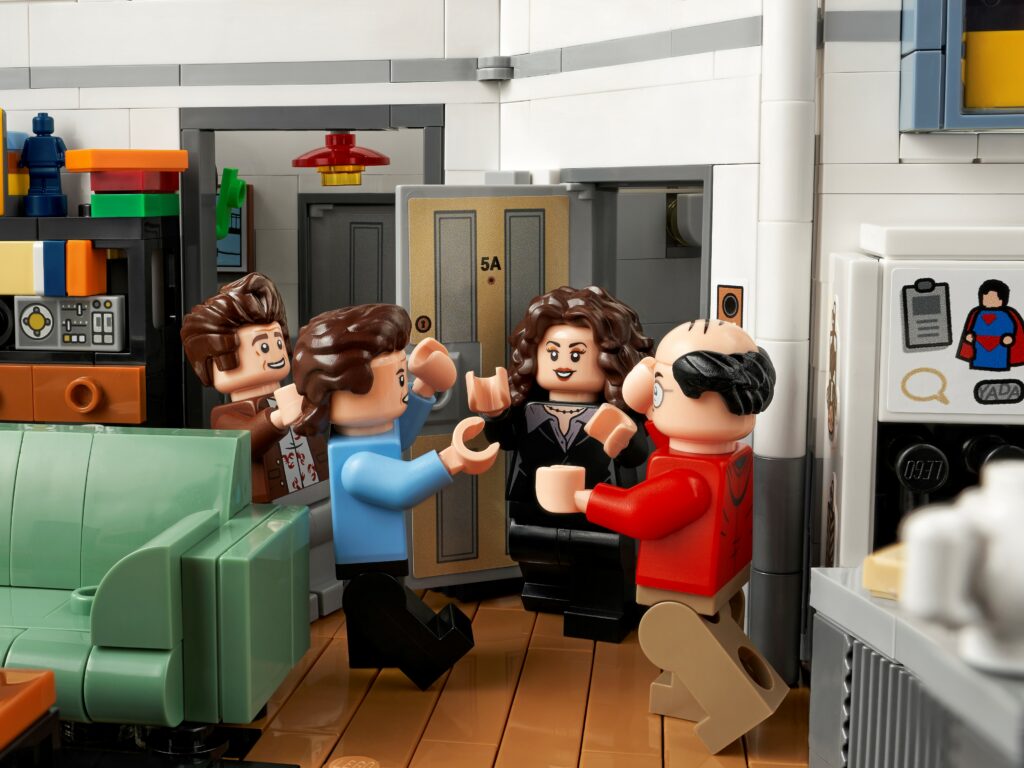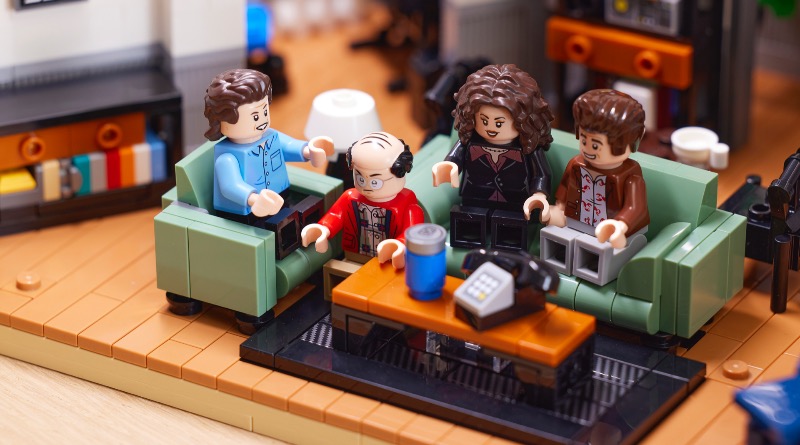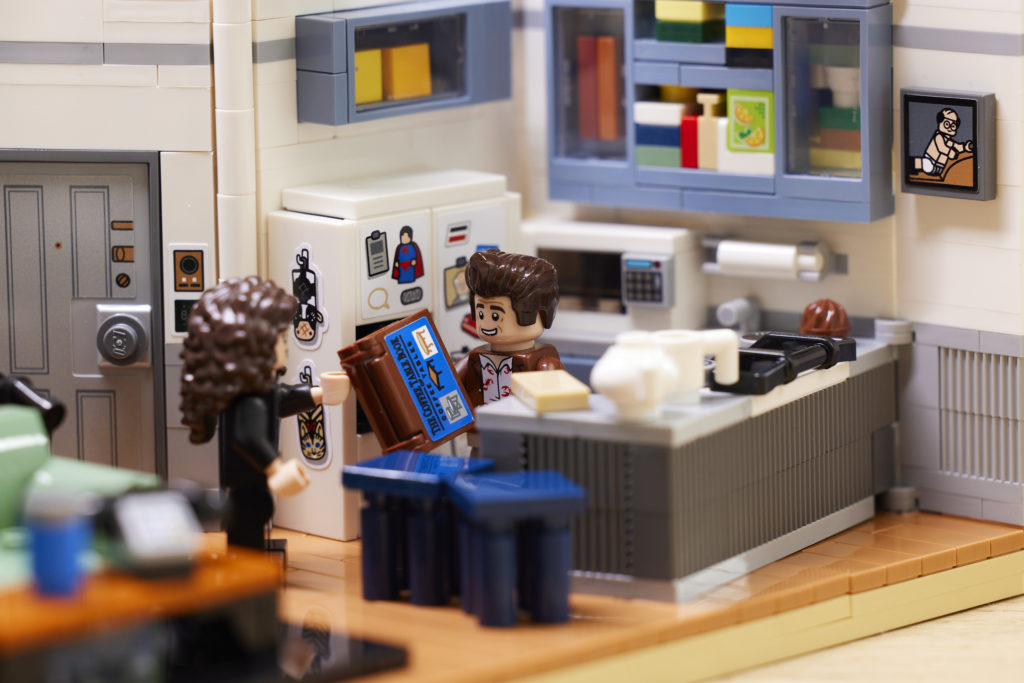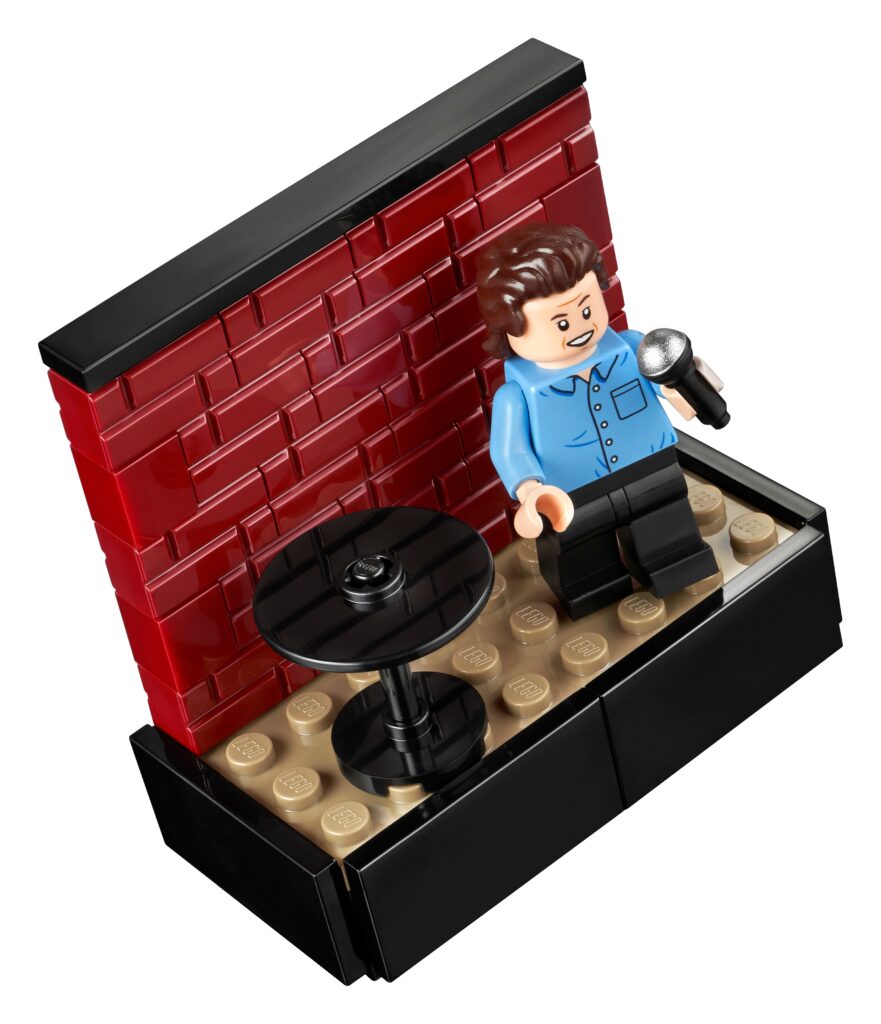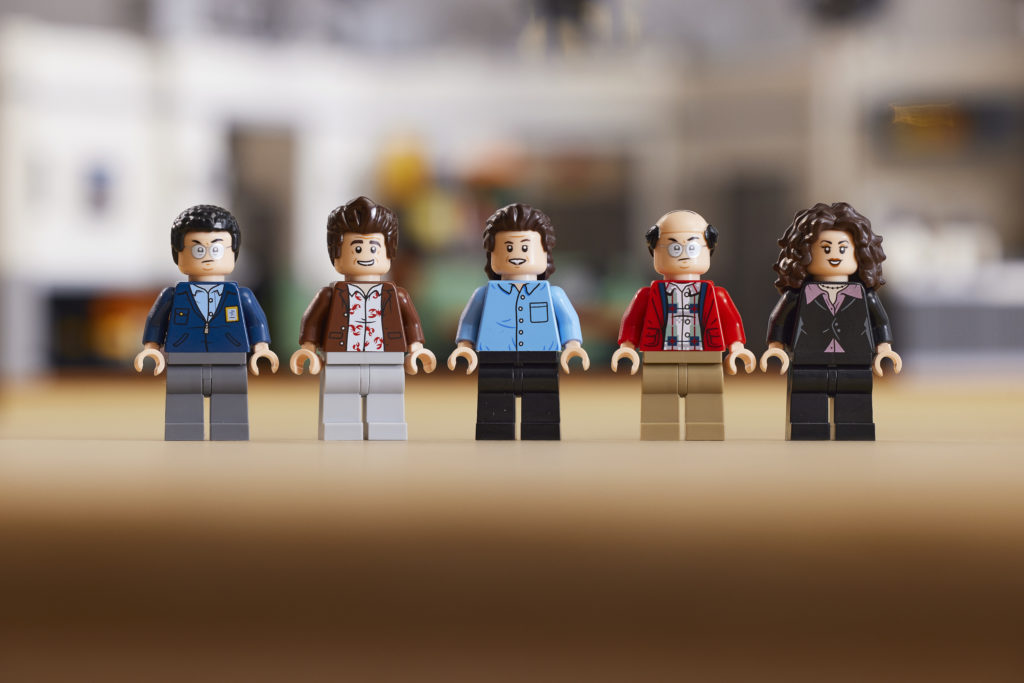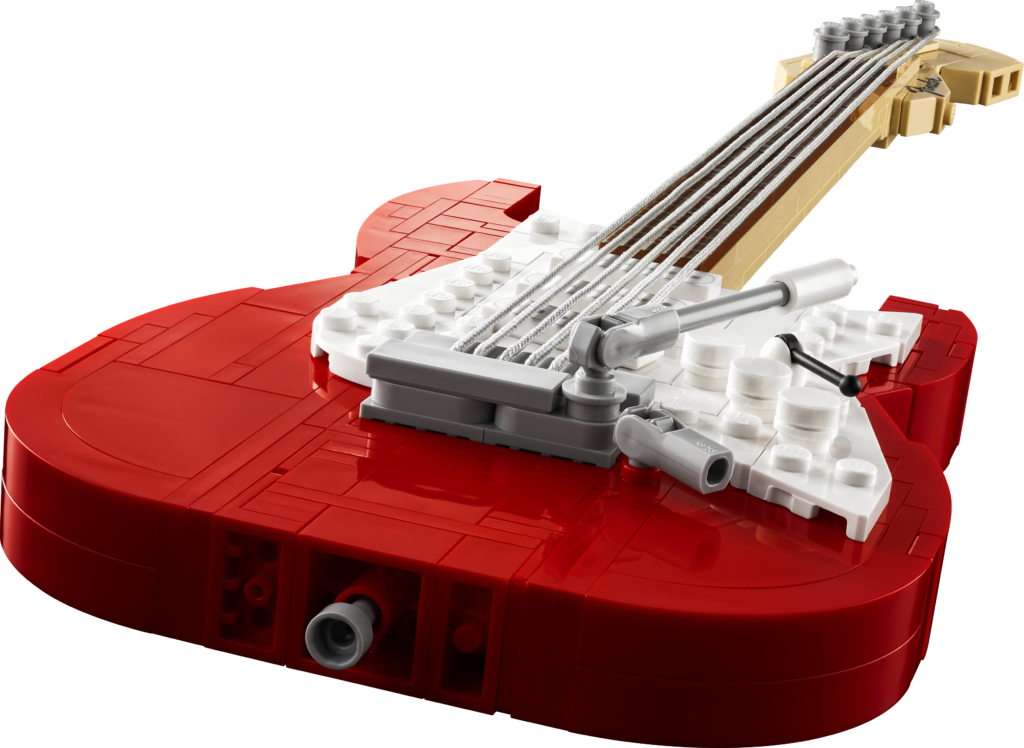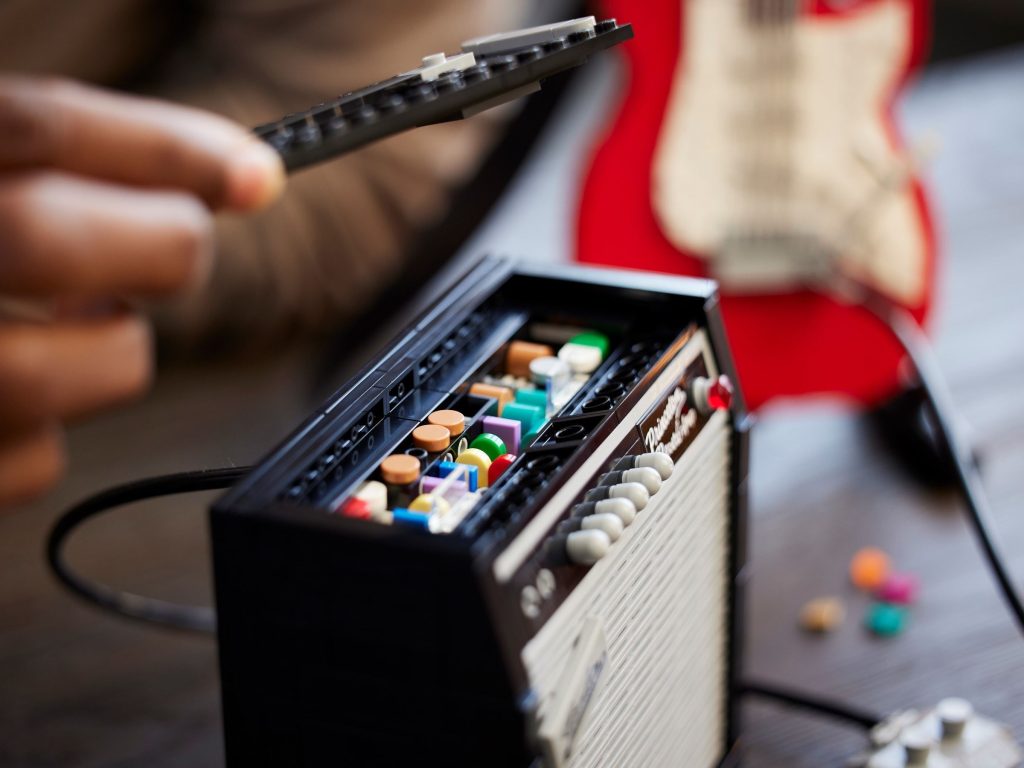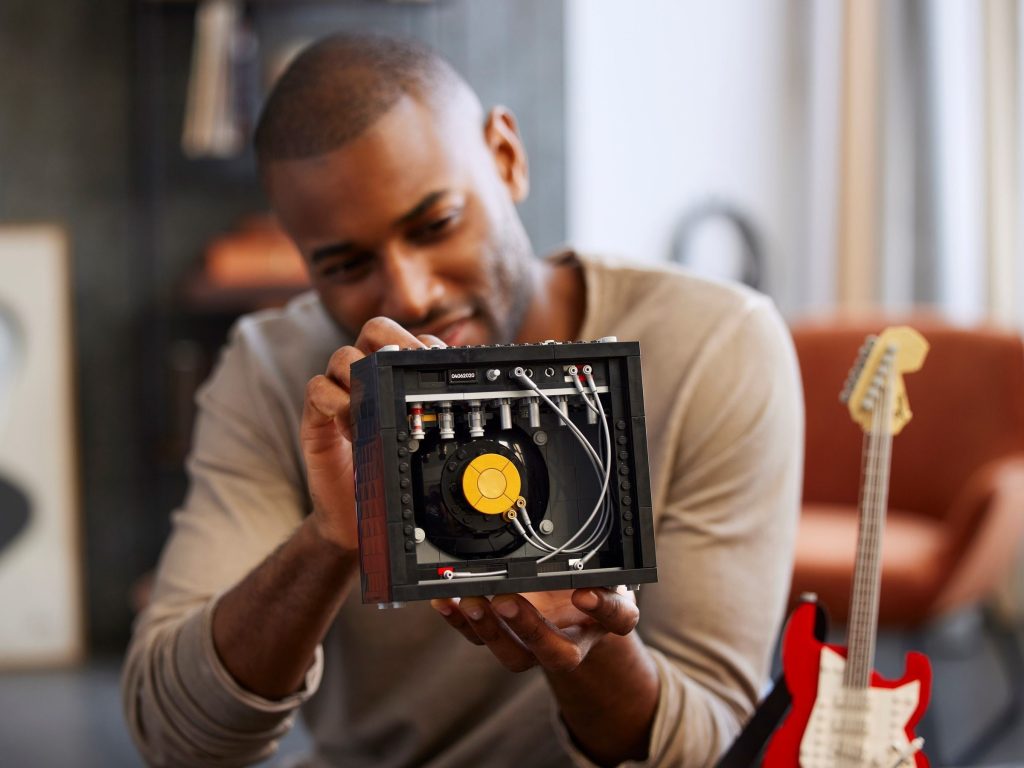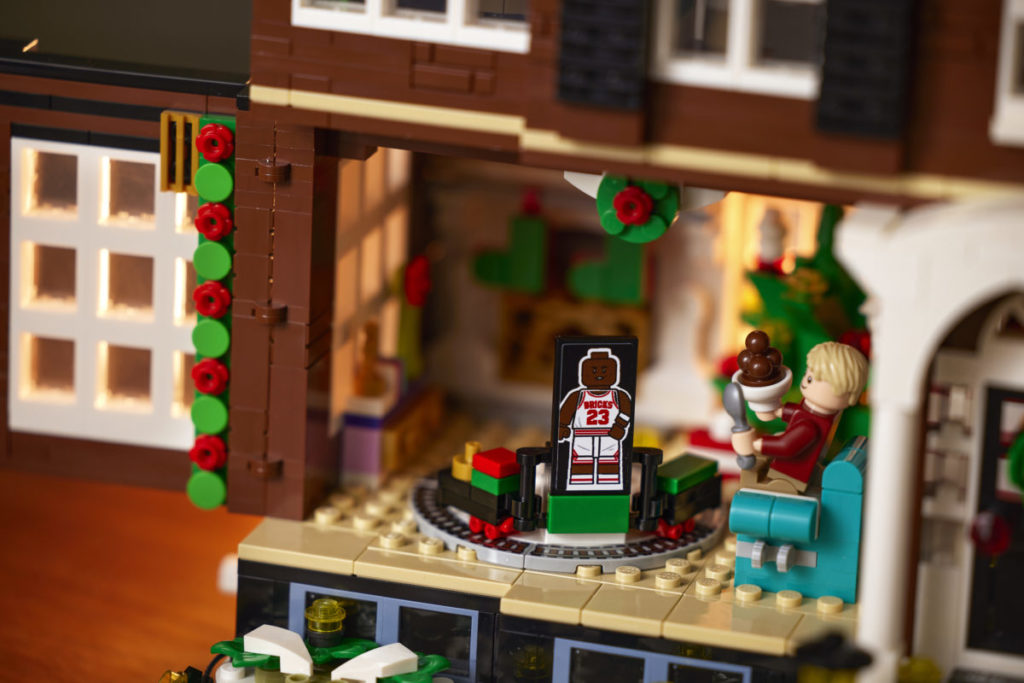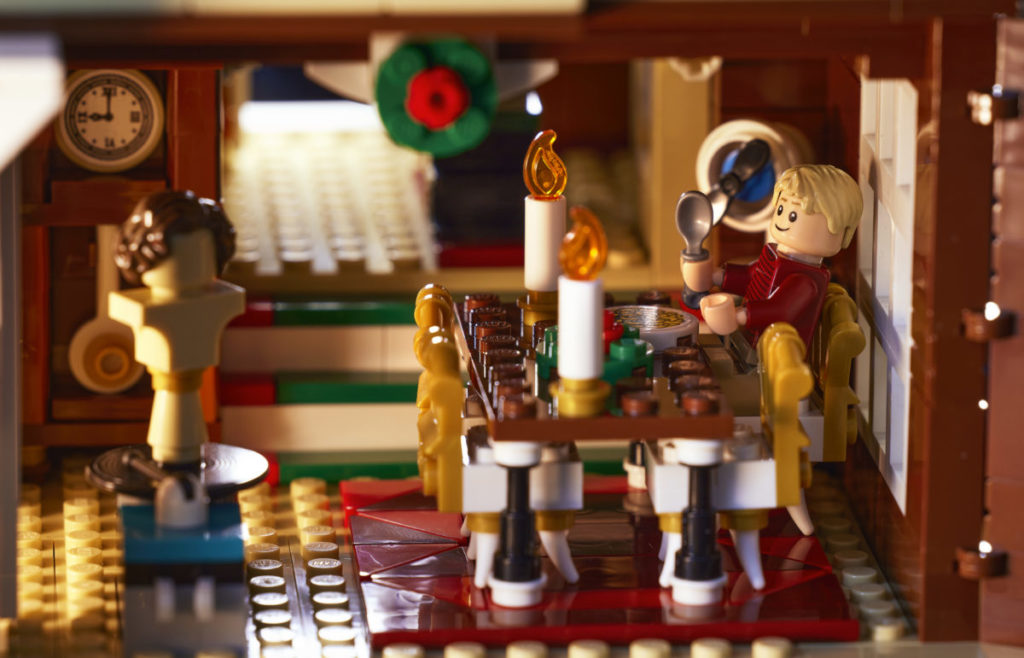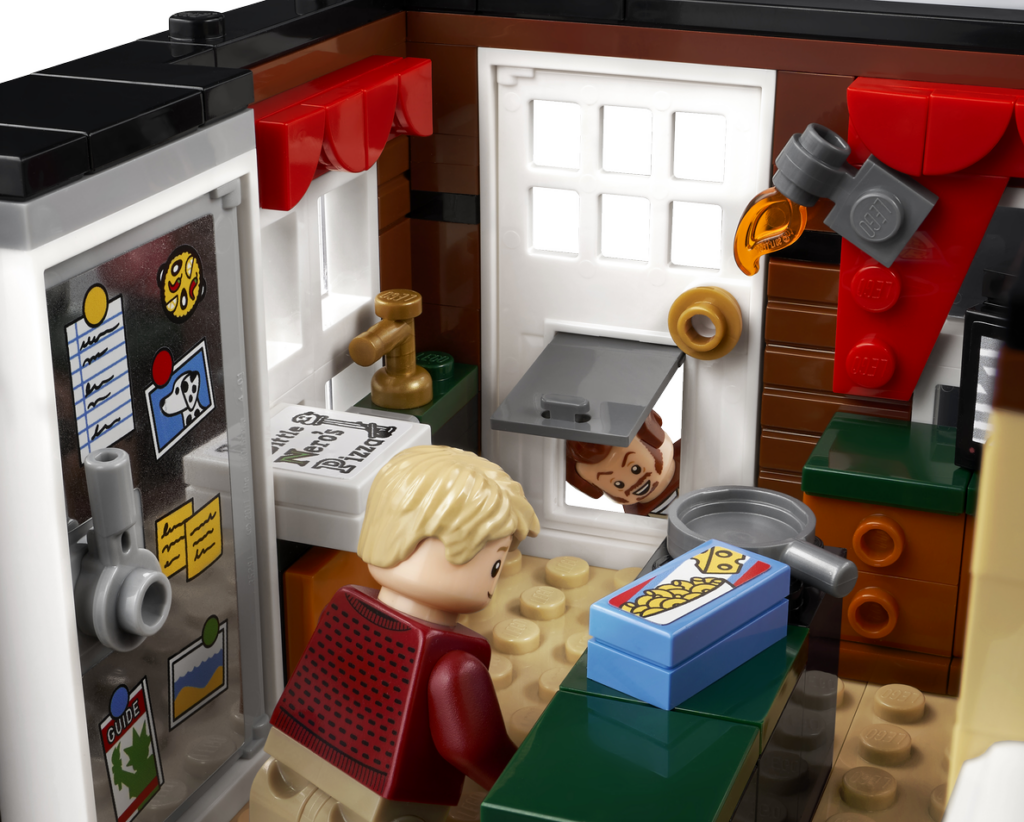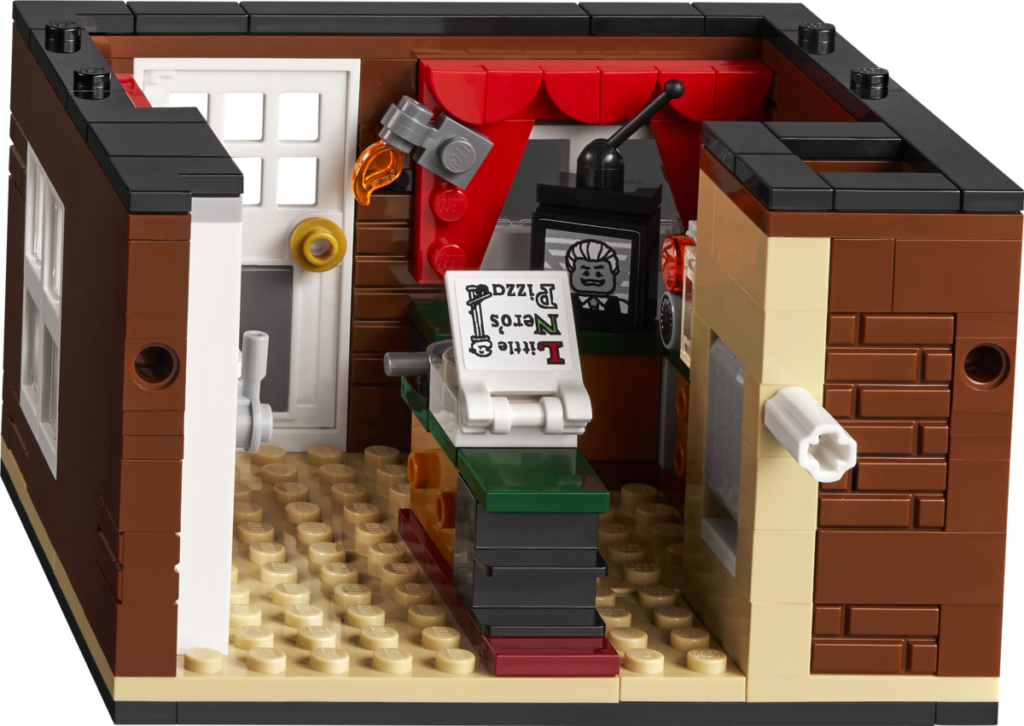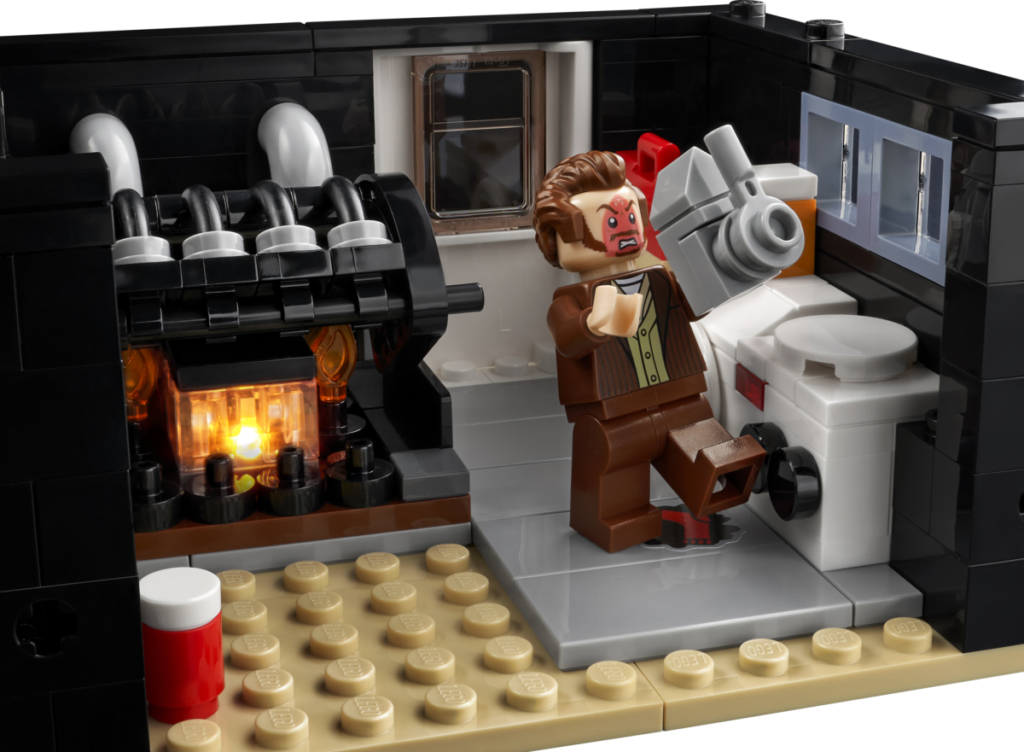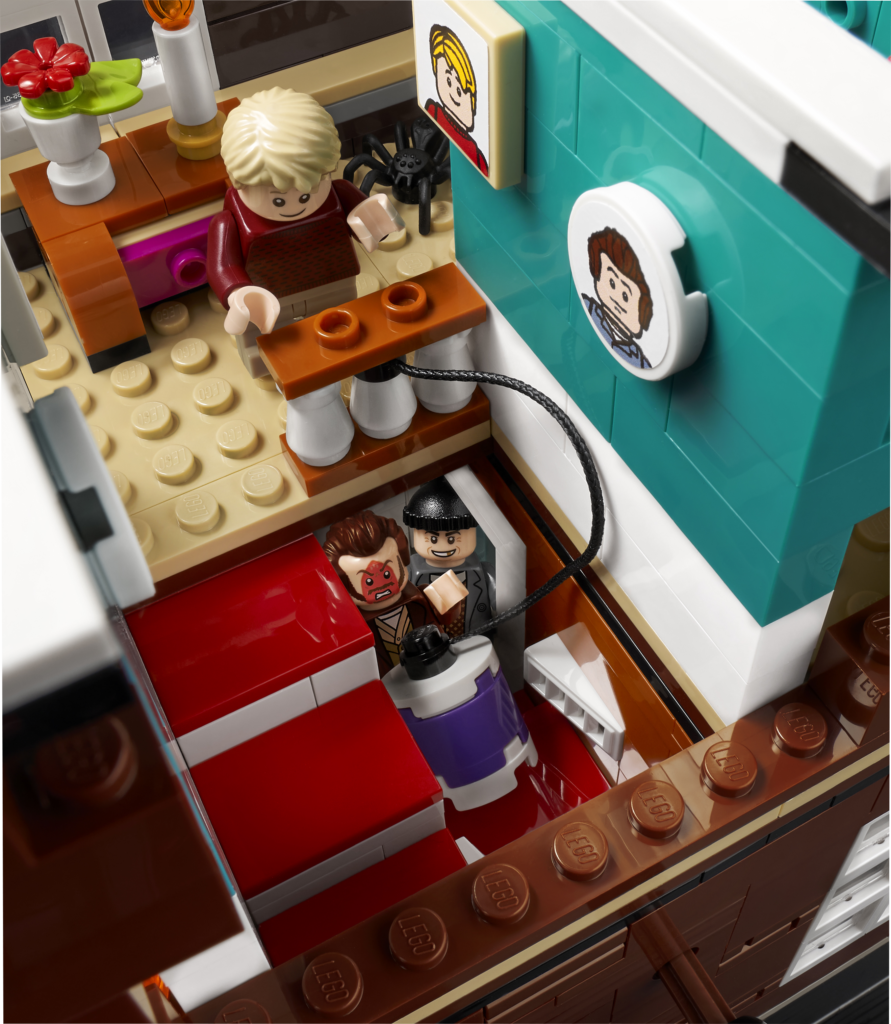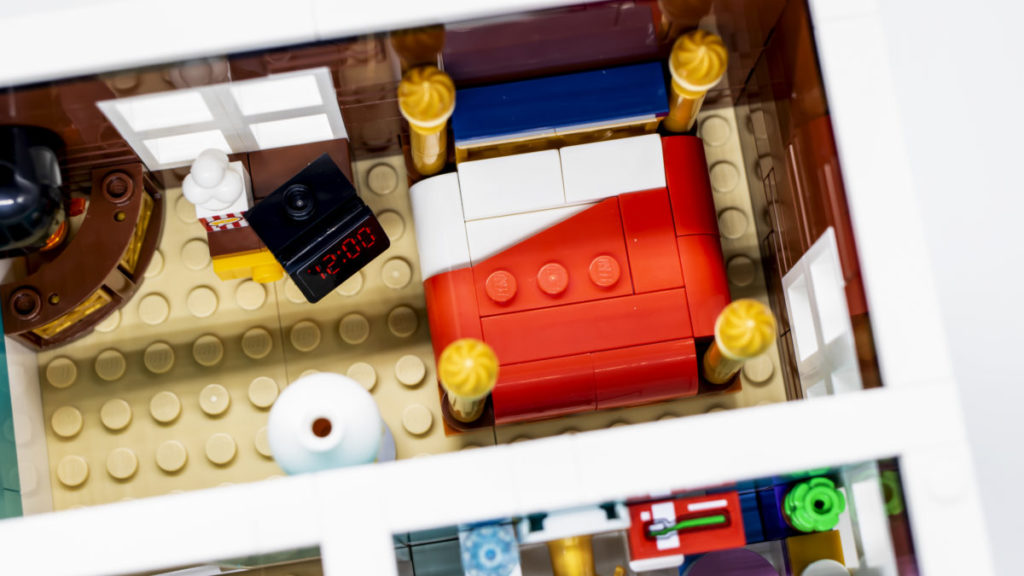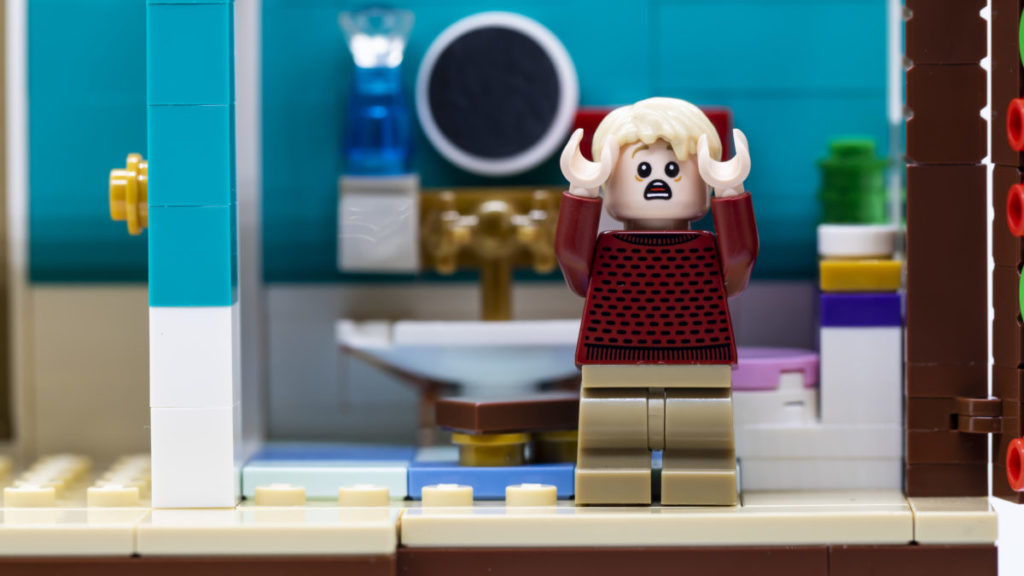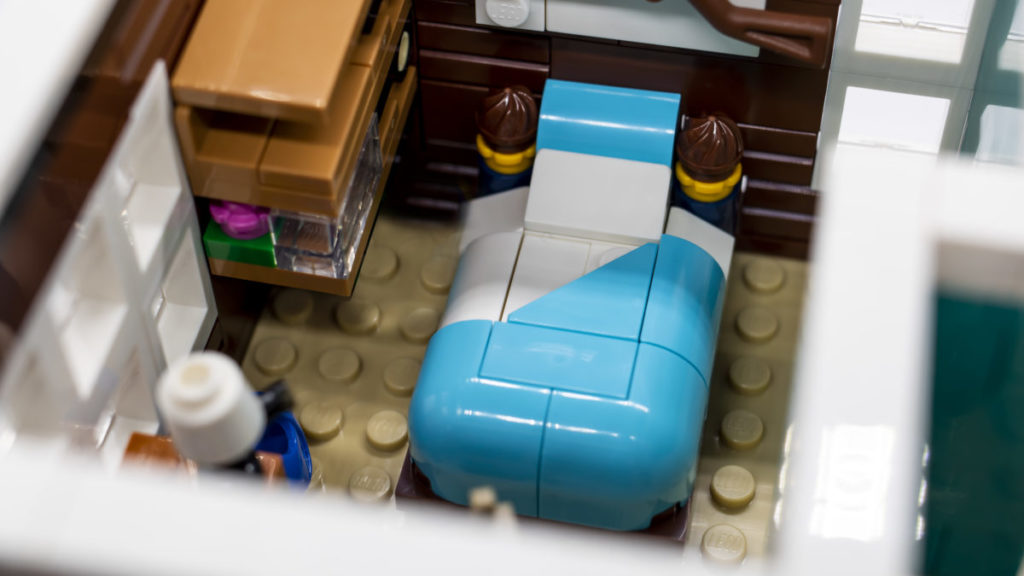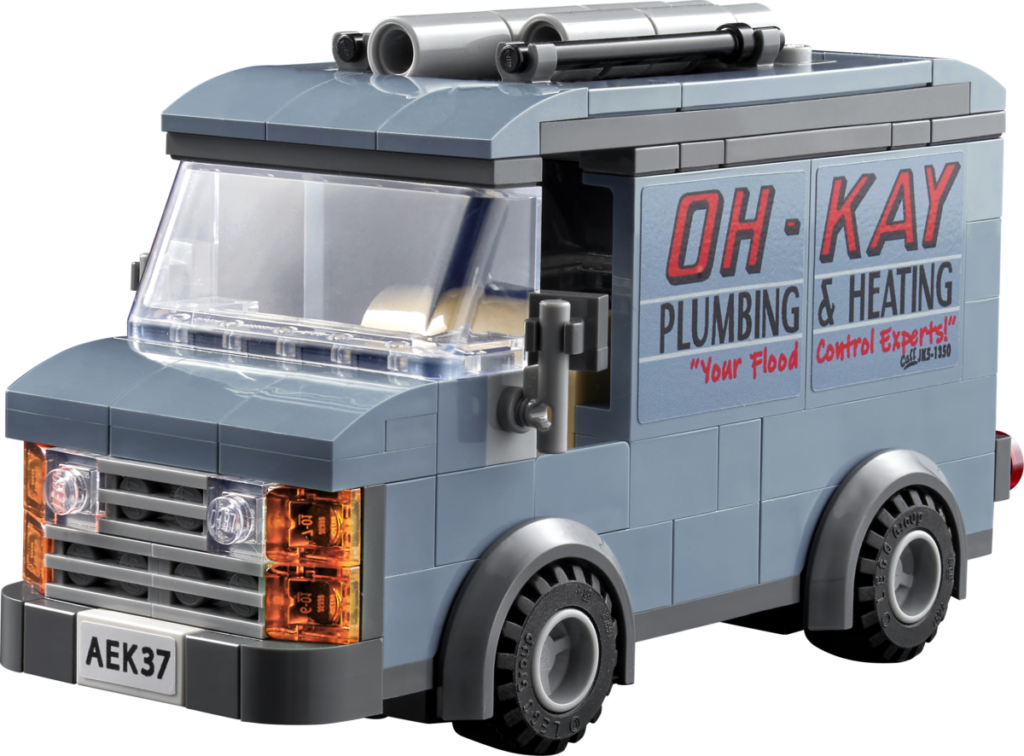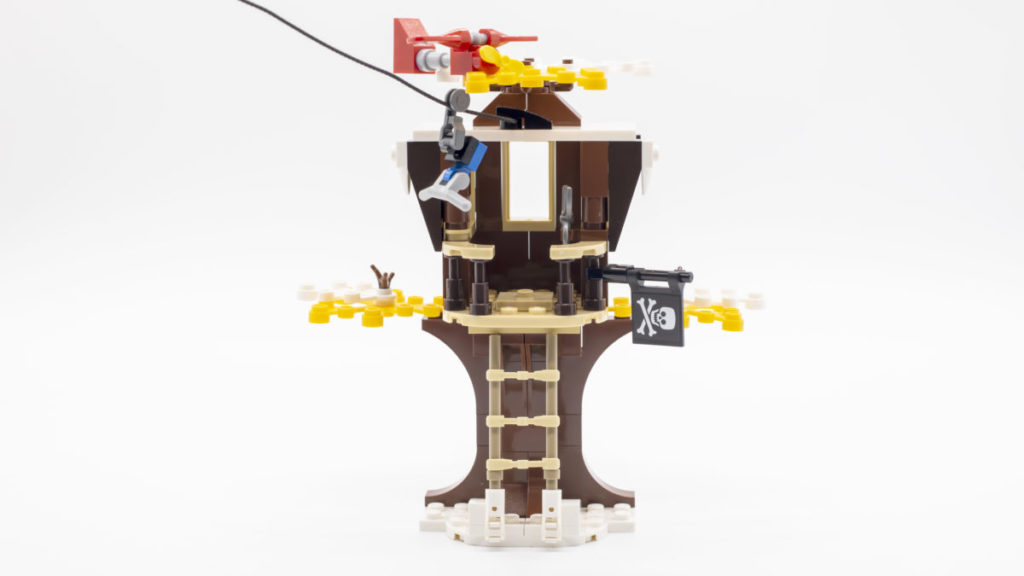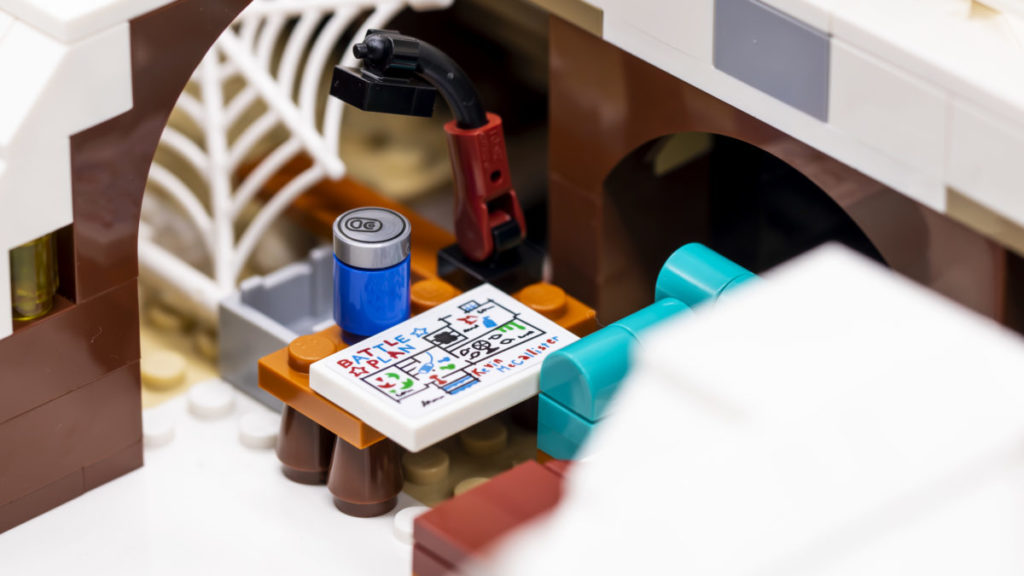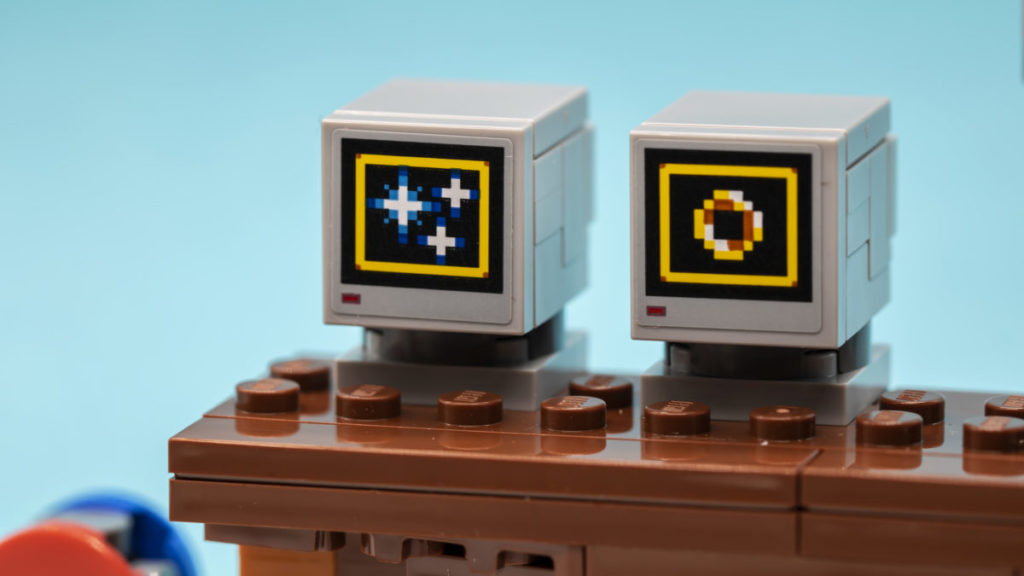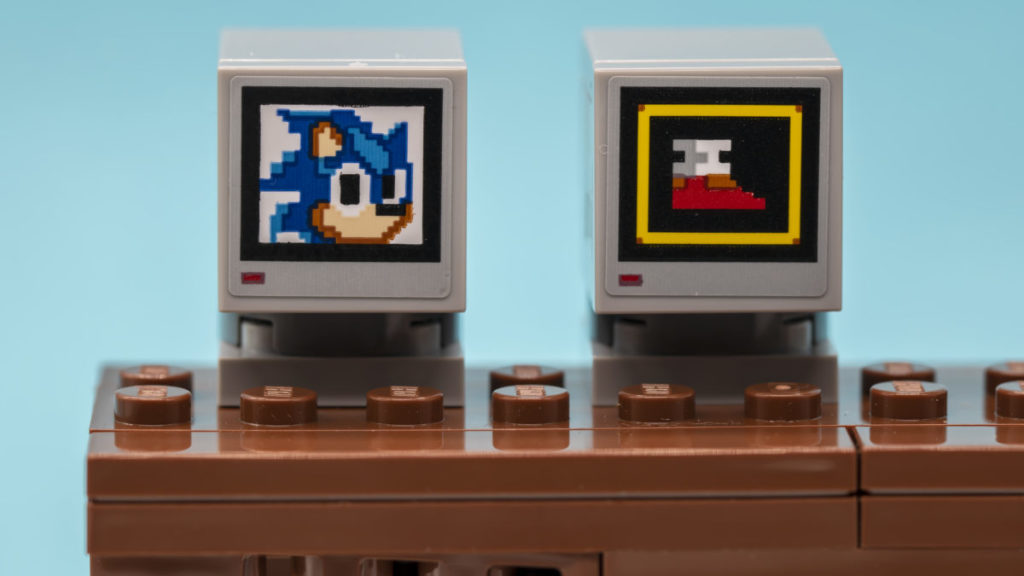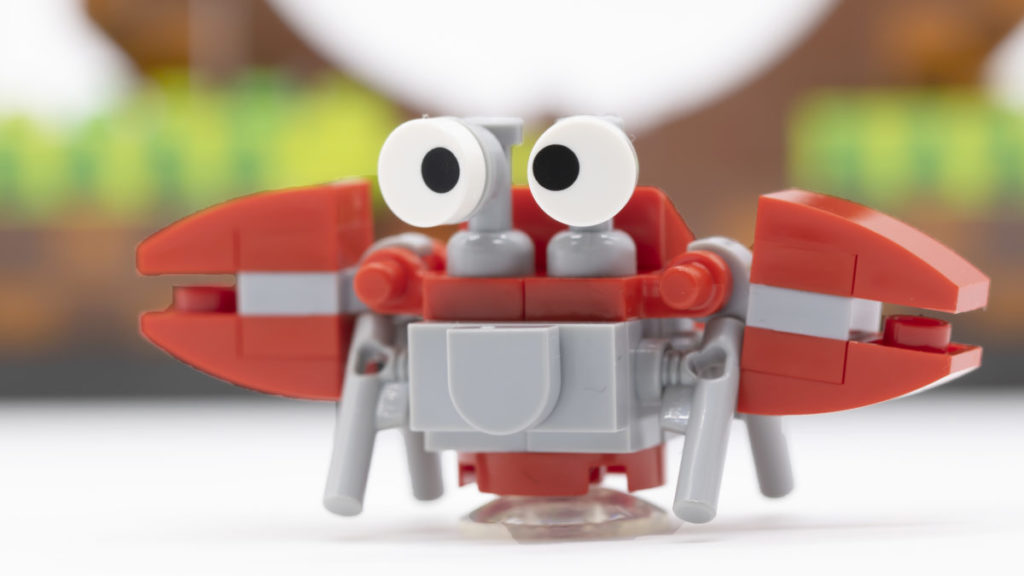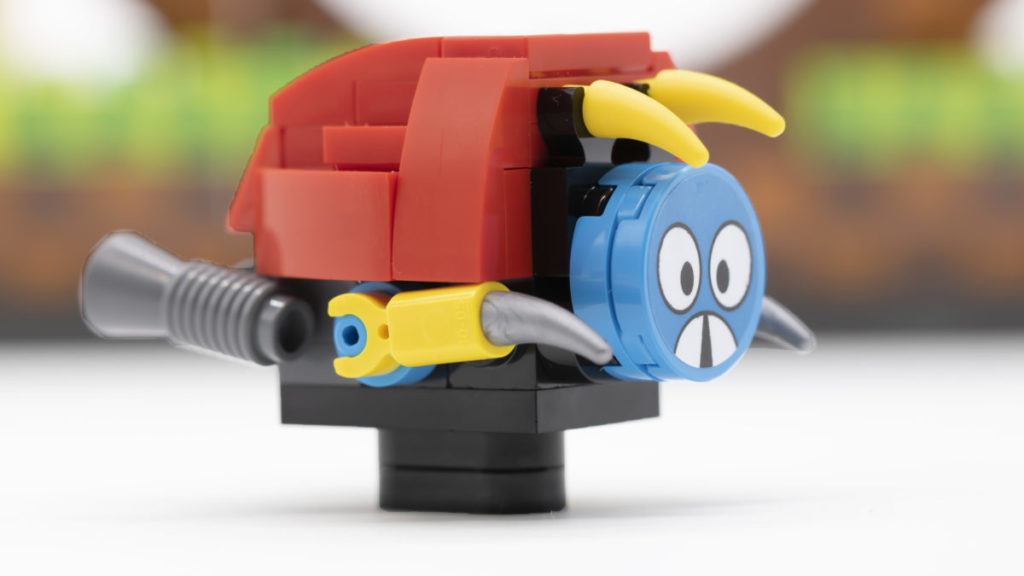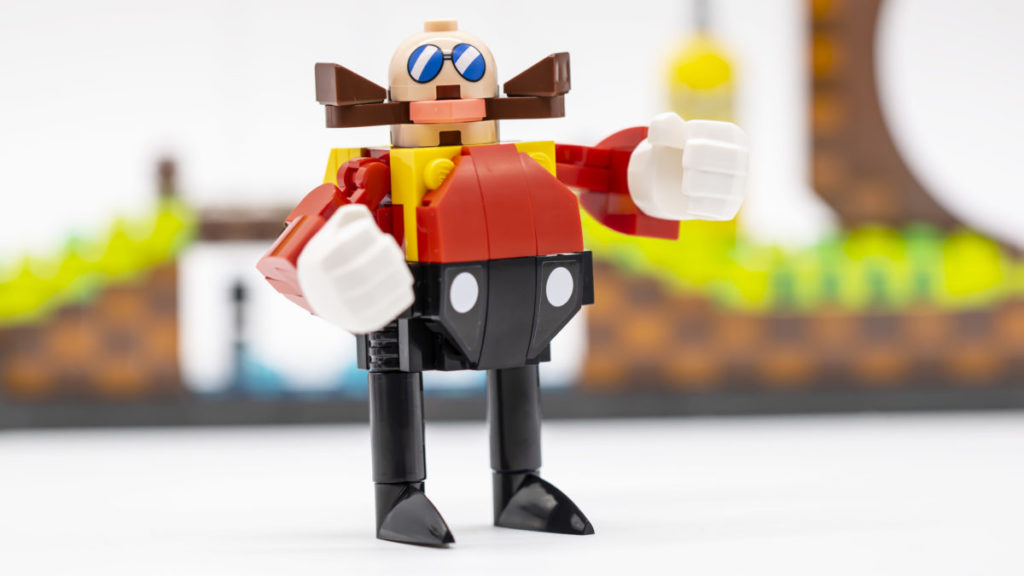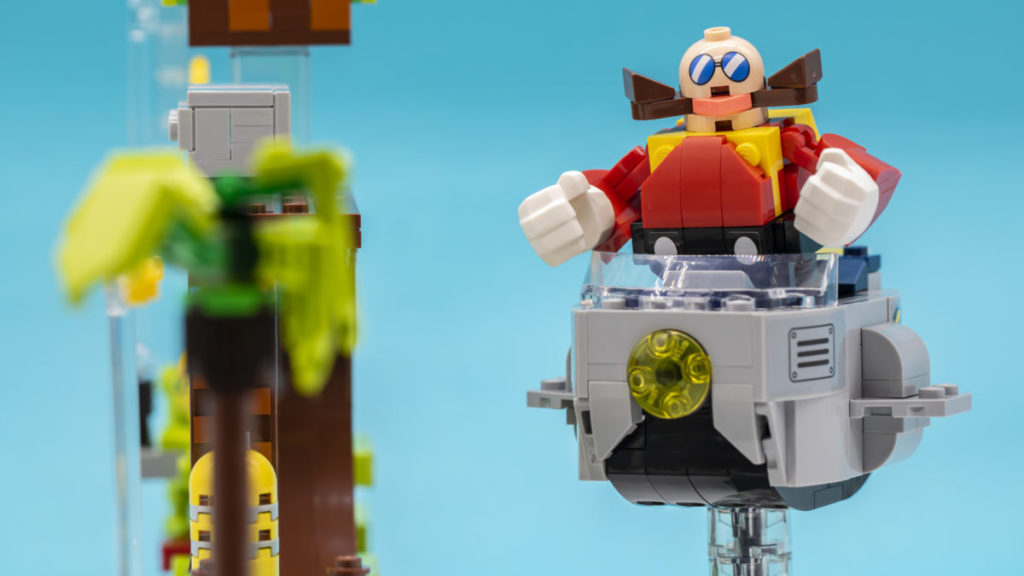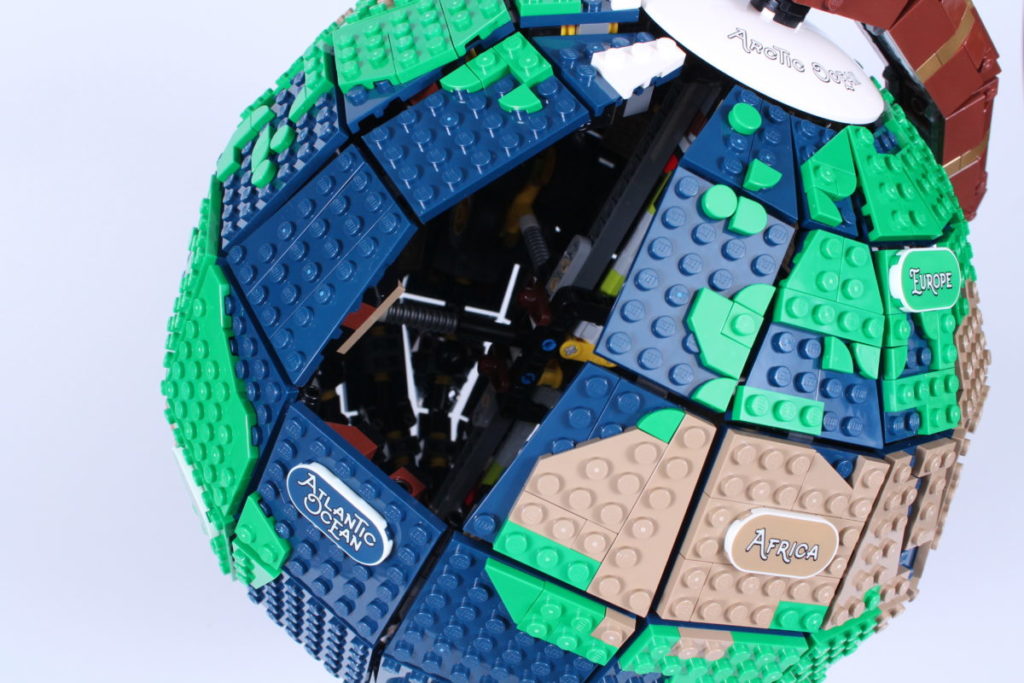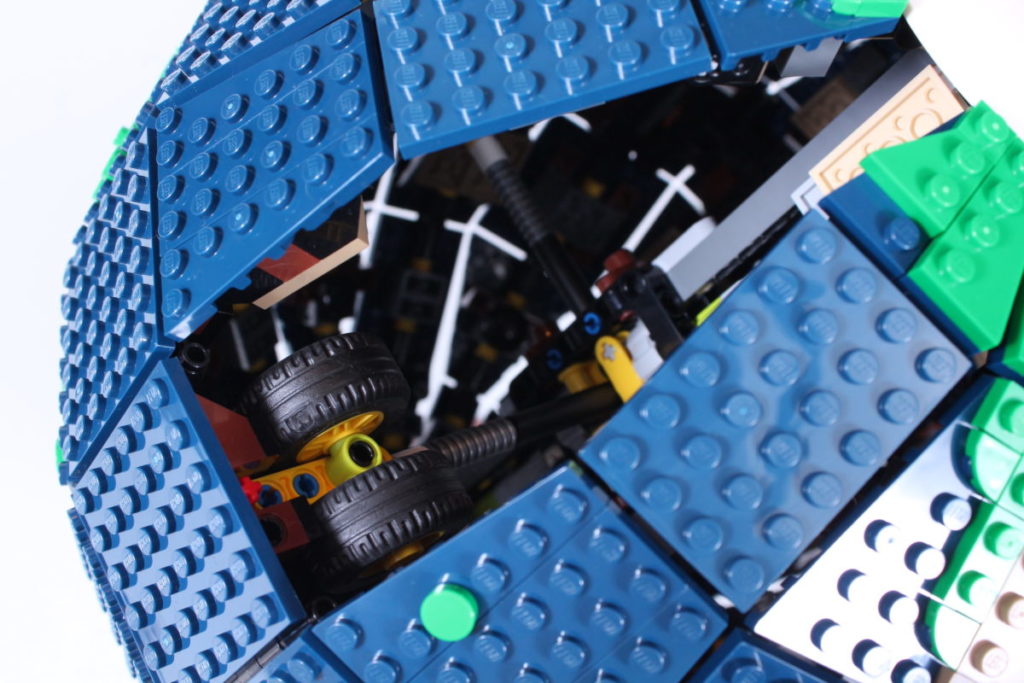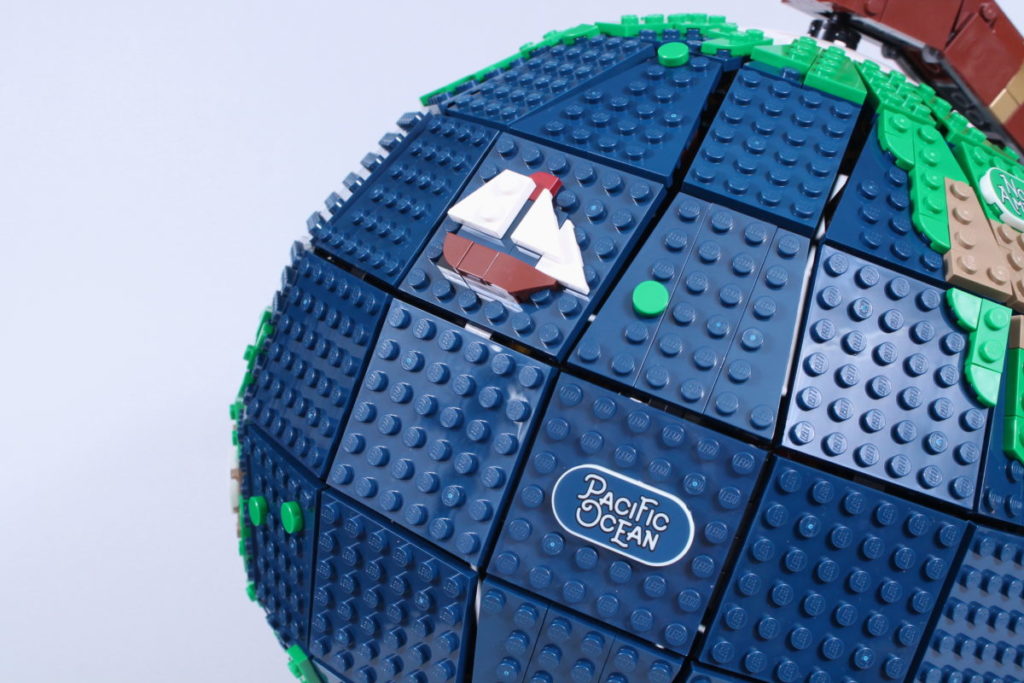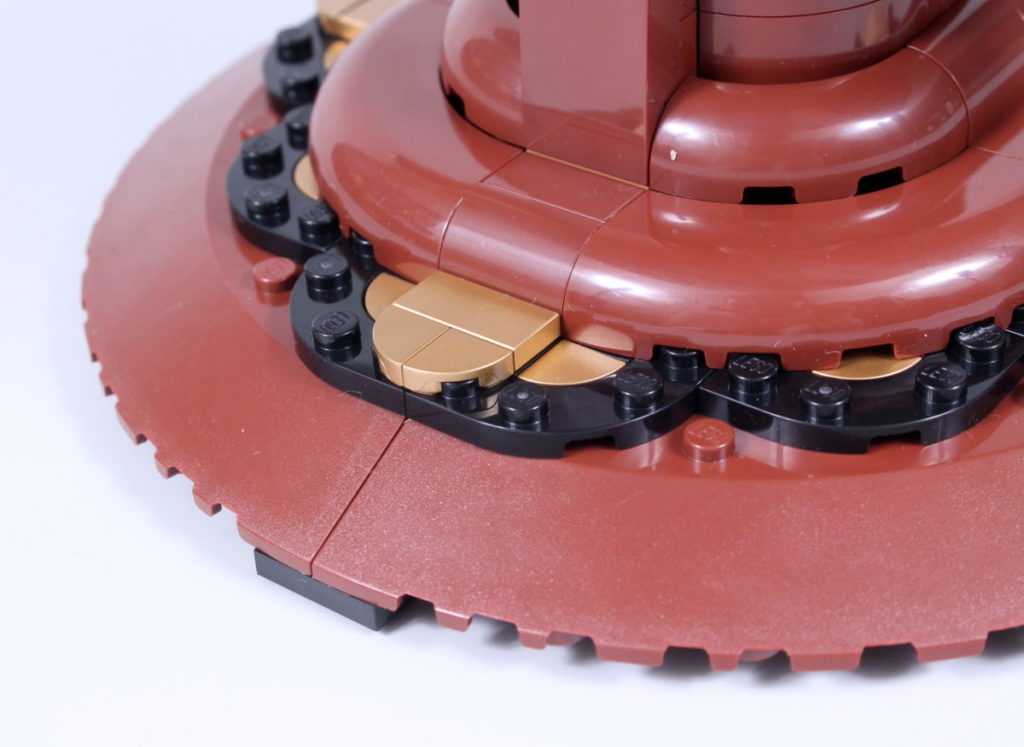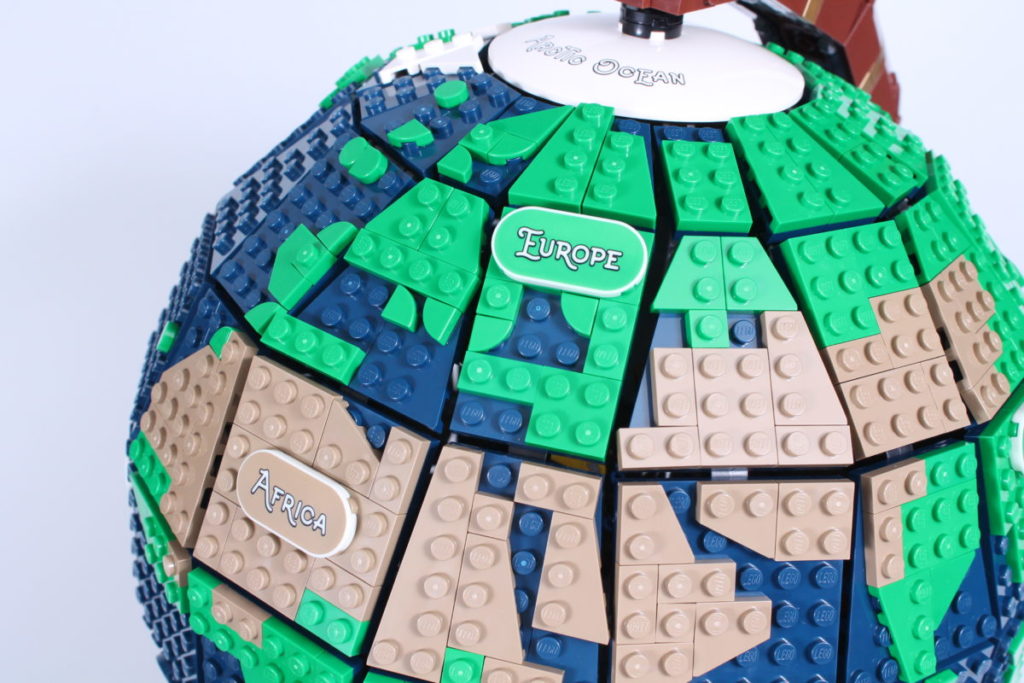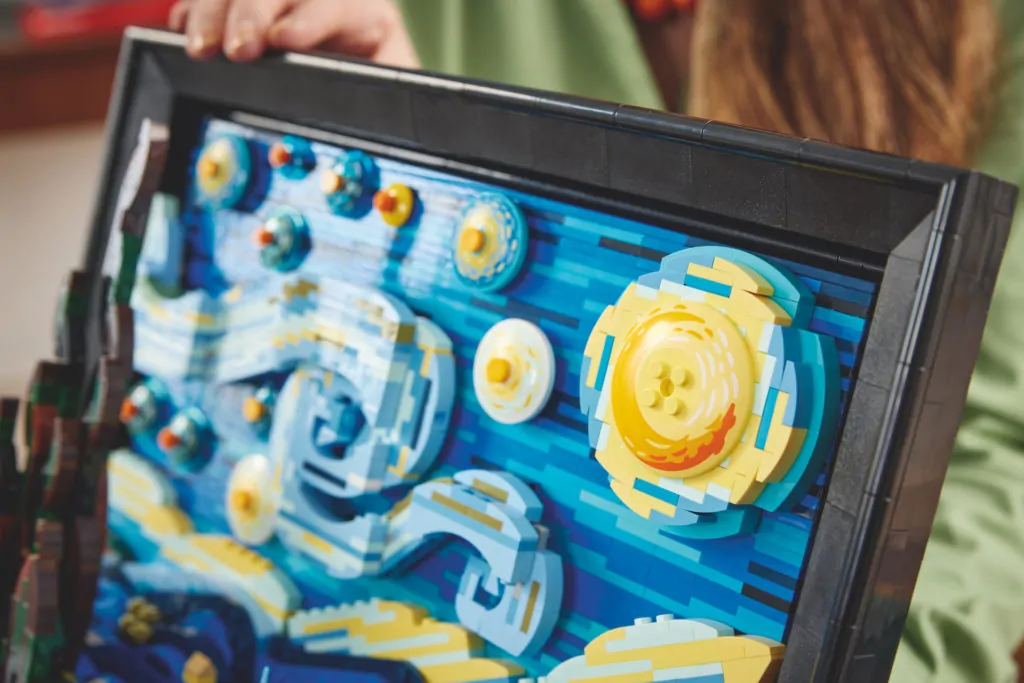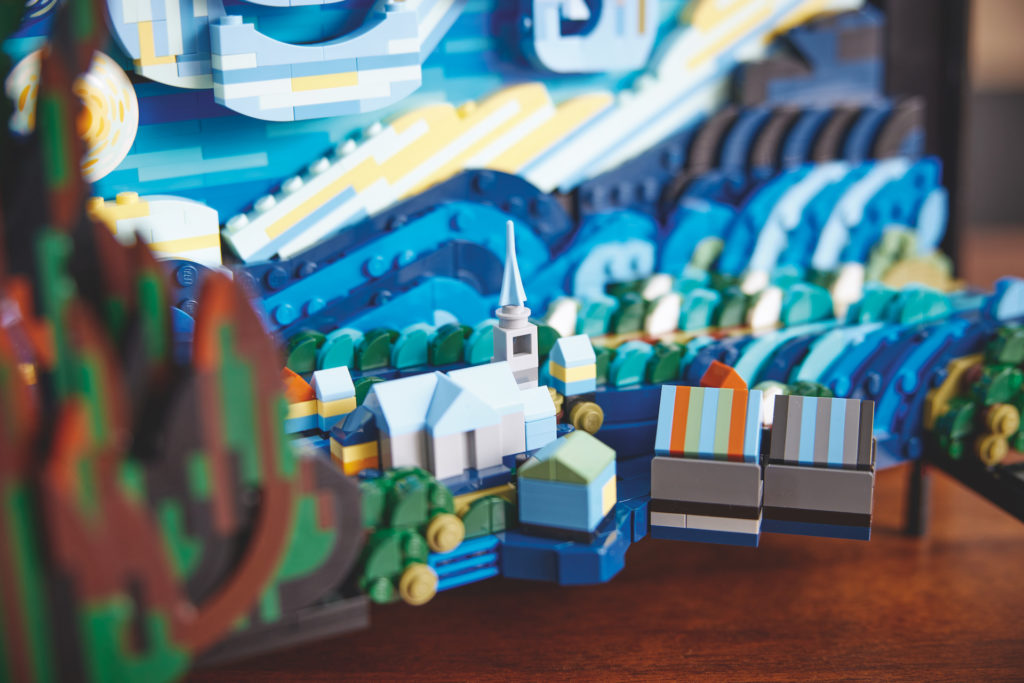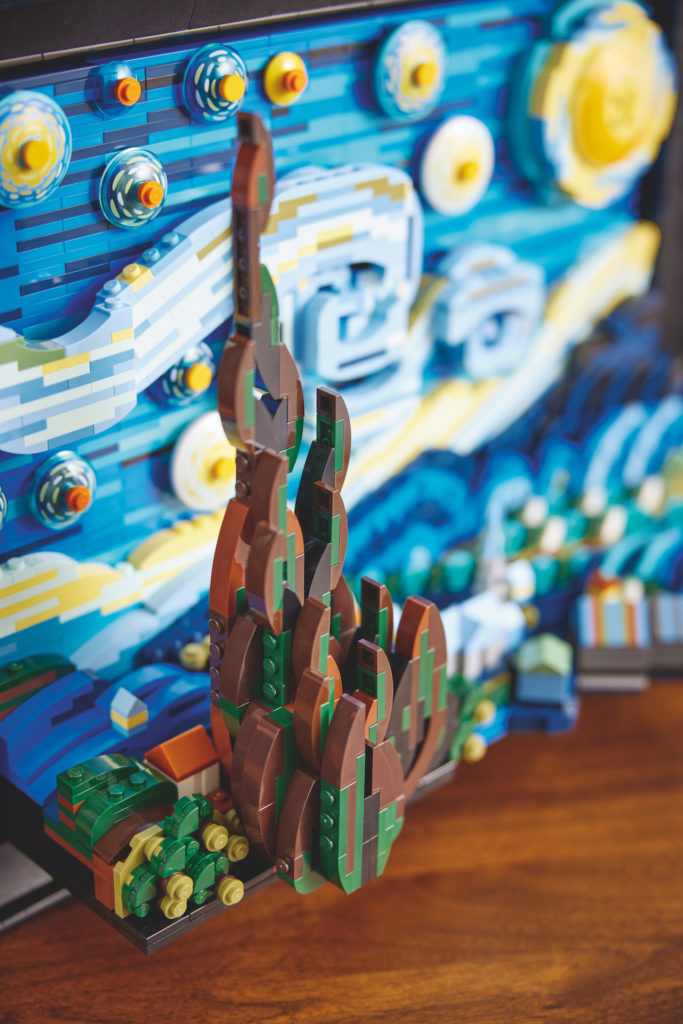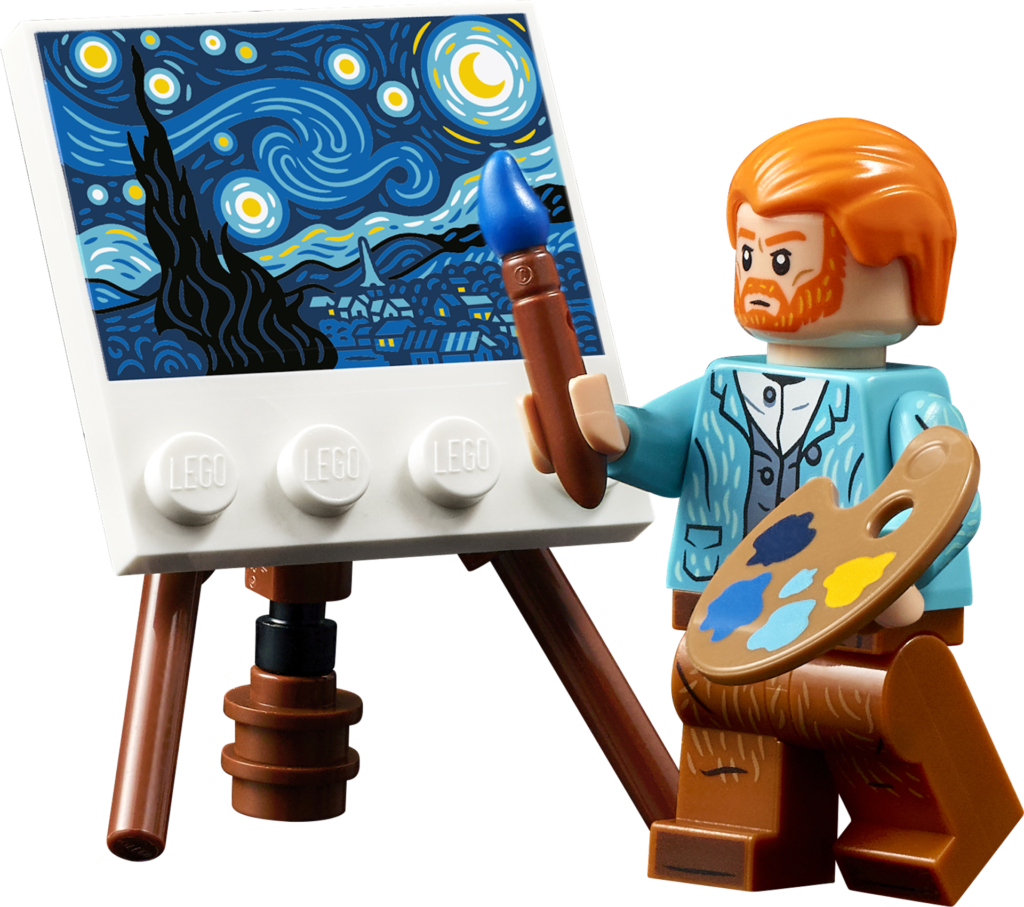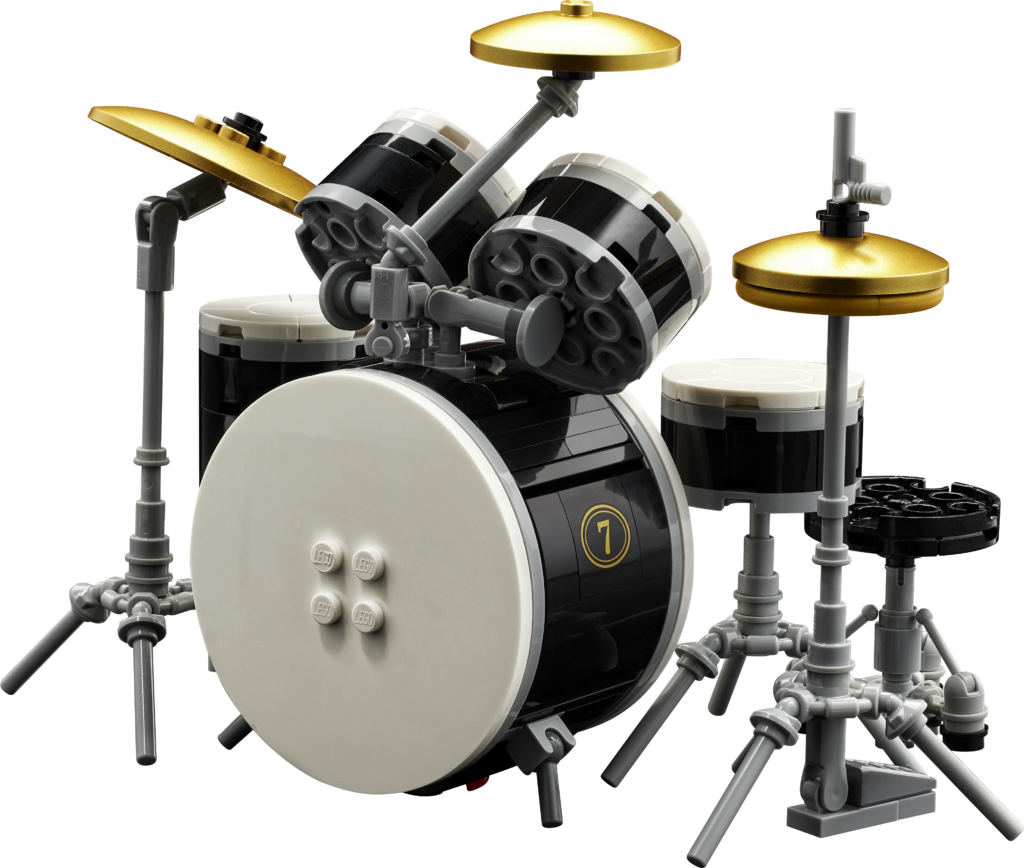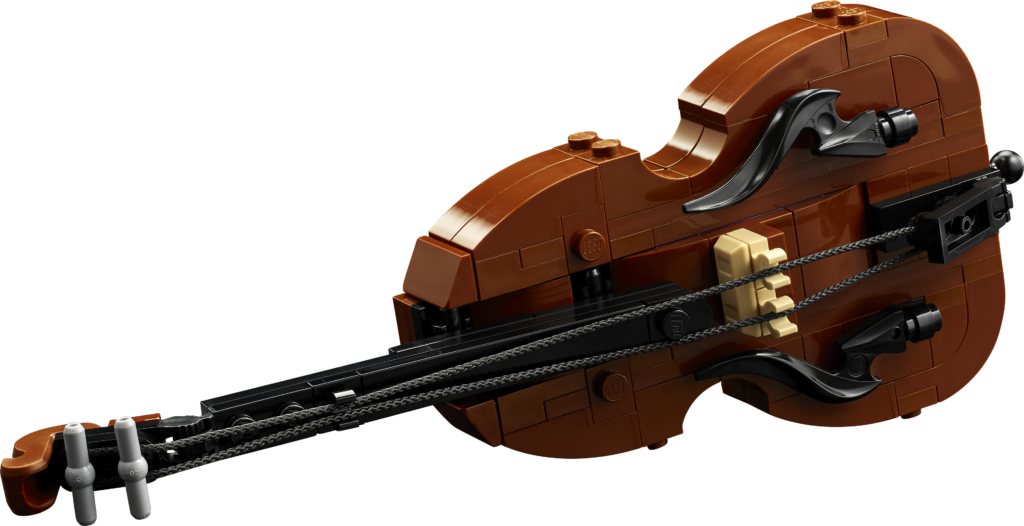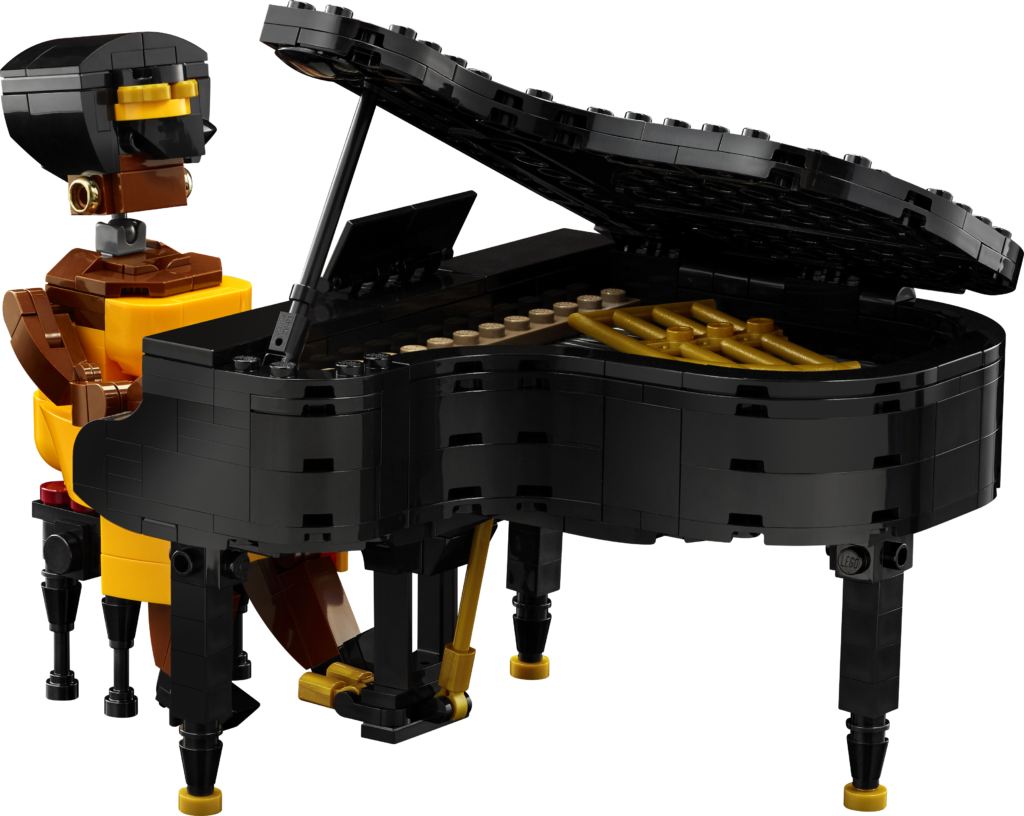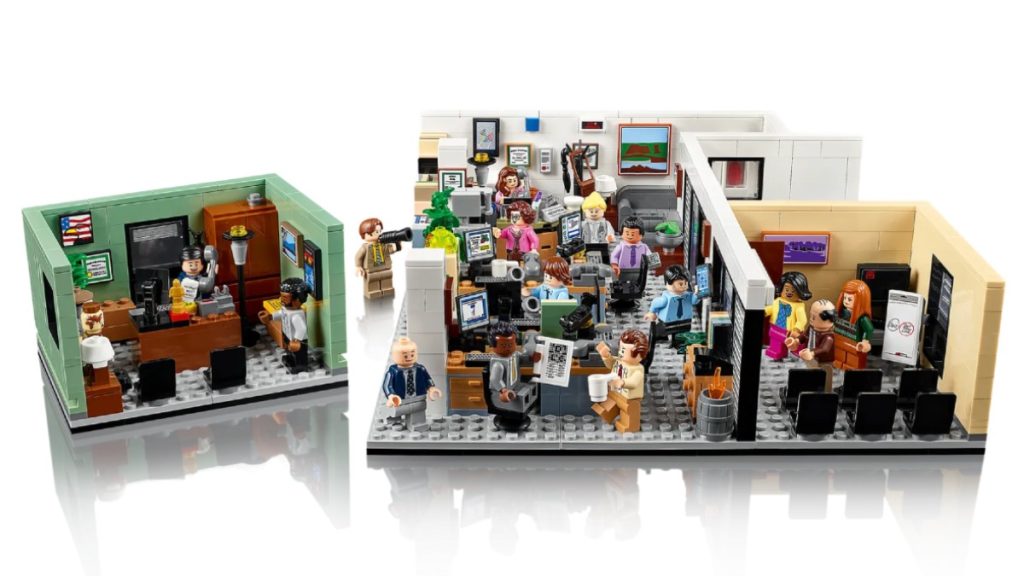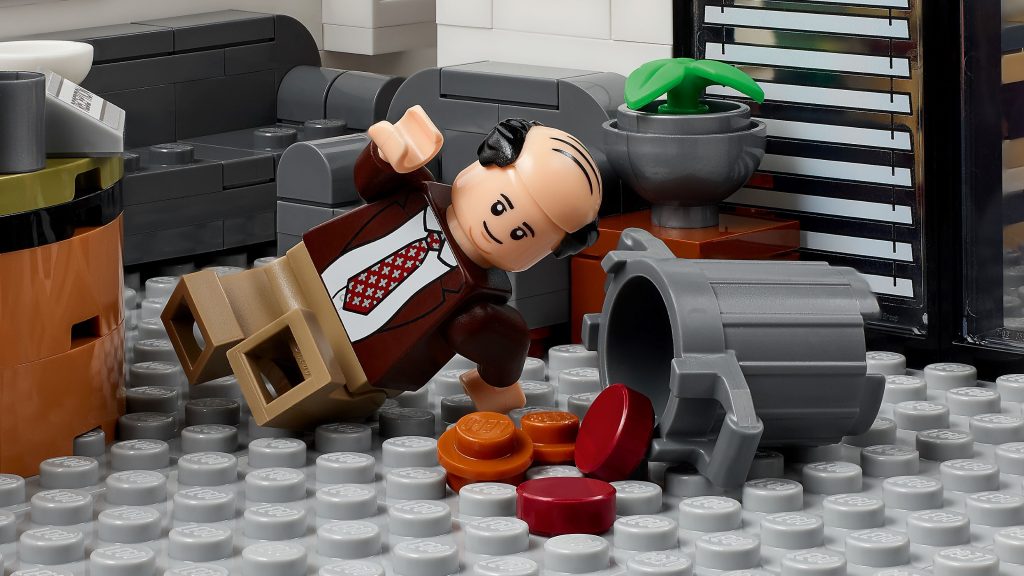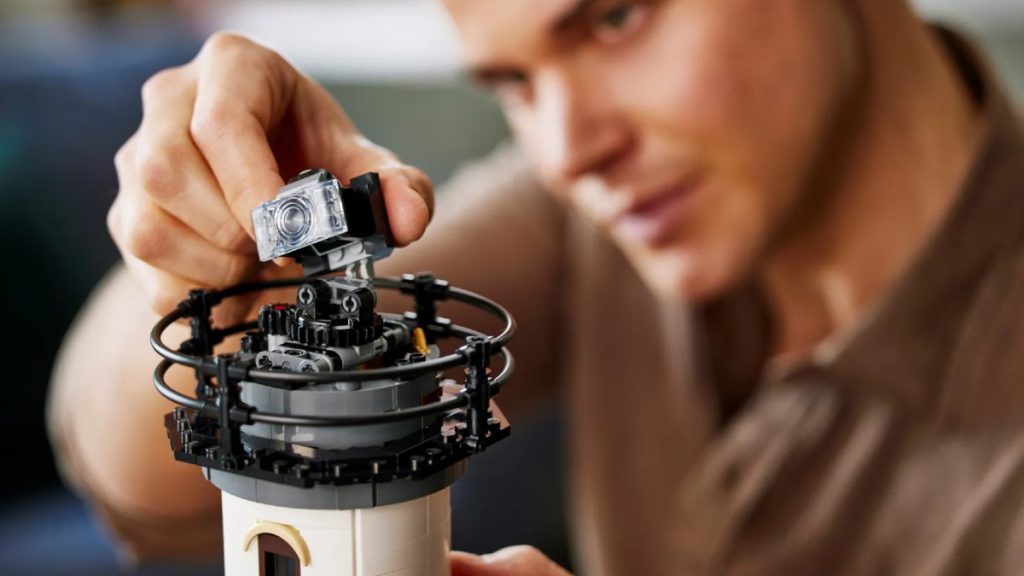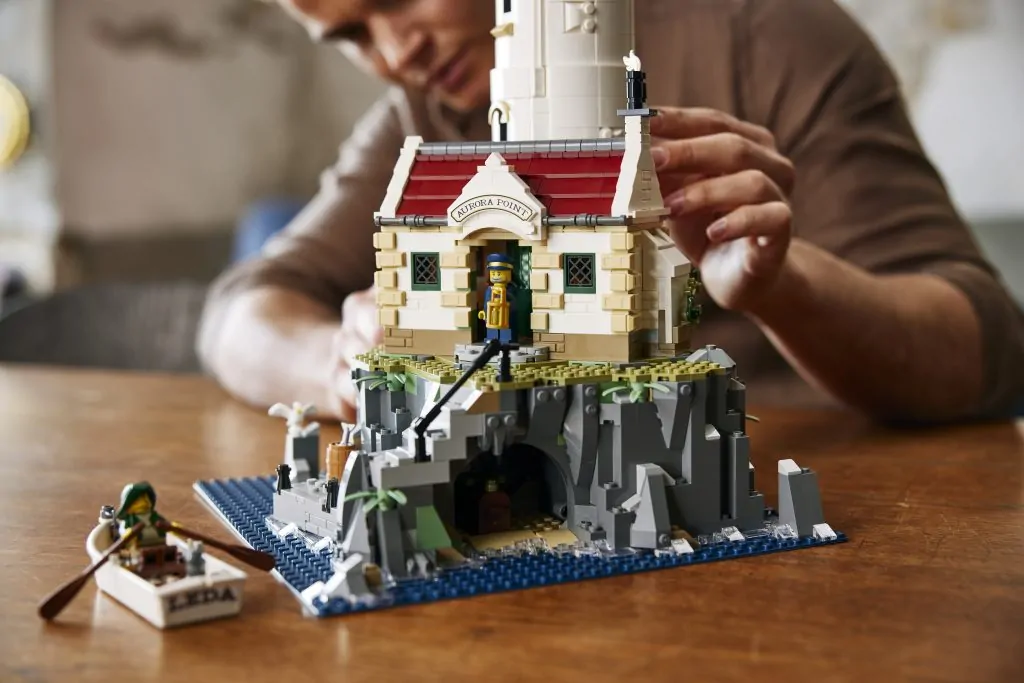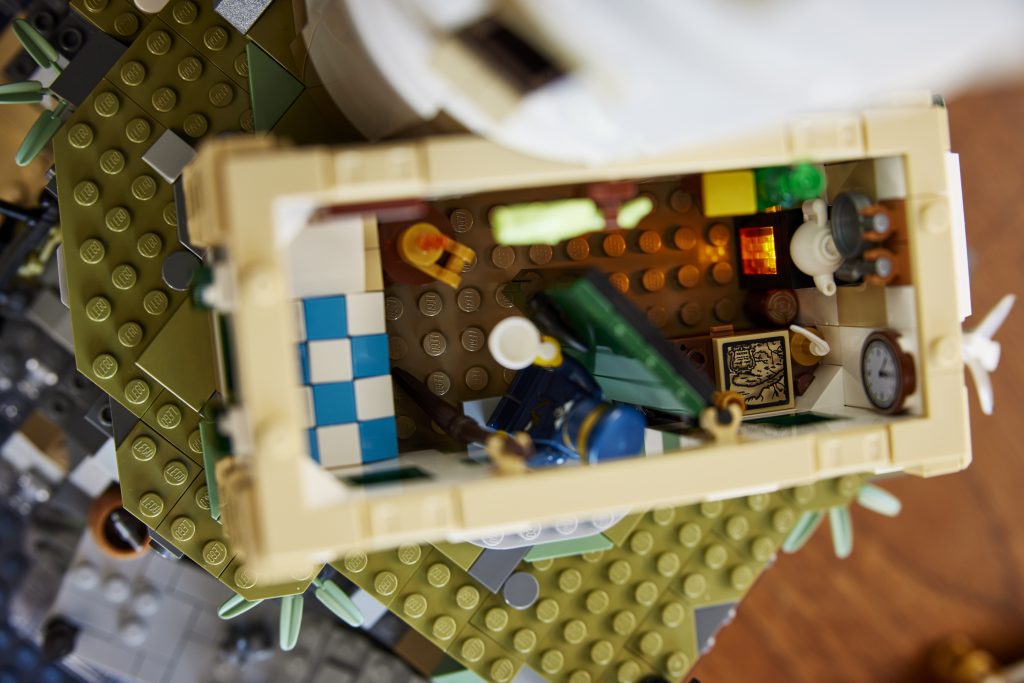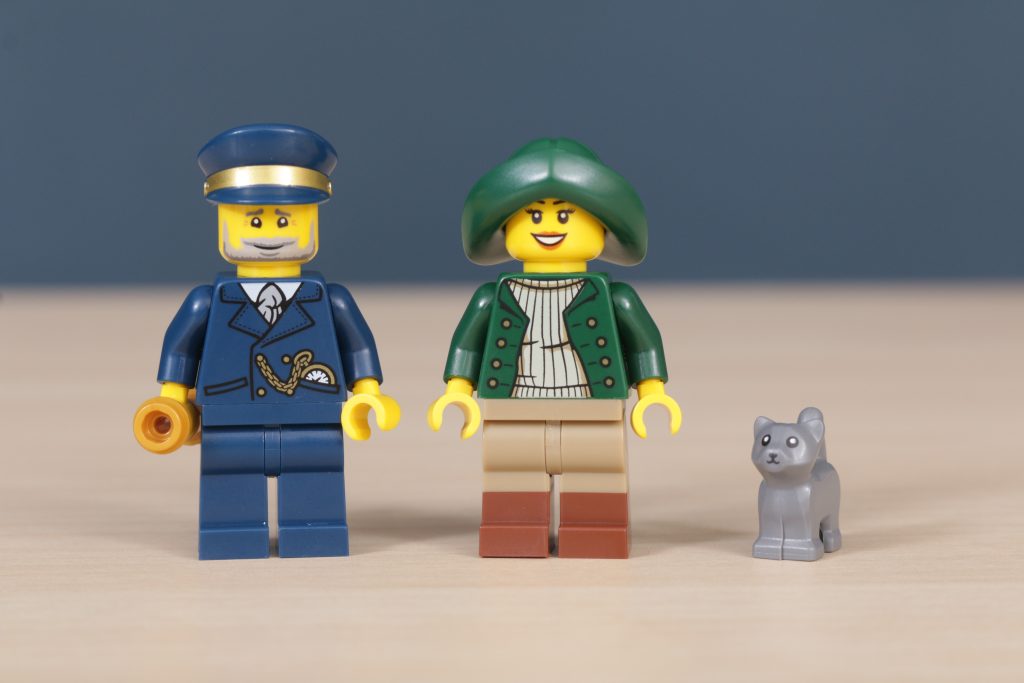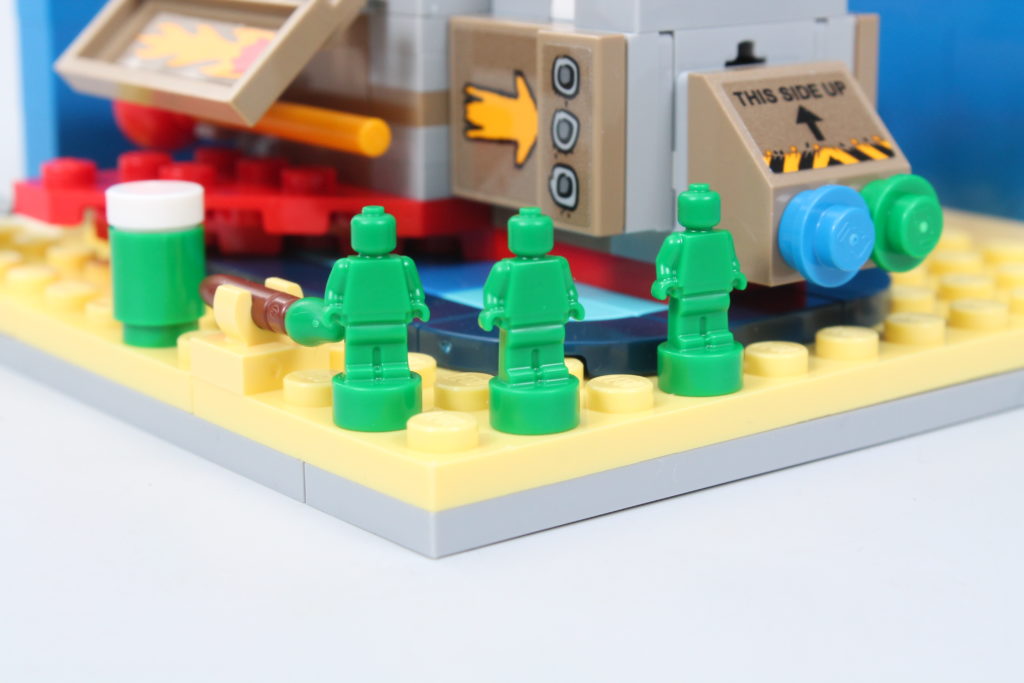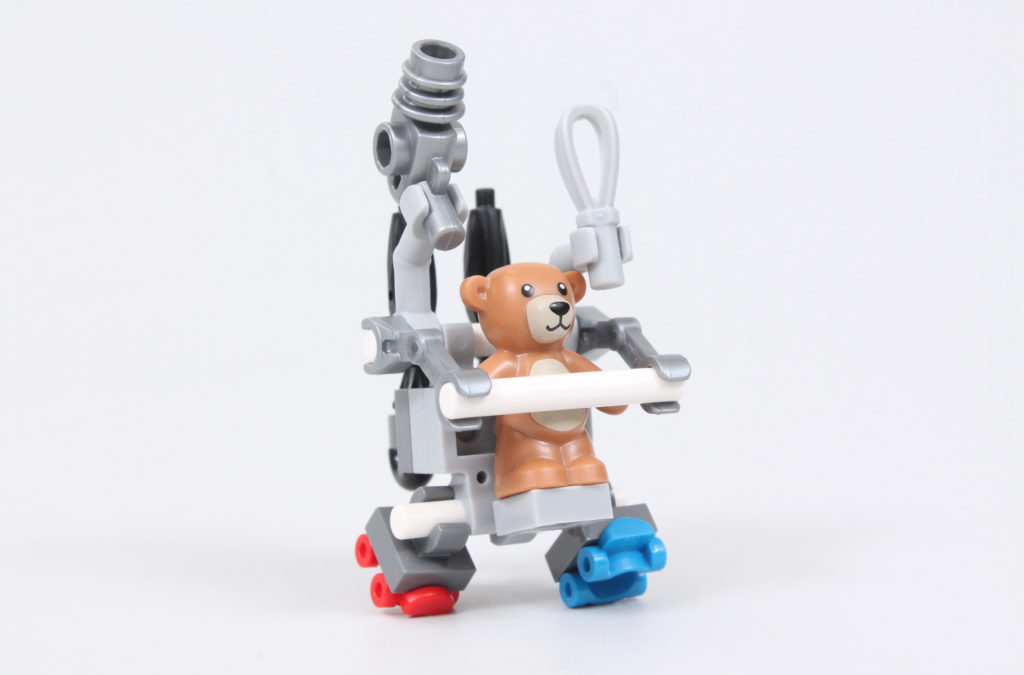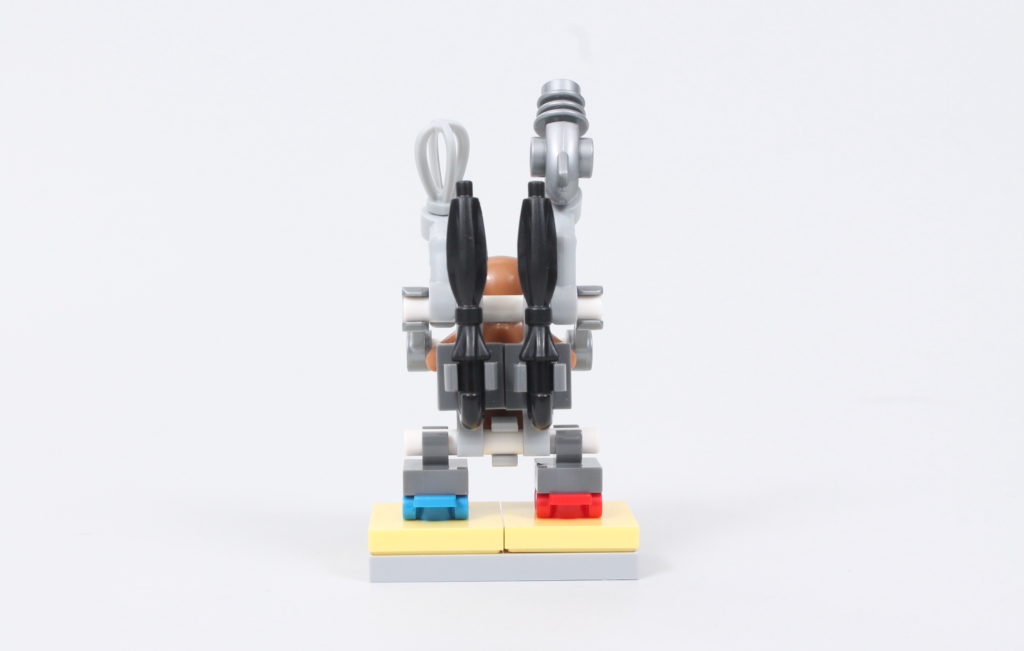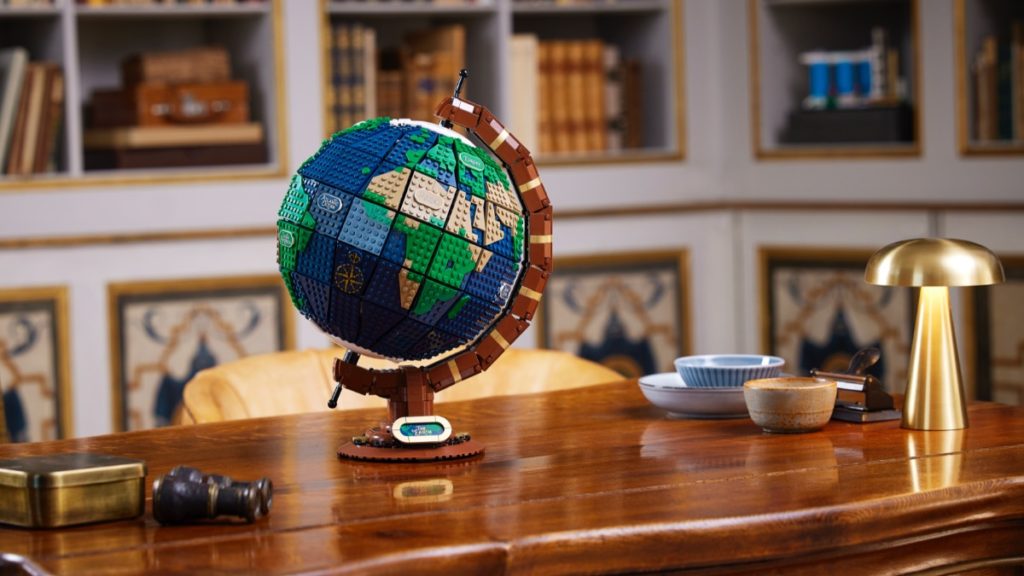
For a certain breed of LEGO fan, LEGO Ideas is a dream come true. The theme uses a dedicated website for people to submit their own LEGO designs. If they can gather enough support these designs can become bona fide LEGO sets, for everyone to enjoy.
With a decade of sets under its belt, LEGO Ideas has certainly stood the test of time. Submissions have also exploded in number; today’s review stages typically look at dozens of sets. However, only a handful arrive on store shelves, making entry in the theme a rare honour indeed.
Visit LEGO.com to see the current lineup of sets in the LEGO Ideas range.
LEGO Ideas history
The LEGO Ideas theme – or an early version of it – launched in 2011, although its idea of mass-produced, fan-designed LEGO sets didn’t originate here. A similar concept called LEGO Factory appeared in 2005, and allowed LEGO fans to digitally design and purchase their very own LEGO sets.
A handful of LEGO Factory sets enjoyed a wider release, allowing anyone to buy and build them. Some of these followed in the footsteps of previous LEGO models, while others served as inspiration for later LEGO themes.
2005’s 10191 Star Justice is an effective reimagining of the Space Police theme, while 10190 Market Street (launched in 2007) helped establish the Modular Buildings theme. 5526 Skyline, meanwhile, is an obvious precursor to the Architecture theme. It even includes a Statue of Liberty, which has appeared on two occasions in this product range.
The LEGO Ideas theme was a little more democratic, although decisions about what sets were made (and what they looked like) ultimately rested in the hands of the LEGO Group. In its early stages, it also looked very different to the LEGO Ideas theme we recognise.
To begin with, LEGO Ideas was instead known as LEGO CUUSOO. The word ‘cuusoo’ – which originates in Japan – can be translated into English as ‘fantasy’, ‘daydream’ or ‘vision’. This evidently reflects the aspirational nature of the theme.
As that choice of name suggests LEGO CUUSOO was originally a Japan-only initiative. Reportedly, only 1,000 votes were required for a LEGO project to be considered.
These factors may explain why early CUUSOO projects were a bit niche. The very first project was 21100 Shinkai 6500 Submarine, while the second was 21101 Hayabusa, a recreation of a Japanese satellite. Interesting models, to be sure, but lacking the wider recognition of most LEGO licensed models.
In 2012 the LEGO CUUSOO theme was expanded to an international audience. This in turn saw a dramatic shift in the types of projects getting approval. Minecraft (still in its early days) earned a LEGO version in 21102 Minecraft Micro World: The Forest, while beloved sci-fi trilogy Back to the Future was referenced in 21103 The Delorean Time Machine.
These early LEGO Ideas sets largely set the direction of travel for the theme going forward. Many LEGO Ideas products are either one-off licensed pop culture models, or sets with obvious scientific connections. That said, there are a few other approaches taken. 21302 Birds recreates a trio of feathered friends, while 21315 Pop-up Book pushes the boundaries of LEGO product design.
Even as the theme grew in popularity, and its subject matter expanded, LEGO Ideas was subject to some design restrictions. LEGO submissions couldn’t be accepted if they used specific licences (like Star Wars, for instance) and they couldn’t introduce any new parts in their designs. This generally impacted minifigures in the sets, which had to depend upon existing head and body elements to recreate their characters.
That’s something which has changed relatively recently. In 2020, 21314 123 Sesame Street arrived on shelves with characters like Big Bird, Elmo and the Cookie Monster. Since these characters are so beloved (and visually distinctive) most characters in the set received new head moulds to better capture their appearance.
Even with this restriction removed, we haven’t seen a deluge of unusual minifigure designs. Many of the subsequent Ideas minifigures have used existing parts, although the possibility remains for more unusual characters going forwards.
Today’s LEGO Ideas projects require 10,000 fan votes to warrant review. Any set that receives this many votes passes into a review stage, where it is subject to further scrutiny by the LEGO Group.
If the set is a good match for LEGO’s brand values (and it’s feasible as a set) then it gets turned into an actual LEGO model. However, there can be a major time gap between approval and release.
A decade after its debut, the LEGO Ideas theme is approaching its 50-set milestone. The number of projects making it into review stages has also mushroomed, with a few dozen being considered each time. As such, we expect the LEGO Ideas theme to thrive in the years to come.
LEGO Ideas Sets
Unlike most LEGO themes, Ideas sets aren’t really united by common features or design philosophies. It often functions as a space for one-offs, for sets that – while meritorious – don’t quite justify an entire theme.
That said, certain kinds of subject matter have proven popular. Space-themed models make frequent appearances in the theme, and several Disney-owned properties have also appeared here. More generally, Ideas sets have grown in size, complexity and price; some have reached the upper echelons of contemporary LEGO set pricing.
A few have even inspired follow-up LEGO sets, either within existing themes or entirely new ones. That said, this generally proves to be the exception rather than the rule.
2011–2013
The first crop of LEGO Ideas sets was a mix of relative obscurities and pop-culture darlings. Early sets enjoyed a limited release thanks to the scheme’s Japan-only nature. As such, these initial entries are rather tricky to come by nowadays.
21100 Shinkai 6500 Submarine
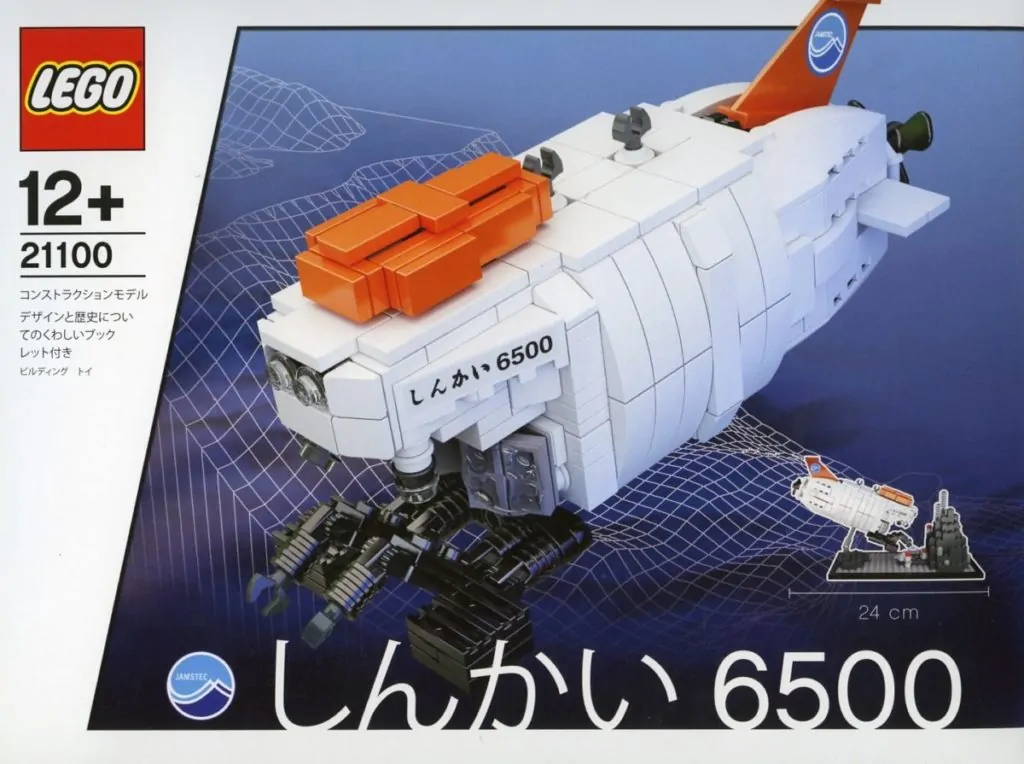
The inaugural Ideas set was 21100 Shinkai 6500 Submarine, released in 2011. It depicts a small research submarine which can – as its name suggests – reach depths of 6,500 metres. Three crew members can travel inside the submarine at once.
It precedes the Ideas theme by some time, being completed in 1990. Its diving abilities were unmatched until 2012, when the Chinese Jiaolong submarine hit a depth of 6,695 metres instead.
Despite its manned nature 21100 Shinkai 6500 Submarine is scaled a little smaller than most LEGO sets, with no minifigures included. It captures the distinctive shape of the submarine and its grabber hands, as well as a chunk of the seabed. This is mounted to a black-edged display base, and a Technic assembly allows the sub to be mounted at a slight angle.
While its design may be a little simplistic nowadays, 21100 Shinkai 6500 Submarine feels ahead of its time in some respects. Its style as a display piece has been widely replicated in other LEGO sets, such as 10266 NASA Apollo 11 Lunar Lander and 75296 Darth Vader Meditation Chamber.
21101 Hayabusa
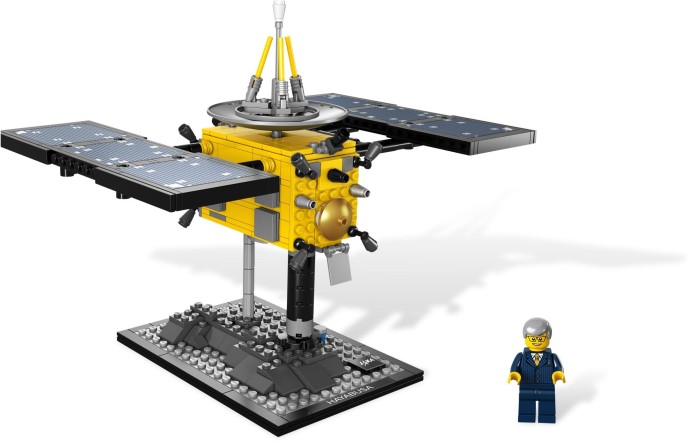
The next LEGO Ideas set had some similarities to this one. 21101 Hayabusa – released in 2012 – recreates the Hayabusa spacecraft, which was developed by the Japan Aerospace Exploration Agency.
In 2003, the spacecraft was launched into space and travelled towards the 25143 Itokawa asteroid, where – in 2005 – it collected mineral samples from the asteroid’s surface. While the Hayabusa spacecraft returned to Earth in 2010, the craft itself was incinerated upon re-entry. Fortunately, its sample container survived the journey.
The Hayabusa is (according to its LEGO product description) the first unmanned asteroid explorer, earning it a spot in the history books. It also has an impressive pop culture presence within Japan. Several feature films have been produced about the spacecraft, and it inspired a song from virtual pop star Hatsune Miku. It even appeared as a playable character in the Mobile Legends: Bang Bang video game.
Despite its namesake’s exciting history, it’s easy to be a little underwhelmed by the LEGO set itself. 21101 Hayabusa is essentially a yellow box with some simple greebling (which refers to adding texture to a surface for visual interest) and two boxy solar panel assemblies attached to it.
Like 21100 Shinkai 6500 Submarine, it’s mounted to a display base that references the asteroid’s surface. The logo for the Japan Aerospace Exploration Agency can be seen here, as can what appears to be the container for samples of the asteroid itself.
Interestingly, this LEGO set comes with a minifigure. Junichiro Kawaguchi – the Hayabusa’s Project Manager – makes an appearance in this model. While he’s built out of standard minifigure components, this is still a rare honour for any real-life person.
21102 Minecraft Micro World: The Forest
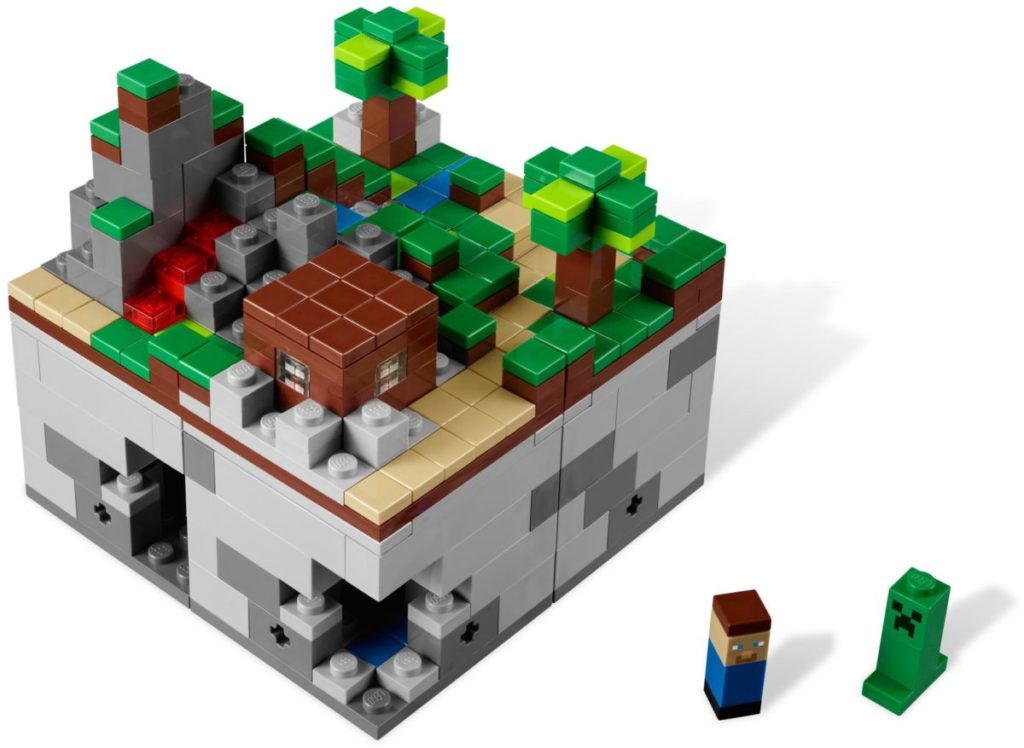
The next two LEGO Ideas sets had a slightly broader appeal. 21102 Minecraft Micro World: The Forest draws inspiration from Minecraft, the phenomenally popular sandbox video game. At this point Minecraft had been in development for some time, with its full version finally releasing in 2011. Its first LEGO set appeared in 2012, helping to inspire a wider Minecraft theme in the process.
Despite this, 21102 Minecraft Micro World: The Forest is very different to most later LEGO Minecraft sets. It’s scaled considerably smaller than most LEGO sets, although the blocky nature of LEGO allows for a faithful recreation of the Minecraft world. A mix of bricks, plates and tiles are used to depict a small house, some trees and some terrain, with a system of caves underneath them.
The top layer of the set can be easily removed, allowing better access to the underground level. This in turn contains several valuable elements to be found, such as gold, coal and redstone. The set as a whole is actually comprised of four sections, which can be separated and reattached with Technic pins in different configurations.
A pair of ‘micromobs’ are included in this set, boiling LEGO character design down almost to its bare essentials. Player character Steve is formed using a brick, a tile, a plate and a pair of printed elements, while a Creeper (a common enemy in the game) is formed using two bricks and a jumper plate. This approach to LEGO Minecraft design was apparently popular; three more Micro World sets appeared, recreating a village, the Nether and the End from the Minecraft game.
21103 The DeLorean Time Machine
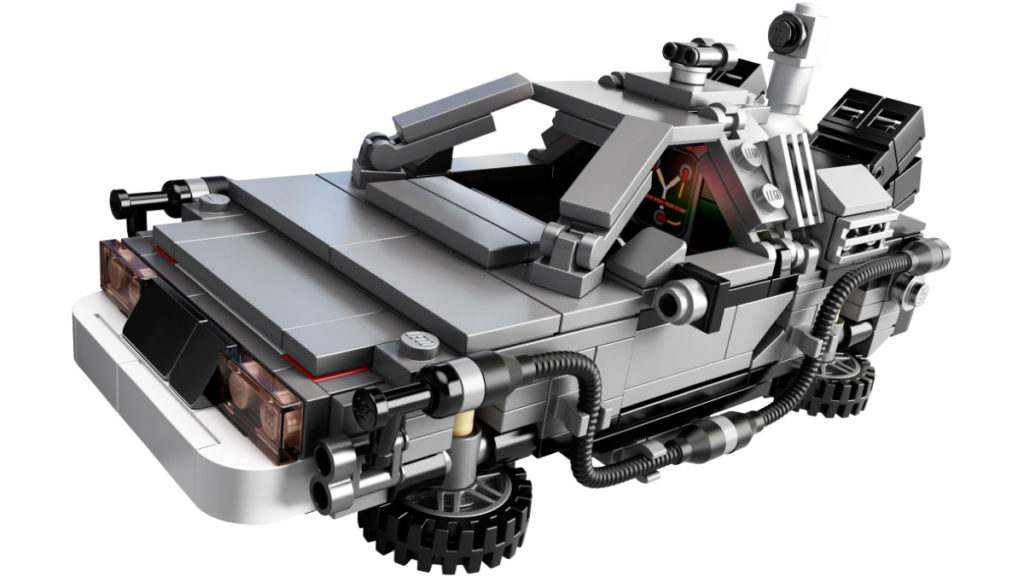
The lone 2013 Ideas release was 21103 The DeLorean Time Machine. This set recreates the classic vehicle from the Back to the Future film series, with a number of fine details in the set itself.
The Back to the Future trilogy ran from 1985 to 1990, and starred Michael J. Fox and Christopher Lloyd in its main roles. It follows the exploits of Marty McFly, who joins his friend “Doc” Emmett Brown in testing a time machine. When things spiral out of control Marty embarks on a madcap adventure through time, travelling to both the distant past and the not-so-distant future along the way.
The Back to the Future films are some of the most beloved from the 1980s, inspiring other related media and pop culture references. Christopher Lloyd would go on to reprise the role of Doc Brown on multiple occasions, and Back to the Future Day – the date visited in Back to the Future II – was honoured around the world on October 21, 2015.
The time machine in the movies is a heavily modified DMC DeLorean, partially chosen by Doc to add some style to his invention. During its adventures the DeLorean undergoes various modifications, incorporating technology from both the future and the past into its design. The LEGO version can be built in one of three different versions, referencing each film in turn.
A number of printed pieces appear in this set – specifically the flux capacitor, the time machine control panel and a licence plate for both 1985 and 2015 vehicles. As this suggests, the DeLorean itself can be customised to reflect its changing appearance as the trilogy progresses.
Versions of Marty McFly and Doc Brown can be found in the set as well. They draw inspiration from their appearances in the first movie, with Marty’s red body warmer and Doc’s radiation suit represented. Each character has alternate expressions reflecting their surprise at unfolding events.

While 21103 The DeLorean Time Machine is a popular set (as reflected in its high price on the secondary market) there are numerous flaws with its design. For a start – despite its large size – this DeLorean can only hold one minifigure at once. That’s a serious oversight considering it sometimes holds two or even three people at once.
Other parts of the vehicle can, reportedly, be quite fragile. The gullwing doors and implied windshield are likely to break off very easily, while other parts of the set (like its binocular elements) may often detach as well. And if you want to recreate its Back to the Future III version, the included wheels bear little resemblance to the on-screen counterparts.
As such – even with such a desirable licence – 21103 The DeLorean Time Machine may be a tough sell, even to the diehard LEGO fan. Still, the licence is clearly an intriguing prospect for the LEGO Group. Back to the Future sets have appeared in both the LEGO Dimensions and LEGO Creator Expert lines, with the latter including a Doc and a Marty from Back to the Future II.
2014 – 2016
As we continue through the ‘10s, we see the LEGO Ideas theme ramp up its set production. Several LEGO Ideas sets appeared in each of these years, with several highly desirable sets to be found here.
21104 NASA Mars Science Laboratory Curiosity Rover

The first Ideas set in this period was 21104 NASA Mars Science Laboratory Curiosity Rover. The set pays tribute to the Curiosity rover, which was dispatched to Mars by NASA in late 2011. The rover’s mission was to investigate the Red Planet’s climate and geology, and learn if conditions there were favourable for microbial life.
The Curiosity rover is still in operation, and has been for almost ten years at this point. It has also served as the inspiration for Perseverance, a similar rover which landed on Mars in early 2021.
As the rover prioritises form over function, it’s to be expected that its LEGO version is similarly ungainly. However – as it was designed by real-life Curiosity Rover Engineer Stephen Pakbaz – we can assume it’s accurate to the real thing. The rover features six wheels with simple suspension, a front-mounted robotic arm and a ‘camera’ on top. It also comes with a chunk of Martian terrain to drive over.
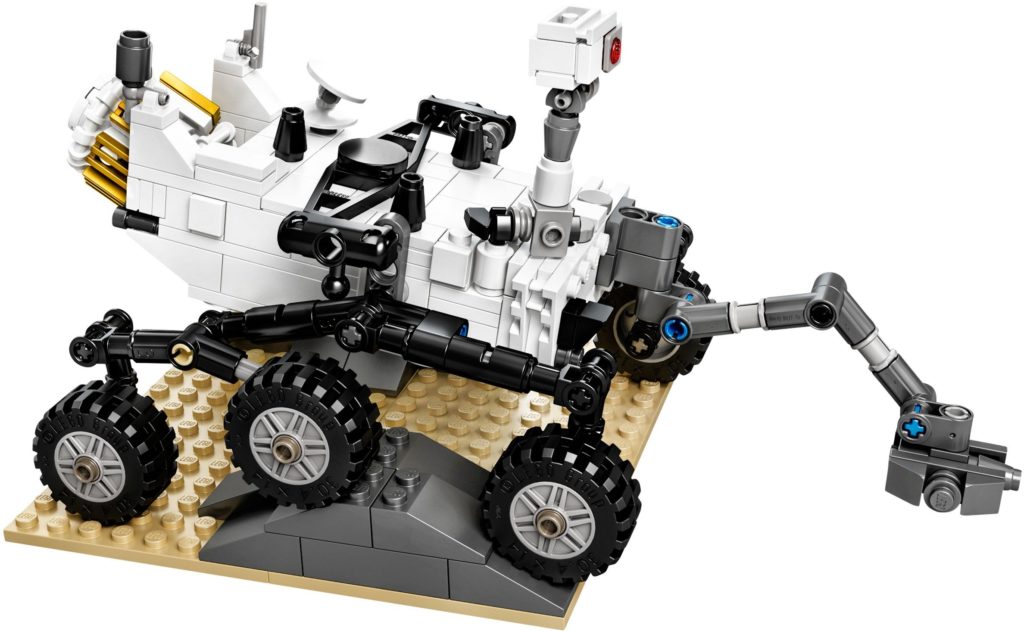
While less obviously appealing than most LEGO Ideas sets, 21104 NASA Mars Science Laboratory Curiosity Rover did act as a sign of things to come for the LEGO Ideas theme. Since its release several more Ideas projects have drawn inspiration from space exploration, real or imagined. Several releases in the LEGO CITY line also directly reference contemporary space missions, suggesting this is an area of continued interest.
21108 Ghostbusters Ecto-1
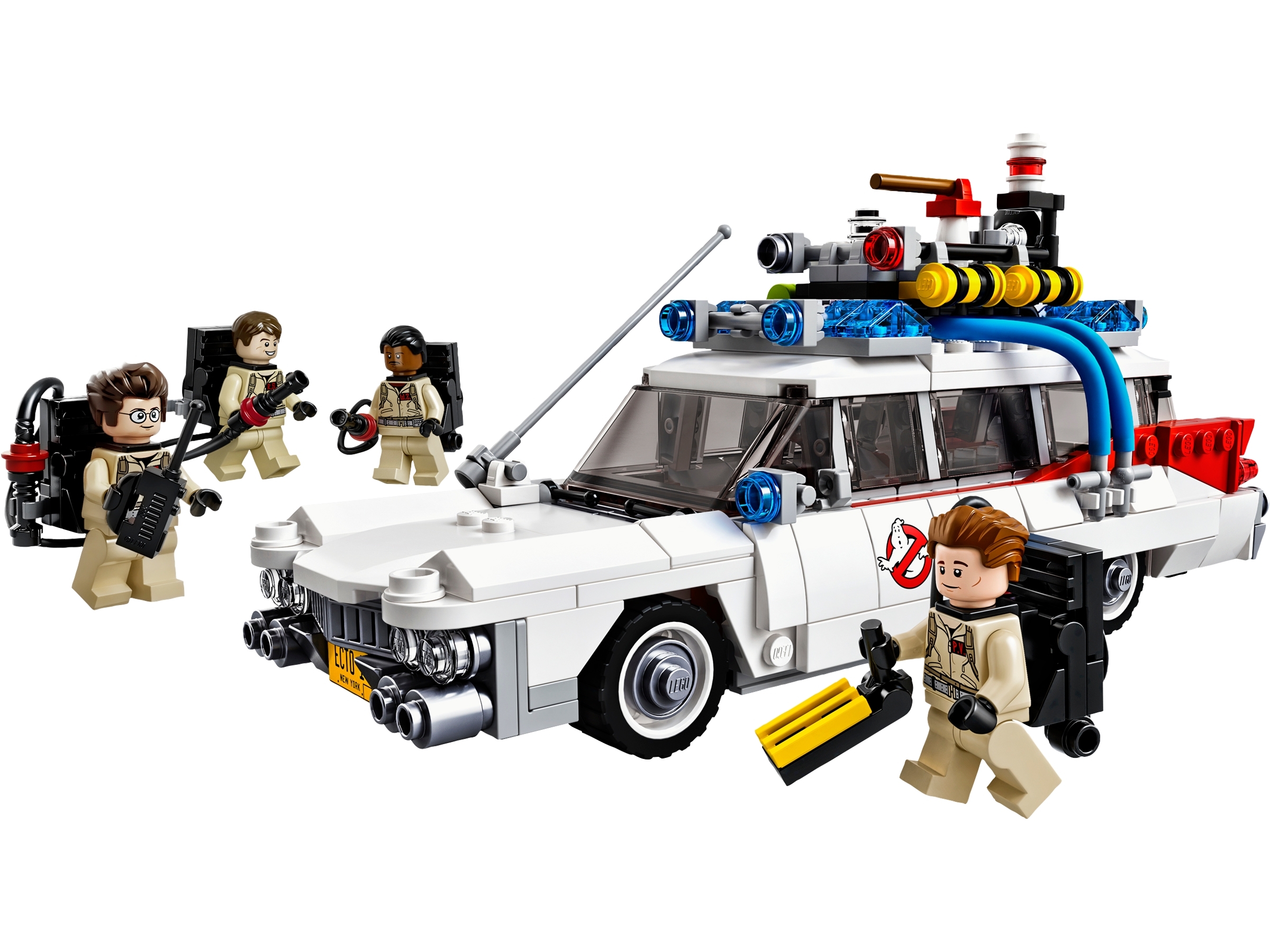
2014 also returned us to pop culture territory with the release of 21108 Ghostbusters Ecto-1. Drawing inspiration from the 1984 comedy horror movie, it’s an impressive tribute to one of cinema’s most famous vehicles.
Ghostbusters follows a trio of New York scientists – Peter Venkman, Ray Stantz and Egon Spengler – who are investigating the paranormal. After encountering a ghost at the New York Public Library, the three of them set up a ghost-catching business in a disused firehouse. Their exploits alert them to the return of a malevolent god, which threatens the safety of the entire world.
In the early stages of their business, the Ghostbusters acquire a vehicle – Ecto-1 – which they use to travel around New York more easily. This vehicle uses a 1959 Cadillac Miller-Meteor Ambulance as a starting point. It has many distinctive features: retro bodywork, a white and red colour scheme, flashing lights and – of course – the ‘no ghosts’ logo.
Like Back to the Future, Ghostbusters became an ‘80s pop culture phenomenon. Several other films, TV shows and comic books were released in the wake of the original film, although arguably none of them captured the original’s lightning-in-a-bottle success.
The LEGO Ecto-1 captures the look of the original very effectively, featuring a few interesting examples of building techniques and parts usage. Its silver hubcaps are recreated with dumb-bell weights, while its windows are installed at a slight angle via clips and modified plates. The jumble of equipment atop the Ecto-1 is also used to hold a long rubber hose in place, in a particularly unusual move for a LEGO set.
While strong overall, this Ecto-1 suffers from a similar problem that 21103 The DeLorean Time Machine does. It can only accommodate three minifigures inside itself, leaving a fourth to cling to the outside. Fortunately this problem was resolved in 75828 Ecto-1 & 2, which recreates the reboot’s version of the vehicle.
The proton packs used by the Ghostbusters are similarly interesting. Each one is identically constructed, and uses a printed slide shoe to represent the pack’s cyclotron. The hose for each neutrona wand is depicted with a flexible whip piece; this allows the wand to be used or holstered as play demands.
Ironically, the Ghostbusters themselves are a bit underwhelming. Their uniforms lack the iconic ‘no ghosts’ patch on their arms (although it is printed on the back), possibly as a result of the theme’s early design limitations.
Certain hair elements are also inaccurate, as more suitable versions weren’t in production at this time. These issues were fixed in 75827 Firehouse Headquarters, although – as its price will only go up – it’s a rather pricey fix for the casual fan.
21109 Exo-Suit
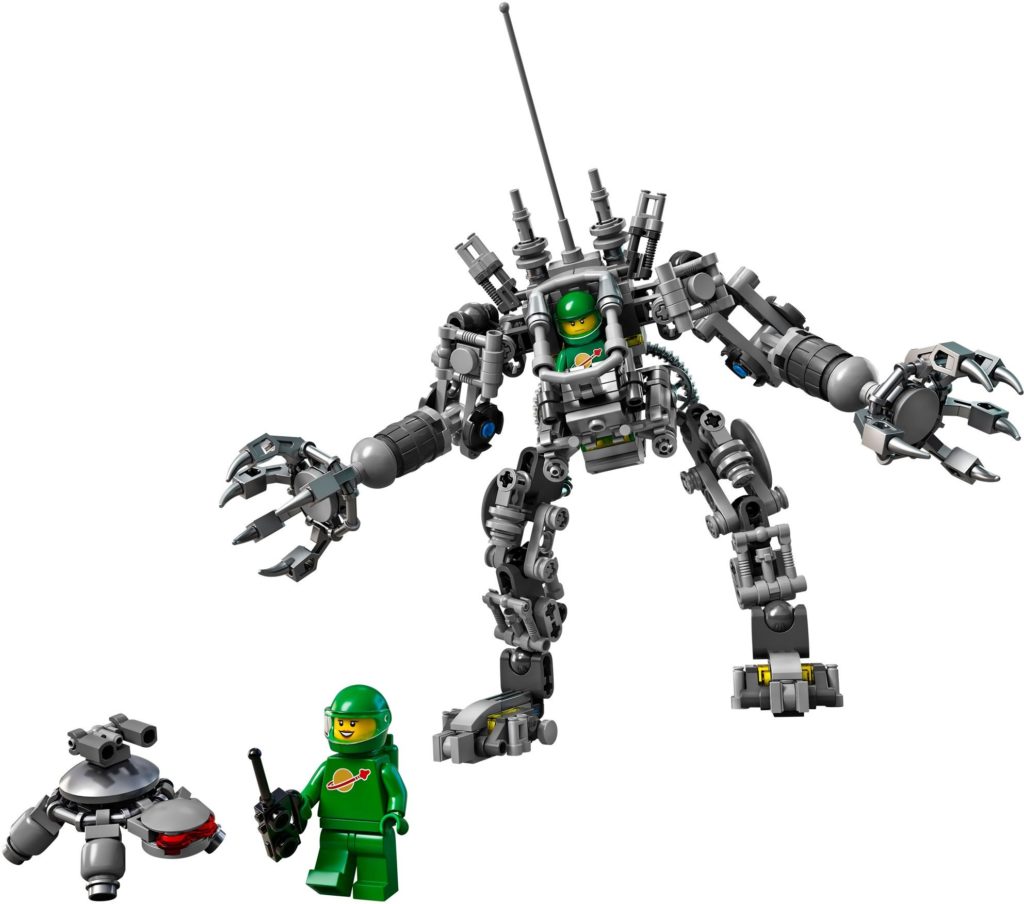
The LEGO Ideas theme returned to space with 21109 Exo-Suit. Even now, this is one of the more striking releases in the broader Ideas theme.
At the time it was hugely significant, being the first Ideas set that didn’t draw direct inspiration from an existing model or IP. Fortunately, this is something that’s become a little more commonplace in the theme going forward.
21109 Exo Suit references the Classic Space theme, but approaches it from a slightly different direction. Its main attraction is a hulking, retrofuturistic mech suit, which can be piloted by a minifigure. This helps to make it a fascinating spiritual successor to that earlier period.
The Exo Suit is covered in exposed mechanical detail including a protective cage, twin exhausts, power generators and a tall radio antenna. This help to reflect the set’s retro theming, whilst lending the suit a high degree of texture and visual interest. Its utilitarian design is reflected in its colour scheme; the suit relies upon varying shades of grey, with occasional highlights of transparent yellow.
A single printed tile (which may represent some kind of radiator or heat sink) is positioned upside down on the Exo Suit. It’s also very posable; its arms and legs enjoy a high degree of articulation, allowing it to simulate walking or even stand on one leg.
To add additional play value, the Exo Suit comes with a pair of minifigures. These may prove the biggest draw to fans of a certain age; they reference the original Classic Space uniforms, but introduce a new green colour to the design. However, the original style of Classic Space helmet has been replaced with a modern version.
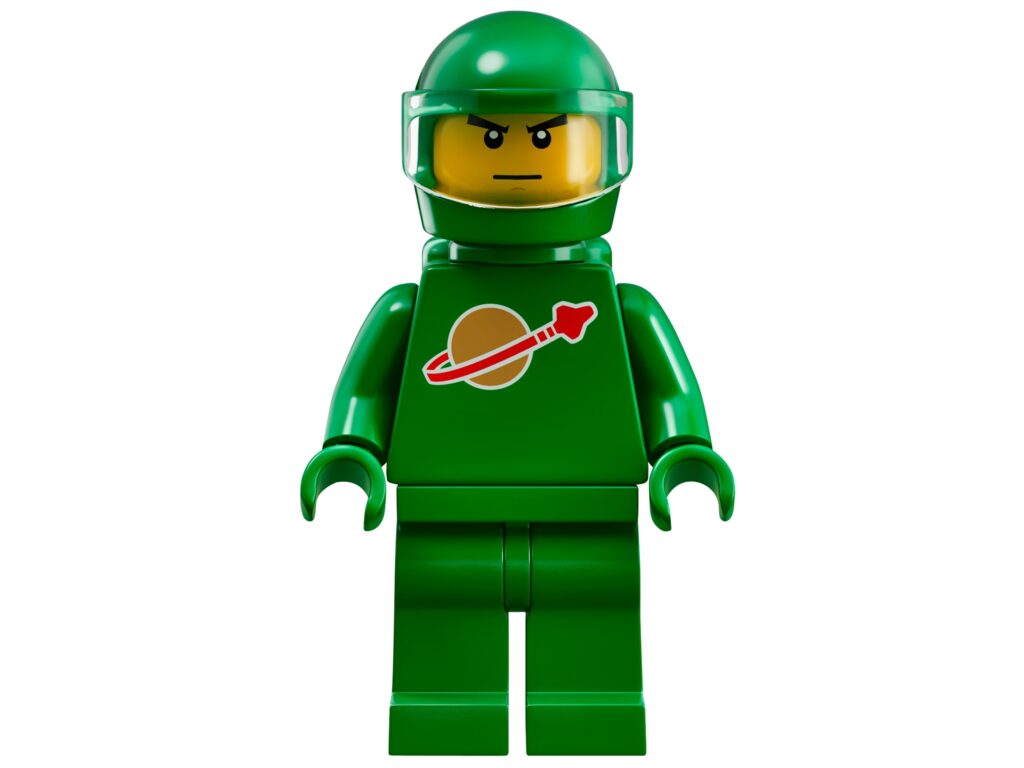
A small robotic turtle and a brick-built platform can also be found in this set. This in turn comes with a pair of barrels, which the Exo Suit can pick up with its clawed hands. For LEGO Space fans – of any era – 21109 Exo Suit is an excellent choice, even if it can be fragile in places.
21110 Research Institute
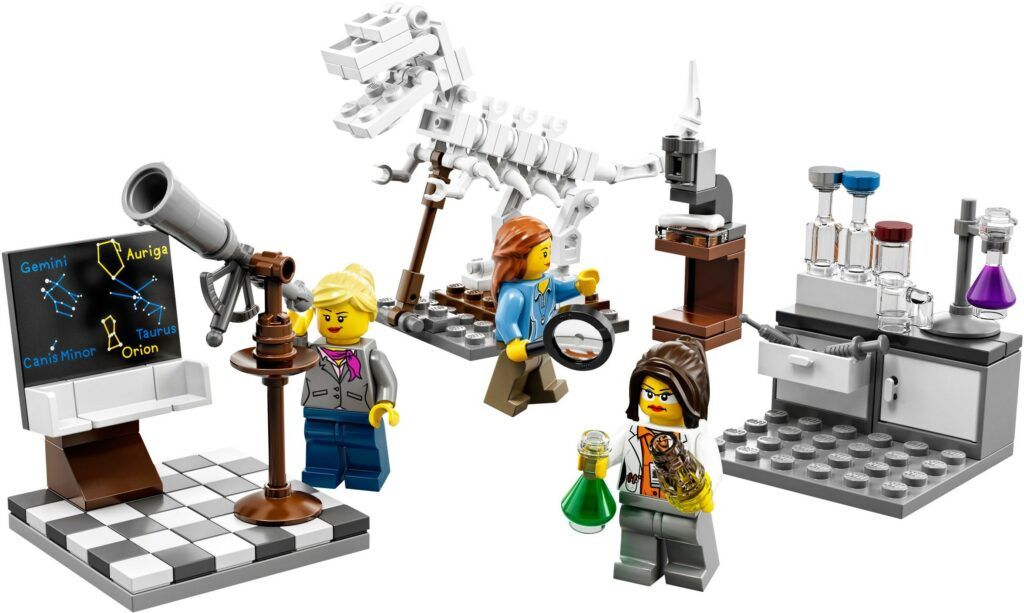
The Ideas theme continued its non-licensed streak with 21110 Research Institute. This unusual model depicts three tiny vignettes, each representing a different scientific discipline. Chemistry, astronomy and paleontology are all referenced here, with an accompanying minifigure in each case.
The chemistry vignette features a range of items for the chemist to use, including a cabinet, a chest of drawers and several bottles and flasks. There’s also a pair of syringes to allow for transfer of liquids. The accompanying scientist receives a new torso print and a suitably stern expression; this can be swapped for a shocked one, suggesting not all her experiments go to plan.
The astronomer has an intricate, brick-built telescope to look through, which sits on a small chunk of tiled flooring. The telescope puts some existing parts to interesting use, including a bucket for the end of it. An exclusive printed tile is also included here, with a number of real-life constellations appearing on it.
Nice as the telescope is, the paleontology area may be the most interesting. It features an impressive dinosaur skeleton built from an array of white elements; the skull of the dinosaur can also move back and forth, while its jaw can open and close. A magnifying glass and a microscrope (with a small bone to examine) are also included.
Like her chemist colleague, the paleontologist in this set has two expressions; one cheerful, and one angry. Perhaps she’s discovered these bones are fake.
With an interesting mix of subject matter, 21110 Research Institute enjoys a broad appeal amongst LEGO fans. While it may be tricky to fully integrate this set into a broader LEGO scene, there’s still a lot to like here.
21301 Birds
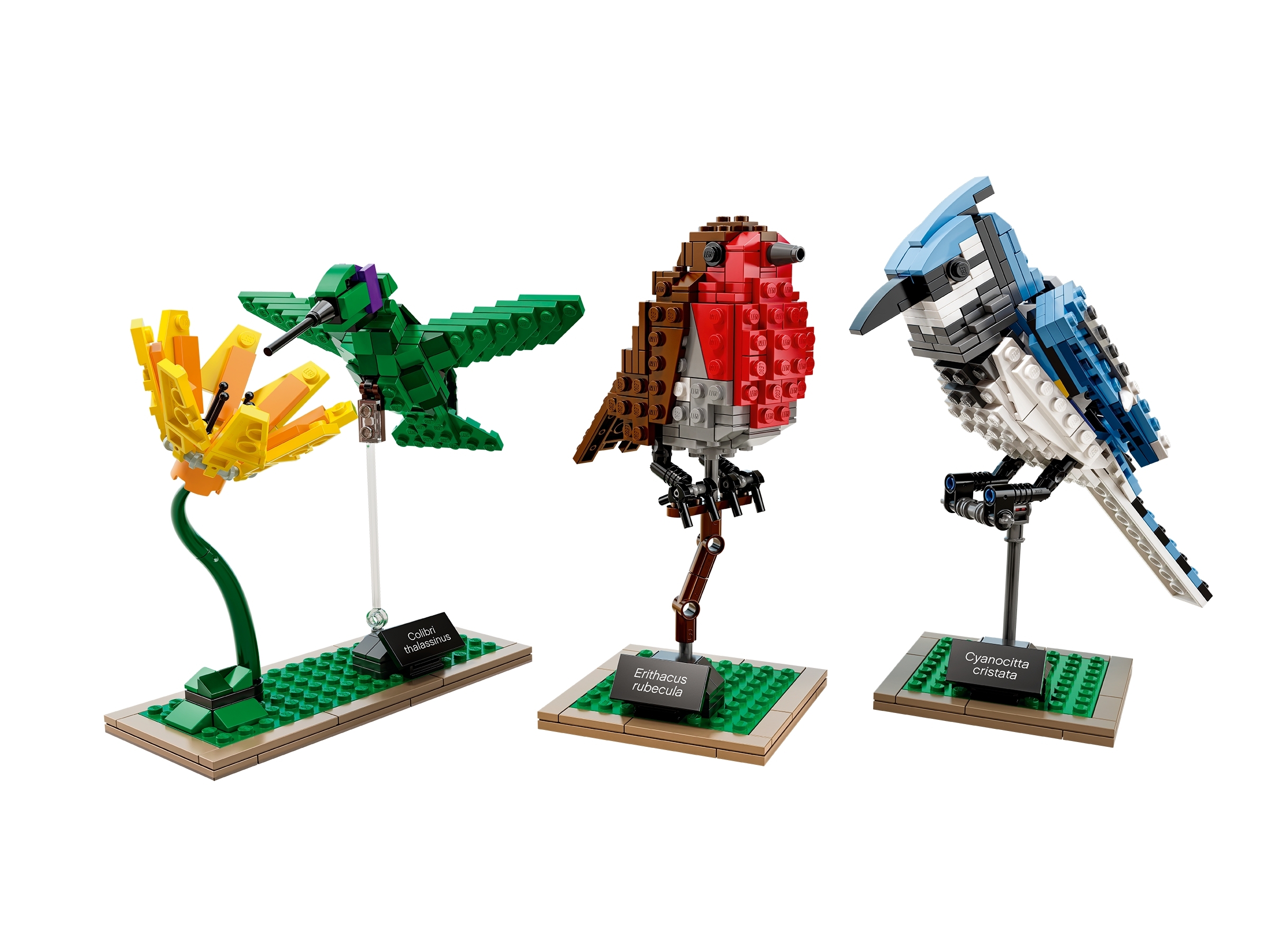
The next Ideas set took us into the natural world. 21301 Birds (released in 2015) scores another hat trick with three complementary builds. Each one recreates a different feathered friend, with a few different parts of the world represented.
The blue jay is native to the eastern parts of North America, although some can also be found in southern Canada. As the name suggests these birds have splendid blue plumage, with highlights of black and white. The blue jay is significant in human culture; they are mentioned in African American folklore, and have also been adopted as the mascot of the Toronto Blue Jays baseball team.
This version replicates many of its inspiration’s features. Various shades of blue are used to recreate the blue jay’s plumage, with stripes of blue and black on its tail. A simple stand (built from Technic elements) is provided for it to perch on, although the model does lose some detail from its feet as a consequence.
The European robin makes its home in many regions of the world. While it can (as you may have guessed) be found across Europe, it also makes its nest in Siberia and North Africa. The bird is renowned for its orange breast and face, and has become a common symbol of the Christmas period.
The LEGO robin here uses red pieces in place of orange, which produce a pleasing contrast with the brown and grey elements on it. Its design is a little boxier than the blue jay, although this represents its rounder body quite effectively. It enjoys its own perch, with angled Technic pieces suggesting wooden texture.
The third bird in the set is a species of hummingbird – specifically, a Mexican violetear. These birds can be found throughout Mexico and Nicaragua, where they feed on nectar and small insects. In some respects they are a mystery to us: we don’t fully understand their seasonal movements, with populations found outside their usual migration patterns.
Its LEGO tribute uses stacked, angular plates to depict its flapping wings. Most of its plumage in green, although a pair of purple tiles presumably reference the ‘violetear’ of its name. A long bar represents its beak, with a large, yellow flower provided for it to feed from. Unlike its fellows, this bird is attached to a transparent element to simulate flight.
All three birds come with a simple display stand with a grassy surface. Their Latin names are printed on attached tiles, reinforcing this is a set for the more serious LEGO builder.
21302 The Big Bang Theory
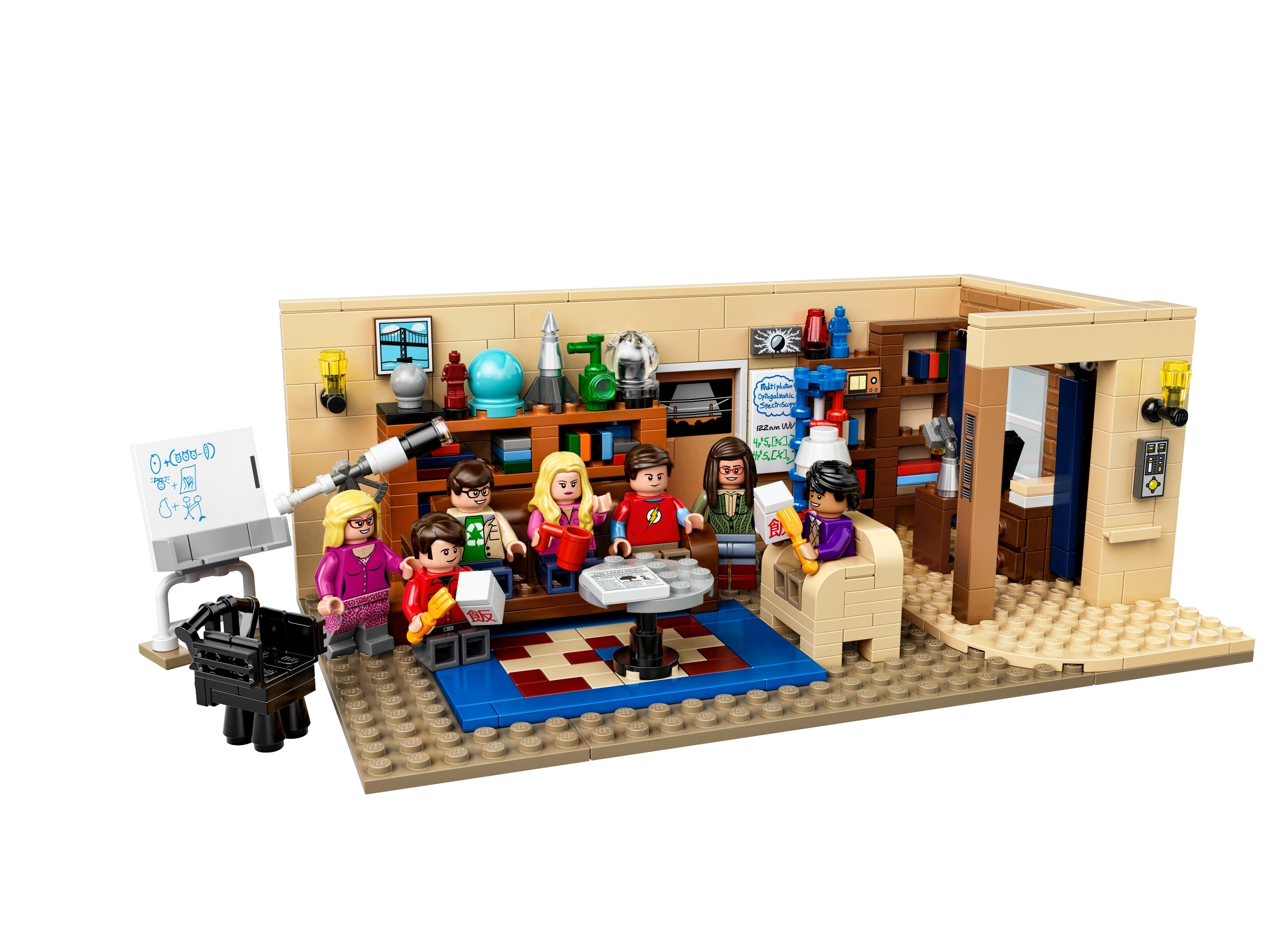
The second 2015 Ideas release was 21302 The Big Bang Theory. This set draws inspiration from the popular sitcom, which aired 279 episodes from 2007 to 2019. It follows a quintet of nerdy characters living in Pasadena, California, with various references to nerdy media and celebrity cameos. Despite a rocky start the sitcom went on to critical success, winning seven Emmy awards over its lifespan.
The LEGO version depicts Leonard and Sheldon’s living room, and is packed with details. In addition to the usual living room trappings (like a sofa, chairs and tables) there are some more unusual items, reflecting the nerdy pursuits of the residents. A lantern from the Green Lantern comics appears on one shelf, while a model of a DNA helix is near the door. There’s also a telescope and a whiteboard here, allowing for plenty of play opportunities.
An impressive seven minifigures are included in this set. Sheldon and Leonard are obviously included, as are their friends Penny, Howard Wolowitz, Raj Koothrappali, Benradetter Rostenkowski and Amy Farrah Fowler. The minifigures benefit from intricate printing: Raj, Bernadette and Amy are particular highlights, thanks to the complex patterns on their legs and torsos.
While The Big Bang Theory wasn’t an obvious inspiration for a LEGO set, this is still a pretty nice model on its own merits. It was also pave the way for several more LEGO sets inspired by sitcoms, both inside and outside the Ideas theme.
21303 WALL-E
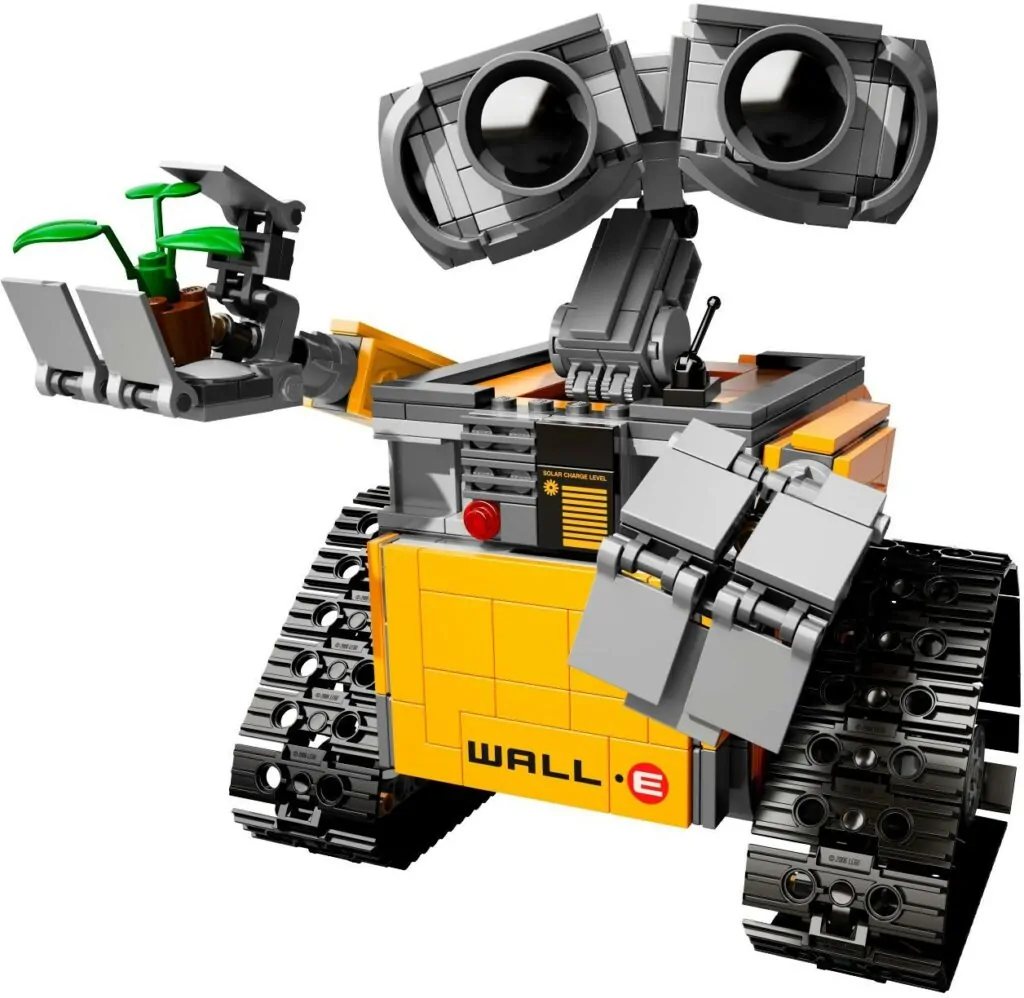
21303 WALL-E (another 2015 release) took the idea of licensed LEGO sets in a very different direction. This set is a tribute to the 2008 sci-fi Pixar film of the same name. It recreates the adorable robot of the same name, albeit with uneven attention to detail.
Hundreds of years in the future, a garbage-strewn Earth has been abandoned by humanity. WALL-E is the last operational robot on earth, and has found himself growing lonely after decades of operation. When another robot called EVE arrives on the planet WALL-E instantly falls in love, and embarks on an epic interstellar adventure in pursuit of her affections.
Within the movie WALL-E is one of several trash-compactor robots, designed to clean up Earth in preparation from humanity’s return. Like all robot names in the movie, WALL-E is actually an acronym; it stands for Waste Allocation Load Lifter, Earth-class.
As such his body is extremely boxy, and he uses a large pair of caterpillar tracks to navigate uneven terrain. The LEGO version is able to recreate this square design very easily, with existing track elements used to represent his ‘feet’.
Other aspects of the movie version are preserved in the LEGO version. His body is hollow and – like the movie – he can lower a flap to store objects inside himself. However, he can’t fold into a perfect cube as his on-screen counterpart does. Detailing on his back recreates the pistons used to crush trash, though they’re purely decorative here.
Two large, shovel-like hands allow WALL-E to gather up trash for compacting. These possess a high degree of articulation, with multiple joints on each finger able to move independently.
Of course, one of WALL-E’s most famous features is his expressive eyes. Their shape has been captured very effectively, with black slide shoes uses to represent their lenses. Wiring on the back of the eye assemblies offers impressive accuracy to the source material.
Unfortunately, early releases of the set were spoiled by a design flaw. The joint between WALL-E’s head and neck was notoriously loose, making it difficult to pose WALL-E’s head properly. A revised design was eventually introduced, but this is still a surprising oversight on the part of the LEGO Group.
Two smaller accessories are included with 21303 WALL-E. Hal – WALL-E’s pet cockroach – is recreated with a small plate and a lever assembly. It may be one of the simplest LEGO animal designs of all time, but it captures the essence of the character reasonably well.
The other accessory in the set is a plant, which serves as the film’s MacGuffin. Like Hal, it’s similarly simple; it uses a round, brown element with a pre-moulded plant piece stuck on top. It can even be kept safely in WALL-E’s internal storage compartment, enhancing an already impressive model.
21304 Doctor Who
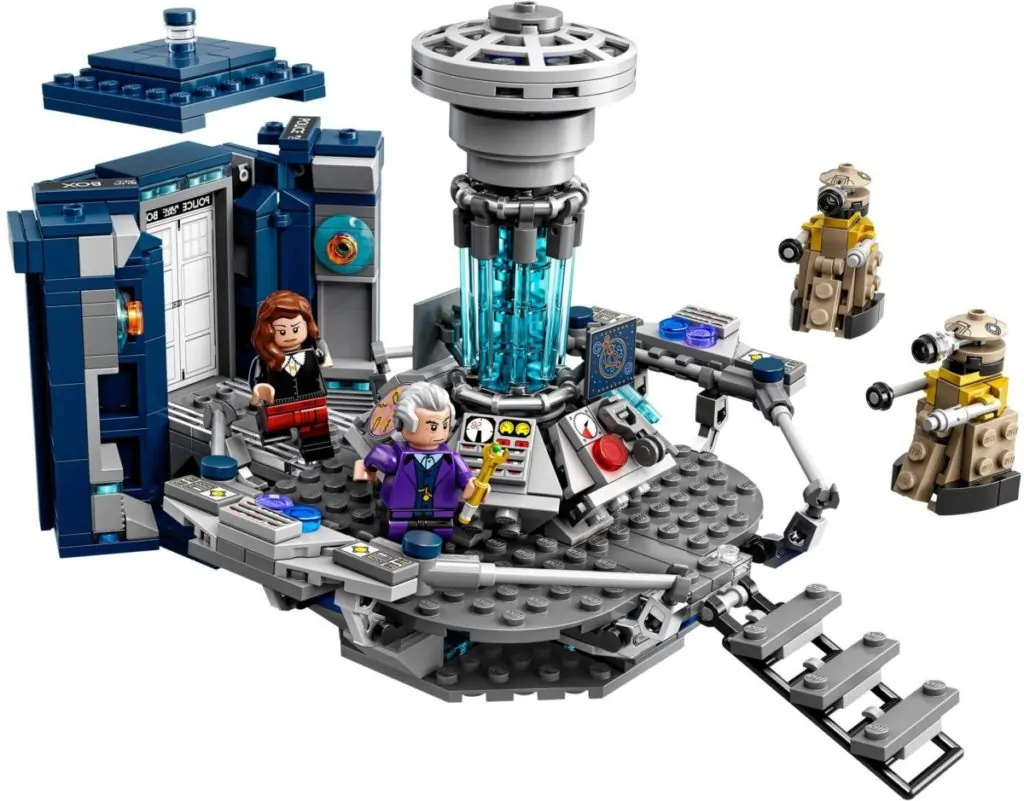
2015 continued its sci-fi streak with 21304 Doctor Who. This set is based on the beloved British science fiction series, and includes one of its main locations. It is impressively faithful to its on-screen counterpart, although its use of generic components does undermine it somewhat.
Doctor Who launched in 1963 and follows the adventures of the Doctor – a shapeshifting alien of immense age and knowledge. The Doctor travels through time and space in a vessel known as the TARDIS, fighting alien threats across the universe. They’re joined on their adventures by various companions, most of which originate on Earth at the time of the show’s broadcast.
The show initially ran until 1989, with a one-off movie continuing the story in 1996. The show was revived properly in 2005, and has continued on BBC channels ever since. A wide fanbase has sustained the show through various actors and showrunners over the years.
21304 Doctor Who references a specific episode of the show called The Time of the Doctor. This was the show’s 2013 Christmas special, and saw the Doctor regenerate into his twelfth incarnation. The episode also featured appearances from notorious enemies like the Daleks and the Weeping Angels, making it a great inspiration for a LEGO set.
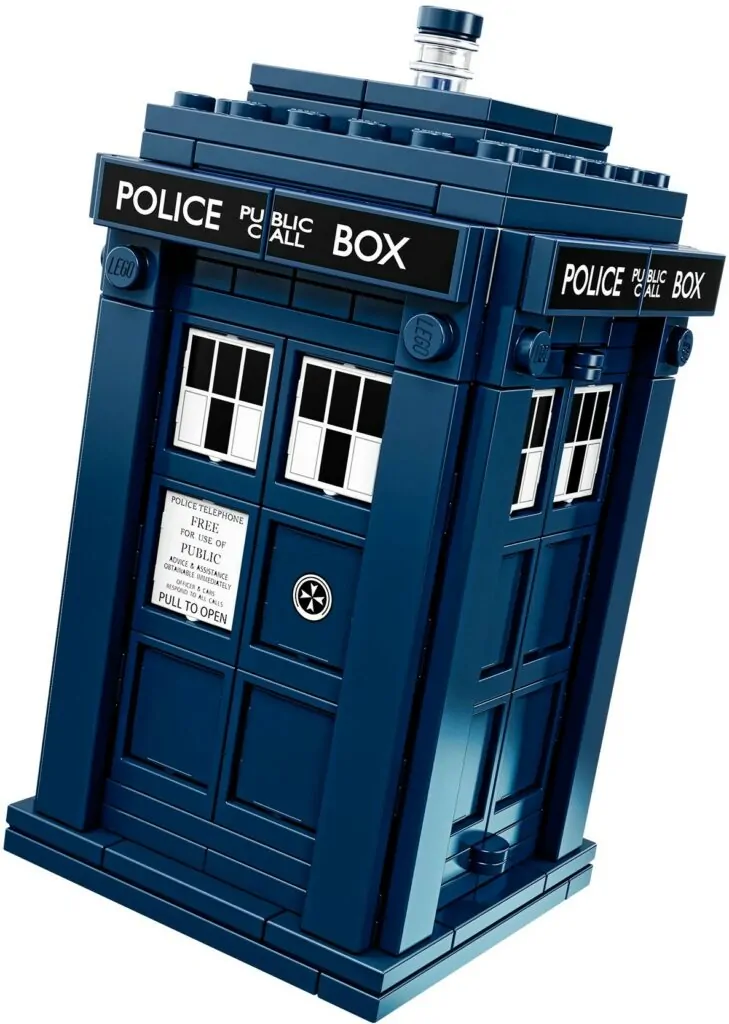
Most of the set’s pieces go into constructing the TARDIS – the Doctor’s time machine, which possesses near-limitless internal space. Its exterior resembles a 1950s police box (used by British police in the 20th century) thanks to a malfunctioning camouflage system.
Interestingly, the LEGO version is able to recreate both its exterior and interior. The rear section of the police box can unfold, allowing it to connect to the TARDIS’ internal control room. Opaque window panes and frames are used to depict the box’s external wooden panelling. It can also be displayed as a standalone model, with numerous printed elements ensuring maximum accuracy.
The TARDIS’ control room can change its appearance, with new versions often debuting with new Doctors. Here it appears as it does in the show’s seventh season. Following the loss of his companions, the Eleventh Doctor scraps its warm, whimsical appearance for one that’s colder and more serious.
As such there are plenty of blues and greys to be found here: the tall ‘time rotor’ at the center uses transparent blue elements to depict its glowing components. The flooring, secondary control panels and rear staircase are also present, helping to create a better sense of space.
Six control panels appear around the time rotor. These are very faithful to the on-screen version, although the use of generic printing does compromise their accuracy a little. That said, the set does use a few unique prints that reflect the TARDIS’s controls and computer screens.

Three heroic minifigures appear in this set: two versions of the Doctor, and his contemporary companion Clara Oswald. Within the show the Doctor can ‘regenerate’ to heal from mortal injury, although his personality and appearance usually change as a consequence. As such both the Eleventh and Twelfth Doctors appear in this set, reflecting the Eleventh Doctor’s departure in this episode.
Each of the Doctor’s minifigures are very faithful to their on-screen versions. Different facial expressions capturing their radically different personalities; the Eleventh Doctor is jovial, while the Twelfth Doctor is more stern. The Eleventh Doctor also comes with a fez (an item of headgear he becomes fond of) and both Doctors can wield a bespoke sonic screwdriver element.
Unfortunately the Eleventh Doctor’s outfit is inaccurate to this particular episode, while the Twelfth’s is of very limited utility. The appearance of the latter’s ‘standard’ outfit in 71204 Doctor Who Level Pack helps this set feel a touch cynical.
Clara Oswald fares much better; her black jumper and tartan skirt are near-perfect recreations of her outfit. She also comes with two expressions: a happy one, and another that is more perturbed.
Of course, Doctor Who is nothing without its monsters. The Daleks are a natural inclusion; these mutant menaces were the first aliens to appear in the show, and remain one of the Doctor’s most feared enemies. Two appear here in their modern-day colour scheme, with a mix of black, brown and gold elements used to recreate their armoured travel machines.
Exposed studs represent their ‘bumps’ very effectively, with their various armaments depicted using bars, pegs and hollow studs. There’s also some subtle printing on their heads, which depict the flashing lights normally to be found there.
A single Weeping Angel minifigure can also be found in this set. These ancient creatures appear as stone statues when observed, but transform into deadly predators when they’re out of view. As such the angel has both serene and malevolent expressions to depict its hostile intentions, capping off a tremendous Ideas set.
21305 Maze
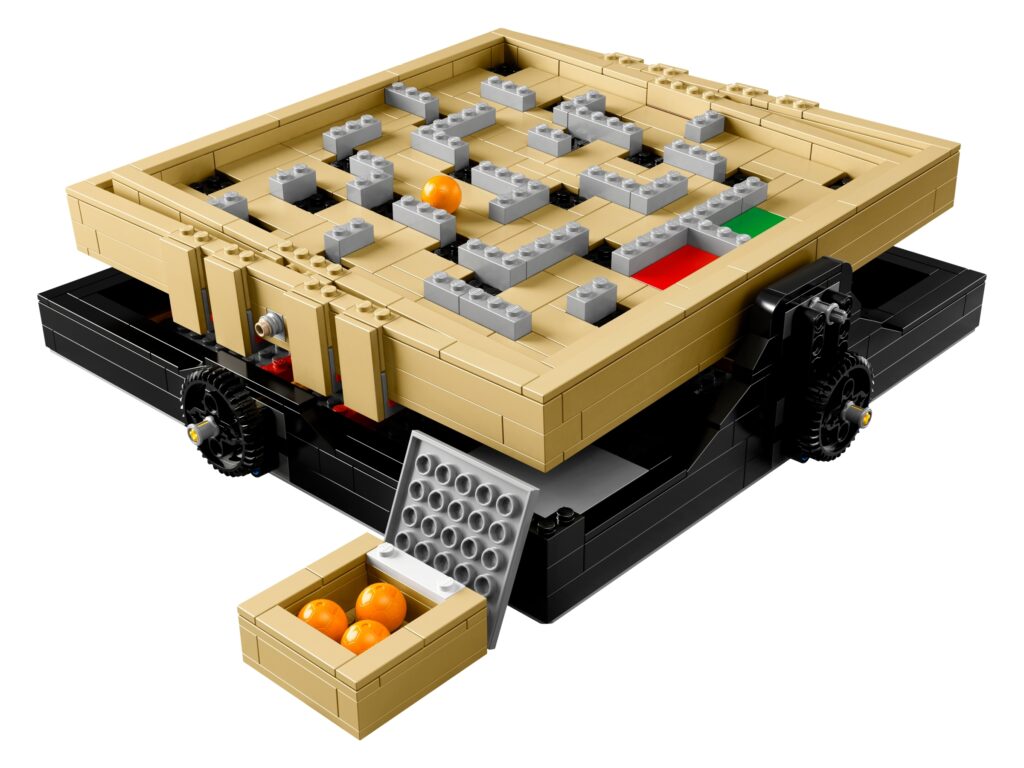
2016 took the Ideas theme in another new direction. 21305 Maze nods to tilting wooden maze toys, which have been a staple of childhoods for many years. By tilting a wooden maze in different directions, you can guide a ball around various obstacles to reach a goal.
This tilting is achieved using a sophisticated mechanism under the maze itself. This is activated via two gear wheels, which each tilt the maze in a different direction. By using both gear wheels together, you can guide the ball around the maze – at least in theory.
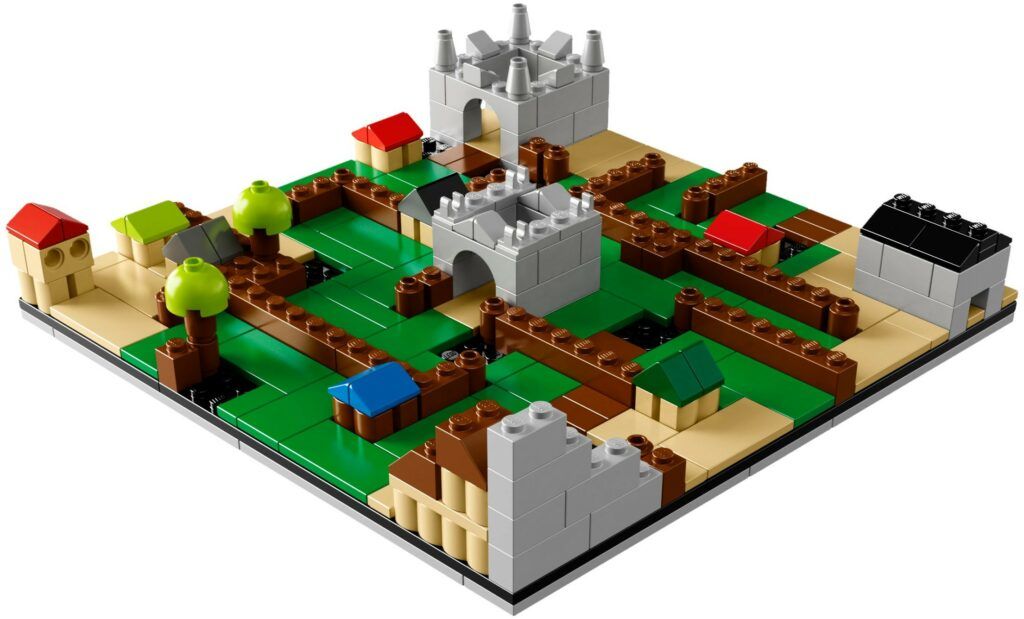
Two different mazes can be built (one at a time) in this set – one abstract, one styled after a medieval village. Each has a different layout but the same basic play functionality. If your ball falls onto a black studded surface, you must start the maze over from the beginning.
Although it’s an impressive feat of engineering, 21305 Maze does suffer from some of the toy’s limits. By using an array of tiles instead of a perfectly smooth surface, the ball can potentially get stuck in the cracks between them. The ball itself can also cause problems thanks to a flat spot on its outer surface, which may affect its ability to roll smoothly.
21305 is an interesting concept for the Ideas theme to explore. However, in practice, it may not be the best showcase for what LEGO is capable of.
21306 The Beatles Yellow Submarine
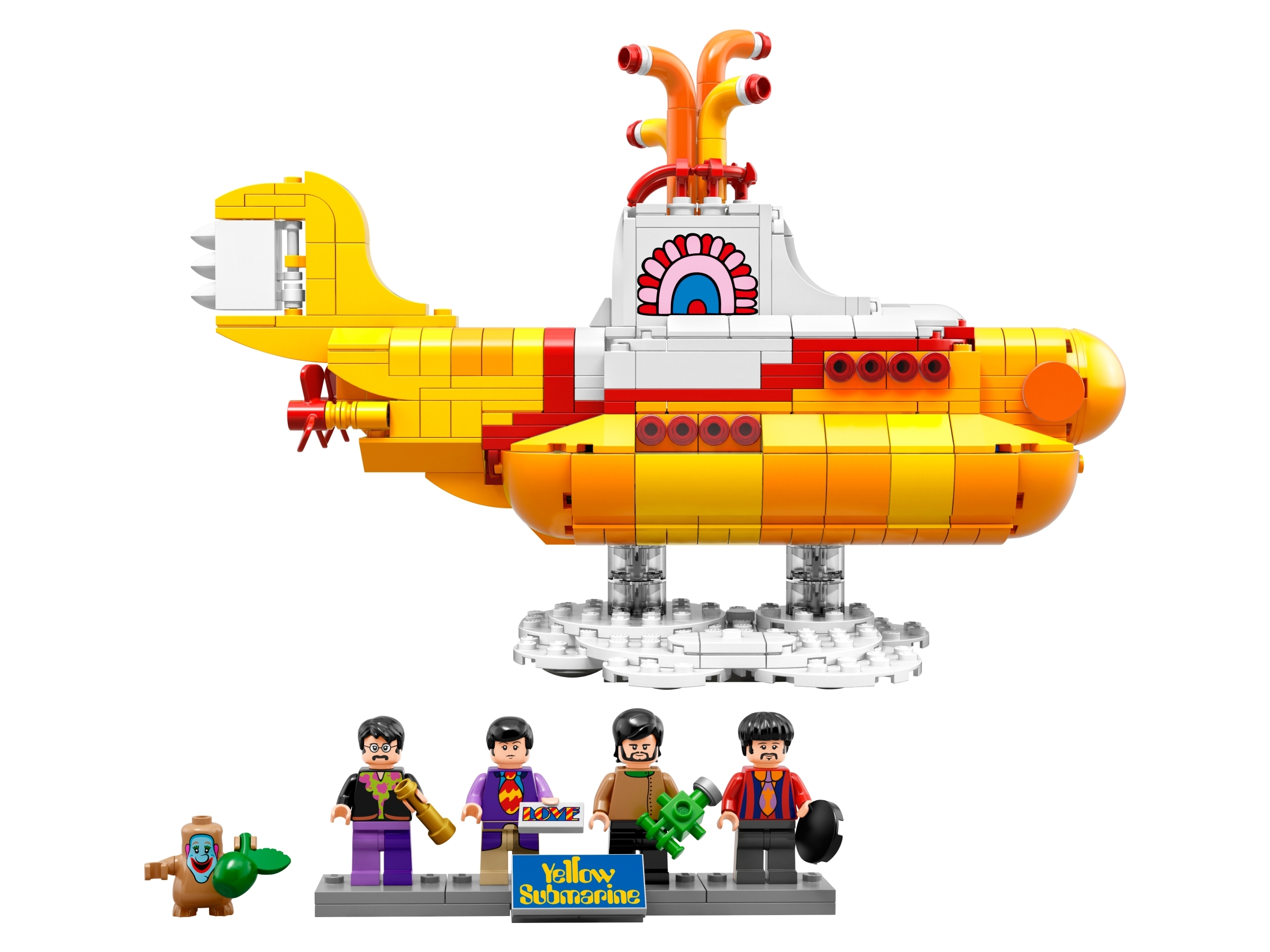
We continue through 2016 with a return to licensed territory. 21306 The Beatles Yellow Submarine is a tie-in with Yellow Submarine, a 1968 animated movie inspired by the Beatles’ music. The film earned a highly positive critical reception upon its release thanks to its psychedelic animation style; a restored version was released on DVD and Blu-Ray in 2012.
Yellow Submarine tells the story of Pepperland – an undersea utopia with an enduring love of music. When Pepperland is invaded by the music-hating Blue Meanies, a citizen of Pepperland – called Fred – is dispatched in the submarine for help. Eventually Fred stumbles across the Beatles and the five of them return to Pepperland, travelling through many surreal worlds along the way.
The Yellow Submarine is one of the most familiar images associated with The Beatles, and it’s recreated here with impressive accuracy. There are some slight deviations from the source material; its upper white section should – strictly speaking – be beige, and its underside is a little too flat.
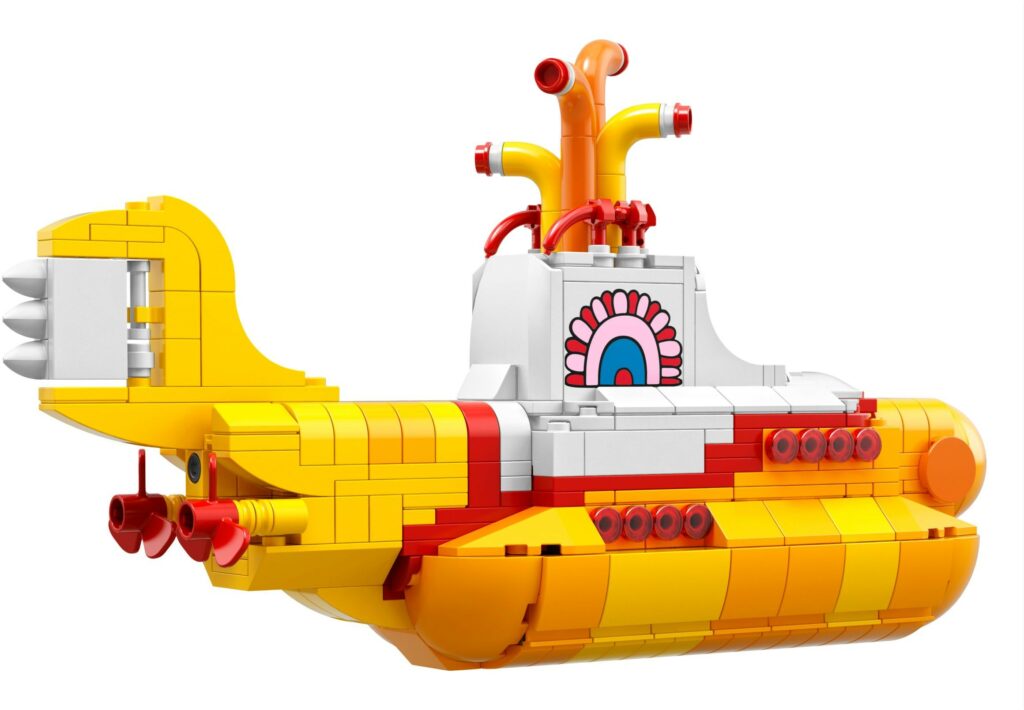
However, this allows it to be mounted to a display stand. The stand resembles a cloud, in a possible nod to the sub’s ability to fly. A small display stand for the four Beatles minifigures is included as well.
The submarine is rather out of scale with minifigures, although – by removing a top section – it can accommodate all four Beatles very easily. The interior surfaces of the submarine are decorated with printed bricks that reference the sub’s control panels and pipework. These are all highly accurate, and one tile displays the year 1968 – a reference to the film’s release date.
Each of the Beatles wears a distinctive outfit within the movie, with most of the LEGO versions true to their movie counterparts. Paul is an exception; his LEGO jacket is purple rather than brown, and only one sleeve should be lighter. That said, it does appear as purple in some other contexts.
After passing through the Sea of Monsters the Beatles encounter an eccentric creature called Jeremy, who joins them for the last leg of their journey. Jeremy’s squat shape suggests a design challenge in LEGO form, but he puts an element from the NEXO KNIGHTS theme to great use. His small pink tail is also represented, although his long nose is printed rather than sculpted.
A handful of curious accessories can be stored in a rear compartment of the submarine. These appear towards the end of the film, during a live-action cameo from The Beatles themselves.
A telescope, the submarine’s motor and a hole (from the movie’s Sea of Holes) are included here, as is a tile with the word ‘LOVE’ on it. Jeremy is also given a green apple to hold; this may reference the film’s villainous Apple Bonkers, or the Apple record label.
While one of the lesser-known licensed properties in the Ideas theme, this is still a treat for movie fans. The Beatles would prove a viable licence in future LEGO sets, as 31198 The Beatles would demonstrate.
21307 Caterham Seven 620R
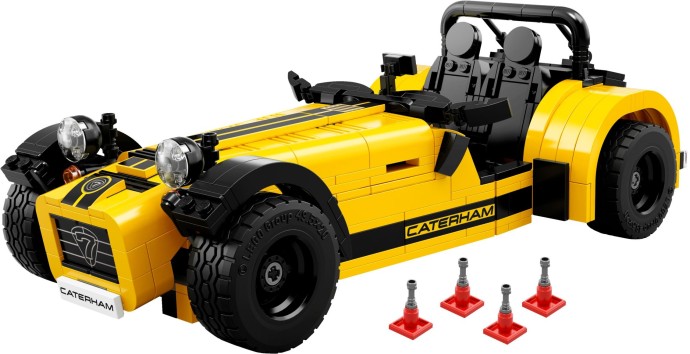
We close out 2016 with 21307 Caterham Seven 620R, a large-scaled LEGO sports car. In real life it’s produced by British manufacturer Caterham Cars, which specialises in lightweight sports vehicles.
The Caterham Seven 620 is their fastest production road car, offering 310 brake horsepower for anyone brave enough to drive it. It can go from 0–60 in 2.79 seconds and reach a top speed of 145mph.
The LEGO Ideas version comes with a cheerful yellow colour scheme and a long nose, which tapers towards the front. It’s scaled a little too large for minifigures to drive, although its cockpit is fully detailed with a steering wheel, dashboard gauges and pedals. Unfortunately working steering – a feature of the original submission – is absent from this model.
Many more nice features can be found on the car’s exterior: prominent brick-built exhausts, a printed petrol cap and printed brake discs. These are actually concealed under the wheels, requiring you to remove them altogether to see them.
When compared to the more toy-like LEGO sets that preceded it, 21307 Caterham Seven 620R may have been a welcome change of pace. This style of serious, realistic LEGO car designed has persisted in the Technic, Creator Expert and Speed Champions product lines.
2017–2019
As we approach the next decade, we see the Ideas theme take a big step forward. LEGO Ideas sets become much larger, more complex and more expensive than in the past. That said, this shift didn’t happen right away; the first Ideas set of 2017 plays it much safer in its broader design.
21308 Adventure Time
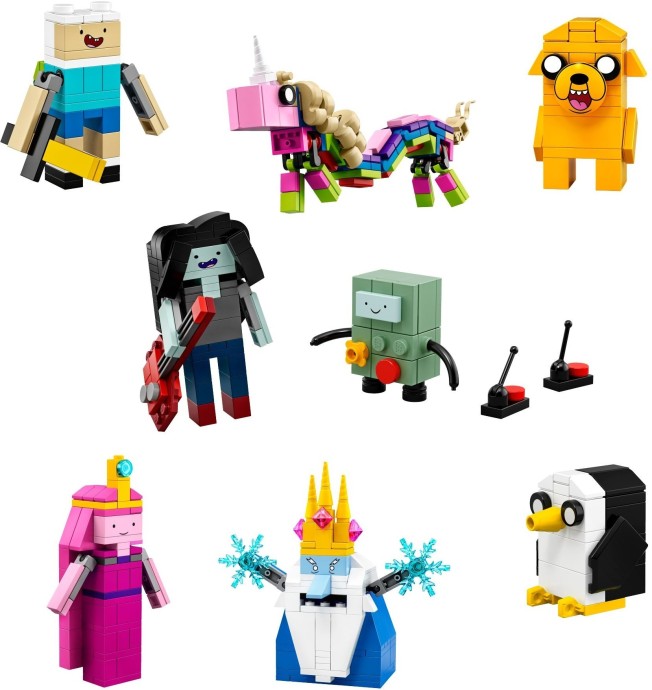
21308 Adventure Time includes several characters from the hit animated TV show. Set on a far-future Earth, the series follows Finn – one of the world’s few remaining humans – and his best friend Jake, a magical shapeshifting dog. The two of them embark on epic adventures across the Land of Ooo, meeting many of its colourful inhabitants as they do so.
Despite its young target audience, Adventure Time attracted broad interest thanks to its intricate worldbuilding and emotional depth. It has also won a variety of awards, including one from music magazine Kerrang!. As such, a LEGO Ideas set was a natural fit.
Rather than producing a range of minifigures, 21308 Adventure Time includes several brick-built creations at a larger scale instead. They’re a good fit for the series’ simple art style, although a few colour inaccuracies do spoil their overall appearance.
As the series’ main characters, Finn and Jake are natural choices for a set like this. Finn features his classic blue outfit, green backpack and yellow sword, as well as a happy expression. His arms can swivel on ball-and-socket joints, although his legs are unable to move.
Jake is generally a little shorter than Finn, with a rounded, potato-like body. His head relies upon an array of cheese slopes to capture its shape, which isn’t particularly effective in this context. However, his mouth – printed on the underside of a slide shoe – is an excellent addition to the set.
Finn and Jake live with BMO: a naïve, anthropomorphic games console. BMO’s overall shape is captured well here, although several buttons are missing from their front. Their noodly arms – represented here with sausage elements – are also black instead of blue, in another disappointing compromise. They come with two simple, brick-built controllers as accessories.
Princess Bubblegum and Marceline the Vampire Queen are two of Finn and Jake’s best friends in the show. The former features various shades of pink and purple, with long hair down her back and a bright yellow crown. The latter features a more subdued colour scheme with shades of grey, blue and black used in her construction. Her red bass guitar is included as an accessory.
The Ice King is a common antagonist in the series’ early episodes, although he is revealed to have more tragic aspects as the series progresses. He’s normally seen wearing a large blue robe, which gives his LEGO version a considerably larger body than the other characters.
His long white beard and pointy blue nose are captured here, along with the crown that gives him magical abilities. Two snowflake elements – attached to his hands – reference the Ice King’s frosty powers.
The Ice King commands an army of penguins, with one of them – Gunter – particularly beloved. Gunter is one of the strongest characters here thanks to their simple, rounded shape. A pair of NEXO KNIGHTS shield elements are used to represent their flippers.
Rounding out the set is Lady Rainicorn – arguably the most accurate of all the characters in this set. She is a rainbow-unicorn hybrid, and Jake’s girlfriend in the show. Her long, colourful body is depicted using a mix of vivid elements and hinge assemblies, giving her impressive flexibility. A flag and several Unikitty tail elements recreate her hair.
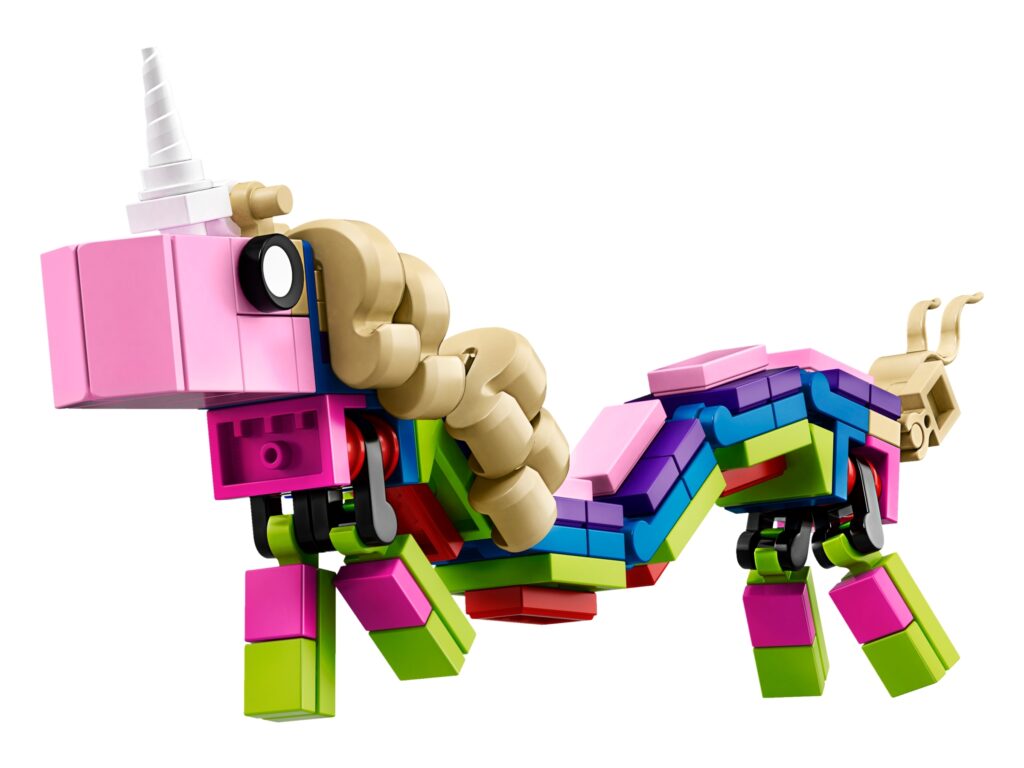
While certainly innovative, 21308 Adventure Time probably wasn’t the LEGO set we were looking for. The builds in it don’t always capture the essence of their characters in LEGO form, and it has limited compatibility with other LEGO sets. The Dimensions theme did give us minifigures of Finn, Jake, Lumpy Space Princess and Marceline, although again this wasn’t exactly the Adventure Time theme we would have enjoyed.
21309 NASA Apollo Saturn V

The next Ideas project – 21309 NASA Apollo Saturn V – would prove much more popular. The Saturn V was a powerful rocket built by NASA, with the ultimate goal of transporting humanity to the moon. The rocket was used for a number of test flights and other space missions from 1967; however, it wasn’t until 1969 that mankind would land on the moon itself. The last Saturn V rocket launched in 1973, carrying the Skylab space station into orbit as it did so.
The LEGO version of this legendary rocket first launched in 2017, measuring one metre in length. This makes it 110 times smaller than the real thing. To aid display of it in your home, a trio of brick-built stands allow it to be shown off horizontally.
Tiny models of the lunar lander and the command module are also included with this model, as is a trio of astronaut microfigures. This brings the total piece count for this set to 1,969: a neat reference to the year of our first successful moon landing.
The rocket itself exhibits impressive attention to detail, including complex engine assemblies and printed US flags on certain tiles. Although the exterior shape of the rocket is relatively simple, it relies upon a complex internal structure to support it.
Like the real thing, the LEGO Apollo Saturn V can easily break apart in sections. Taking it apart reveals more engines, which decrease in size the further up the rocket you travel. When you’re ready to ‘land’ on the moon you can take a look at the lunar lander, which features a mix of grey and gold elements. A chunk of the lunar surface is provided for it to sit on, alongside a tiny American flag.
The top section of the lunar module can detach from its base and reattach to the command module, which can – in turn – be depicted as it appears upon returning to earth. A round, blue tile depicts a stretch of ocean, and the module itself has four yellow flotation balloons attached to its top. A particularly creative bit of parts usage is its flotation collar, formed with eight orange click hinges.
21309 NASA Apollo Saturn V proved so popular it was actually rereleased with a different product number. 92176 NASA Apollo Saturn V released in 2020, and is identical to the original. Clearly, this is an out-of-this-world set amongst LEGO fans.
21310 Old Fishing Store
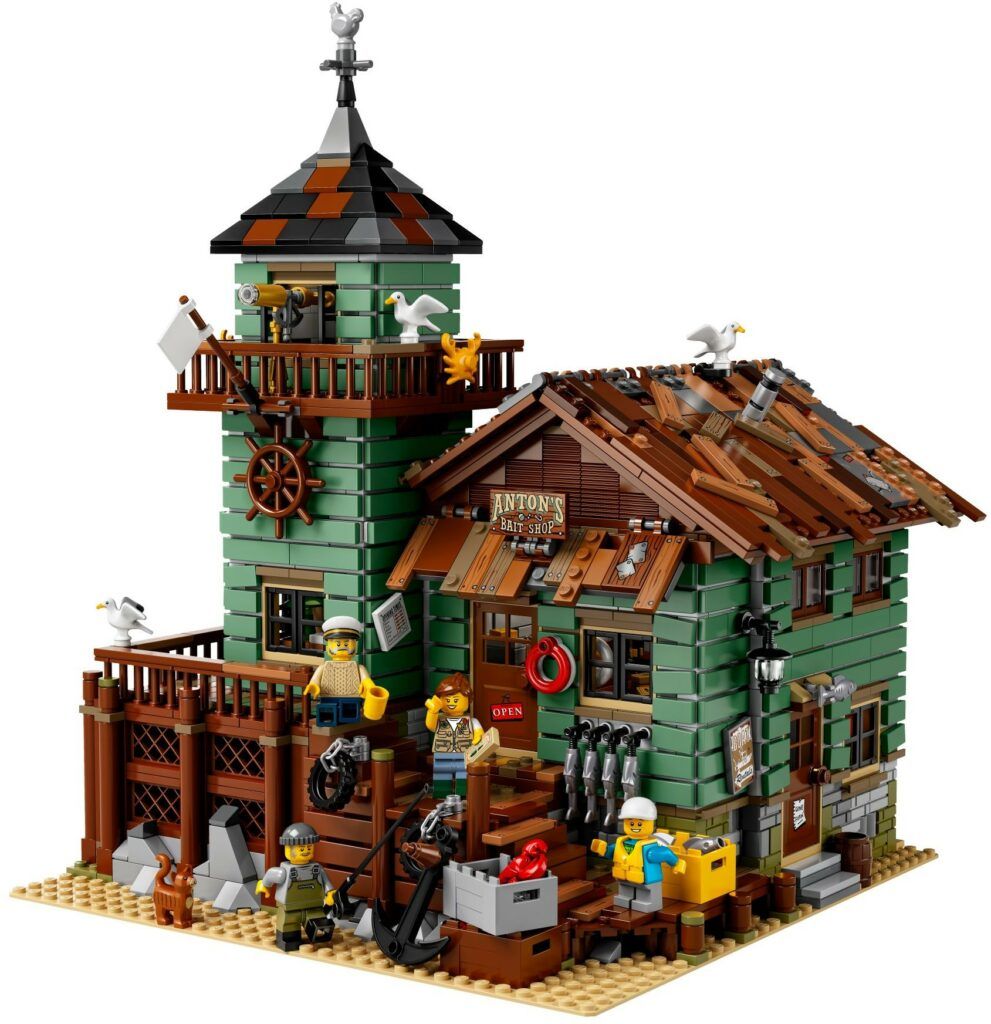
LEGO Ideas sets took another leap forward with 21310 Old Fishing Store. This extravagant 2017 release has some things in common with the Modular Buildings range. It uses a 32×32 baseplate as a starting point, and features more extravagant building techniques than the average LEGO set. However, it’s designed as a standalone model and doesn’t explicitly connect to anything else in the LEGO lineup.
As a seaside building of advancing years, the Old Fishing Store’s age is reflected in various subtle ways. Its sand green boards are crooked, while its roof is covered with haphazard wooden boards of its own. The sloped elements on its tower also use a mix of different colours, helping to lend it some extra personality.
Although interior space is limited, accessing the Old Fishing Store is surprisingly easy. Its roof and top tower sections are easily detachable, while its rear wall can also hinge open. The interior of the store is crammed with equipment such as harpoons, scuba gear and – alarmingly – sticks of dynamite. There’s also a pair of lobsters and a pair of fish, implying someone’s fishing trip has been successful.
The tower of the store contains a small office and a balcony, from which a telescope can be peered through. Stickered details provide some narrative context to the set. Apparently something sinister and tentacled is lurking out in the ocean, while a local hero has had a wildly successful fishing trip.
21310 Old Fishing Store may be one of the best examples of what the LEGO Ideas theme is capable of. Its construction is wonderfully decadent (even if playing with it presents a challenge) and it’s hard to envision it in any LEGO theme preceding it.
21312 Women of NASA
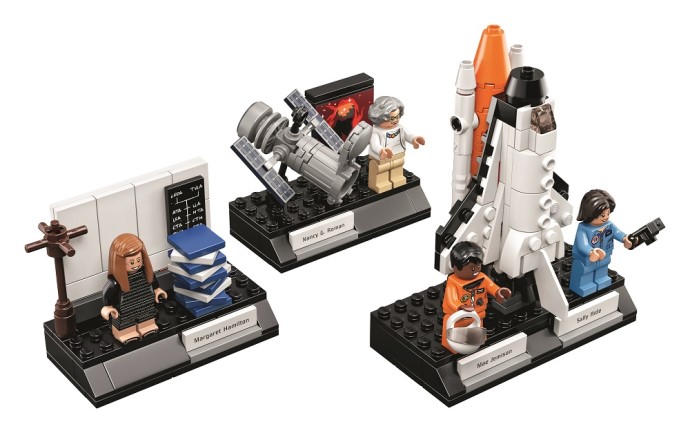
At first glance, 21312 Women of NASA is on familiar ground. It’s a similar concept to 21110 Research Institute – a small group of women with brick-built vignettes. However, this set draws inspiration from real-life historical figures, giving it a unique appeal.
Four women who have worked with NASA can be found in this set. Margaret Hamilton (not to be confused with the Wizard of Oz actor) is an American computer scientist and systems engineer. She was the director of MIT’s Software Engineering Division, which developed the flight software for the Apollo space program.
Hamilton’s minifigure is accompanied by a small LEGO scene that symbolises her work. The stack of tiles next to her represents the program listings used in the Apollo Guidance Computer. It draws inspiration from a famous shot of Hamilton, taken in 1969 to promote MIT’s work on the Apollo project.
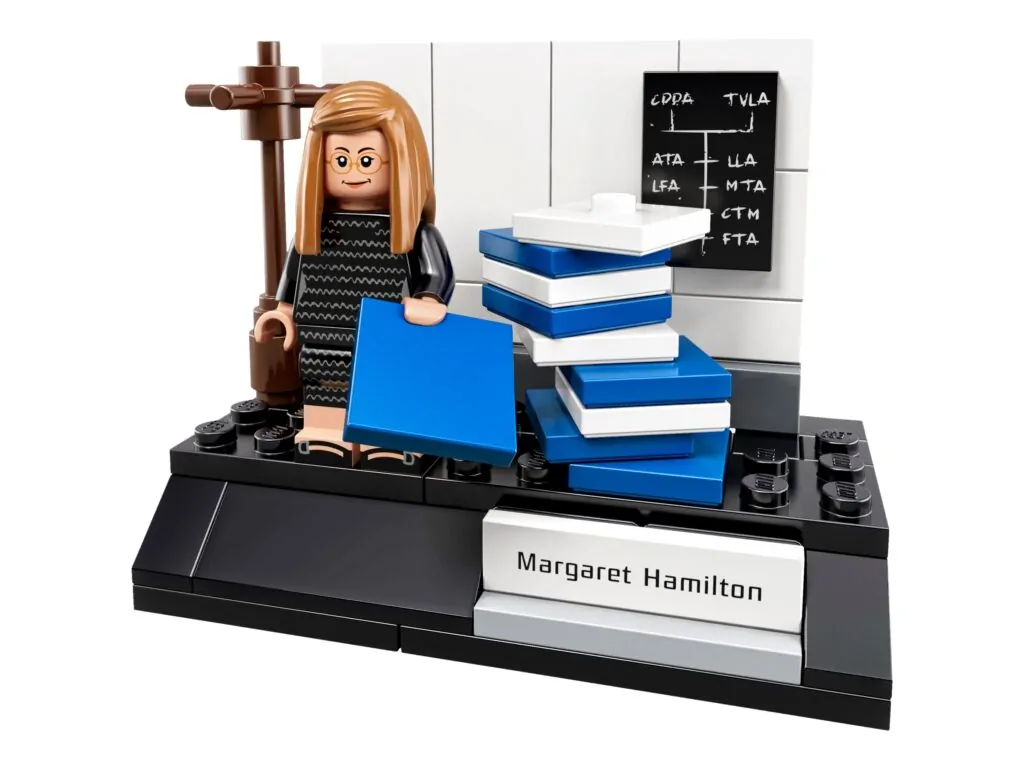
The other vignettes in the set are more immediately interesting, at least from a visual perspective. Nancy Grace Roman was NASA’s first female executive, serving as the organisation’s Chief of Astronomy in the 1960s and 1970s. She also had a foundational role in planning the Hubble Space Telescope, which launched in 1990. It remains in operation today and is one of the largest, most versatile space telescopes ever created.
Nancy is depicted here alongside a miniature version of the Hubble Telescope. The telescope features some unconventional parts usage; a light grey trash can is used to form the body, with its handles providing handy attachment points. A pair of printed solar panels can also be found in this set, preceding their wide usage in space-themed LEGO sets.
An attractive printed element is also included in this scene. This features a projected image of a planetary nebula, which the Hubble Telescope could presumably take a picture of.
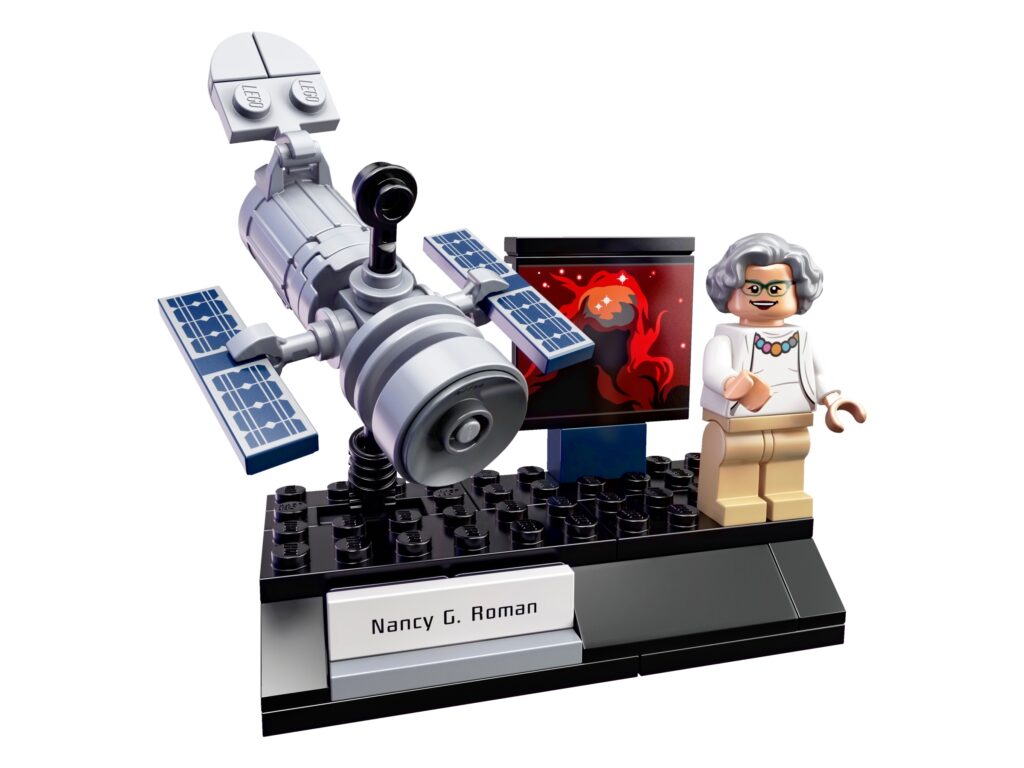
The last vignette features two minifigures. Mae Jemison became the first black woman to travel into space, aboard the Space Shuttle Endeavour in 1992. Following her time in space she went on to found both a technology research company and a non-profit educational foundation. She is also the holder of several honorary doctorates, and even appeared in the 150th episode of Star Trek: The Next Generation.
Sally Ride was an American astronaut and physicist, becoming the first American woman to travel into space in 1983. She was also – at age 32 – the youngest American to do so at the time, and the first one known to be LGBT. Following her time at NASA, Sally worked at both Stanford University and the University of California, San Diego. Sadly she died in 2012 of pancreatic cancer, aged 61.
Mae and Sally are displayed either side of a tiny Space Shuttle Challenger, which was used by NASA in the early 1980s. It’s immediately recognisable thanks to some thoughtful design techniques, and smart use of recently-introduced elements. The shuttle itself can be easily detached from the fuel tank and booster if you want to swoosh it around.
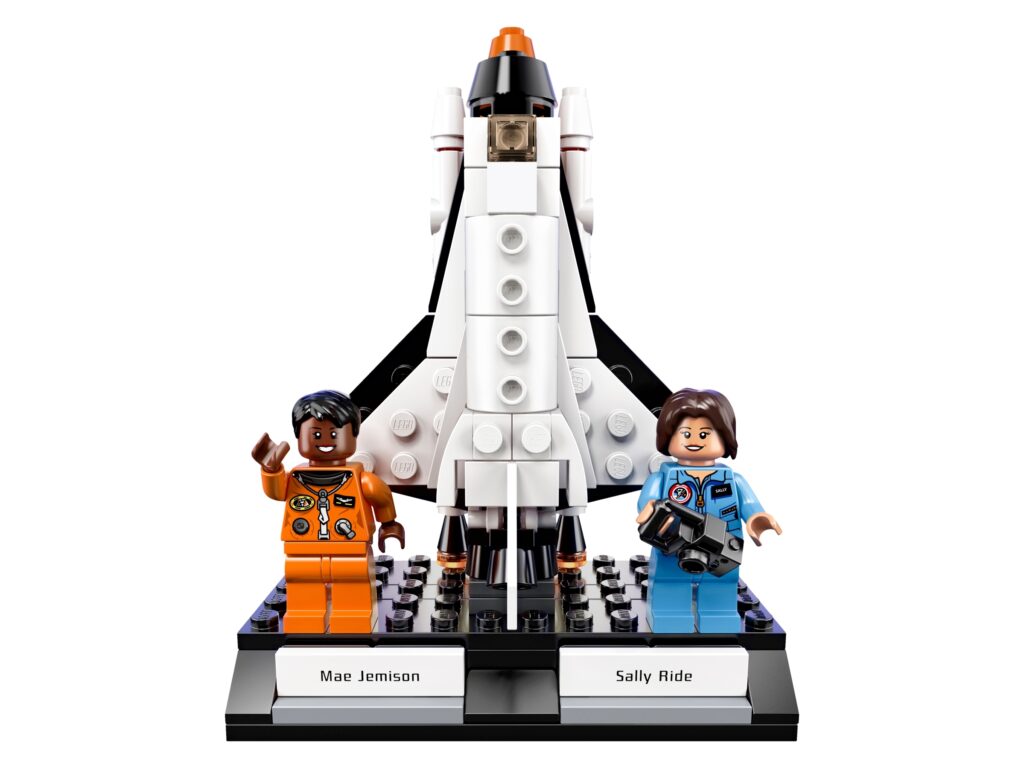
Like the people that inspired it, 21312 Women of NASA is a rather unconventional LEGO set. However, it shines an important spotlight on the people involved with NASA’s work, and remains one of the more reasonably-priced Ideas sets of the broader theme.
21311 Voltron
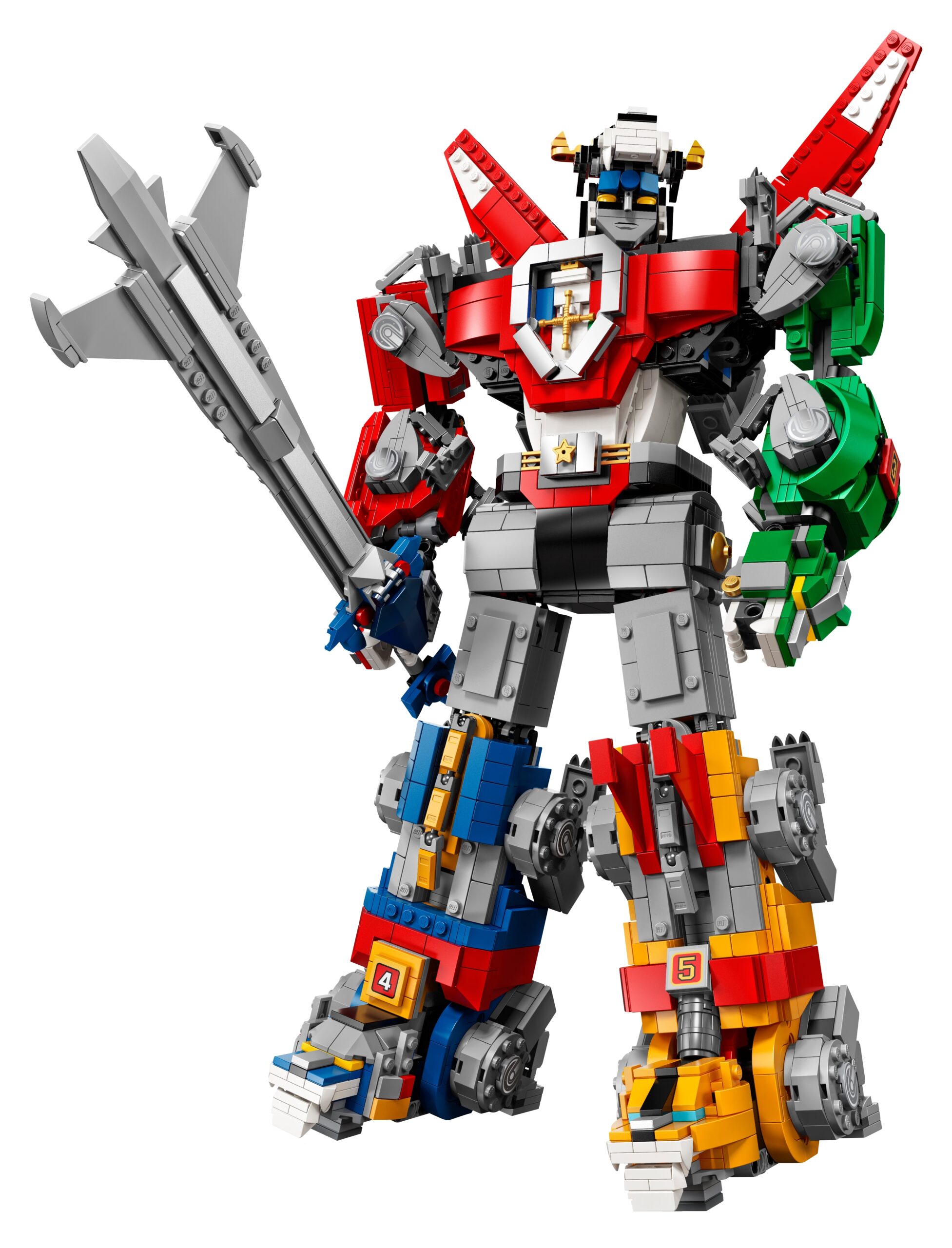
2018’s first Ideas set would also explore space, albeit from a slightly different angle. 21311 Voltron enjoyed an unusually long gestation period at the time, announced as under consideration in early 2017. LEGO fans had to wait more than a year for the set to be revealed, although it was probably worth the wait for most of them.
The Voltron franchise first launched in 1984, adapting a number of anime from Toei Animation. The original show tells the story of five pilots in a sci-fi universe who command five robotic lions. These combine into the eponymous Voltron robot; both the lions and Voltron defend the planet Arus from hostile forces.
The Voltron franchise has proven very popular, consisting of several TV shows, comic books and toys. A recent incarnation – Voltron: Legendary Defender – is referenced in the LEGO set’s instruction manual, although the LEGO set itself seems to draw inspiration from the original version.
21311 Voltron was (at the time) another highly ambitious LEGO Ideas release, using 2,321 pieces in its design. Like its namesake, the set depicts a massive robot which can separate into five smaller lion models: one for the head and torso, two for the arms and two for the legs. However, no minifigures are included.
As you might expect, each lion features plenty of articulation. This allows them to be combined, and also function as standalone models. The design of each lion varies a little bit, and separate instruction manuals allow multiple people to build the set at once.
Once assembled, Voltron can wield a massive sword and shield to defeat his enemies. Like Voltron himself, these weapons feature a smattering of drum-lacquered silver elements that give the set a premium feel.
It’s certainly impressive once assembled, although it’s not necessarily a toy in the conventional sense. The design of the model means articulation is limited; only the arms and head have any real range of movement. Its instruction manual claims the set pushes the limits of what LEGO is capable of; for better or worse, that’s certainly hard to dispute.
As such – despite its popularity – this may not be the definitive Voltron toy. However, we suspect that didn’t matter too much for all the people who bought it.
21313 Ship in a Bottle
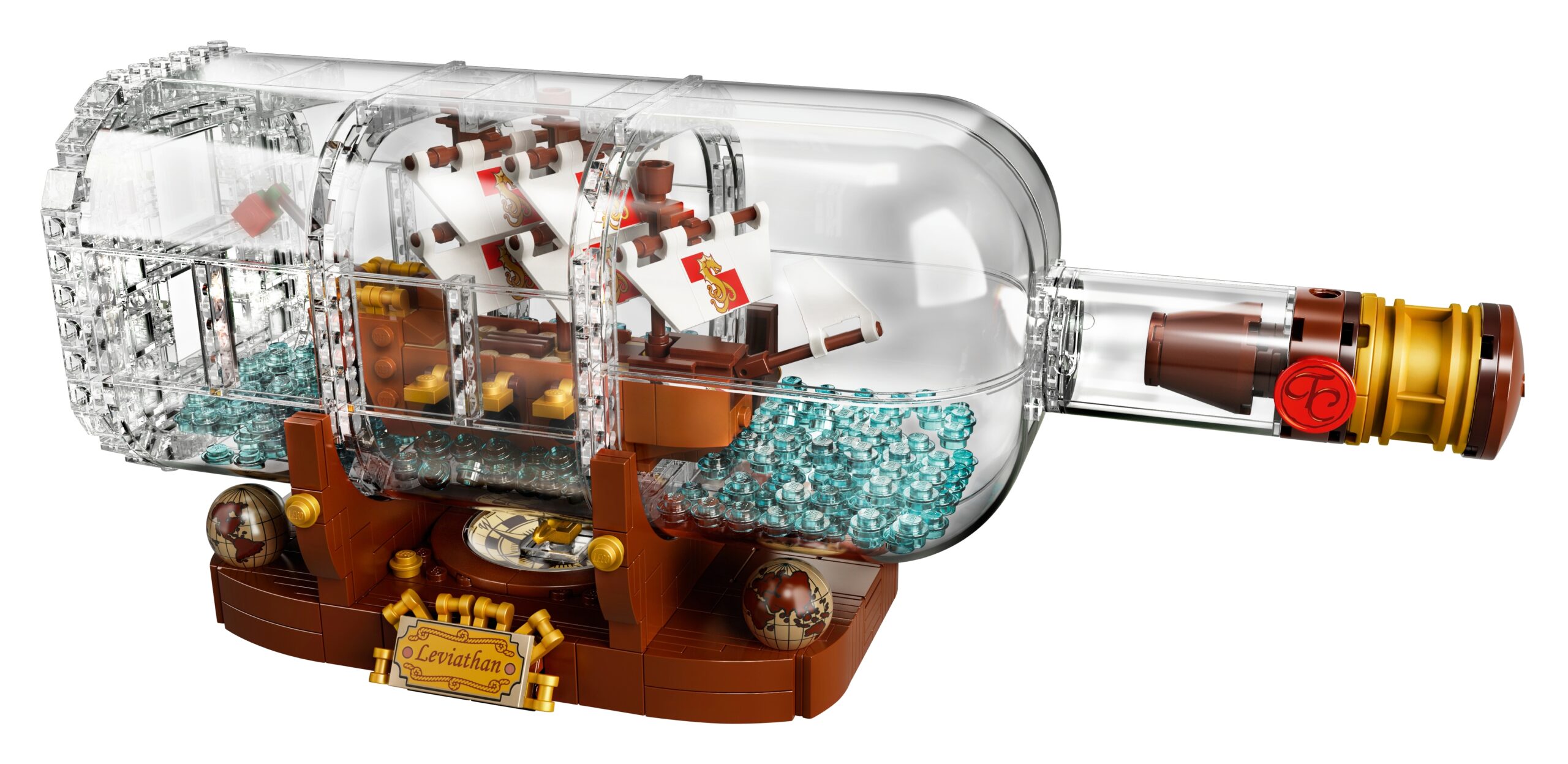
21313 Ship in a Bottle is another 2018 Ideas set with a nautical theme. It’s pretty self-explanatory, depicting a small, sail-powered ship in an intricately-constructed bottle.
The ship in a bottle is a beloved variation of the ‘impossible bottle’ concept. While ships are one of the most famous items to be used here fruits, decks of cards and even tennis balls have been placed in them. Items are placed in the bottle by being constructed within them, by having the item expand after placement, or by constructing the bottle around the item in question.
The oldest surviving ship in a bottle dates back to the late eighteenth century. It was created by one Giovanni Biondo, possibly as a commission for the Venetian navy. The concept really took off in the nineteenth century, thanks to the increasing availability of clear glass bottles in this era.
Unlike its real-life inspiration, assembling the LEGO version is relatively straightforward. The ship itself is a rather attractive model on its own merits. It uses a mix of brown, orange and gold pieces to capture the shape of the hull, and its sails use printed elements to add some more visual interest. The sea creature on them references the Leviathan that the ship is named after.
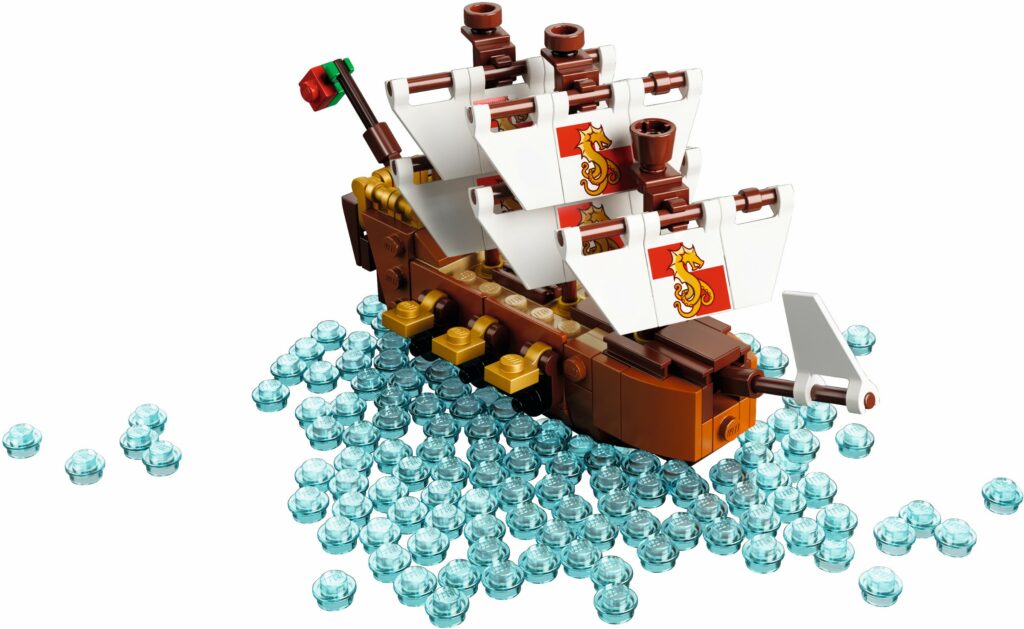
In a neat twist, the stern of the ship is adorned with a tiny Portugese flag. This is a reference to LEGO designer Tiego Catarino, who was involved with the set’s redesign. Dozens of loose, translucent LEGO studs are poured into the bottle, providing the illusion that the ship is really at sea.
The bottle itself uses a mix of transparent elements to assemble its structure. The nature of LEGO means its connection points are glaringly obvious, although this may prove a selling point if you like that sort of thing. An elaborate stopper is placed in the mouth of the bottle, with its ‘wax’ seal bearing Tiego Catarino’s initials.
The entire ship in a bottle assembly sits atop a brick-built display stand. Like the ship this uses a mix of brown and gold elements, with the Leviathan nameplate printed on a tile on the front. A pair of globes and a printed ‘compass’ highlight the nautical theming of this set.
21313 Ship in a Bottle remains one of the more tasteful and sophisticated LEGO Ideas sets. Like 21309 NASA Apollo Saturn V, it earned a rare rerelease in 2020 once its original version was retired. 92177 Ship in a Bottle is identical to its predecessor, and gave fans another (short-lived) chance to pick it up.
21314 Tron: Legacy
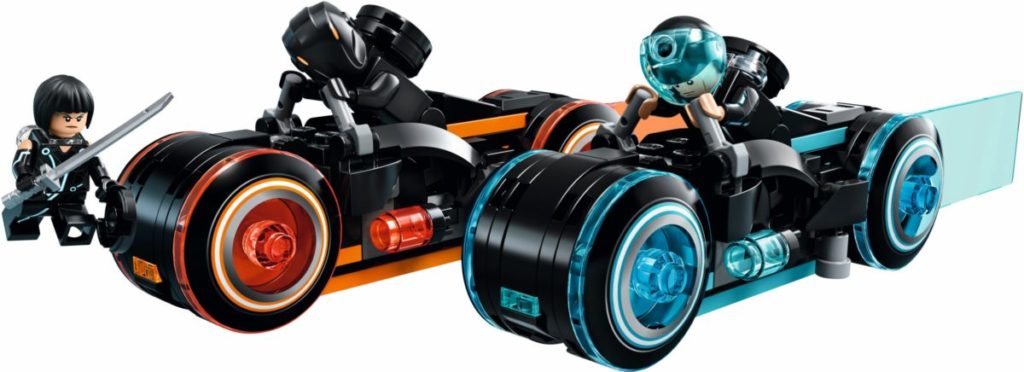
The next Ideas set in 2018 drew inspiration from a relatively obscure Disney film. 21314 Tron: Legacy is inspired by the movie of the same name, which released almost a decade prior to middling reviews. The film is a sequel to the 1982 movie Tron, one of the first films to extensively use CGI.
The original movie tells the story of Kevin Flynn, a software engineer whose work is stolen by a rival colleague. While attempting to find evidence of the theft, Flynn is transported into cyberspace by the evil Master Control Program. Flynn must join forces with Tron (a friendly security program) to defeat the Master Control Program and return to the real world.
Tron: Legacy takes place several years after the original and follows Sam Flynn – the son of Kevin Flynn, who has been missing for two decades. One evening Sam receives a mysterious message from his father, and discovers Flynn has become trapped in cyberspace once more. With the aid of a woman called Quorra, Sam sets out to rescue his father from a new enemy.
21314 Tron: Legacy recreates the neon-soaked aesthetic of the latter movie. It features a pair of light cycles – an iconic vehicle of the Tron franchise. Each one projects a ribbon of light behind it, which can used to disable the rider’s opponents in vehicular combat.
The light cycles are identical in construction, but feature different colour schemes to reflect the allegiances of their riders. The light ribbons at their backs are depicted using translucent banner elements, and can be angled from side to side. Both cycles sit on a brick-built display base, which mimics the glowing circuitry of the virtual world.
While the wheels of each light cycle are designed to spin freely, they can be a little stiff and uncooperative in practice. Positioning minifigures aboard each cycle can also be challenging, although the final effect is attractive.
Three minifigures appear in this set – Sam Flynn, Quorra, and the masked villain Rinzler. Each one wears a black jumpsuit decorated with glowing detail, although Rinzler’s design is slightly more subdued. Sam and Quorra also sport alternate expressions, allowing them to appear either contented or more determined.
Another iconic element of the Tron franchise is the identity disc, which is used as a weapon by inhabitants of cyberspace. Each minifigure has at least one; they are printed on round tiles and can be attached to each minifigure’s back.
A couple of other accessories are included. Quorra comes with a standard katana element, giving her another means of defending herself. Sam also comes with a black helmet, which he can wear instead of his brown hair element when riding his light cycle.
While not an obvious choice for a LEGO Ideas set, 21314 Tron: Legacy is still a fine tribute to a visually striking movie. Parts of the set allow room for improvement, although ultimately it includes everything you’d want a LEGO Tron set to.
21315 Pop-up Book
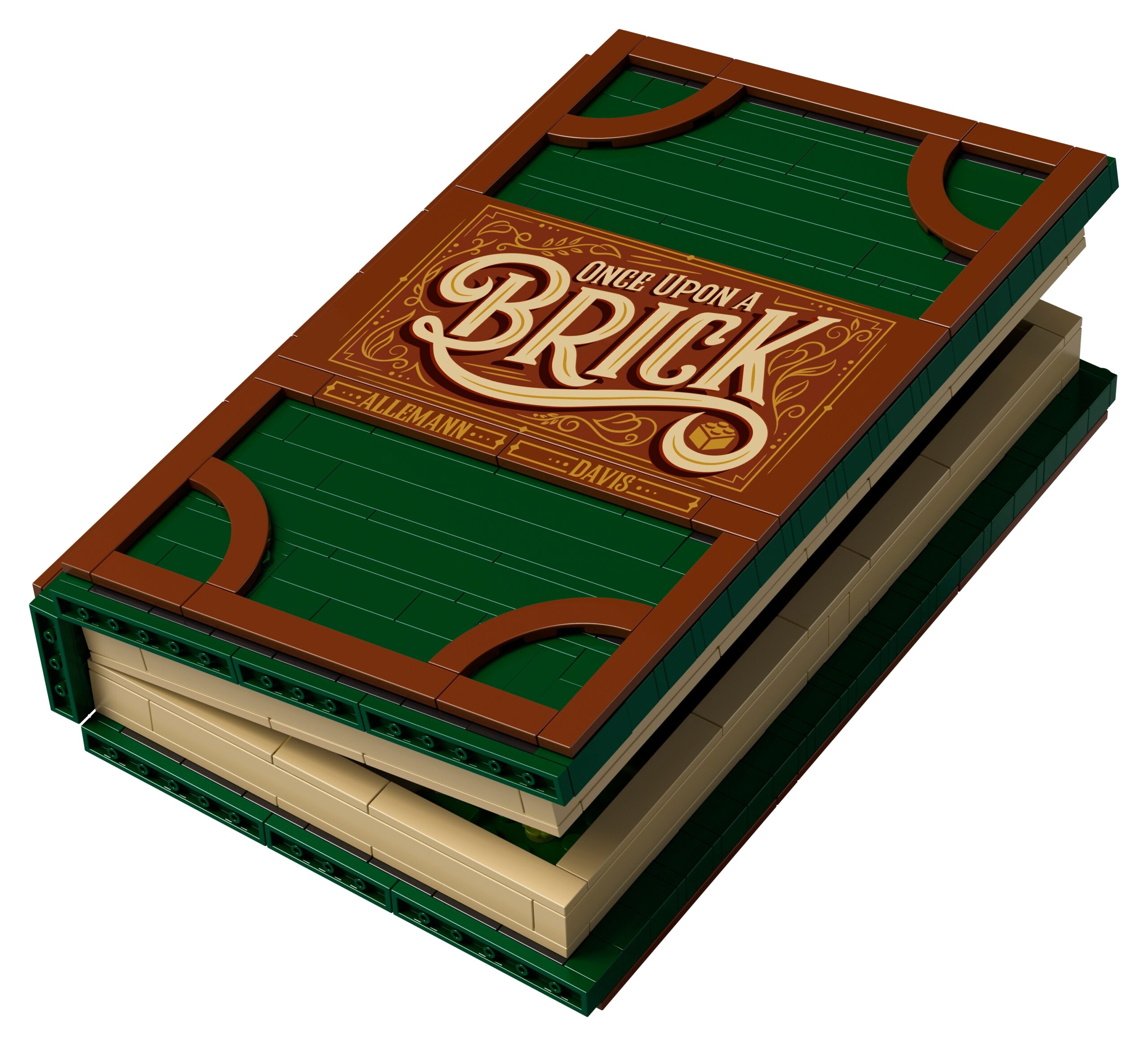
LEGO Ideas sets have usually been impressive, but this one remains one of the most technically ambitious. 21315 Pop-up Book is just what it says it is: a pop-up book in LEGO form, which works exactly as intended.
‘Pop-up book’ is a surprisingly broad term, covering a variety of items with different designs. The term ‘animated book’ may be the best descriptor for the LEGO version, although it lacks any written text within the book itself.
While we tend to associate pop-up books with children, the earliest examples were actually aimed at adults instead. The first version of a pop-up book appears within the Chronica Majora, which was produced by the English monk Matthew Paris in the 13th century. Later pop-up sections within books were the preserve of scholars rather than children’s writers.
The first children’s pop-up books appeared in 1929, although the term ‘pop-up book’ wouldn’t appear until a little later. Today they are a popular choice for the younger reader – and, as it turns out, the LEGO fan.
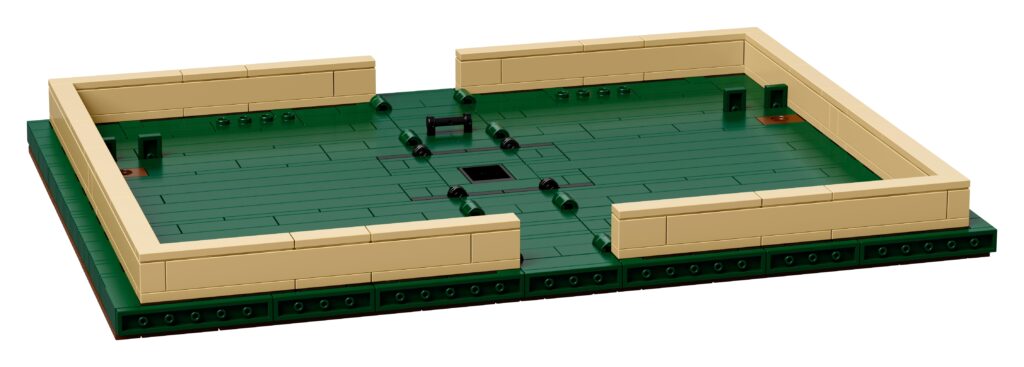
The outside of the LEGO pop-up book is very handsome, using a number of brown and dark green bricks to recreate the cover. A large printed tile provides the name of the book (Once Upon a Brick) while two smaller tiles reference the surnames of the original fan designers. Beige elements recreate yellowed pages around the edge of the book.
Since the book is mechanically complex, there’s very little internal detail within the book itself. This may explain the dark green cover, which can stand in for a grassy surface.
The pop-up book recreates two beloved fairytales: Little Red Riding Hood, and Jack and the Beanstalk. These use relatively simple builds, allowing them be to folded and unfolded as required. The scenery for each story is clipped to various attachment points on the book’s internal surface, allowing you to swap between them very easily.
The Little Red Riding Hood story uses a relatively simple cottage as a centrepiece. It’s just two studs thick, although it does feature attractive details like carved wood and a thatched roof.
Inside the cottage a small fireplace can be seen; a bed and a table sit on a pair of small plates, which can be held in place with two small studded surfaces. The bed is hollow, allowing a standard minifigure to be placed under the covers.
The Jack and the Beanstalk scene is scaled a little smaller, allowing a standard minifigure to stand in for the giant. White curved elements and green slopes stand in for fluffy clouds and rolling hills, while a handful of tiny trees and houses are scattered across them. The beanstalk and castle are a separate build; an assembly of Technic beams allow the beanstalk to ‘grow’ above the landscape as the book is opened.
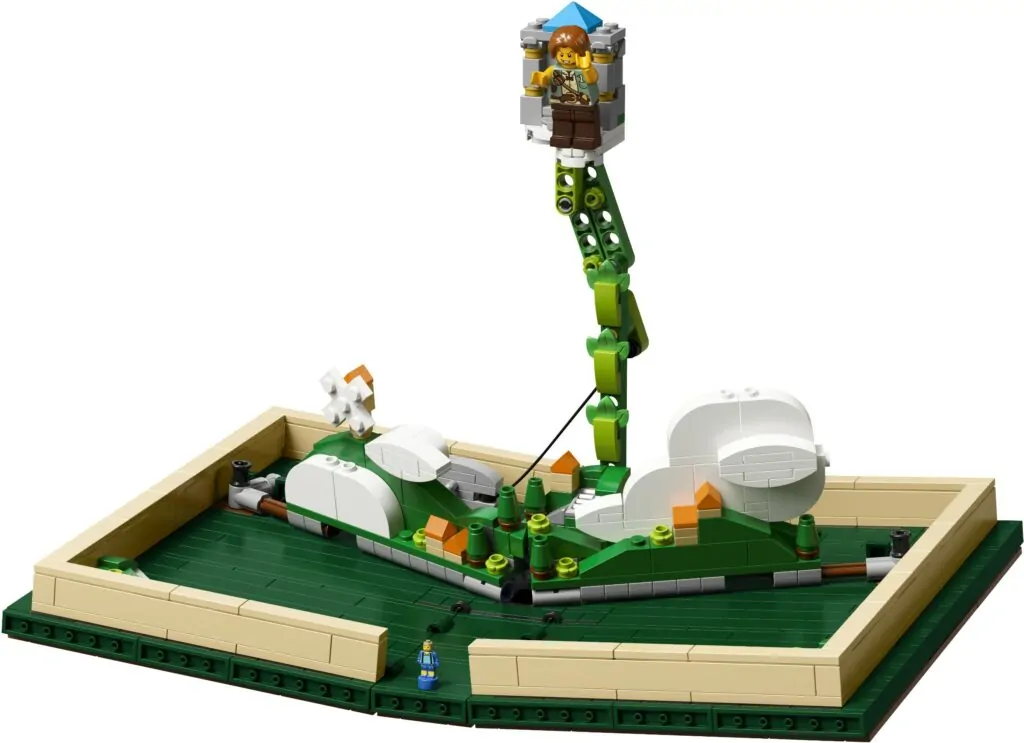
Four minifigures and one microfigure are included with this set. Each one comes with unique printing, allowing for better integration into their fairytale environment.
Little Red Riding Hood herself comes with the iconic hood. It’s represented with a standard cape element and a piece from the LEGO Ninjago Movie theme. This allows a little of her hair to appear underneath it.
The rest of her outfit uses a mix of whites and blues, providing an attractive contrast. Simple decoration appears on both her torso and skirt pieces. Naturally she comes with a basket of sweets for her sick grandmother.
The grandmother herself and the Big Bad Wolf also appear in this scene. Both feature the same pink nightdress and gold spectacles, although they’re a little worse for wear when the wolf dons them. The wolf head piece has appeared in a variety of LEGO sets over the years, but this one (complete with lipstick) is certainly one of the most memorable.
The giant features some subtle details on his torso to hint at his massive size. Two barrels are slung across his torso, and a goose (who presumably lays golden eggs) sits in his breast pocket. One of the golden eggs can also be seen here, giving the microfigure Jack something to shoot for.
Like all microfigures, the Jack in this set suffers from a few design compromises. However, he still has a lot of personality for such a small character. He’s printed with a light blue shirt and braces, while the base blue colour stands in for shorts. Although his hands remain unpainted, this is still a lovely addition to an already remarkable set.
21316 The Flintstones
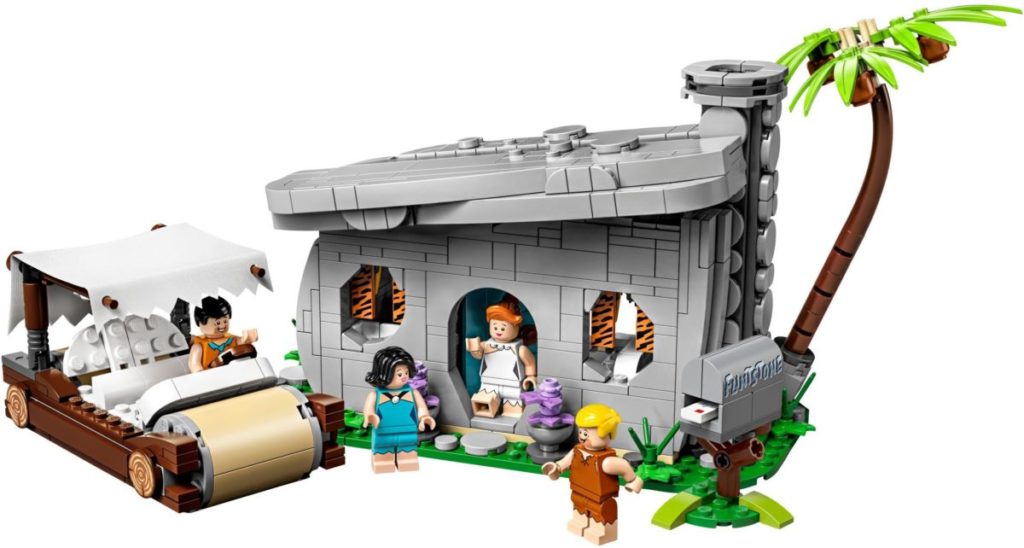
The inaugural 2019 Ideas set returns us to sitcom territory, whilst also referencing an animation classic. 21316 The Flintstones recreates the beloved TV series, although a few key characters are missing from it.
Debuting in 1960, The Flintstones is one of the most famous cartoons from Hanna-Barbera Productions. It takes place in the romanticised Stone Age town of Bedrock and follows the exploits of quarry worker Fred Flintstone, as well as his family and friends. Over its six seasons the show explored a variety of modern concerns through the lens of a Stone Age society.
The Flintstones is enormously significant in the history of television. It was the first animated show to hold a prime-time television spot, and – before The Simpsons came along – the most financially successful, longest-running show of its kind. After its initial run ended The Flintstones inspired a number of television specials, movies and (eventually) a LEGO set.
21316 The Flintstones recreates two of the show’s most familiar elements: Fred’s car and the Flintstones residence. The car uses two cylindrical builds to recreate the car’s rollers, although – unlike the TV version – Fred’s legs cannot stick out the bottom of it. Round tiles printed with wood patterns reinforce the vehicle’s primitive nature.
Fred’s car also features a tattered canopy, which is recreated here with a bespoke fabric element. The entire canopy can be hinged backwards when you want to insert minifigures, and all four characters in the set can ride in the car at once. A massive stack of dinosaur ribs can even be attached to the car, referencing a scene in the show’s outro sequence.
The LEGO version of the Flintstones house is suitably primitive, with grey walls and exposed stonework on the chimney. Despite its simple shape the design is surprisingly intricate, ensuring the walls of the house are suitably robust. The slanted roof isn’t actually attached to the house beneath it; instead, it simply rests at an angle, which allows for remarkably easy access.
A palm tree, a mailbox and a pair of plants can be found outside the house, as can a solitary milk bottle (another reference to the show’s outro). Two sets of animal-print curtains hang in the windows, reflecting the show’s primitive era.
The interior of the house recreates the Flintstones’ living room; sections of the floor fold outwards as well. A sofa, table, floor lamp and television can be found in the main area of the living room, with simple shaping and limited colour usage. A picture of a woolly mammoth can be seen on one wall, courtesy of an exclusive printed tile.
The television features a news story about Dino – the Flintstones’ pet dinosaur, who is missing from this set. Presumably Dino’s shape was too complicated to produce with existing elements at the time. Since – at this stage – new elements couldn’t be produced for Ideas sets, this is a regrettable but expected compromise.
The house also contains a phone and a wooden crate filled with bowling equipment. This references Fred’s love of bowling during the show. While small and simple, the trio of bowling pins is instantly recognisable.
Fred Flintstone, Wilma Flintstone, Barney Rubble and Betty Rubble are all included in the set, although their children Pebbles and Bamm-Bamm are sadly absent. However, since both of these characters were introduced towards the end of the show, this isn’t necessarily a dealbreaker.
Each character here uses dual-printing on their legs to depict their raggedy clothing. Barney should really be a little shorter than Fred in this context, although the final minifigure is still nice to look at.
The male Flintstones characters in this set represented a distinct design challenge thanks to their large heads and prominent noses– both missing from conventional minifigure designs. The solution was to imply the presence of a nose with negative space.
Fred and Barney have a notch cut out of their stubble, capturing the essence of their characters in the process. Each of these characters shares a hair element with The LEGO Movie’s Emmet, albeit in new colours.
Wilma and Betty also use conventional hair elements, although theirs allow for alternate expressions to be included. Wilma can appear either happy or perturbed, while Betty can express varying levels of joy.
There’s room for improvement, but 21316 The Flintstones is still a treat for fans of the show. It includes most of what you’d want a LEGO Flintstones set to come with, even if a few other elements could stand to be included.
21317 Steamboat Willie
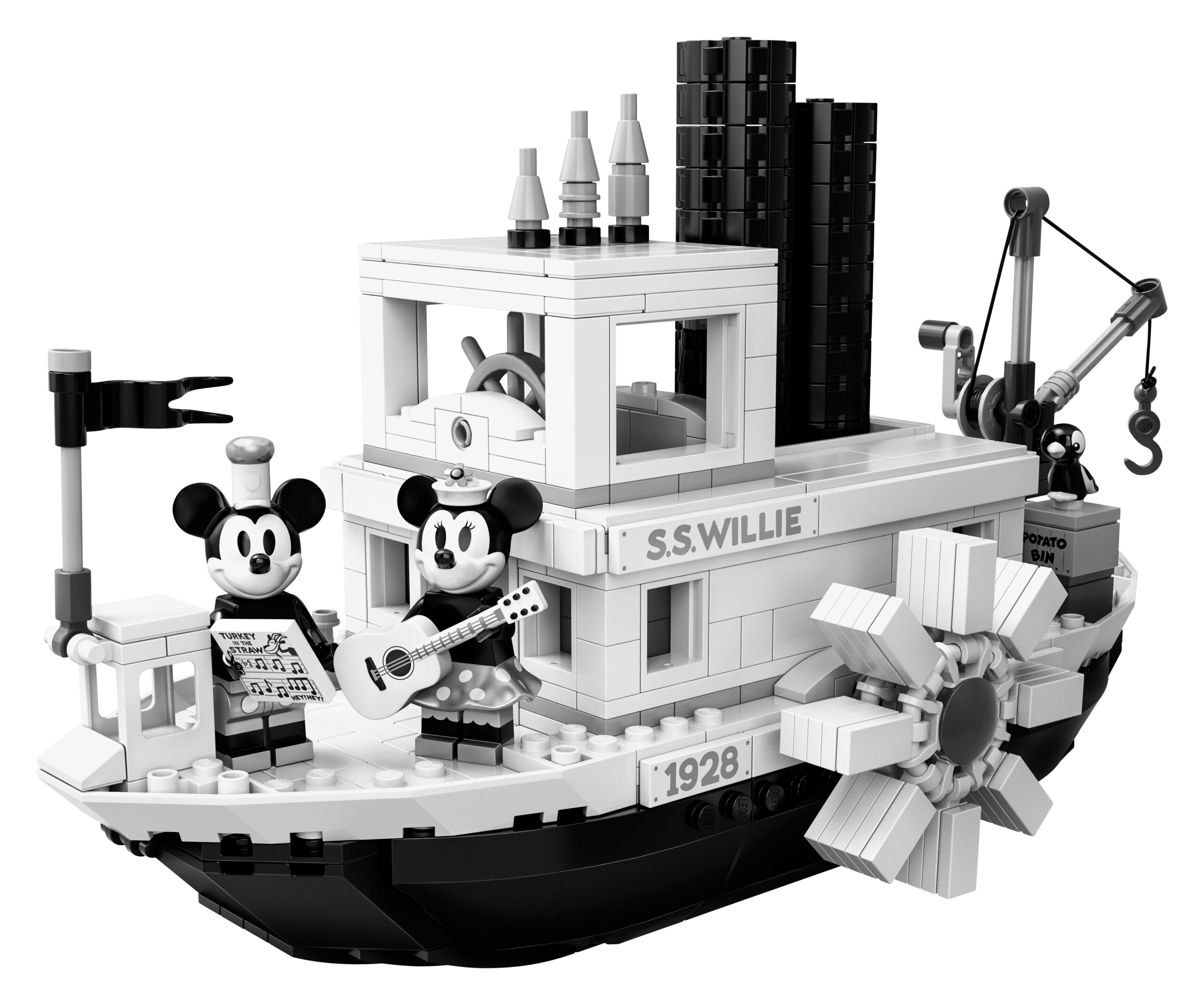
The next 2019 Ideas set is another throwback to a bygone era of animation. 21317 Steamboat Willie pays tribute to one of the very first appearances of Mickey Mouse, in the short animated film of the same name.
Steamboat Willie premiered in New York in 1928, appearing in Europe three years later. It is considered the first official appearance of Mickey Mouse in an animated film (although strictly speaking, a test screening of the film Plane Crazy marks his animation debut). Mickey Mouse would go on to become an icon of The Walt Disney Company, and one of the world’s most recognised animated characters.
While the film succeeded on its own merits, it’s also remembered for its technical accomplishments. Its use of synchronised sound and a post-produced soundtrack differentiated it from most contemporary animated films, and preceded the widespread adoption of these technologies going forwards.
The film sees Mickey working aboard a steamboat, which is the focus of its LEGO incarnation. Since the original film was entirely in black and white, the set also uses a monochrome colour scheme. The exterior of the boat is created with white, black and grey elements, although the interior pieces are notably more colourful.
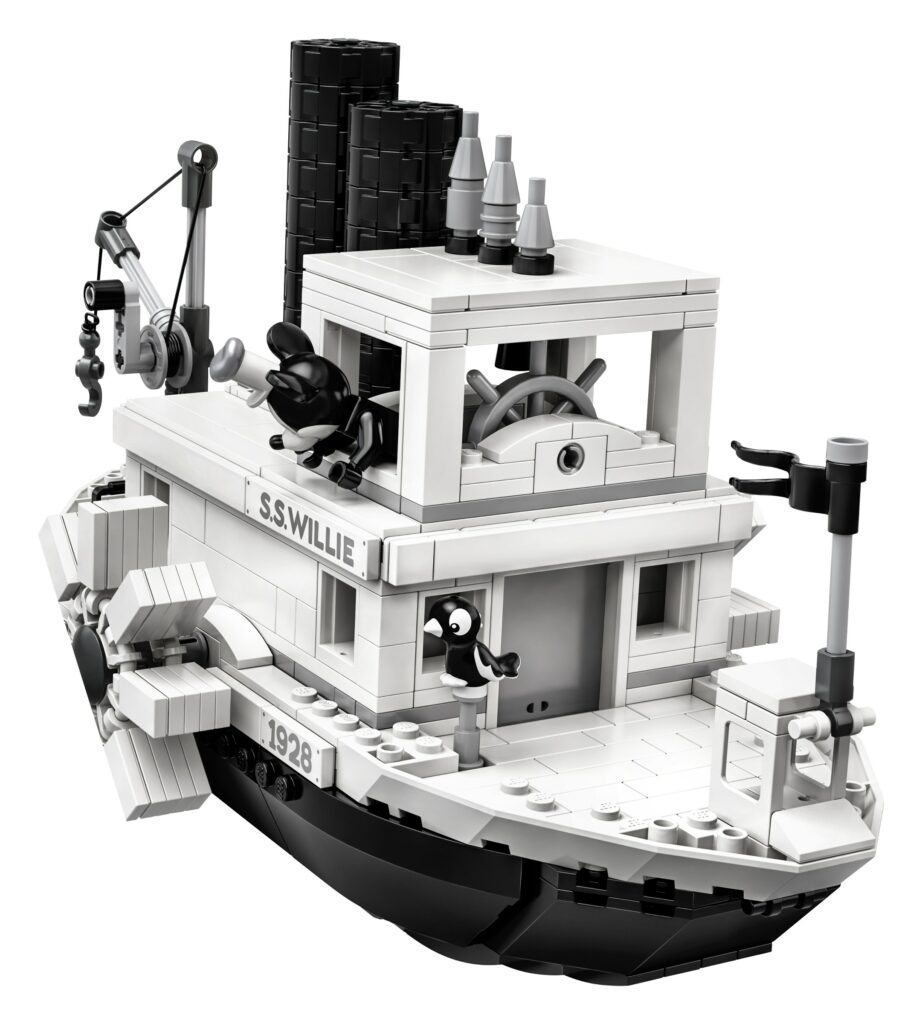
Since it’s animated, parts of the ship can move in an exaggerated fashion. That idea is conveyed in its LEGO version; its two funnels can move up and down as the ship moves forward, and its two paddle assemblies can spin as well.
The cab of the steamboat holds a minifigure, and the rear deck has a working crane to load cargo more easily. Several printed elements in the set reference the movie’s name and release date, as well as its events. A box printed with ‘potato bin’ references Mickey’s potato-peeling at the end of the film, while a piece of sheet music mentions Turkey in the Straw – a song played by Mickey and Minnie once she boards the boat.
Mickey and Minnie Mouse had both appeared in LEGO form at this point, courtesy of the Collectible Minifigures theme. As such, creating new (or is that old?) versions of them was very simple for The LEGO Group.
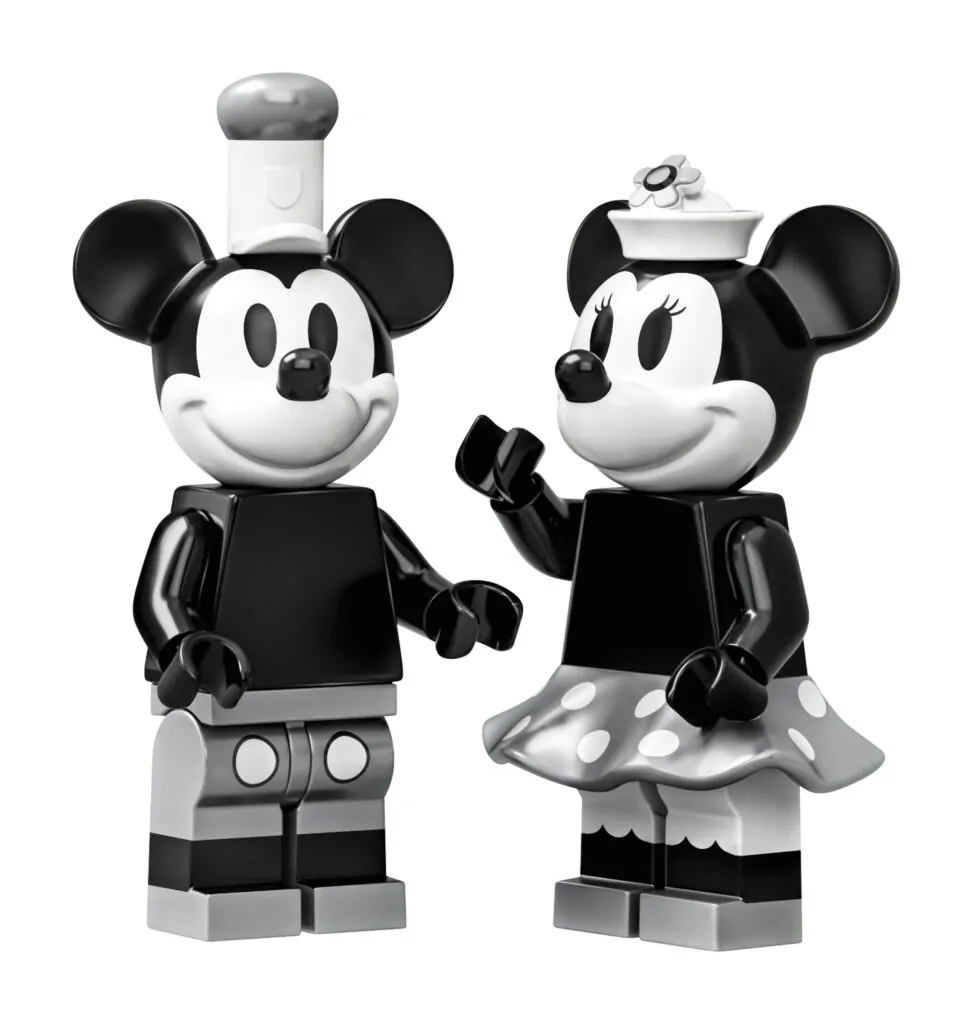
Both Mickey and Minnie feature monochrome colour schemes, although each one features metallic silver detailing on their lower halves. Each one also came with a new hat element, which would appear in the Collectible Minifigures theme shortly after the set’s release.
As befitting the film’s simple animation style, their facial features are much simpler compared to their modern counterparts. Minnie comes with a white guitar – another reflection of the film’s musical components. A simple, brick-built display stand can be used to display the minifigures more effectively.
While it’s certainly impressive, the set does suffer slightly from limited interior space and a high RRP. Its references to a distant animation period may also limit its appeal to most LEGO or Disney fans.
21318 Tree House

While Steamboat Willie is subdued, the next 2019 Ideas set is positively bursting with colour. 21318 Tree House is an extravagant LEGO Ideas set with impressive play and display value.
Treehouses have been explored in LEGO form on numerous occasions over the years, but few are as grand as this one. Its piece count (3,036) is notably higher than many of its predecessors, and it’s suitably more intricate as a result. Three cabins are attached to a massive tree, with a riot of foliage above it.
The first cabin contains a bedroom with various accessories to bring it to life. These include a hairbrush, an inkwell, a pair of binoculars and a ship in a bottle. There’s even a tiny, wall-mounted clock, and a metallic silver tile used to represent a mirror.
The second cabin contains a bathroom, and includes a shower, a sink and a toilet. Once more several fine details bring this area to life; there’s a small bar of soap in the shower, as well as a roll of toilet paper mounted to the wall. A barrel can be found outside this cabin, presumably to catch rainwater for showering with.
The third cabin includes a pair of bunk beds for a pair of children to sleep in. This cabin’s contents reflect its inhabitants’ curiosity; it includes a microscope and a small flower for them to examine. A book can also be kept in a compartment by the bedside.
The outside of the treehouse has a number of lovely details. A small stretch of water can be seen at the base, as well as a campfire (with a hanging cooking pot) and even a swing suspended from a tree branch. There’s also some scattered plant life, including a trio of mushrooms. A printed tile represents a small wood carving, as well as the initials of the set’s fan designer.
Four minifigures are included in this set: a father, a mother and their two children. While their character designs aren’t that flashy, they remain a fine companion to the model. The red hair of the children connects them to their father, who comes with a splendid red hair element of his own.
The set more strongly differentiates itself with its foliage. Several dozen plant elements are used on the tree’s upper branches to help it appear more realistic. These come in both summer and autumn variants, allowing to depict the treehouse at different times of the year.
With its large scale, naturalistic design and fine detail, 21318 Tree House is another win for the Ideas theme. It’s also enjoyed a surprisingly long timespan on store shelves, giving LEGO fans a wide window of opportunity to acquire it.
21319 Central Perk
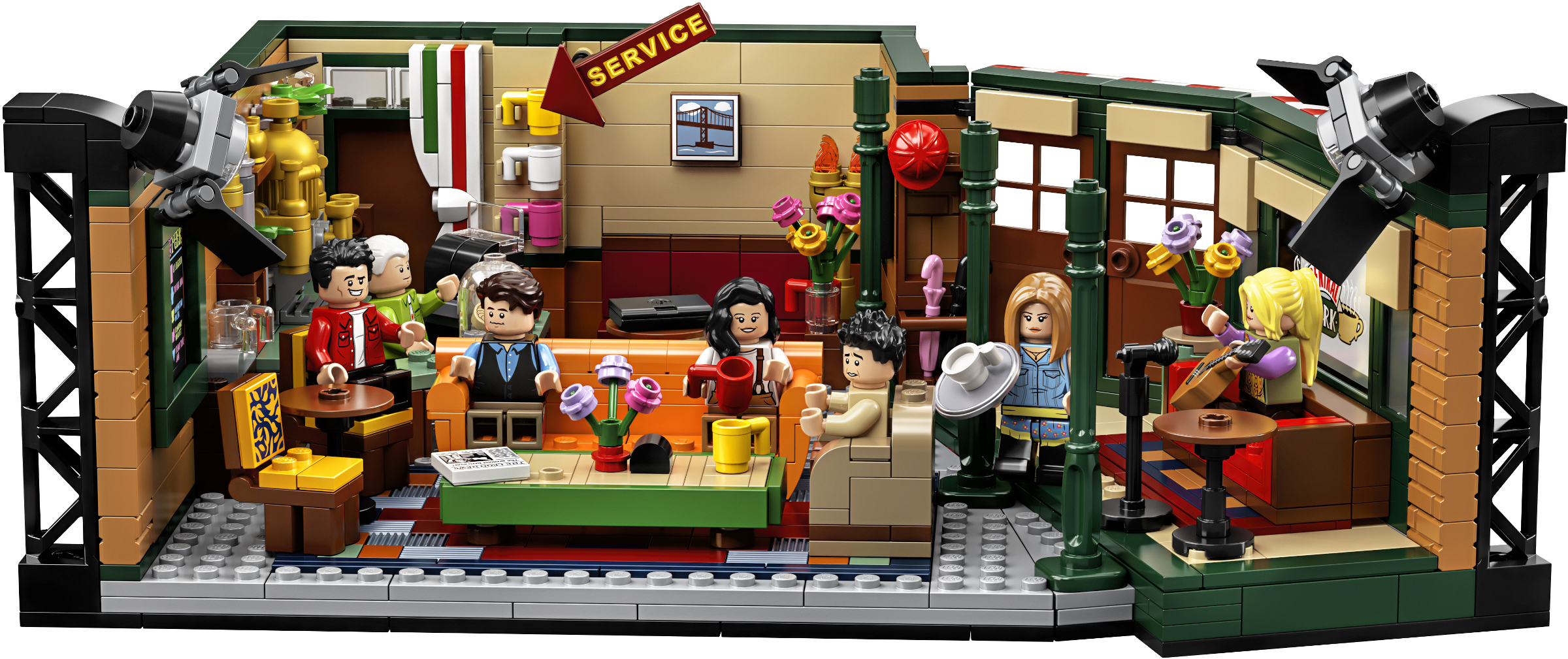
21319 Central Perk is another popular 2019 set. It’s a LEGO Friends model, albeit not the kind we’re accustomed to seeing. It recreates the classic coffee shop from the American sitcom, which first ran on TV from 1994 to 2004.
Friends tells the story of six 20-to-30 somethings, living their lives in New York City. It’s one of the most popular TV shows ever created, nominated for more than 60 Primetime Emmy Awards during its runtime. Its appearance on streaming service Netflix may also have helped to bolster its popularity, and explain its arrival in LEGO form.
21319 Central Perk focuses on the coffee shop of the same name, which is located in Greenwich Village. It’s a frequent haunt of the main cast, and even provides employment for a couple of them as the show progresses. It’s even hosted musical performances by the character Phoebe, where she performs classics such as Smelly Cat.
The LEGO version resembles the set of a TV show; this is hinted at by the large stage lights either side of the model. The interior is very open, allowing you to access its myriad details easily.
Since the six main characters often sit in the middle of the coffee shop, there’s seating for all of them to be found here. In addition to a bunch of flowers and a napkin dispenser, a small RESERVED sign can be placed here. This hints at the cast’s frequent use of this seating.
The main seating area of Central Perk is designed for easy removal. This is ideal if you want to display this part of the set on its own.
Like the show, 21319 Central Perk is packed with visual details. Many of them can be found in and around the counter. The coffee machine behind it is a particular highlight thanks to its large size and extensive use of gold elements. Fine details like a portafilter and drip tray help it to feel more realistic.
The right hand side of Central Perk features a small umbrella stand and a performance area, complete with mic stand. The outside of the set also includes some of the coffee shop’s exterior detail, including a poster from one of the more unusual periods of Joey’s career.
Seven minifigures can be found in this set including the main cast and Gunther, who serves as Central Perk’s manager. Each one features a unique outfit and (in some cases) new face printing. Ross and Joey are particular highlights thanks to their facial lining and/or distinctive expressions.
However, the other minifigures put their head elements to good use. Phoebe’s alternate expression depicts her singing, and she comes with an acoustic guitar to aid her in her performances. A variety of other accessories including mugs, a newspaper and a laptop computer can also be found in this set.
The set’s attention to detail and beloved subject matter have made this a very popular LEGO set, and led to it selling out on multiple occasions. It’s also inspired a follow-up set, 10292 The Friends Apartments, which focuses on the cast’s home instead.
21320 Dinosaur Fossils
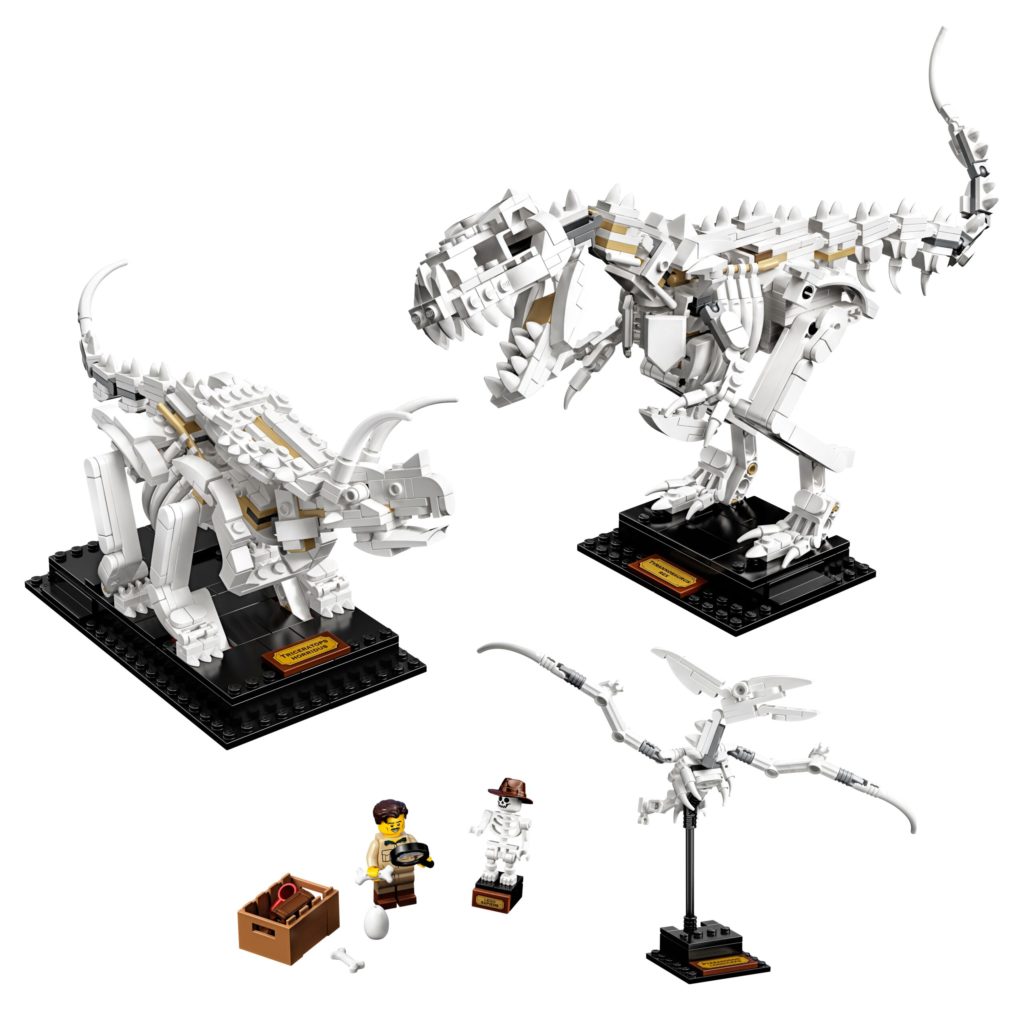
2019 continued with another Ideas throwback, although this one harks back to a slightly different era. 21320 Dinosaur Fossils offers a new take on LEGO dinosaurs, several of which have appeared over the years.
In a way this set feels like an evolution of 21110 Research Institute, which featured a smaller brick-built dinosaur skeleton. However, the skeletons in this set are considerably more impressive.
Three different animal skeletons (and a standard minifigure skeleton) are represented in this set. These include a tyrannosaurus rex, a triceratops and a pterosaur, the latter of which is apparently a reptile rather than a dinosaur. They are roughly scaled in line with minifigures, and feature black display stands with stickered plaque elements.
This makes them a great addition to a LEGO museum scene, especially if you’re a Jurassic Park fan. Indeed, the box art shows them appearing in such a context. Each major skeleton in this set comes with its own instruction manual, making this another great choice for multiple builders.
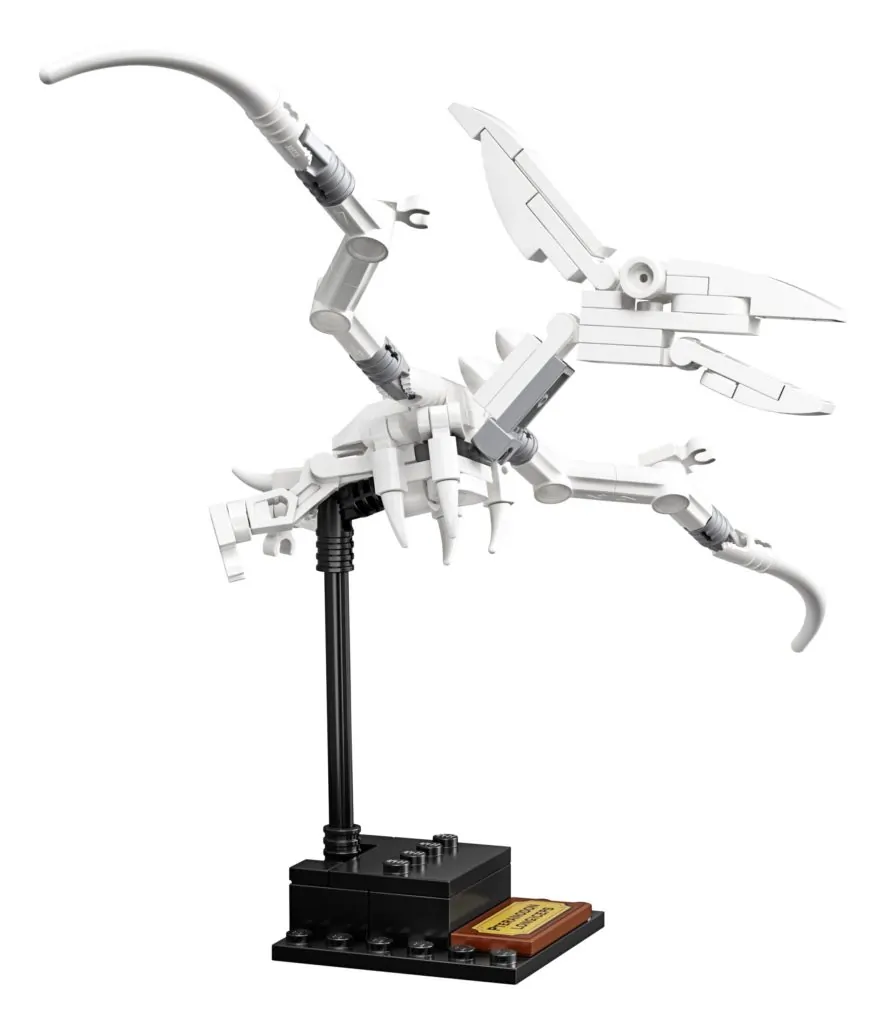
Pterosaurs lived on earth from the Mesozoic era to the end of the Cretaceous era, or 228–66 million years ago. They are the oldest vertebrates known to have evolved powered flight, thanks to the large membranes formed on their bodies.
The pterosaur in the set is displayed atop a long Technic axle, allowing its flight to be mimicked. It features a large skull and exposed ribs, as well as what remains of its wings. The position of its jaw can even be adjusted if you want to go all Jurassic World with it.
Since they’re a little heavier, the triceratops and T. rex stand directly on their respective display plinths. They also use a mix of white and beige elements to reflect the age of the bones.
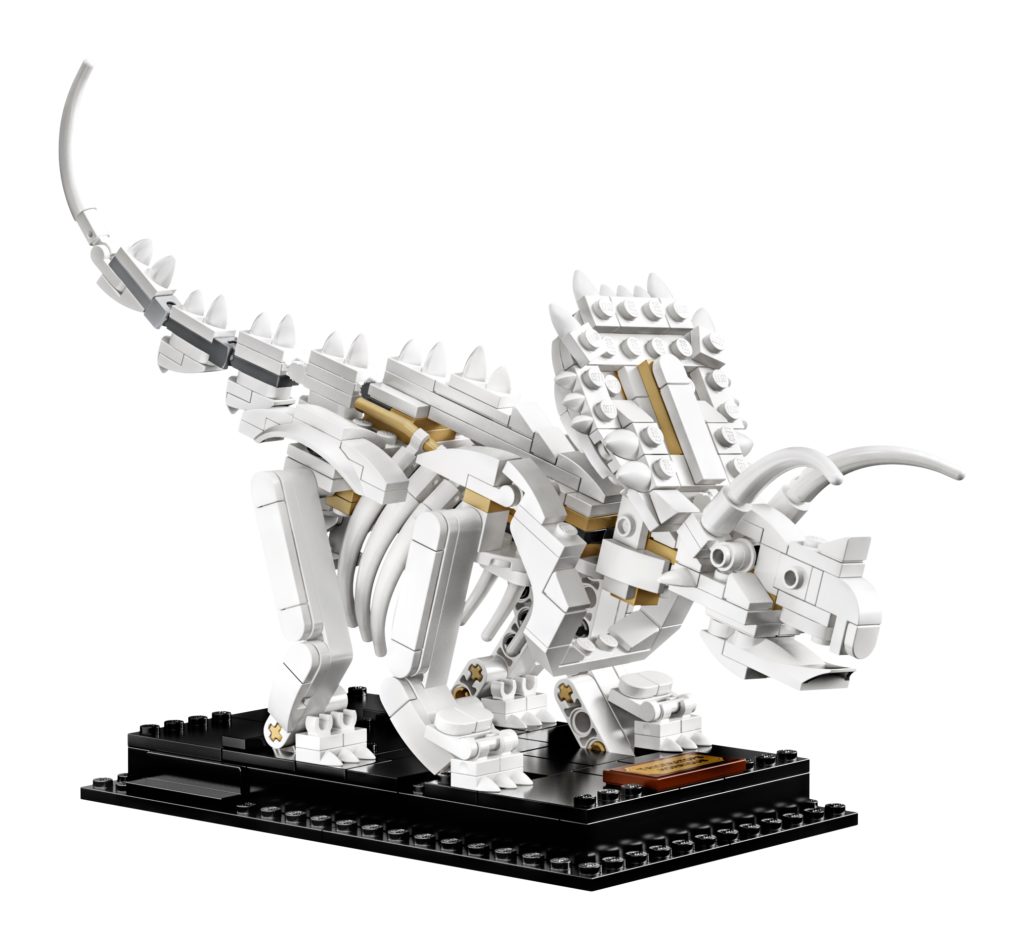
The triceratops lived in the Late Cretaceous period, dying out 66 million years ago. Its name literally translates to ‘three-horned face’, and at up to nine metres long it was one of the largest dinosaurs to have ever existed.
The LEGO triceratops features a large pair of prominent horns, as well as a smaller one on the tip of his nose. Like the pterosaur, this skeleton has a number of exposed ribs around what used to be its stomach. A number of toothy elements decorate his spine and tail, which can be repositioned thanks to its ball and socket joints.
Of course, the main event is the tyrannosaurus rex. A member of the Tyrannosaurus genus, the T. rex is another inhabitant of the Late Cretaceous period. It was probably an apex predator during its existence, although many paleontologists now believe it was also a scavenger.
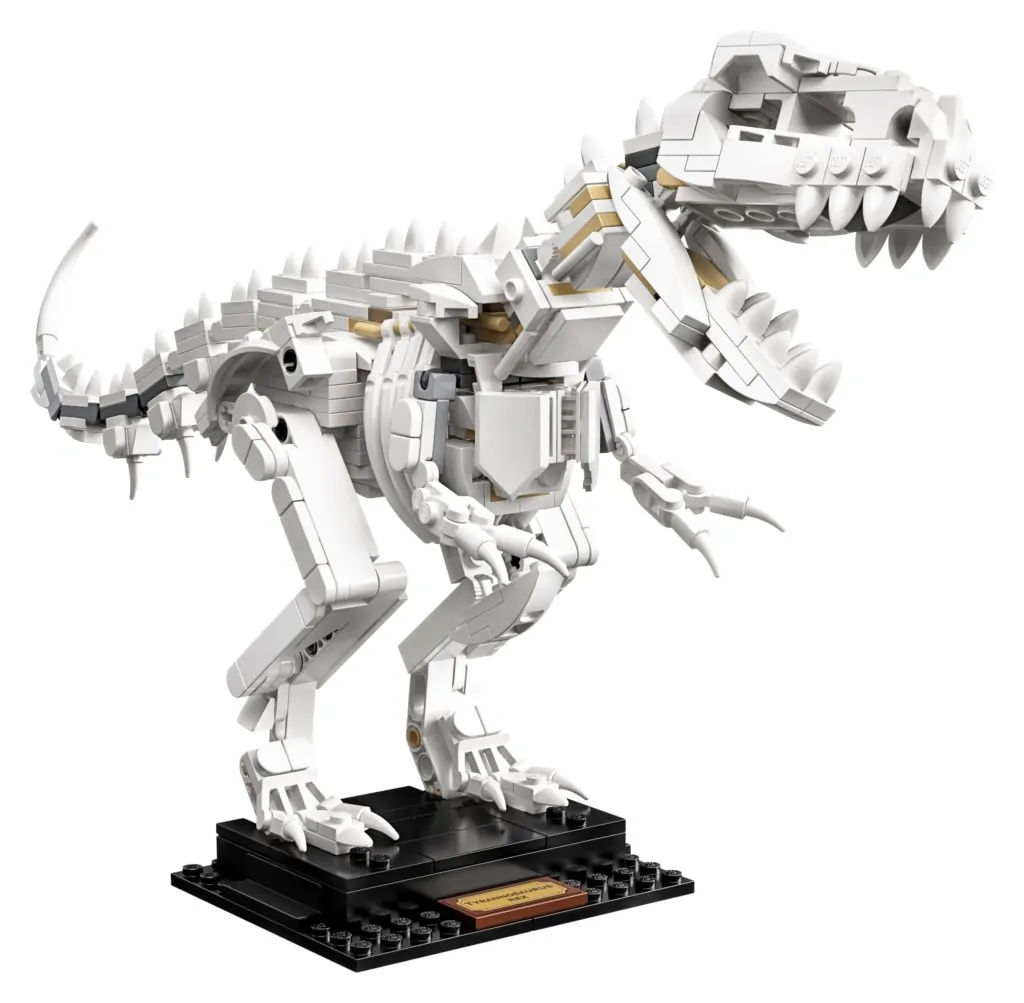
Even as a skeleton it’s suitably fearsome, with its powerful legs, sharp teeth and long tail all preserved here. The skull of the T. rex comes with a number of gaps, presumably mimicking a similar structure in the real thing. Its jaws can be unhinged to provide dino-chomping action.
However, the dinosaur is unable to stomp around wreaking havoc. It uses Technic beams to assemble its legs, which are secured directly to the display stand. As such, some modification may be needed to turn this into a playset.
There are some other points of articulation – namely, its short front arms and its long tail. Like the triceratops, this tail is decorated with toothy elements that lend it additional texture.
Interestingly, this set comes with a paleontologist minifigure. He has a suitably cheerful expression, presumably as he’s surrounded by dinosaur skeletons. His outfit is understated but features dual-moulding on its legs, representing a pair of sturdy brown boots.
The paleontologist is accompanied by a crate filled with accessories including a collection of tools, a dinosaur egg and a book with a picture of a bone in it. A LEGO minifigure skeleton with its own display stand can be positioned alongside the dinosaurs. A nameplate designates them as LEGO SAPIENS, suggesting minifigures aren’t strictly human.
The continued success of the Jurassic World theme shows that LEGO dinosaurs remain popular, and this is certainly a unique addition to any LEGO dinosaur collection. Indeed, the LEGO Jurassic World theme seems to have taken a leaf out of its book. 76940 T. rex Dinosaur Fossil Exhibition was produced for the Camp Cretaceous subtheme, although it does rely upon a pre-moulded dinosaur skull in the finished design.
2020 – 2022
The new decade saw LEGO Ideas go from strength to strength. While some of its models clearly followed in the footsteps of previous efforts, the diversity of available sets continued unabated.
21321 International Space Station
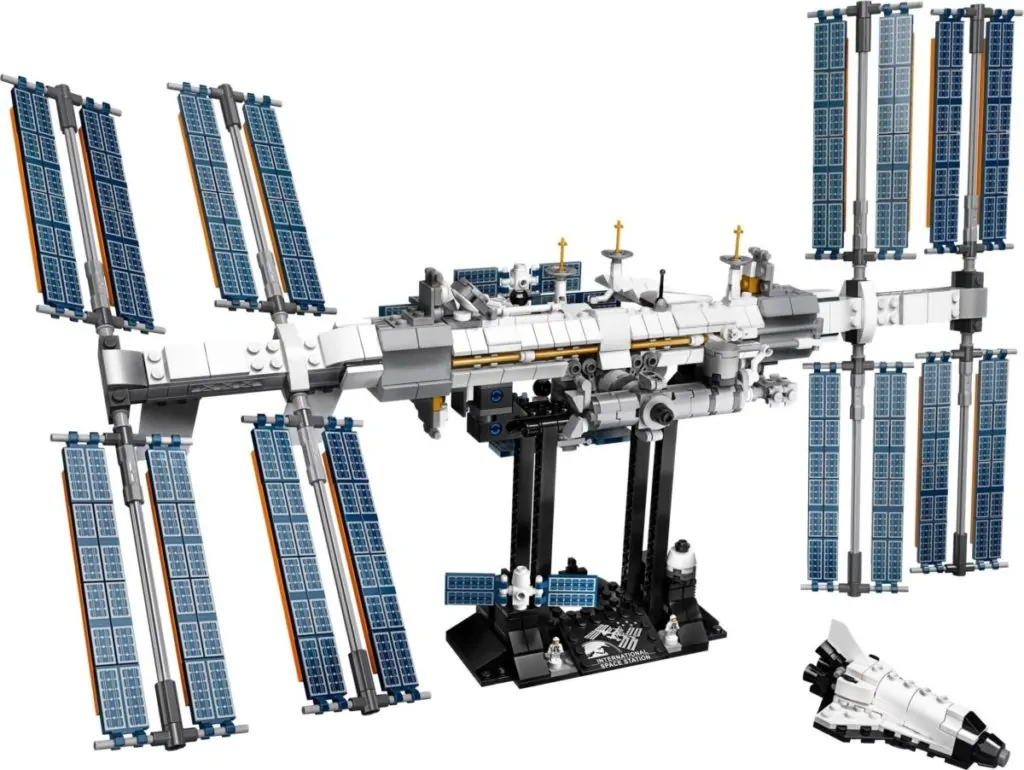
We returned to beloved territory – outer space – with 21321 International Space Station. This structure was first created in LEGO form back in 2003, via a theme inspired by the Discovery Channel. However, this new LEGO version is considerably more ambitious.
The International Space Station is the largest artificial object in space, with five different space agencies from the USA, Russia, Japan, Europe and Canada involved in its operation. It was assembled in stages over several years; segments of it were first sent into orbit from the late ‘90s onwards. The station currently measures 109m long, with an international crew of seven people typically living aboard it.
Because of its zero-gravity environment, the International Space Station is an ideal place for scientific research. The studies undertaken here have a range of applications back on Earth. Recent investigations aboard the station will allow us to improve precision medicine, produce better solar cell materials and even extend the shelf life of detergent.
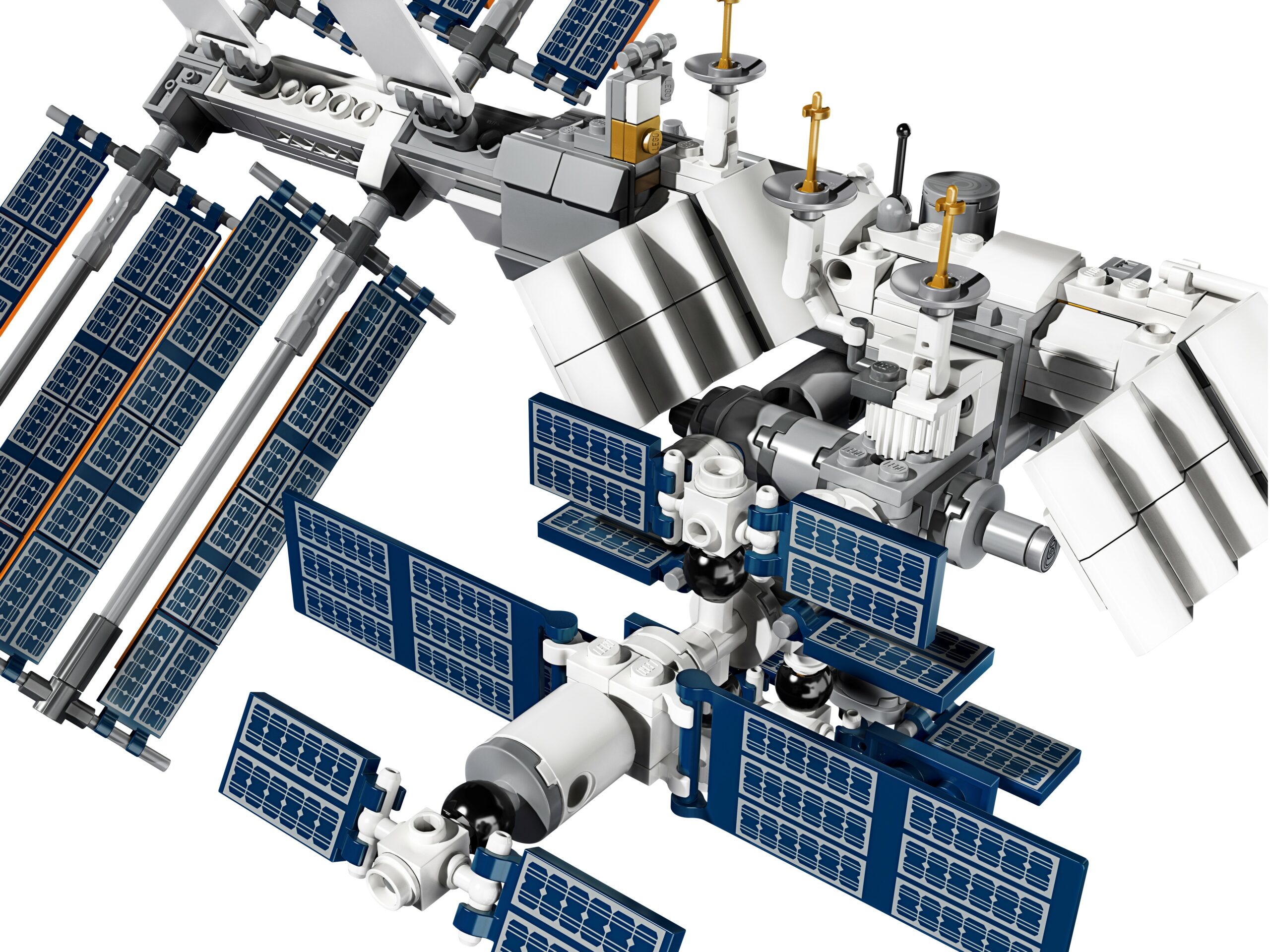
The LEGO version captures the International Space Station’s contemporary appearance, with its massive arrays of solar panels surrounding its central structure. Despite its small scale, a number of real-life features are recreated here such as radiators, insulated conduits and remote manipulator arms.
Naturally, other components of the station like laboratories and a habitation module are also represented here. These use grey cylindrical elements to achieve the proper shape.
A tangle of small solar panels is fixed at a perpendicular angle to the main structure. Other areas of the space station like the Cupola can be found here, and put existing elements to creative use. An airlock entrance, for example, is recreated using a tile printed with a soft drink ring-pull.
The most striking feature of the International Space Station is its long solar arrays. These are recreated in LEGO form, using a number of printed elements to achieve the proper effect. They can rotate independently of the central structure, and allow for some additional visual interest once it’s displayed.
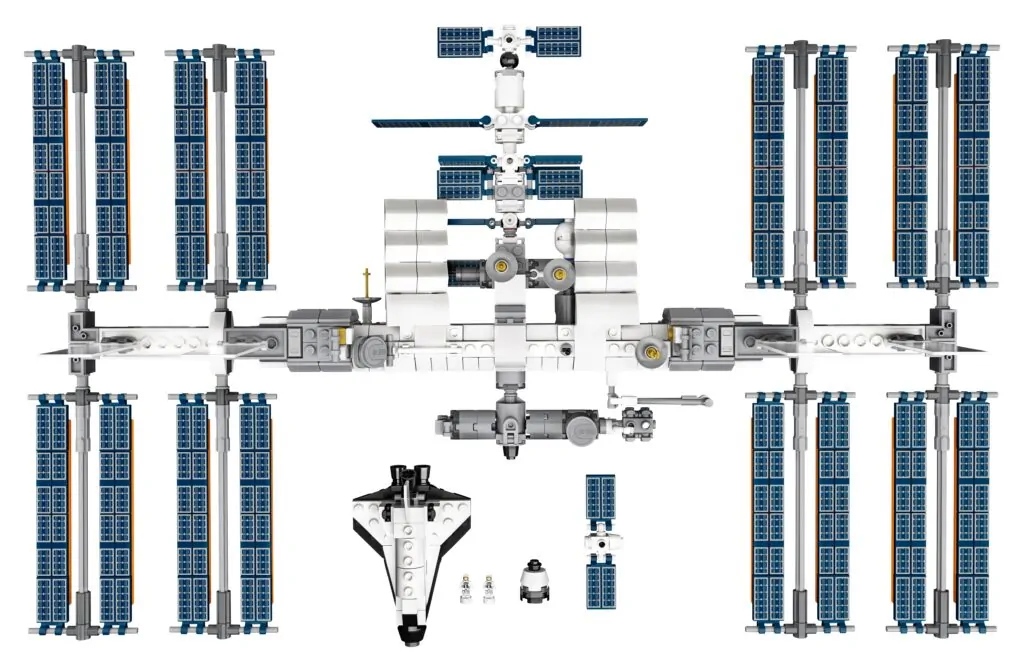
Once assembled, the LEGO International Space Station sits on a black display stand. This is decorated with the station’s name, as well as a pair of astronaut microfigures. Three brick-built spacecraft used to travel to the station are also to be found here: the Space Shuttle, the SpaceX Dragon and the Boeing CST-100 Starliner.
With its fine scale depiction of a real-life feat of engineering, 21321 International Space Station is a great choice for any LEGO or space enthusiast. However, its relatively unglamorous design might make it a tough sell if you’re not a diehard fan.
21322 Pirates of Barracuda Bay
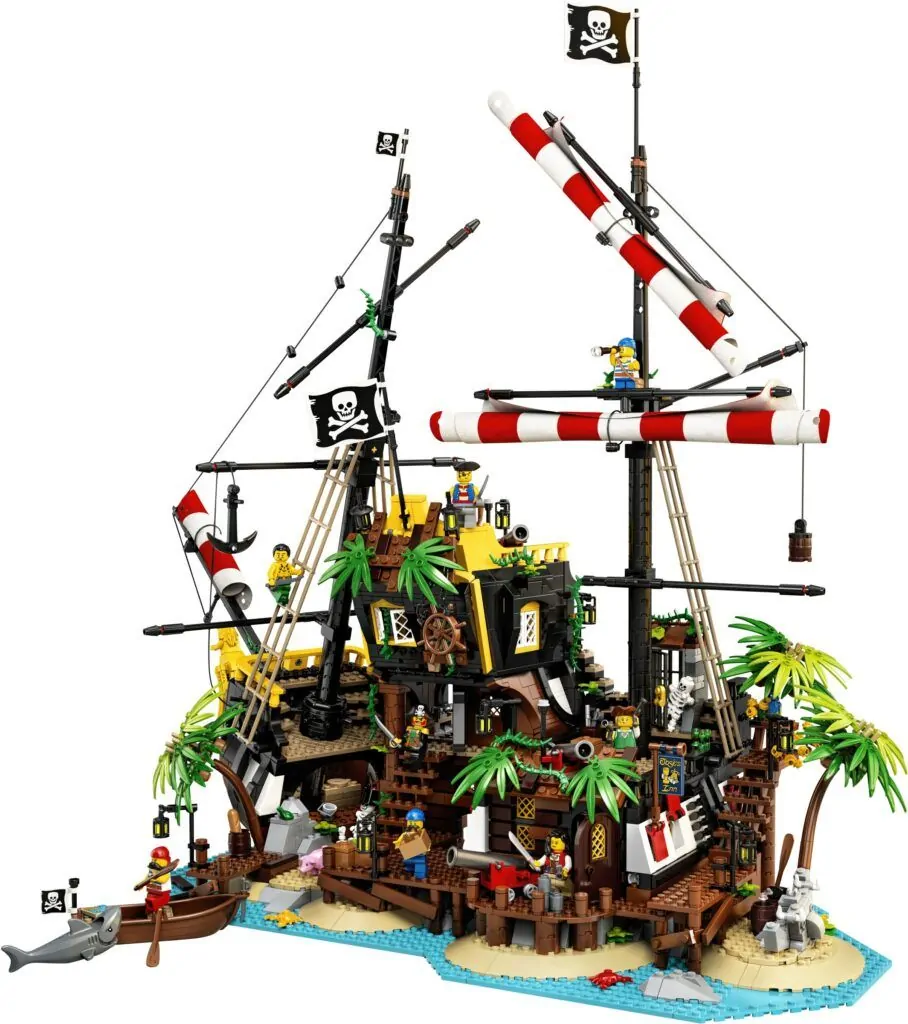
The next Ideas set is both groundbreaking and kind of conservative. 21322 Pirates of Barracuda Bay takes a brave new approach to LEGO ship design. However, it enjoyed a relatively short time on store shelves – suggesting this kind of set isn’t treasured as much as it used to be.
21322 Pirates of Barracuda Bay is a tribute to the early days of LEGO Pirates sets. Models inspired by the Golden Age of Piracy (or a romanticised version of it) first launched in 1989, pushing LEGO forward in many different respects. Pirate ships were the highlight of the theme thanks to their large size, fabric sails, working cannons and other desirable features.
6285 Black Seas Barracuda was one of the earliest Pirates releases, and the most ambitious set of its type for several years. It depicts a massive pirate ship with a distinctive red, white, yellow and brown colour scheme, as well as a crew of salty scoundrels to sail in it. Despite some crude construction methods, it remains one of the best LEGO sets ever produced.
The LEGO Group seems to have some affection for this particular model. It was rereleased in 2002 as part of the short-lived LEGO Legends line (albeit with some minor alterations) and has been referenced in other LEGO sets from time to time. The most recent example of this is in 11021 90 Years of Play, which includes a small, blocky tribute to the legendary vessel.
21322 Pirates of Barracuda Bay reimagines this ship with modern construction techniques, while working to preserve the overall appearance of it. The set allows us to build the ship in two different configurations. You can construct it as an oceangoing vessel, or as a shipwreck transformed into a pirate’s hideaway.
In the latter configuration, the different sections of the ship sit atop a jetty cobbled together from driftwood. Several ‘planks’ are positioned at odd angles, to highlight its crude construction. Some of the surrounding beach and ocean is also represented here, with a mix of curved beige and flat blue pieces.
A number of crabs and palm trees surround the shipwreck, reflecting the tropical environment it finds itself in. A stone head can also be seen, partially buried in the sand. This draws inspiration from Islanders sets, which launched in 1994 and nodded to Pacific Islander culture.
Different parts of the ship have been repurposed as living quarters and other facilities. The galley is now Jose’s Inn – a tribute to the father of the set’s fan designer. Inside is a table and a sleeping area, as well as several bottles to quench the pirates’ thirst. Several boxes of supplies can be found outside the inn, with bread and fruit available for consumption.
The deck above the inn can still be accessed, although foliage is slowly starting to grow across the surface of it. A small jail cell can be found here, with a skeleton prisoner inside: possibly a mutinous crewmate? Another skeleton wearing the hat of a redcoat soldier can be found elsewhere in the shipwreck.
Other areas of the shipwreck have been repurposed as storage and kitchen areas, with staircase and rigging elements used to help the minifigures move around them more effectively. Naturally, Captain Redbeard has a cabin all to himself. It contains a desk, a chair and a folding bed, with the chair specially designed to accommodate his peg leg.
The front of the ship is particularly impressive. In its shipwreck form the keel underneath it is exposed, reinforcing the idea the ship has run aground. Since this is a feature of real sailing ships, its inclusion here is very welcome.
When you want to sail the seas again, the shipwreck can be re-assembled into the Black Seas Barracuda we know and love. To do this sections of the ship must be detached from the base, and a small bag of parts must be used to ‘repair’ the various sections.
Once reassembled, the ship is an impressive tribute to the earliest days of the Pirates theme. It retains the overall colour scheme of 6285 Black Seas Barracuda, although larger quantities of brown elements help it to look more realistic. Some of these are used in the middle of the ship, giving minifigures plenty of spaces to stand.
Newer curved elements allow for more elegant shaping of the ship’s forecastle and poop deck. When combined with other elements like fabric sails and a working capstan (which raises and lowers the anchors) the result is an excellent addition to any LEGO fleet.
Eight members of Captain Redbeard’s crew, including Captain Redbeard himself, are included with this ship. These reflect the advancing years of the Pirates theme in a few subtle ways. All of the pirates enjoy more detailed prints than their predecessors, with characters like Port and Starboard mimicking the stripy vests of Redbeard’s original crew. Redbeard himself now has a patch of grey in his facial hair, suggesting the years are starting to catch up with him.
Despite pushing a number of nostalgia buttons, 21322 Pirates of Barracuda Bay was only available for about a year and a half – a notably shorter timespan than several of its contemporaries. The set was also marked as temporarily out of stock in the run-up to its official retirement date, making it tricky to buy in this period. Anyone who missed out on this set may have to console themselves with 31109 Pirate Ship, or brave the high seas of the secondary market instead.
21323 Grand Piano
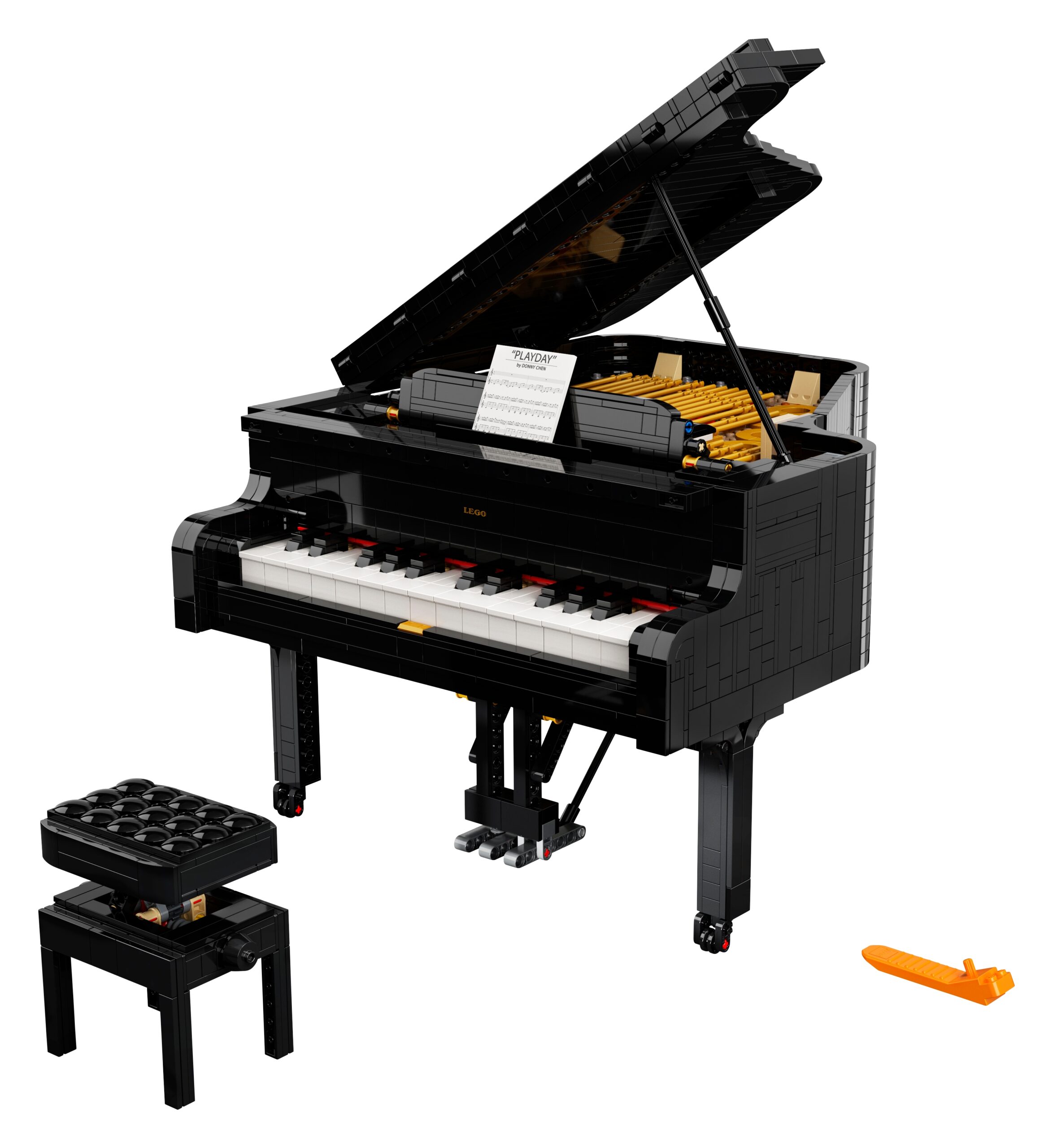
If pirate ships aren’t your style, the next Ideas set may be music to your ears. 21323 Grand Piano recreates a classic musical instrument with LEGO bricks. Its large size and high attention to detail give it a hefty RRP of £309.99 / $349.99 / €349.99. This makes it the most expensive LEGO Ideas set to date by a considerable margin.
Despite the set’s high price, 21323 Grand Piano isn’t based on a particular instrument. Instead it takes a more generic approach, while preserving the features we’ve come to expect. It is—fortunately—a good size, measuring over 30cm wide & deep and over 20cm high. Once assembled the exterior of the piano is also completely studless, and something of a fingerprint magnet.
The interior of the piano uses a mix of aesthetic elements and working mechanisms. Several gold poles represent the piano’s strings, while a small working keyboard can be installed at the front. Other essential components like the fall board (which covers the keys) and an adjustable piano stool are also included.
What makes this LEGO piano special is that it can actually play music – after a fashion. The keys are connected to a LEGO Powered Up Motor, which is in turn connected to a Powered Up hub. This syncs to the LEGO Powered Up App running on a smartphone, which has a special mode just for this set.
Once the hub and the phone are connected via Bluetooth, the phone can be placed on the piano’s music stand. 20 different songs can then be played through the phone’s speakers, with the keys moving in time with the music.
The problem is that since the internal mechanism is relatively simple, there’s little connection between the music being played and the movement of the keys. It’s visually impressive on a superficial level, but true music fans may find it a bit underwhelming.
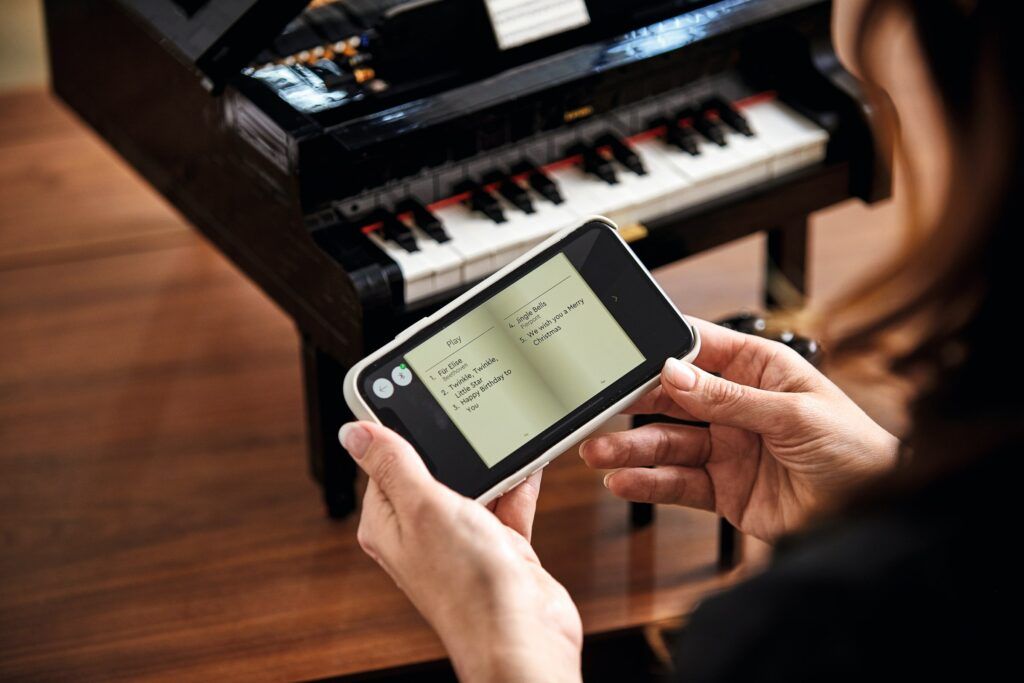
You can also play along with the music, although—again—there’s little connection between your actions and the piano. Pressing a note on the keyboard causes the next note in the song to play, but you don’t need to press the right key to get the right note.
Still, for the average LEGO fan 21323 Grand Piano remains an impressive model. Hopefully, the accompanying app will stick around for a while to come.
21324 123 Sesame Street
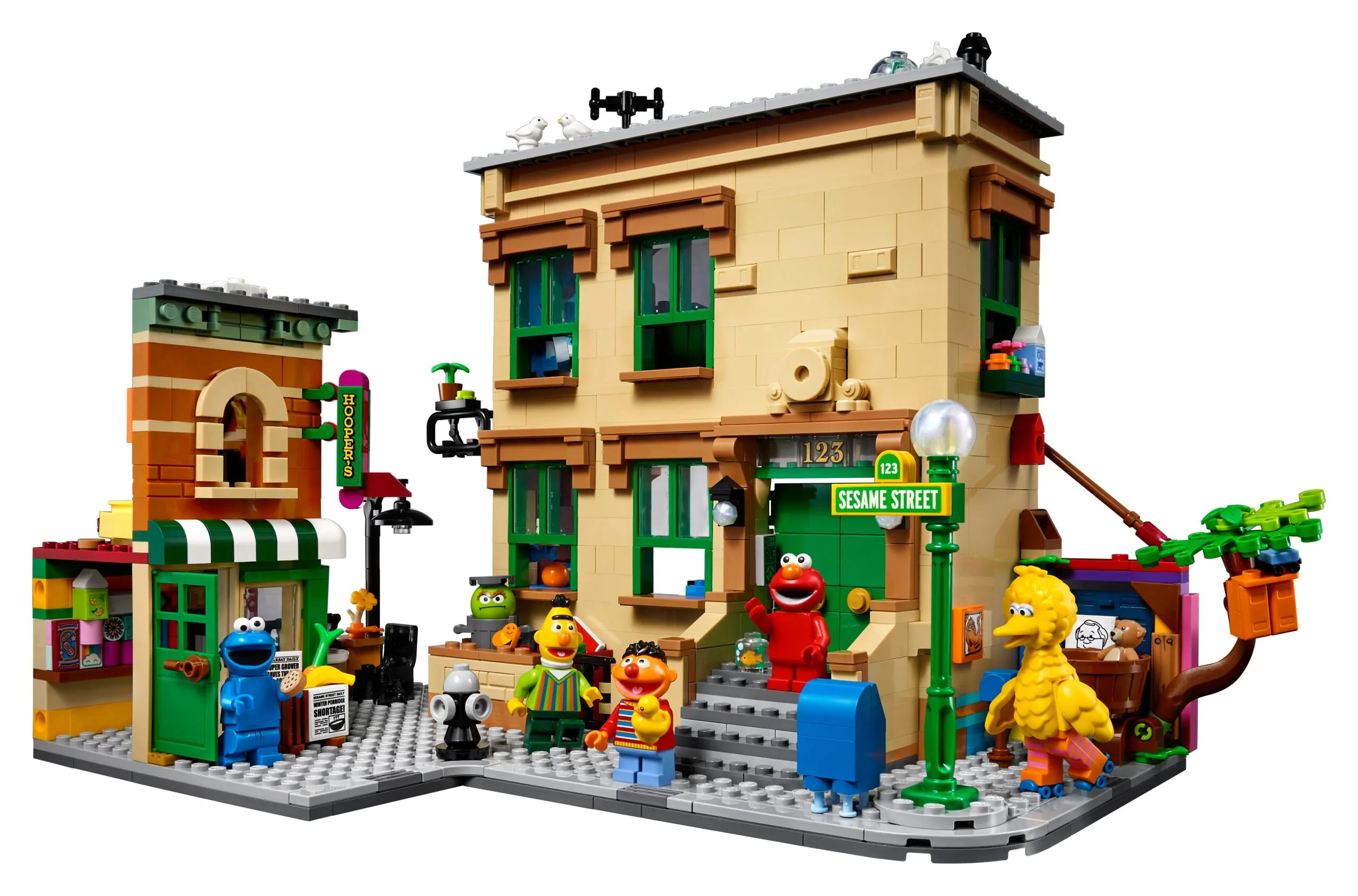
While many LEGO Ideas sets have skewed towards the older LEGO fan, the next 2020 Ideas set had a slightly broader appeal. 21324 123 Sesame Street is an impressive tribute to the beloved children’s show, recreating a chunk of the street and several of its characters.
The set was notable for tearing up the rulebook on LEGO Ideas character design. For the first time, LEGO Ideas minifigures could use bespoke head elements to better capture more unusual appearances.
As a beloved piece of children’s television, the original Sesame Street show is a good fit for the LEGO brand. It debuted in 1969 with a mix of humorous skits and educational content; children from low-income families have been a particular target audience. More broadly, its focus on educating children has helped to distinguish it from other shows in this earlier period of television.
Sesame Street stars a mix of human and Muppet characters, with the likes of Kermit the Frog, the Cookie Monster, Elmo and dozens of others making appearances in the show. It has also attracted a wide array of celebrity guest stars, and inspired over a thousand studies into its impact on American culture. More than 4,000 episodes of Sesame Street have been broadcast, and the show has over 200 Emmy awards to its name.
21324 123 Sesame Street recreates one of the street’s apartment buildings and the neighbouring Hooper’s Store. On the street itself is a number of familiar elements, including the Sesame Street sign and Big Bird’s nest. The area surrounding the nest is decorated with pictures of Mr Hooper and Mr Snuffleupagus; several other characters from the show are referenced in the set like this.
Other notable features of the street include Oscar the Grouch’s trash can, a small dining area and decorated elements referencing other characters. An advertisement for Biff and Sully’s Construction Company can be seen on the outside of the main apartment building, which is also decorated with a mural of Abby Cadabby, who first appeared on the show in 2006.
The inside of the main building includes bedrooms for Elmo, Bert and Ernie. Elmo’s room is decorated with various pictures and filled with toys including a wooden train, a rocket and a bunny. Dorothy (Elmo’s pet goldfish) is also here thanks to a printed minifigure head element.
The first floor of the apartment building is occupied by Bert and Ernie. Some of their personal effects can be found here, including Bert’s bottle cap collection and Ernie’s beloved rubber duck. Bert’s pigeon coop can also be found on the roof, as can an alien UFO.
Hooper’s Store is a little exposed thanks to a lack of external walls, although the fact this is a TV set might counteract that flaw. The front door of the store features a pair of newspapers referencing Super Grover and an impending porridge shortage. The inside of the shop features a cash register and various packets; the printed peanut packet is especially attractive.
The apartment above Hooper’s is occupied by the Cookie Monster, and contains a seating area and a small television. References to TV host Guy Smiley and maths enthusiast Count von Count can be found in this area.
Five minifigures (Big Bird, Elmo, Bert, Ernie and the Cookie Monster) are included in this set, along with a printed sphere element for Oscar’s head. All of the minifigures use bespoke head pieces, with Big Bird also featuring winged arms and striped leg printing.
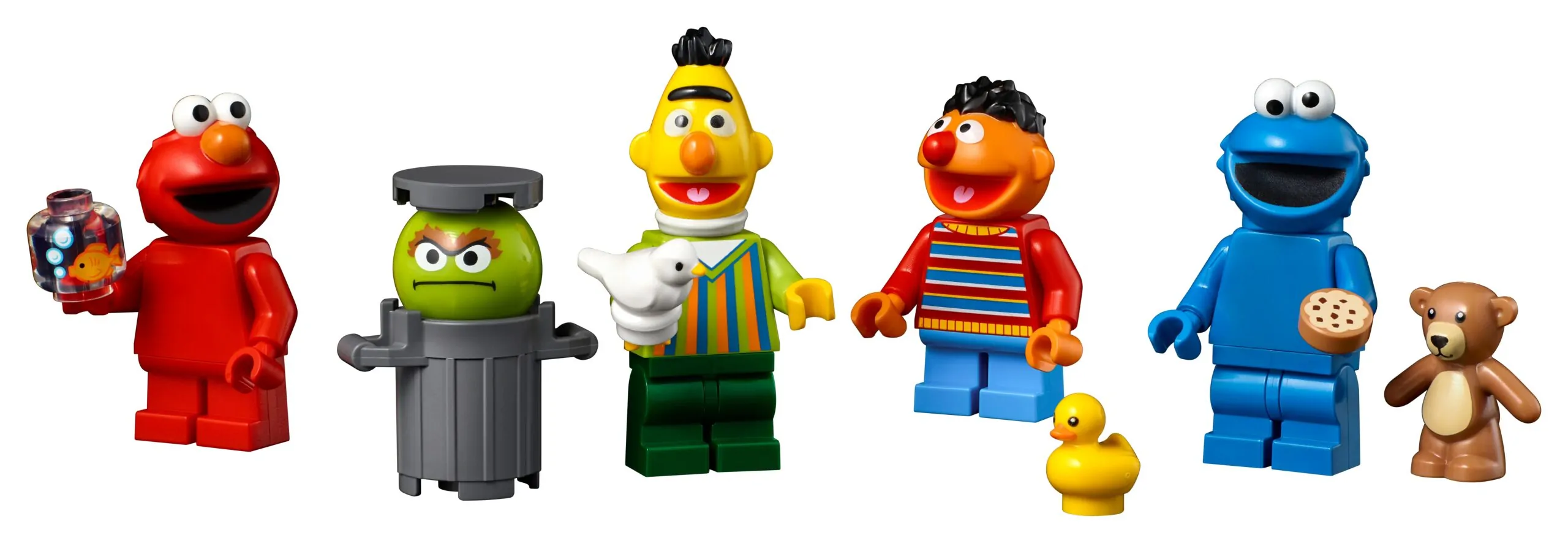
Elmo and Cookie Monster feature no printing whatsoever on their torsos – an unusual move for a licensed LEGO character. Characters like Bert are comparatively more detailed, with his head element featuring a moulded collar.
With a mix of thoughtful play features and clever references, 21324 123 Sesame Street is a great choice for the show’s many fans. Its relatively low RRP also makes it one of the more accessible LEGO Ideas sets – a crucial factor given the show’s target audience.
21325 Medieval Blacksmith
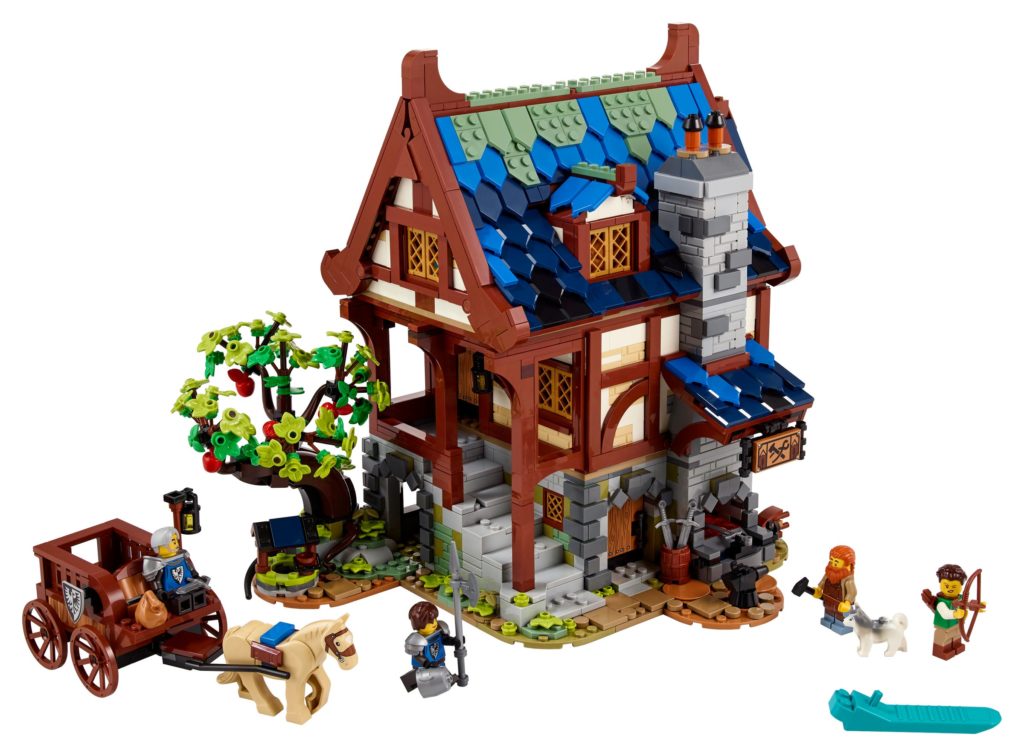
The first 2021 Ideas set is another throwback to LEGO’s past. However – instead of hewing closely to an established design – 21325 Medieval Blacksmith goes in a new direction, benefiting from modern-day elements and construction techniques.
The human craft of blacksmithing is an ancient one, with smithing activity dating back to 1500 BCE. By the medieval era, the blacksmith played a vital role in daily life. They produced a variety of metal items including weaponry, armour and furniture, and occupied a central location in medieval settlements.
21325 Medieval Blacksmith pays tribute to a blacksmith’s shop from this time period. The building’s exterior uses timber framing and carved stonework to lend it a rustic charm. It also references the broader Castle theme with the inclusion of two Black Falcon knights, who appeared in LEGO Castle models from 1984 onwards.
It appears the blacksmith’s shop is located in Black Falcon territory. This is due to the blue roof tiles; despite their name, Black Falcon knights commonly wear blue outfits. A few of the tiles are sand green, suggesting the spread of lichen – and that the shop has been standing for several years.
The shop is built over three levels, each of which serves a different function. On the ground floor can be found the blacksmith’s workshop; this includes both exterior and interior workspaces.
Swords and tools can be placed in the forge from the outside. Pressing on a set of brick-built bellows causes a light brick to activate and the forge to glow. An anvil and a few tools can also be found in this area, allowing the blacksmith to work on his craft.
A small pumpkin patch, a well, and an apple tree surround the shop; the latter feature has a target hanging from it for archery practice. There’s even a small storage area for firewood, with printed tiles used to depict the logs.
The ground floor interior includes additional fuel for the forge, raw materials, a grindstone and some finished wares. These include armour, a Black Falcon shield and some cookware. This helps to reflect the diversity of products medieval blacksmiths would produce. An orange ingot on the anvil here represents glowing metal, waiting to be hammered into shape.
The first floor of the shop features a kitchen area for the blacksmith and a lady companion. A pair of chairs sits around a dining table, with some food, a couple of goblets and a barrel of water. There’s also a small food preparation area with a hearth, various utensils and even a butter churn.
The second floor of the shop includes a sleeping area, with a large ornate bed for someone to sleep in. However, it can only accommodate a single minifigure comfortably. A small writing desk can be found in this area, as can a bearskin rug – an unusual feature for any LEGO set.
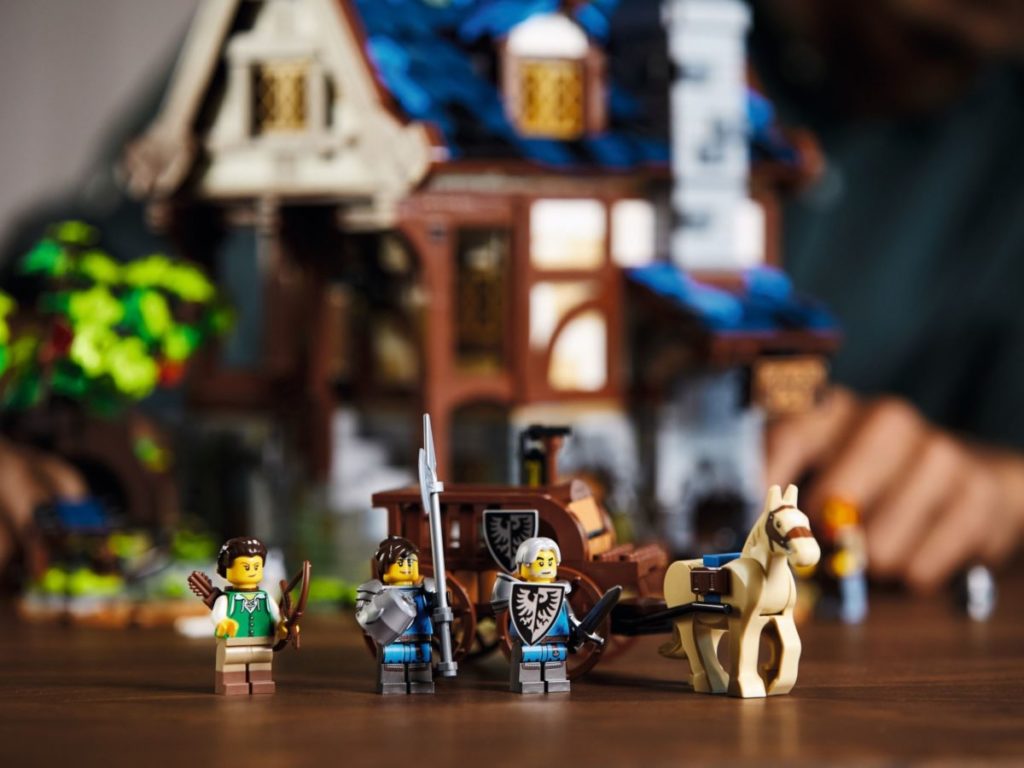
Finally, a simple horse-drawn cart can be found in this set. This is ridden by the two Black Falcon knights, and includes a rare beige horse.
Since medieval LEGO sets are now few and far between, 21325 Medieval Blacksmith is a must-have for LEGO Castle fans. It’s a good companion to 31120 Medieval Castle, which released the same year with Black Falcon knights of its own.
21326 Winnie the Pooh
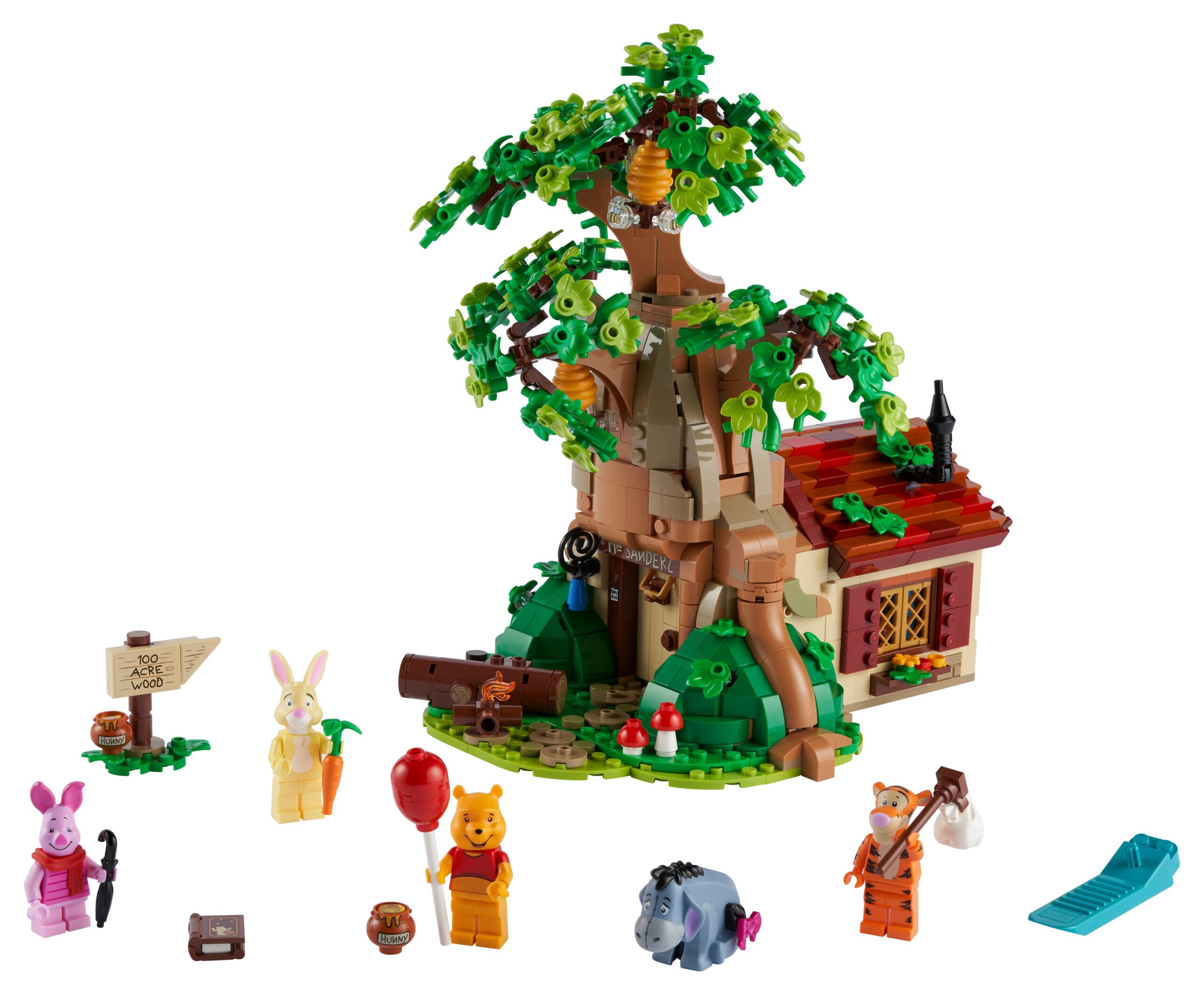
The next 2021 Ideas set brings some more beloved characters to the LEGO lineup. 21326 Winnie the Pooh recreates one of the Walt Disney Company’s most beloved franchises in LEGO form.
Winnie the Pooh was first created by the Englishmen A. A. Milne and E. H. Shepard. The bear of very little brain debuted in a quartet of books published throughout the 1920s, which went on to be republished in several other languages.
In 1966, the Walt Disney Company began releasing animated content inspired by Pooh and his friends. Numerous animated films, TV shows and video games have been released from Disney over the years, making Winnie the Pooh one of Disney’s most recognisable franchises.
21326 Winnie the Pooh recreates Pooh’s house in the Hundred Acre Wood, where most of Pooh and his friends’ adventures take place. The house is built around a large tree, and its roots are recreated with curving tube elements. Other natural features like mushrooms, a snail and various leaves are scattered around the tree and the house’s roof tiles.
The leaves of the tree are represented with a mix of leaf and coral elements, allowing for a more organic appearance to them than other elements would allow. A pair of beehives (complete with buzzing bees) are even secured to the branches, referencing Pooh’s inexhaustible love of honey.
A fallen log and a campfire outside the front door give Pooh a place to ponder the mysteries of life. A small, brick-built sign can also be found outside the house, pointing the way to the Hundred Acre Wood itself.
The house itself can hinge open to reveal Pooh’s living area, which includes an armchair, a fireplace and a bed to sleep in. There are several finer details that make it clear whose house this is. These include a map of the Hundred Acre Wood, a framed picture of bees, a box labelled “Poohsticks” and – naturally – several jars of honey.
Other accessories in the house include a Winnie the Pooh book, referencing Pooh’s literary roots. The inside cover of the set references Ben Alder, the fan designer who first produced the initial design. A golden locket (used by Tigger in The Tigger Movie) can also be found in the house, in a nice nod to the broader world of the franchise.
Five minifigures are included with this set, benefitting from the bespoke head elements that 21324 123 Sesame Street paved the way for. Pooh himself is naturally included, as are Piglet, Tigger, Rabbit and Eeyore. Piglet wears a bright red scarf, while Tigger uses a stripy tail element to better capture his appearance.

Eeyore is a particularly interesting addition to the set. His quadrupedal design demanded a brand new element to represent it; while he has no articulation, it’s a great representation of the character. A pinhole on his tail allows a pink bow element to be attached to it.
With its detailed characters and various references, 21326 Winnie the Pooh is a wonderful choice for any Winnie the Pooh fan. However, it is rather expensive for its size, which may deter the less hardcore Winnie the Pooh followers.
21327 Typewriter
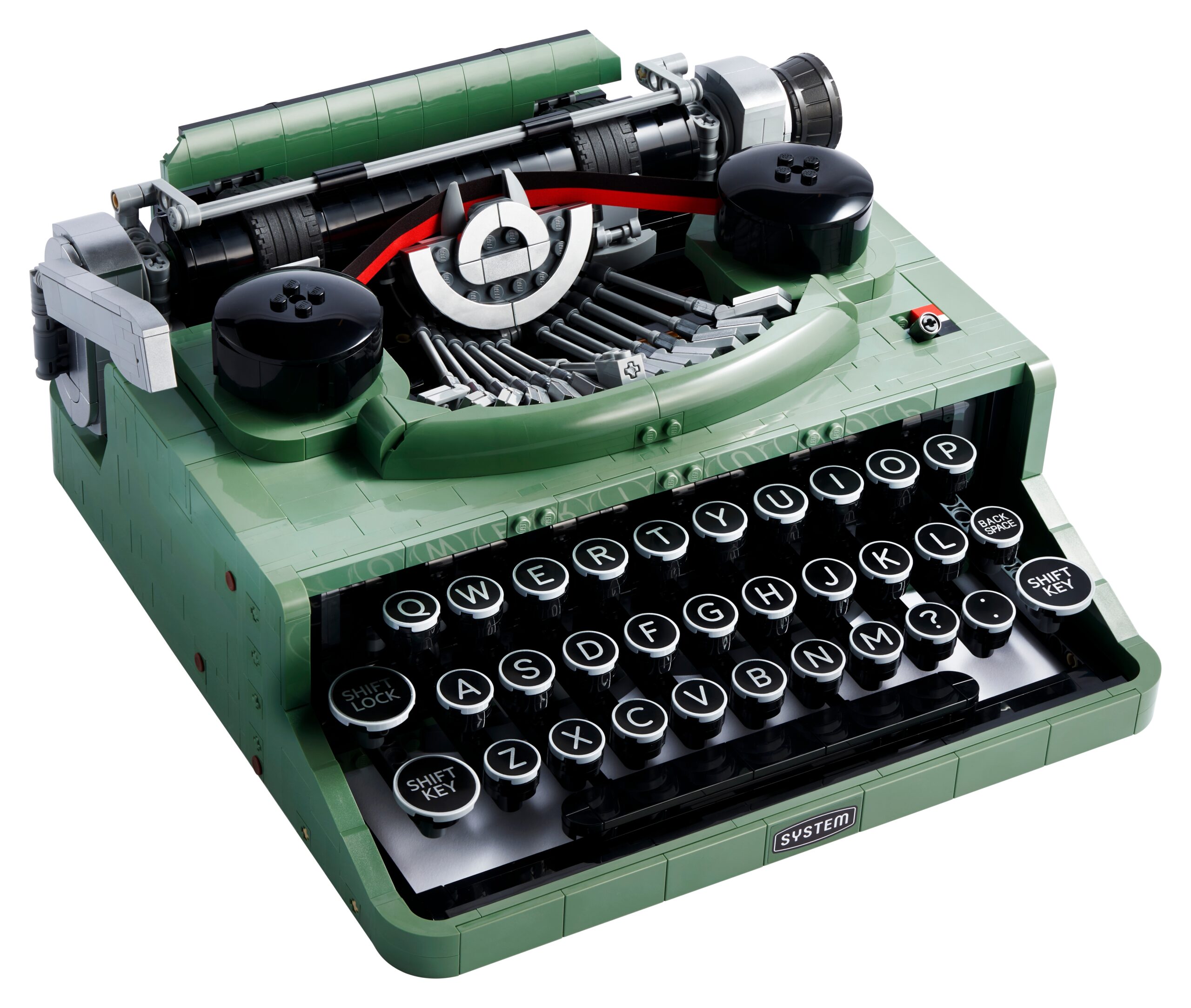
If 21326 Winnie the Pooh was created with an eye on the younger LEGO fan, 21327 Typewriter was created for the older one. It’s a LEGO version of a classic writing instrument, and manages to replicate some functionality of the real thing.
Typewriters are older than you might expect, although it took some time for them to become commercially viable. Rudimentary typewriters date back to the late 16th century, with a number of different designs appearing in the following years. The first commercially successful typewriter appeared in 1868, coining the word ‘typewriter’ in the process.
The typewriter we tend to recognise (with moulded letters striking an ink ribbon) became the standard design around the start of the 20th century. It’s this era of typewriter design that the Ideas theme pays tribute to. Despite its roots as a fan-made model, 21327 Typewriter apparently draws inspiration from a model used by Ole Kirk Christiansen – the founder of the LEGO Group itself.
The set’s ‘age’ is immediately conveyed by its sand-green casing, which lend it some retro charm. This conceals a highly complex internal mechanism, which allows a hammer to strike a piece of paper inserted into the typewriter. The piece of paper even moves to the right when a key is pressed, thanks to a secondary, spring-loaded mechanism.
A5 sheets of paper can be inserted into the typewriter, and held in place using flag and tire elements. A number of documents in different languages are provided for use with the typewriter; each once contains a message from Thomas Kirk Kristiansen, a descendant of Ole Kirk Christiansen and the LEGO Group’s current Chairman of the Board. A fabric ink ribbon is also included for additional authenticity.
Naturally, there are some compromises in this set. Some of the buttons and levers don’t function, the keys aren’t held as securely as you might like and its novelty may wear off fairly soon after acquiring it. However, it’s still a great example of what LEGO, as a toy, is now capable of.
21328 Seinfeld
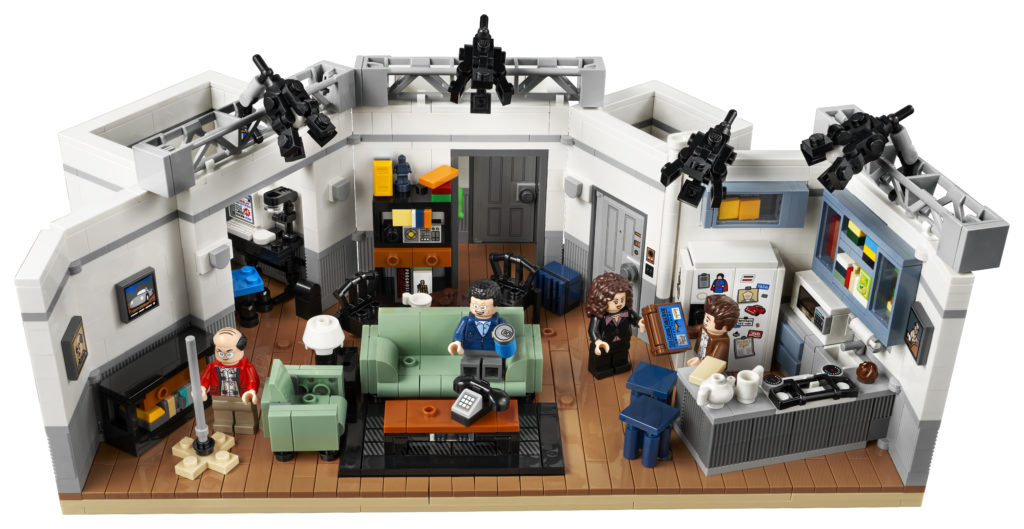
The streak of sets for the older LEGO fan continued in 2021, with 21328 Seinfeld. This set followed in the footsteps of previous sitcom-based Ideas products, capturing another familiar TV show in LEGO form.
Seinfeld is an American sitcom, running over nine seasons for much of the 1990s. Starring a fictionalised version of Jerry Seinfeld, it follows him and his friends George, Elaine and Cosmo through a series of low-stakes exploits. It’s famously known as a ‘show about nothing’ thanks to its slice-of-life storytelling, although it has proven enormously influential in American culture since its broadcast.
Most of the set’s elements go into recreating Jerry’s apartment. Like 21319 Central Perk before it, a number of studio lights are positioned around the model. This helps to reinforce the idea this is a TV set.
The relatively large size of the set allows a number of accessories and details to be incorporated into it. The centre of the room contains various tables and chairs for Jerry and his friends to sit at. There’s also a cabinet with numerous TV show references, including the Fusilli Jerry statue and the fictional movie Prognosis Negative.
The kitchen in the set is small but impressively detailed, with cluttered cupboards, a microwave oven, a range and a kitchen roll dispenser above the sink. The fridge is of particular visual interest, using a number of stickers and incorporating an ice dispenser into its front.
The left hand side of the apartment contains Jerry’s clunky ‘90s computer, which sits atop an intricately constructed desk. There’s also a couple of stickered references here, although they’re a little hard to see in such a small space. An air conditioner is wedged into the window here, with its Commando 8 branding reinforcing it’s another reference to the show.
In addition to the apartment, a small stretch of brick wall is included. Jerry often performs stand-up comedy routines during the show, which this build pays tribute to. A simple table is also included and adds some additional visual interest.
Minifigures of Jerry, Elaine, George, Cosmo and Newman are included with this set. Each one comes with alternate expressions and unique accessories, allowing for many different scenarios to be recreated.
A microphone, a goldfish, a baguette, a fishing rod, The Coffee Table Book of Coffee Tables and an envelope are all included here. Jerry himself also comes with a new hair element, allowing for a more faithful recreation of his on-screen appearance.
For sitcom fans, 21328 Seinfeld is another strong entry in the growing collection of LEGO sitcom sets. Its relatively compact design should also make display and storage of it easier.
21329 Fender Stratocaster
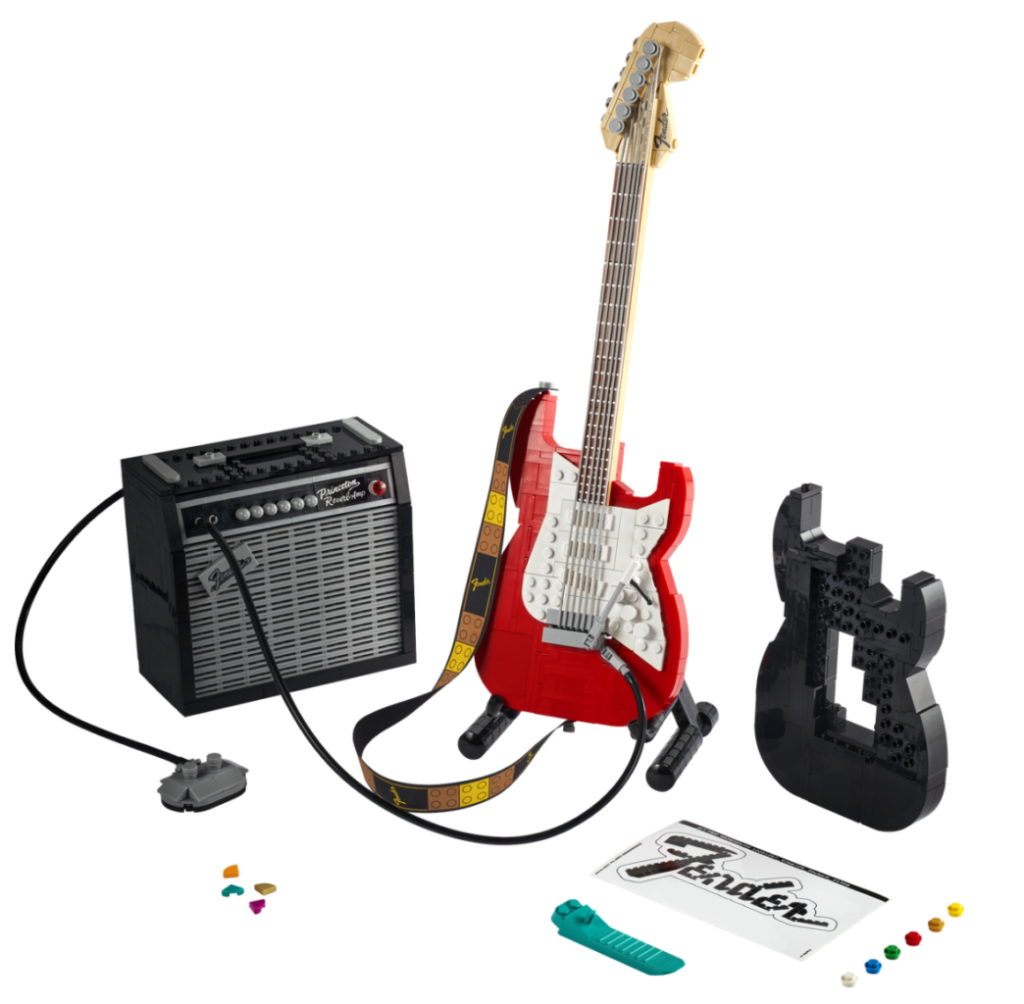
As 2021 continued, we got another musically-inclined LEGO Ideas set. 21329 Fender Stratocaster recreates a famous model of a guitar, and even throws in a brick-built speaker for good measure.
The Fender Stratocaster was first designed in the early 1950s, and since 1954 it has been in continuous manufacture by the Fender Musical Instruments Corporation. At the time of its release the Fender Stratocaster was highly innovative thanks to its unique body shape, three-pickup design and simplified vibrato arm. These features would go on to become industry standards in the years to come.
The modular design of the Fender Stratocaster also makes it an appropriate choice for a LEGO set. Many of its components can be easily swapped out, allowing musicians to make numerous technical and cosmetic alterations to their guitars. A number of famous musicians have gone on to use the Fender Stratocaster including Buddy Holly, Jimi Hendrix and George Harrison.
Once assembled the LEGO Fender Stratocaster measures 36cm long, 11cm wide and 3cm deep. Various components of the guitar (like its fretboard and pickups) feature printed detail, although a sticker is used to add the Fender name to the reverse of it. The strings of the guitar are achieved using actual string elements, adding some welcome authenticity.
Other mechanical details of the Fender Stratocaster (including a cable jack, volume/tone knobs and a whammy bar) are also represented on the LEGO version. A fabric guitar strap can even be attached to the guitar once it’s assembled, and a brick-built display stand allows you to show it off properly.
In a possible nod to its customisable nature, the guitar can be built with a red body or a black body. A complete set of elements for each option is included, although the nature of the build means they can’t be swapped out easily.
In addition to the guitar itself, a brick-built Fender 65 Princeton Reverb amplifier is included. Its boxy design conceals a number of fine mechanical details, reflecting the appearance and functionality of the real thing.
The back of the amplifier is exposed, allowing the speaker cone, cables and sockets to be seen. Sections of the amplifier casing can be removed as well; doing so reveals various resistors and capacitors, along with more archaic components such as thermionic valves. A small brick-built foot pedal is also provided; the guitar, the amplifier and the foot pedal can be connected together using rubber hoses.
If you’d prefer to display your LEGO fandom on an actual guitar, the set even comes with a large sticker featuring the Fender logo recreated with LEGO bricks. This can be attached to your Fender guitar’s casing, although we do wonder how many Fender owners will take this opportunity. While it lacks some of the mechanical function of previous sets (like 21323 Grand Piano) 21329 Fender Stratocaster is still a tasteful tribute to a legendary instrument.
21330 Home Alone
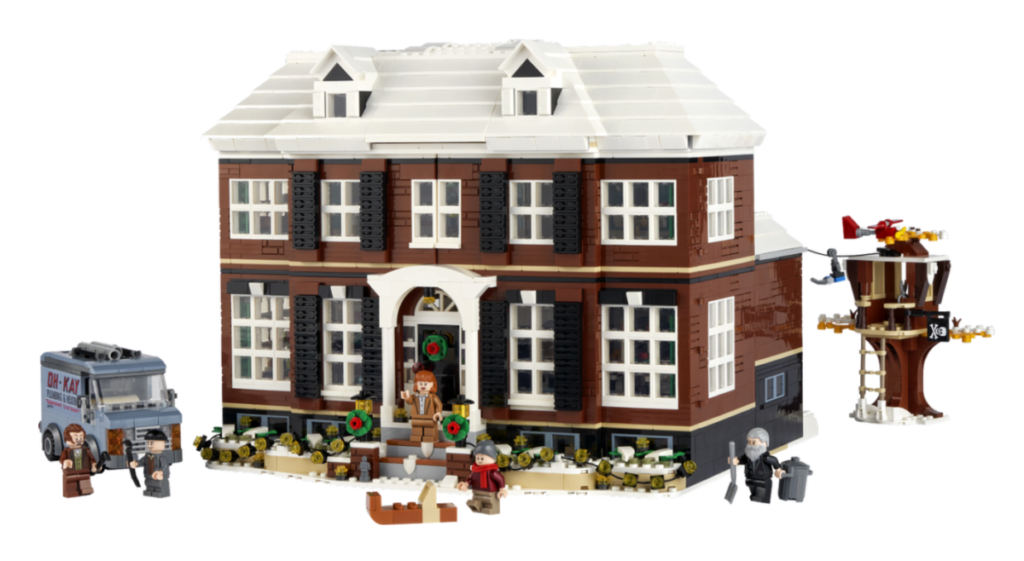
As Christmas 2021 approached, a festive Ideas set graced store shelves. 21330 Home Alone is a delightful recreation of one of the world’s most beloved Christmas films.
Home Alone debuted back in 1990, directed by Chris Columbus and scored by John Williams. It tells the story of precocious youngster Kevin McCallister, who is accidentally left at home when his family goes on vacation. While Kevin enjoys his new-found freedom, he soon learns his house is being targeted by a pair of burglars. In response, Kevin rigs his house with various booby traps to drive the burglars away.
The film turned its young lead (Macaulay Culkin) into a global star, inspiring numerous sequels with a similar premise to the original. It has gone on to become a perennial holiday favourite amongst families during the Christmas period.
With almost 4,000 pieces, 21330 Home Alone reflects the increasing ambition of the LEGO Ideas theme. It recreates the large home of the McCallister family, with a number of scenes from the film referenced within it.
The ground floor of the house includes the living room, the front hall, the dining room and the kitchen. The living room contains some festive finery, including a pair of turtle doves – one of several references to the second Home Alone film. A tiny version of the set’s box can also be found in this room.
A toy train with a cardboard standee of Michael Jordan (or at least, a generic stand-in) is also included. This is one of many contraptions Kevin creates in the film, designed to ward off the Wet Bandits in the film’s mid-point.
The front door of the house also includes another deterrent; the doorknob uses a translucent red jewel, which hints at its superheating by Kevin. Harry Lime (one of the Wet Bandits) famously burns his hand on this at the start of their burglary attempt.
The dining room contains another one of Kevin’s contraptions, as well as an electric fan – another component of his makeshift home defence system. A solitary plate of macaroni cheese is placed on the table while boxes from Little Nero’s Pizza can be seen in the kitchen, reflecting Kevin’s eating habits.
Other notable features of the kitchen include a stickered fridge, a cat flap in the back door (which Marv Murchins pokes his head through) and a small television. This features a scene from fake gangster flick Angels with Filthy Souls, which is one of the film’s most famous elements. A small blowtorch (another one of Kevin’s traps) is positioned by the back door.
The basement of the house is also modelled, containing a washing machine, a tumble dryer and a furnace. The furnace inspires fearful flights of fancy in Kevin during the movie. The grille of the furnace can rear up and a light brick can be triggered, reflecting the furnace’s antics.
The staircase of the house is narrow, but allows Kevin to slide down it in his toboggan; a trigger on the exterior wall lets him be pushed down the stairs by LEGO fans. Reaching the landing reveals a paint can attached to the banister, another one of the film’s famous booby traps. Unfortunately the colour of the walls is a little mismatched here, appearing too blue in comparison to the source material.
Bedrooms for Kevin’s parents and brother Buzz can be found on this floor, as can a small bathroom where Kevin famously tries aftershave. Buzz’s bedroom is the most interesting, thanks to a mix of accessories and a set of collapsible shelves. References to the movies include a picture of Buzz’s girlfriend, a wall-mounted rifle and a flier for Duncan’s Toy Chest, which Kevin visits in Home Alone 2.
That doesn’t mean the bathroom and master bedroom are totally lacking in merit. The bathroom is small but includes both a toilet and a sink, as well as the toothbrush Kevin inadvertently shoplifts. The master bedroom, meanwhile, includes a four poster bed and a digital alarm clock, whose power outage sets the film’s events in motion.
Kevin is consigned to the attic after misbehaving, and some of it is recreated in this set. A sofa bed and a small table with Kevin’s plan of action can be found here, as well as a large hanging cobweb and (interestingly) a gumball machine. The stairs leading up to the attic feature Buzz’s tarantula on one wall, another iconic element of the film.
Kevin can zipline from the attic to his treehouse, which is recreated as a separate build. While small it’s instantly recognisable as its source material, and features a mix of white and yellow foliage to reflect its time of year. A small aeroplane is stuck in its branches and a pair of scissors can be found inside the house, which references Kevin’s severing of the zipline in the film.
The other secondary build in the movie is the van driven by the Wet Bandits. It preserves the film’s blue colour scheme and branding, and can accommodate both Harry and Marv. There’s also plenty of interior space, and a crate with two golden elements references the felonious activities of the Bandits.
Five minifigures can be found in this set; for obvious reasons, most of Kevin’s family is absent. Kevin wears a red jumper and uses half-size minifigure legs, allowing him to interact with the house’s features more effectively. He also comes with a hat and scarf, and two different expressions: one of happiness, one of terror.
Kate McCallister is also included, with similarly happy and distraught expressions. She wears an elegant nougat suit and uses a hair piece from the LEGO Star Wars line. Her connection with Kevin and appearance towards the film’s end makes her inclusion here a welcome one.
The Wet Bandits – Harry and Marv – are other natural inclusions in the set. Like Kevin, Harry uses a shorter pair of legs to reflect his shorter stature in comparison to Marv. His toothy grin includes his gold tooth, and he comes with either a knit cap or the hat of a police officer. This reflects his masquerade as a policeman in the film’s opening.
Marv comes with two expressions thanks to his larger hair element: one of dim-witted joy, and one of anger. The latter expression features a large red welt, which is caused by an iron being dropped on him. Both Wet Bandits come with black crowbars, which they use to break into various homes during the movie.
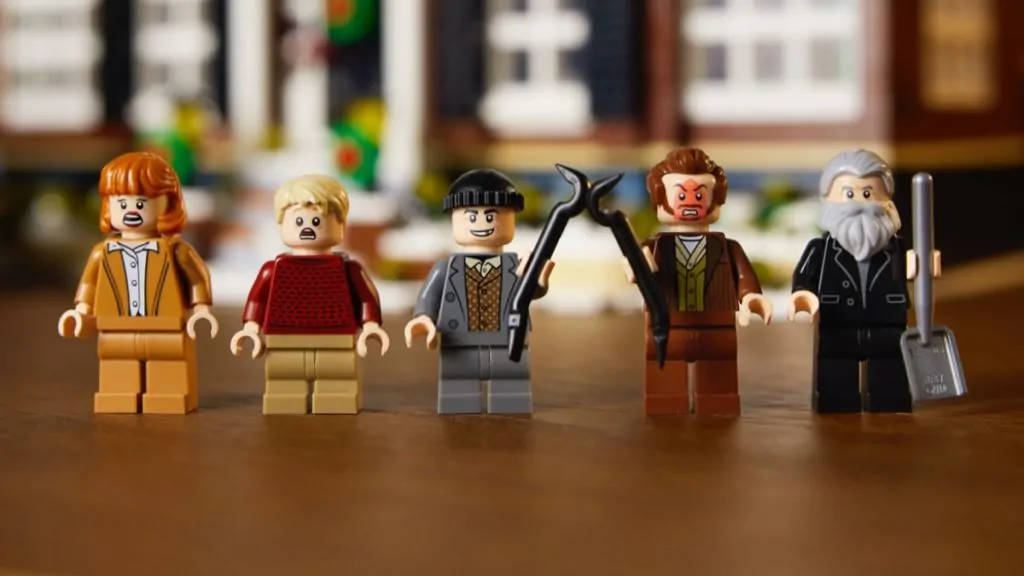
The last minifigure is Old Man Marley, a misunderstood neighbour who Kevin befriends. He features a large, bushy beard and a dark suit, as well as a shovel and a trash can. He uses these to salt the neighbourhood’s icy pavements, although he also uses the former to aid Kevin in the film’s climax.
With its massive footprint and close attention to detail, 21330 Home Alone is a fitting tribute to the ‘90s classic. However, this large set also comes with a hefty price tag, which may restrict its purchase to the film’s biggest fans.
21331 Sonic the Hedgehog – Green Hill Zone
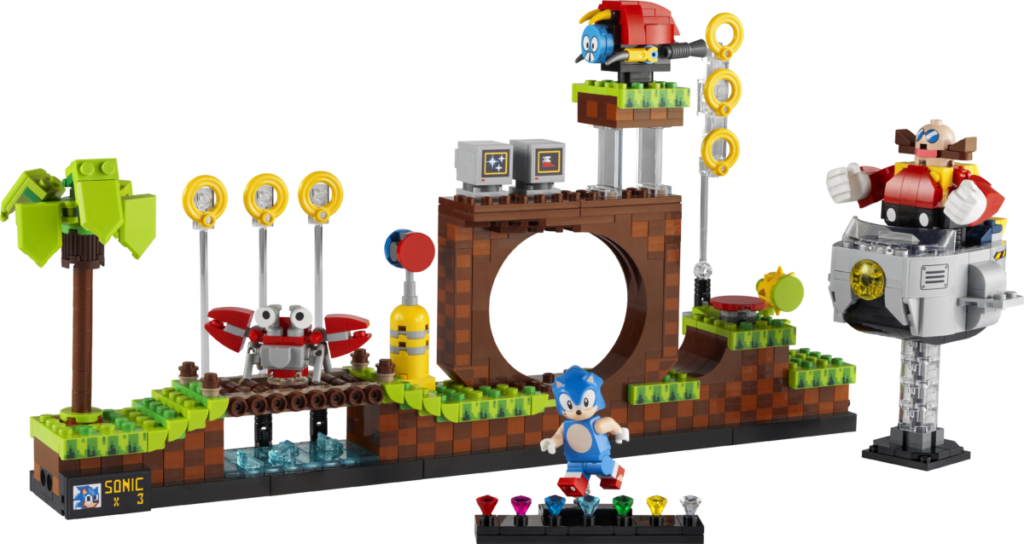
2022’s inaugural Ideas set retreads some familiar territory, although it’s still a welcome addition to the Ideas line. 21331 Sonic the Hedgehog – Green Hill Zone gives a legendary video game character a new moment in the LEGO spotlight.
Sonic the Hedgehog is one of the most famous characters in the medium of video games: a free-spirited blue hedgehog, famed for his running speed and easygoing personality. In most of his games he’s pitted against mad scientist Doctor Eggman, who attempts to conquer the world with an army of robotic minions.
Sonic first appeared in the 1991 video game Sonic the Hedgehog, produced for the Sega Mega Drive games console. Since then, Sonic has gone on to become a beloved cultural icon (even if the quality of his media tends to fluctuate wildly). He’s had a prolific presence in video games, TV shows, comic books and – more recently – movies. His most recent film outing, Sonic the Hedgehog 2, has gone on to become the highest grossing video game adaptation in the United States.
Sonic the Hedgehog has appeared in LEGO form before now (in 71244 Sonic the Hedgehog Level Pack). However, 21331 Sonic the Hedgehog – Green Hill Zone offers a more substantial look at Sonic’s world. As reflected in the title, it recreates a chunk of Green Hill Zone – the inaugural level of the first Sonic video game.
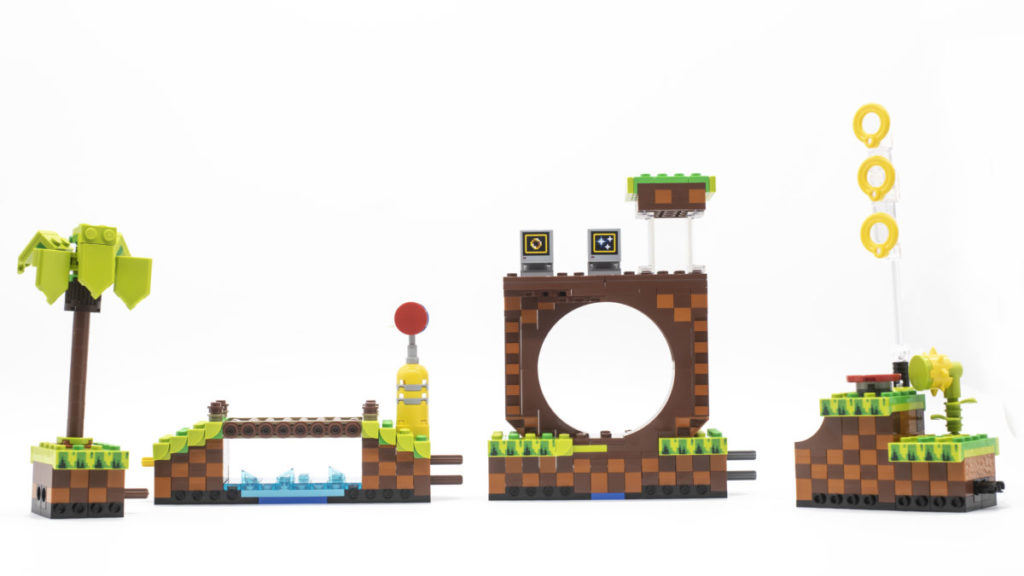
Green Hill Zone is almost as iconic as Sonic himself, earning references in several other games. The LEGO version closely mimics several features of the game world including its green grass, checkerboard terrain and a large loop. Other natural features include a yellow flower, an angular palm tree and a floating platform.
Several other elements of the set reflect its nature as a video game. A number of golden rings (which Sonic must collect to shield himself from harm) appear in the set; these are attached to transparent elements, reflecting their tendency to float in mid-air. A checkpoint post also appears in the set; its top section can be switched from blue to red, reflecting its activation as Sonic passes it.
A red, spring-loaded platform can be found in this level; Sonic bounces on these to move around the game world more easily. A simple mechanism concealed in the set allows fans to launch Sonic into the air via this platform.
Another nice reference is a pair of grey item boxes. These resemble computer monitors and give Sonic an additional advantage when struck, such as temporary invincibility or extra lives. Five stickered tiles are included, representing the different power-ups Sonic can acquire in this game.
Finally, a small tile can be seen on the set’s bottom left-hand corner. This displays the number of lives Sonic currently holds, and appears in a similar position during Sonic video games. If you’re tempted to expand Sonic’s game world, multiple copies of the set can be attached to one another.
Echoing previous LEGO Ideas sets, a small display stand is provided for Sonic. A transparent element allows him to be displayed in mid-air, reflecting his exuberant personality.
Seven jewels representing the Chaos Emeralds are attached to this display stand. These magical items appear in multiple Sonic games, although only six could be found in the first one. Still, their inclusion here is welcome. Each one is unearthed at a different step of the set’s construction, referencing their gradual acquisition during gameplay.
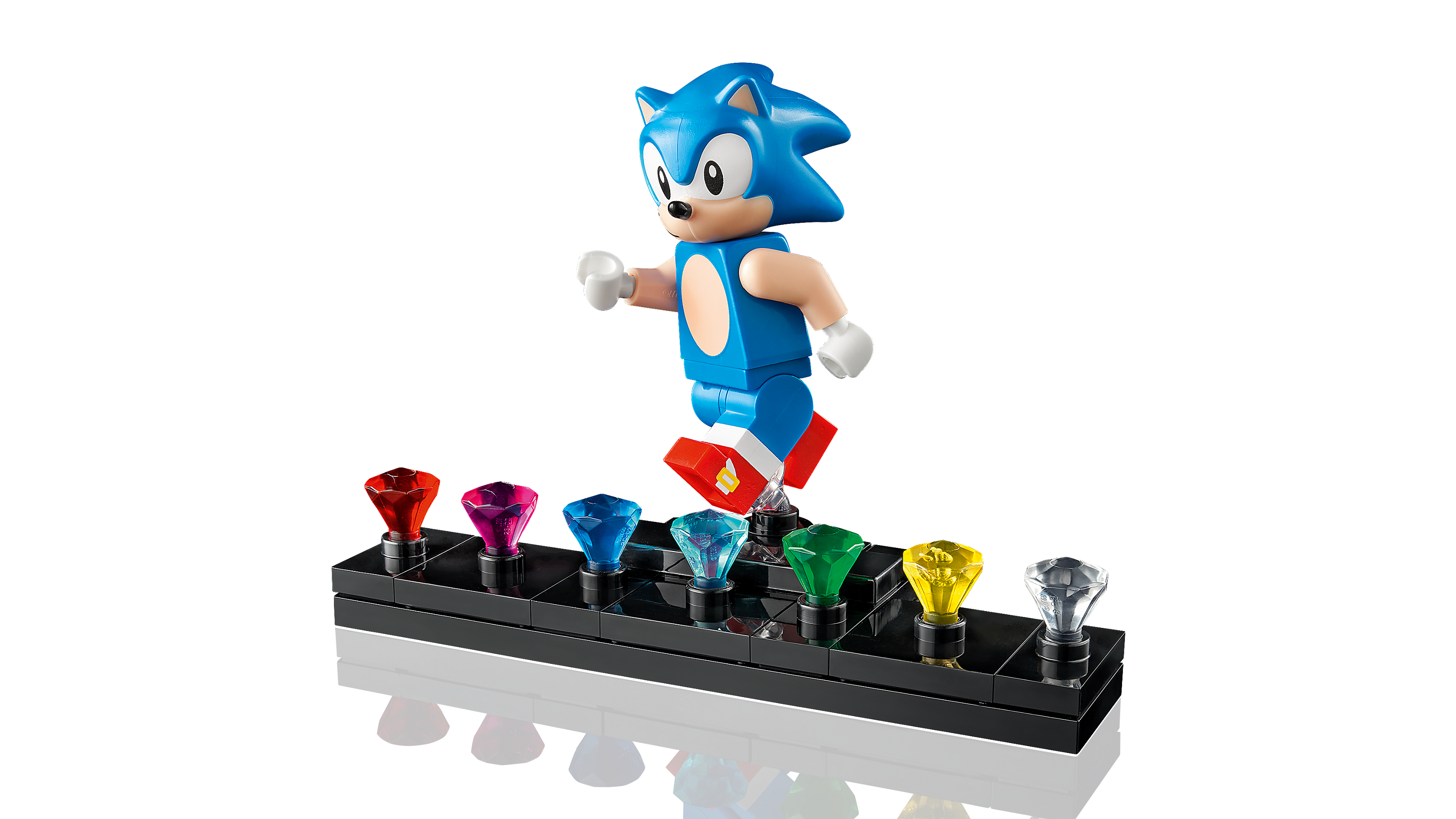
Sonic is the only true minifigure in this set. His physical shape is identical to his previous minifigure, although his printing and colour scheme is more refined this time around. While his original minifigure drew inspiration from his modern appearance, this one draws inspiration from his classic appearance instead. This can mainly be seen in his eyes, which lack the green irises of his modern version.
Other changes can be seen on his muzzle and arms, which now feature a more accurate light nougat colouring. The white stripes and gold buckles of his running shoes are also printed on the sides of his feet for the first time.
Sonic frequently fights Badniks – Eggman’s robotic minions – in the course of his adventures, and two brick-built versions can be found here. A Crabmeat and a Moto Bug can be positioned around the set; the latter includes both neutral and angry expressions, represented using stickered tiles. Unfortunately small animals don’t pop out of them when they’re dismantled, as they do in the game itself.
Doctor Eggman (also known as Dr Robotnik) is Sonic’s arch-nemesis; his original appearance can be found here, with black trousers, a red shirt and a yellow collar. His large frame requires a bespoke LEGO design, which captures his outfit’s appearance nicely. However, his face suffers a bit; its use of an offset dome piece leaves an unsightly gap above his nose.
Eggman can sit inside the Eggmobile, a small flying vehicle that pops out of his various contraptions. Its rounded shape and grey colour scheme are captured effectively here, as is the yellow light on the front of it. A display stand (which uses several transparent elements to make it ‘float’) also allows it to be displayed alongside the main set.
While it might not be the set we expected (the original fan submission drew inspiration from Sonic Mania, a later release) 21331 Sonic the Hedgehog – Green Hill Zone is still a nice tribute to a beloved video game. With luck it will inspire more Sonic the Hedgehog LEGO sets in the future.
21332 The Globe
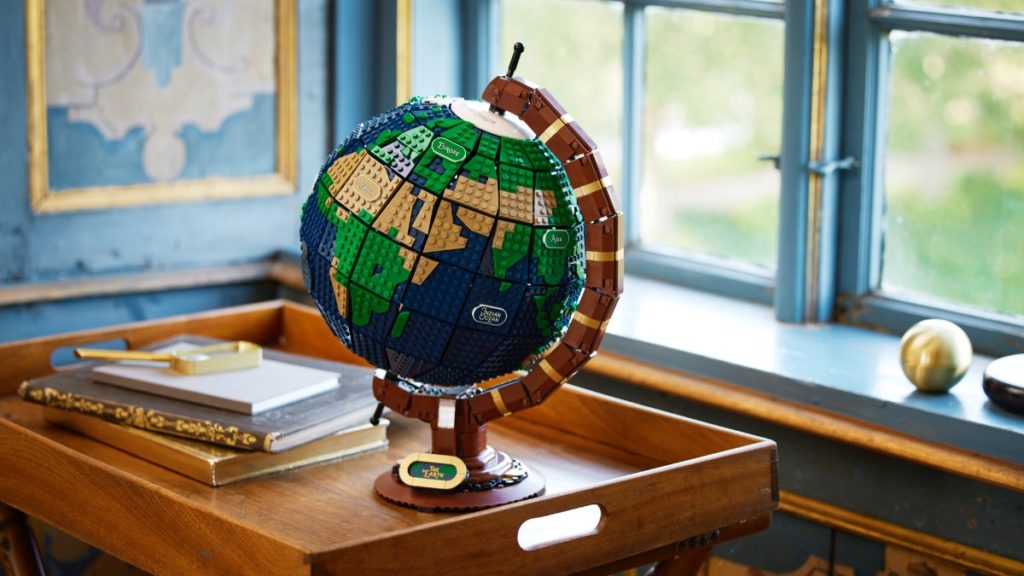
2022 continued with a more familiar bit of subject matter to the average LEGO fan: 21332 The Globe. Its tasteful design and careful recreation of our planet makes it another great display piece.
As you might expect, scale models of the Earth have been around for some time. Greek astronomers established the round nature of the Earth in the 3rd century BCE, with scale models following shortly after. The first known example dates back to the 2nd century BCE, and was produced by the Greek philosopher Crates of Mallus.
Sadly, none of these early models have survived to the present day. The earliest one still in existence was produced in 1492 by Martin Behaim, a German mapmaker and merchant. Modern terrestrial globes (i.e. models of Earth) come in a variety of different versions and sizes. The world’s largest can currently be found at New York’s Flushing Meadows park, measuring 37m in diameter.
The LEGO globe is of a slightly more manageable size. Once assembled, 21332 The Globe measures 40cm high and 30cm deep. Naturally it isn’t a perfect sphere; the shape is achieved here using 112 four-sided panels. These use shades of blue, green, brown and white to denote the oceans and continents; a particularly realistic choice, especially when compared to similar efforts like 31203 World Map.
These panels are mounted to a complex frame, which uses several Technic elements to achieve a sturdy, accurate surface. A set of wheels is built into this interior space; these act as weights, and allow the globe to maintain its momentum when you spin it.
All of the world’s major landmasses are represented in the LEGO version, although some smaller countries suffer from the limitations at this scale. There are also notable gaps between the panels in some cases. Oceans and continents are typically labelled with glow-in-the-dark name plates, letting you locate them even in low light conditions.
Most terrestrial globes are mounted at a slight angle, referencing the real thing’s angle as it orbits the Sun. 21332 The Globe preserves this idea in its display base, which uses brown elements to mimic wood. Gold highlights and a tasteful plaque lend a touch of class to this base, which features rubber tyres on its underside to increase its stability.
With its familiar design and subtle interactivity, 21332 The Globe is a LEGO set with impressively broad appeal. While it’s one of the pricier Ideas sets, it’s also far more versatile than many of its fellow Ideas sets.
21333 Vincent Van Gogh – The Starry Night
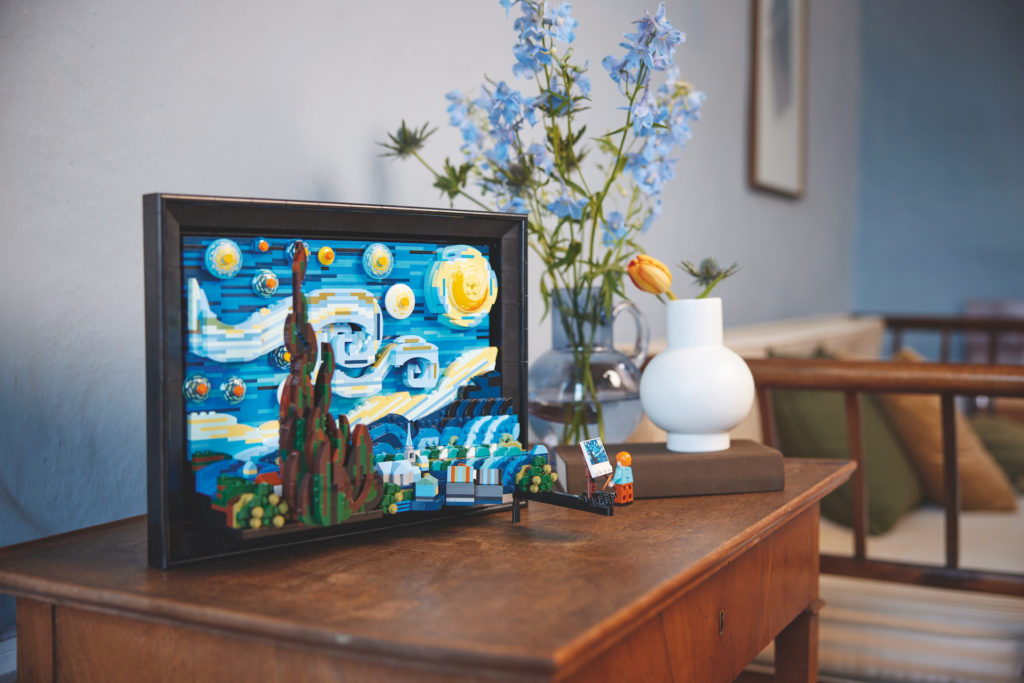
2022 has seen another tasteful LEGO set grace store shelves. 21333 Vincent Van Gogh – The Starry Night is an impressive tribute to one of the most famous paintings (and artists) in the world.
Vincent van Gogh was a Dutch painter who was born in the mid-19th century. He died tragically young aged 37, from a self-inflicted gunshot wound. However, in his relatively short life he managed to produce more than 2,000 pieces of art – including more than 800 oil paintings.
While van Gogh was considered a failure in his own lifetime, his reputation grew in the years after his death. Today he is known as one of the world’s greatest artists; his paintings have sold for millions of dollars, and a museum dedicated to his work has been established in Amsterdam.
The LEGO Group’s tribute to his work draws inspiration from The Starry Night, which was created in 1889. Van Gogh produced it during a stay at the Saint-Paul-de-Mausole lunatic asylum, following the famous mutilation of his own ear. The painting depicts the view from one of his room’s windows, which van Gogh reportedly painted on several occasions.
The Starry Night is often considered van Gogh’s greatest accomplishment, and is one of the most recognised paintings in the Western art world. It now resides in New York’s Museum of Modern Art, where it has been since 1941.
Unlike other artistic LEGO sets, 21333 Vincent Van Gogh – The Starry Night has a more three-dimensional look to it. This allows its iconic features to be recreated with a greater sense of accuracy.
The sky itself is a flat surface, but the clouds and celestial bodies behind it protrude from it. Printed dish elements (including one for the moon) allow for the fine detail that LEGO bricks alone could not capture.
The various hills and buildings at the base of the building are also three-dimensional in this context. Much of the original painting’s contents are preserved, including the church towards the centre. This marks a rare appearance of explicitly religious material in an official LEGO set.
Another point of interest in the set is the large cypress tree in the foreground. This uses a mix of curved elements to recreate its branches, with brown, green, black and orange pieces. However, since the colours don’t blend together all that well it may be one of the set’s weakest elements.
A minifigure of Vincent Van Gogh is included, as well as a small easel with The Starry Night printed on it. His LEGO rendition is inspired by his 1889 self-portrait and looks suitably serious. Subtle lines on his torso and legs mimic brushstrokes, setting him apart from other minifigures of this ilk.
Naturally Vincent comes with a paintbrush and palette, allowing you to mimic his creation of The Starry Night more easily. Although these elements have appeared in LEGO form on several occasions, the ones in this set use unique shades of blue and yellow. These ensure they are far more accurate to the situation, and are a welcome addition.
Vincent and his easel can even be attached to the main build using a bespoke stand. However, this can be removed altogether if you prefer a ‘purer’ display piece. A specialised element on the rear of the set allows it to be hung on a wall if you prefer.
21333 Vincent Van Gogh – The Starry Night is an impressive tribute to a giant of the art world. Interestingly, it will be available at both LEGO.com and the Museum of Modern Art – perhaps to be expected, given the museum was a partner in the development process.
21334 Jazz Quartet
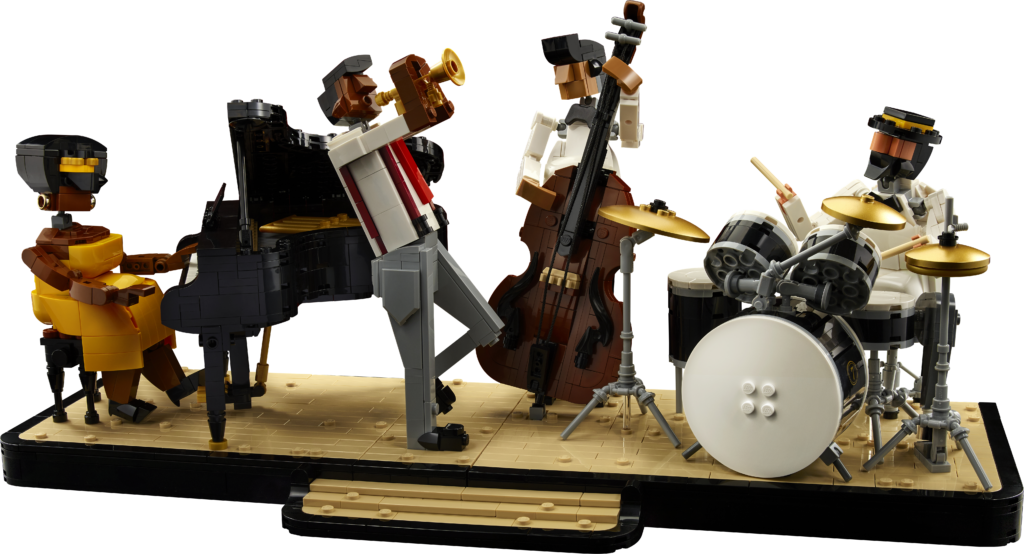
2022 saw the LEGO Ideas theme grow more and more culturally refined. Hot on the heels of The Starry Night, 21334 Jazz Quartet adds a touch of taste to any home.
The set depicts four musicians performing a piece of jazz music, which dates back to the late 19th century. The genre of jazz has its roots in older forms of music like blues and ragtime, with African-American communities in New Orleans bringing it to life. Several different varieties of jazz have arisen in the following decades, and it has gone on to become a major genre of music worldwide.
Unlike most LEGO sets, 21334 Jazz Quartet depicts its people on a much larger scale than normal. This allows for a much greater variety of of poses and body types. However, it does tend to limit each character’s articulation as a trade-off.
Each musician in the set plays a different musical instrument, with a trumpet, a double bass, a drum kit and a piano all modelled here. These instruments all features intricate construction and some thoughtful parts usage. The bass uses a pair of string elements (echoing 21329 Fender Stratocaster) while the piano uses a golden gate element to represent its internal mechanical detail. Other smart design choices include a kick pedal for the drum set.
As befitting a performance, the musicians are all formally dressed – with the passion of characters like the trumpet player coming across in their stance. Fine details like suspenders, a bow tie and gold hoop earrings can be seen on each of the performers.
The performers can be displayed individually or as a group, with their sections of the stage fitting together like a jigsaw puzzle. The connections between each section are relatively weak, so it may be worth separating them for transport.
In any case, 21334 Jazz Quarter joins a growing list of tasteful LEGO display models. Its emphasis on more realistic character design ensures the set has an extremely broad appeal compared to other LEGO models.
21336 The Office
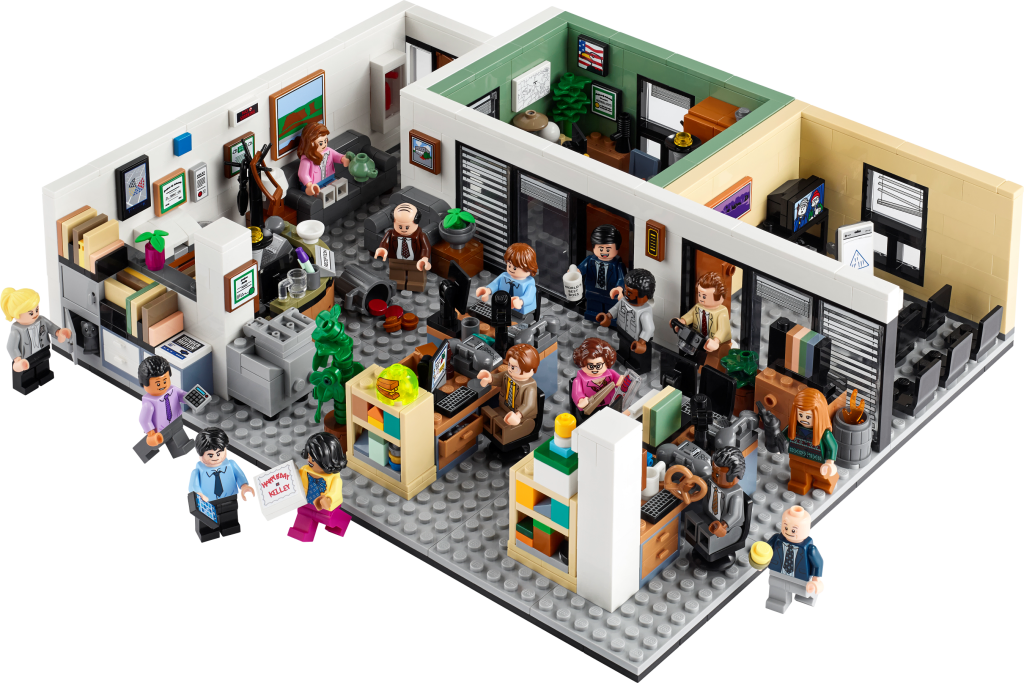
2022 has seen another sitcom reimagined in LEGO form. 21336 The Office is the result of a long campaign to recreate the beloved TV show with LEGO bricks, with (mostly) successful results.
Like its British inspiration, The Office is an American mockumentary series set in a branch of a paper company. Debuting in 2005 and running over 201 episodes, the show follows the working lives of the branch’s employees and their interpersonal relationships. For much of the show’s runtime, the protagonist is regional manager Michael Scott – a dim-witted man with a desperate need for respect.
The show gained an increasingly positive critical reception as it progressed, although the departure of Michael Scott (played by Steve Carell) in the seventh season was widely seen as a backwards step. In any case The Office remains a popular comedy , and has become one of the most beloved TV shows of the last few decades.
As you may have gathered, the LEGO set it inspired recreates the office itself. Several desks, the reception area, Michael Scott’s office and the meeting room are all modelled in it. Familiar office paraphernalia like bookshelves, computers and even a photocopier are distributed throughout the model.
Like the LEGO sitcom sets preceding it, 21336 The Office is filled with references to the TV show. Dwight’s stapler is imprisoned in jello, Pam’s painting of the Dunder Mifflin building hangs by the entrance and a trash can is on fire, referencing Dwight’s ill-conceived fire drill. There’s even a cooking pot filled with chili – a nod to the legendary ‘Kevin’s chili’ cold open.
A whopping fifteen minifigures are included with this model, allowing you to easily recreate scenes from the show’s early seasons. Michael, Jim, Pam and Dwight are natural choices, as are staff like Angela, Phyllis, Kevin and Stanley. Other characters present include Ryan, Kelly, Meredith, Creed, Oscar, Toby and Darryl; several minifigures in the set come with alternate expressions for additional play opportunities.
Sadly, two other characters – Andy and Erin – are missing from the set. These characters were introduced later in the show, but their absence from the set is still regrettable.

As one of the key locales in the show, Michael’s office can be easily detached from the larger build. This is ideal if you want to display it by itself – or just admire all the different items within it.
With several different LEGO sitcom sets, 21336 The Office may struggle to stand out from the crowd. However, its extensive minifigure selection and reasonable price make it hard to resist for fans of the show – of which there are clearly a lot.
21335 Motorised Lighthouse
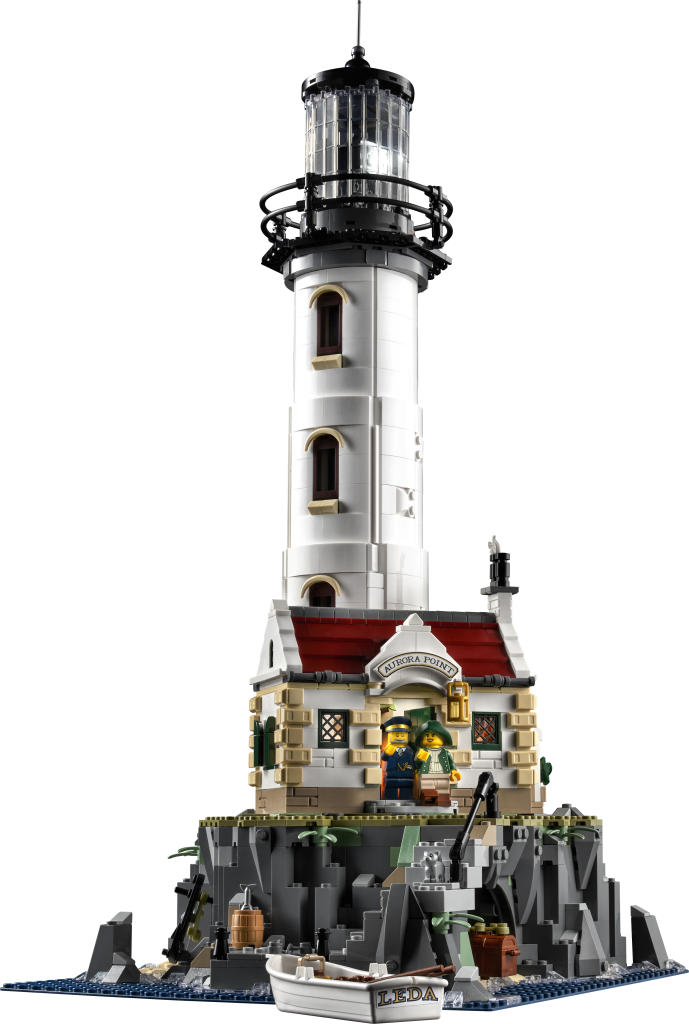
This 2022 LEGO Ideas set touches upon familiar territory for LEGO sets, although the execution helps to set it apart. The concept of a lighthouse dates back to antiquity, with elevated fires marking the entrance to ports for ships to navigate by.
Eventually, lighthouses evolved into a warning system for dangerous coastlines, becoming more sophisticated in their overall design. Maintenance costs and other technical advances have led to lighthouse use declining worldwide, although some countries (such as Canada) maintain a significant lighthouse presence in the modern era.
From that perspective, 21335 Motorised Lighthouse is a model steeped in retro charm – at least in terms of aesthetics. Mechanically it’s quite sophisticated, offering a light that can automatically spin a full 360 degrees. Since Powered Up light elements always come in pairs, a second light is used to light up the stove in the living quarters.
The set also introduces a brand new element that mimics a Fresnel lens. These are used in real-life lighthouses, and allow the lights they shine to be focussed more efficiently. The lens works in a similar capacity here, helping the light to shine a little brighter than normal.
Other mechanical functions are less ostentatious, but no less useful. The motor is attached to the model with four rubber elements, which helps to reduce vibration and the noise of the motor itself.
The lighthouse itself is relatively unadorned, although its exterior does come with features like carved brickwork and green shutters. It sits on a rocky island with a small jetty to receive boats, and a treasure chest can be found in a cave beneath it. The inside features amenities like a bed, various utensils and a clock, while the lighthouse tower features removable sections to peek at its innards.
A lighthouse keeper and a woman in green waterproof gear are included to populate the set, as are a cat and a seagull. If you’re a fan of oceanic LEGO sets this is a respectable choice, although – like many modern Ideas sets – it comes with a steep price, presumably in part thanks to its mechanical components.
21337 Table Football
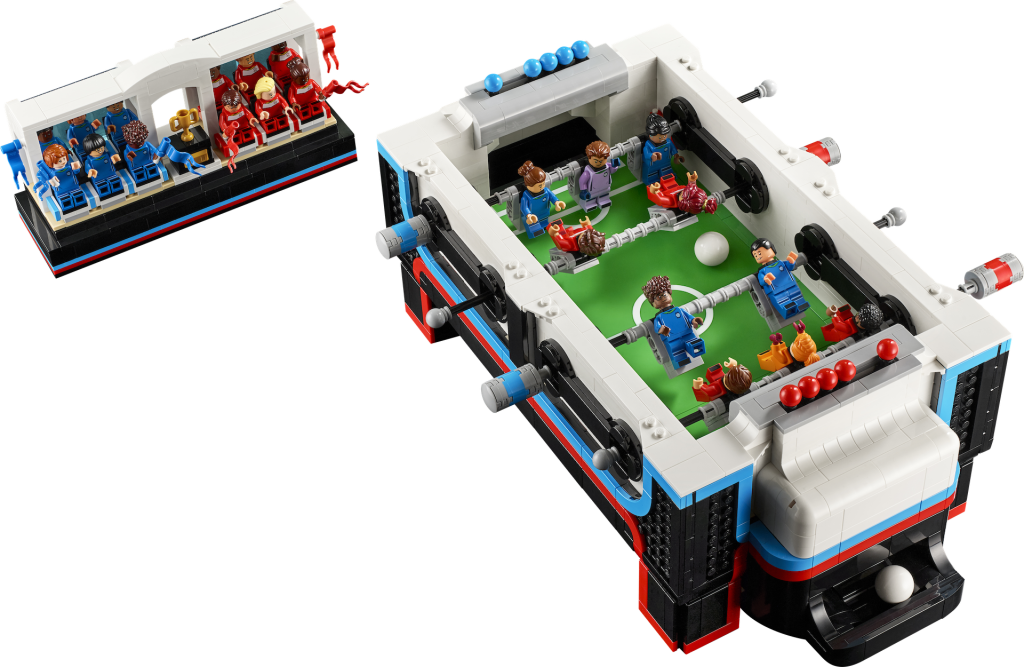
The most recent major Ideas project is 21337 Table Football, submitted as part of the LEGO Group’s We Love Sports building competition. The set recreates a foosball table in LEGO form, offering two generic football teams to play with. All of the typical functionality of a foosball table is preserved, with two human operators able to twist handles on the side to manoeuvre its football players. The set also features integrated score keepers, which use round elements that can be slid back and forth along a rail.

The set has differentiated itself by its use of varied, realistic skin tones for its football players. These allow LEGO fans to create a suitably diverse football team, with a minifigure with vitiligo even included in the lineup. 44 minifigure heads – 22 male, 22 female – are included, along with a variety of hair elements and 22 minifigure bodies to pair them with.
Only ten minifigures – five on each team – can be placed in the table at once. The others can be placed in a small spectator stand, which also serves as a storage compartment for spare minifigure elements.
Despite its innovations, 21337 Table Football has been plagued with criticisms. The high RRP of the set is a major one, particularly since the finished set is relatively small – especially when compared to both non-LEGO table football sets and the original LEGO Ideas submission. The set’s size is a consequence of LEGO’s design limitations; larger versions of the set put too much strain on the individual LEGO components, which made a small version the only practical option.
As such, you may want to get this set at a discount – or pick up a non-LEGO version for a more consistent play experience.
LEGO Ideas Promotional Items
In addition to the main releases, several promotional sets have appeared in the LEGO Ideas theme. These are usually added to orders over a specific price threshold, reflecting the popularity of Ideas sets more generally. Each one began life as a fan design before refinement by the LEGO Group.
40335 Space Rocket Ride
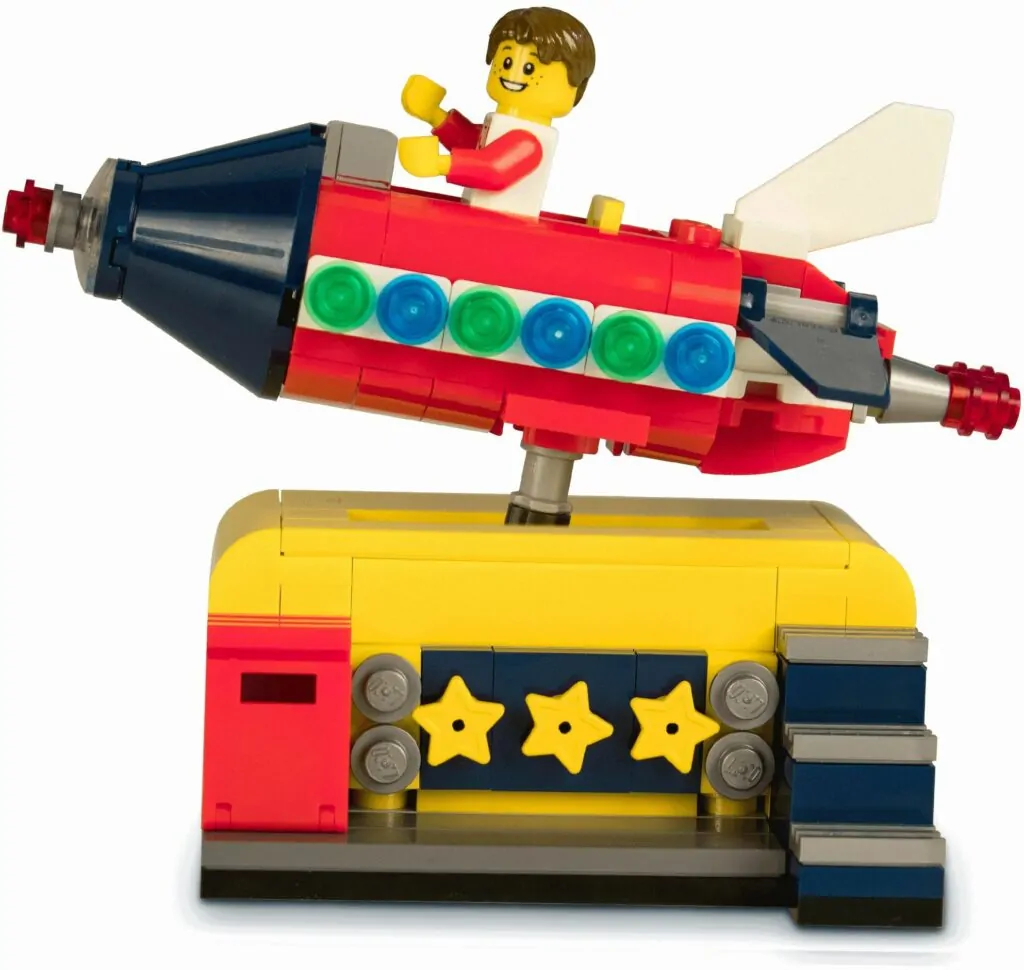
The first promotional Ideas set was 40335 Space Rocket Ride, released in 2019. This was the winning entry of the Moments in Space competition, and recreates a coin-operated amusement for a child to ride. The rocking movement of the ride is recreated using an internal mechanism, which owners of the set can activate by twisting a dial on the back.
The set is suitably colourful, using a mix of reds, yellows and blues in its overall design. A red mailbox element is also built into one corner, allowing people to insert coins into the set. Three are included, ensuring a very happy time for the included minifigure.
The boy in the LEGO set features a red and white torso that pays tribute to the Classic Space era of LEGO. He also has a joyous expression, suggesting he’s enjoying the ride.
40448 Vintage Car
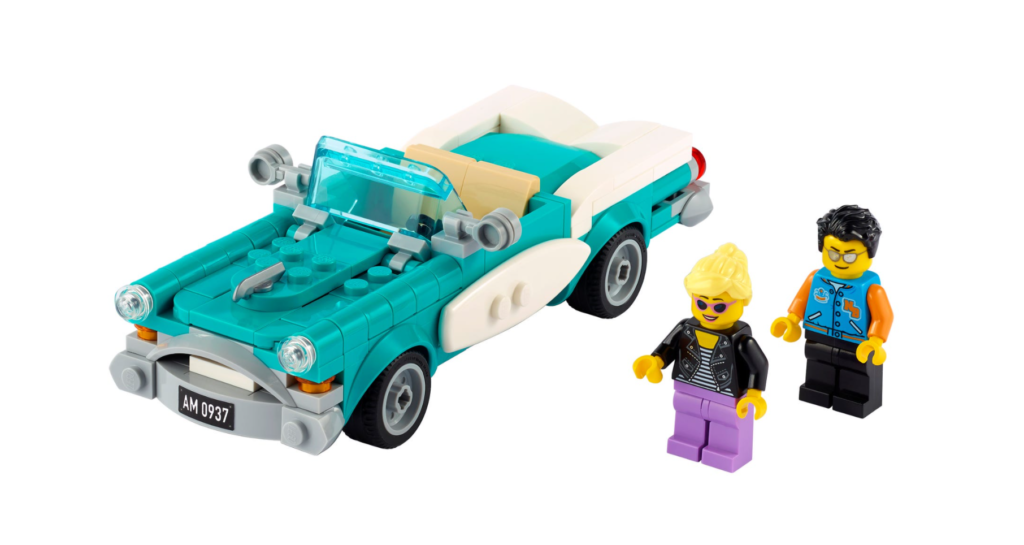
The next two promotional items could be found in 2021. The first one was 40448 Vintage Car, and was produced via the Build a Vintage Car competition. Drawing inspiration from the 1950s, this vehicle features an attractive teal colour scheme with white highlights.
A pair of white surfboards are used to better capture the body shaping of this era. However, they aren’t held very securely to each side and tend to stick out a bit. Some extra pieces might be needed to smooth out the bodywork after their removal.
The car can hold two minifigures at once, and fortunately two are included: one male, one female. The male minifigure wears a blue and orange varsity jacket (which originates in the Hidden Side theme) while the female minifigure sports a black jacket with a striped undershirt. Both wear sunglasses, underscoring how cool they are.
40487 Sailboat Adventure
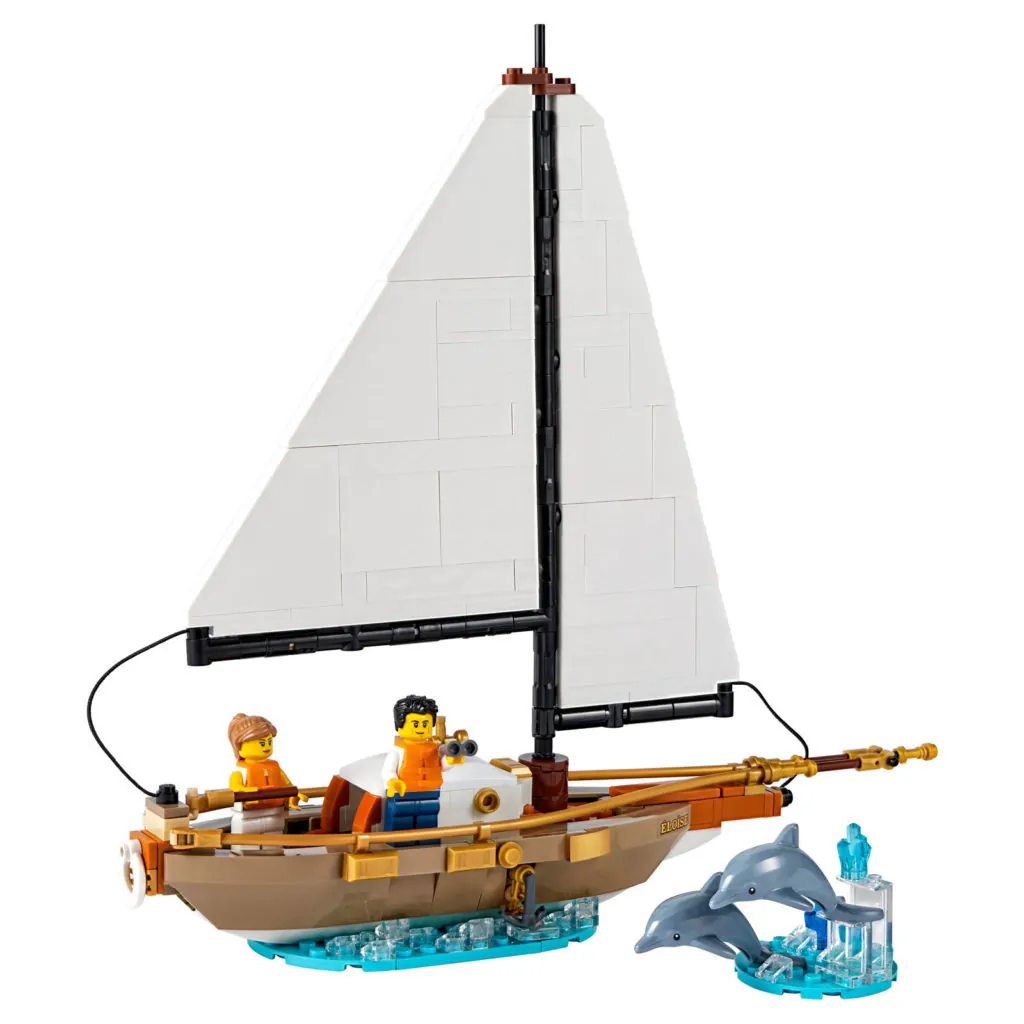
The other 2021 promotional Ideas set was 40487 Sailboat Adventure, produced via the Build That Holiday competition. This set depicts a small sailboat – a surprisingly rare choice of subject matter in LEGO sets.
The set uses a tasteful arrangement of colour to depict its main model, with pearl gold highlights mimicking brasswork. Its sails are brick-built, using several white elements to construct them. While a cabin is built into the sailboat, it’s too small for minifigures to enter.
Unlike other LEGO boats, this set uses several blue and transparent elements to depict stretches of water. One of these assemblies is attached to the sailboat’s underside, while the other includes a pair of leaping dolphins atop it.
Two minifigures in sailing gear are included, with orange life jackets to ensure a safe voyage. A pair of binoculars is also included, allowing the sailors to observe the leaping dolphins more easily.
40533 Cosmic Cardboard Adventures
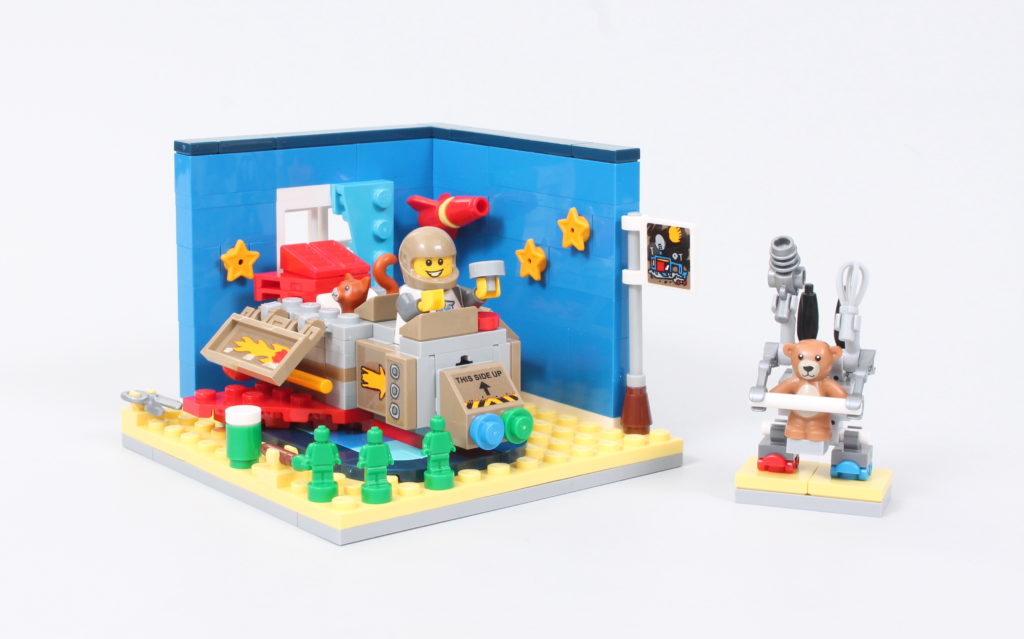
The latest Ideas promotional item (released in 2022) is 40533 Cosmic Cardboard Adventures, spawned from the Out of the World competition. Like 40335 Space Rocket Ride, it has an outer-space flavour to it. However, this set approaches the concept from a very different direction.
The set depicts a small spaceship assembled from cardboard and other household items. Brown stickered elements reinforce its cardboard nature, while a quartet of soft drink cans at the rear provide thrust. Red wings and other pieces provide a welcome dash of colour.
The spaceship sits in a slice of a child’s bedroom, although it can be easily detached if you want to swoosh it about. The walls are dedicated with stars and a small rocket, suggesting an enduring love of space exploration. A small flag in the bedroom references 493 Space Command Center, one of the earliest LEGO Space sets ever produced.
Other accessories in the set include a pair of scissors (presumably used in the ship’s construction) and a trio of microfigures, recently painted green. It’s unclear if these are meant to be toy soldiers, or a reference to 21109 Exo Suit.
A particularly interesting part of the set is a small mech. This accommodates a teddy bear, and incorporates various household items into its design. An egg whisk, a hairdryer, a pair of umbrellas and two mismatched roller skates are all put to good use.
The spaceship itself is piloted by a child and an unusually accommodating cat. The child is suitably cheerful, re-using a torso from the Collectible Minifigures collection. He also uses a brown helmet; this is presumably assembled from cardboard, and is a welcome addition to the set.
Over its long lifespan, LEGO Ideas is clearly a theme that’s gone from strength to strength. With an enticing mix of subject matter (across both licensed and non-licensed models) this is definitely a theme to watch in the years ahead.
LEGO Ideas Black Friday
Track down discounts on LEGO Ideas sets with our LEGO Ideas Black Friday deals page.


